Author: Mrs A
Friday – location: Newcastle
We continued our journey south, watching the temperature drop a few degrees and the skies turn grey and heavy with rain. We were to have a somewhat gentle introduction to city life, with an overnight with our friends Karen and Chris in Merewether, Newcastle.
Tassie’s been here before, and was soon running from room to room, exploring every nook and cranny before crashing out on our bed exhausted from all the excitement. We meanwhile relished in fast internet speeds, and relaxed with a cup of herbal tea to catch up on news.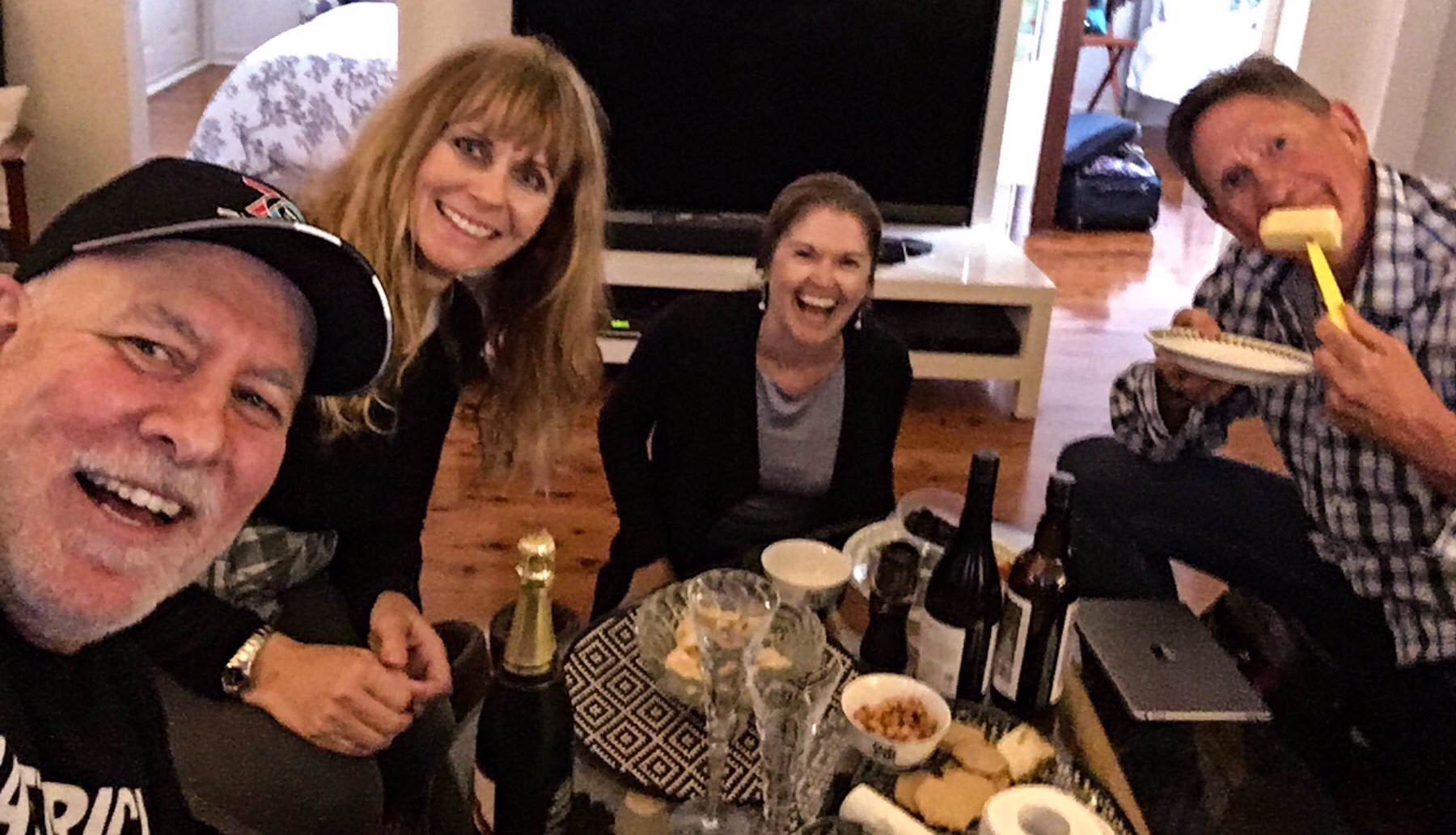 Tea progressed into champagne, and the four of us then went out for a delicious local curry – Mark and Chris careful not to overdo the cheese and nibbles before we went!
Tea progressed into champagne, and the four of us then went out for a delicious local curry – Mark and Chris careful not to overdo the cheese and nibbles before we went!
Saturday-Wednesday – location: Sydney
After a delicious breakfast in Newcastle, we moved on for the last leg back into Sydney. We’d booked caravan storage in Marrickville, quite a central location, but this meant driving through Saturday afternoon traffic on one of Sydney’s busiest arteries, Parramatta Road…not really designed for towing.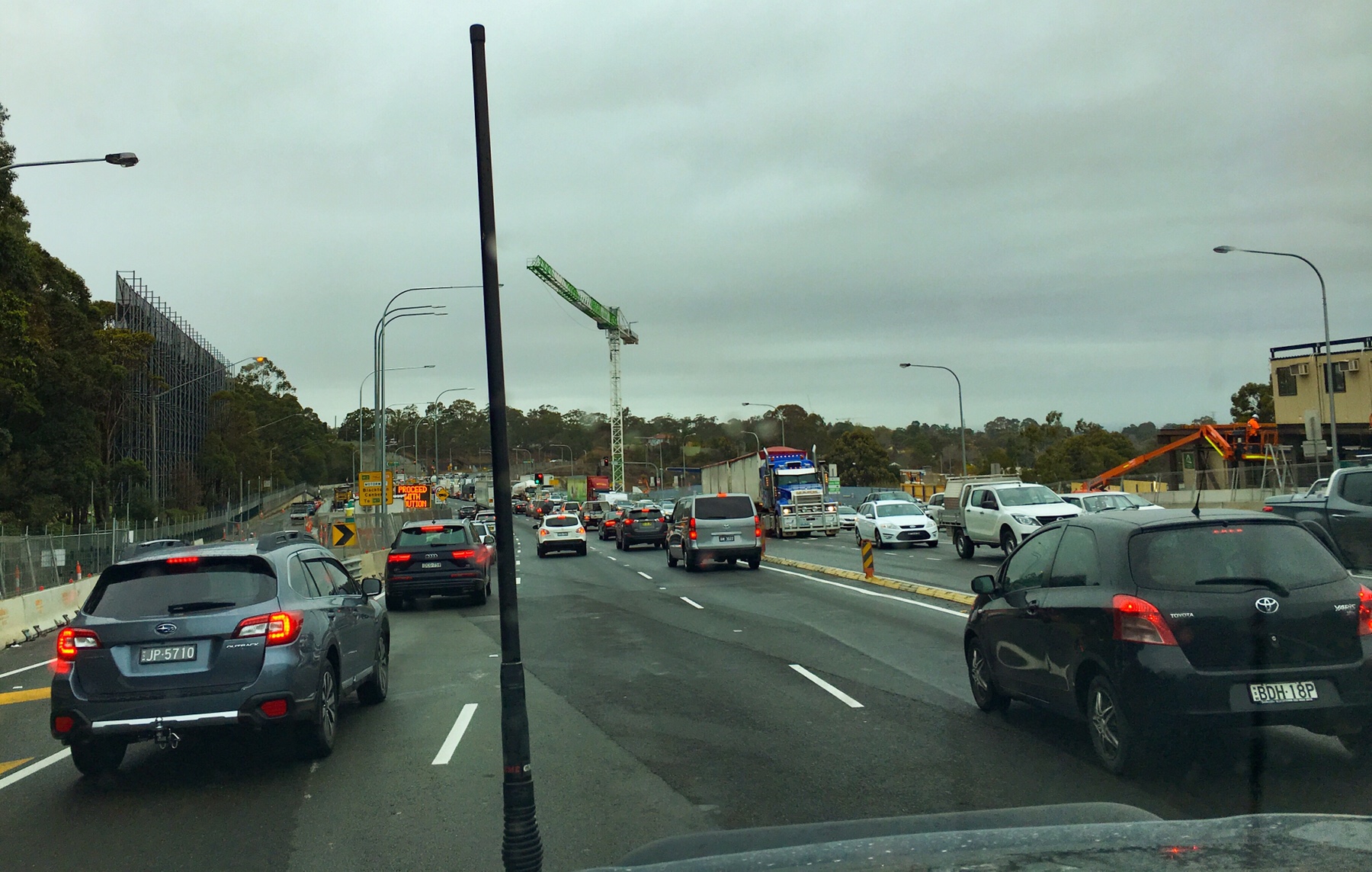
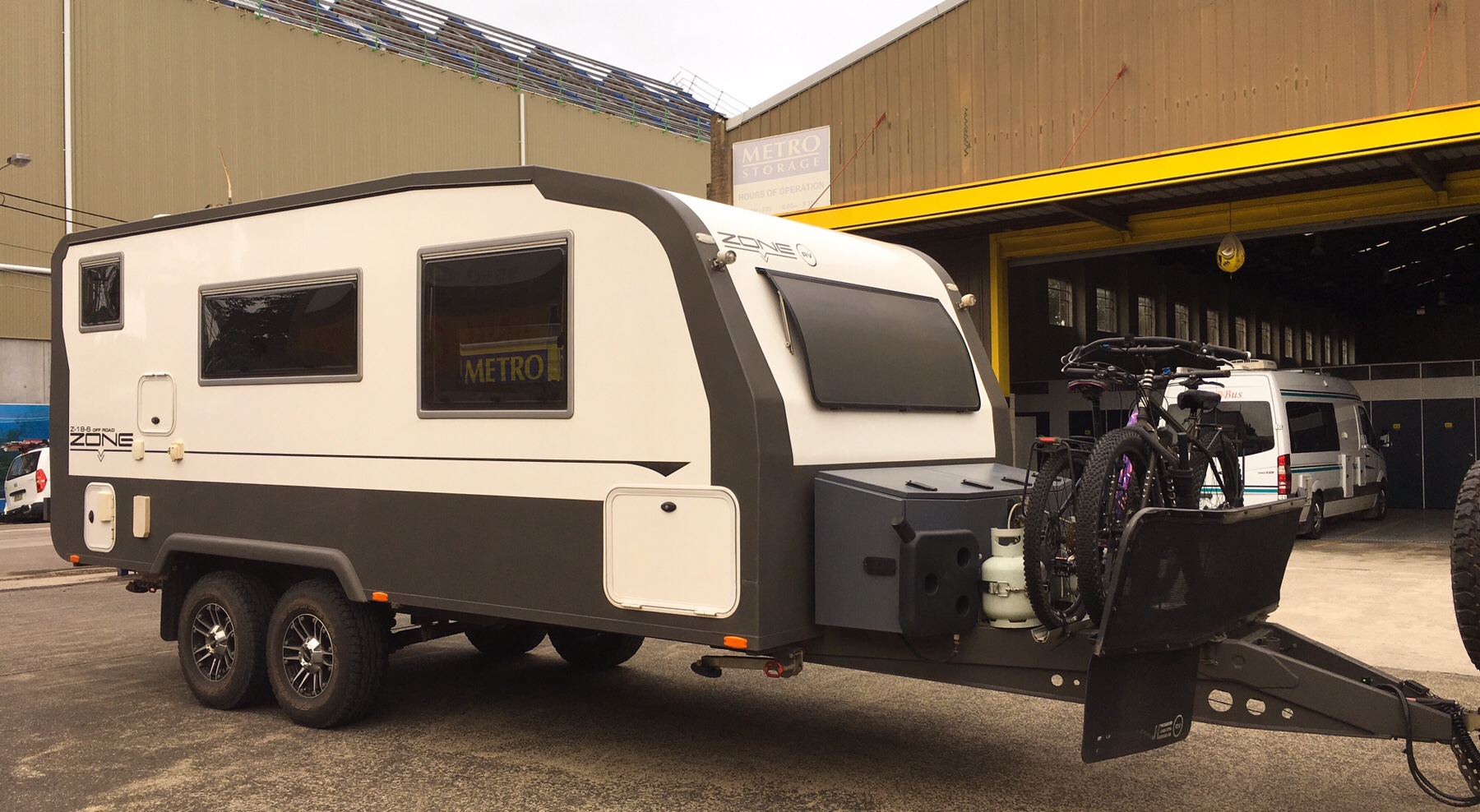 Mark drove excellently despite the stressful conditions, and before long we were emptying the last of our freezer bits and pieces and heading to our friends’ apartment in Matraville, not far from Botany Bay for a delicious roast lamb dinner and a well deserved glass of red wine.
Mark drove excellently despite the stressful conditions, and before long we were emptying the last of our freezer bits and pieces and heading to our friends’ apartment in Matraville, not far from Botany Bay for a delicious roast lamb dinner and a well deserved glass of red wine.
Sunday was Mr A’s birthday, so we were joined by about 30 friends at a pub in the city for drinks and nibbles and a general catch up. Much fun and frivolity ensued of course.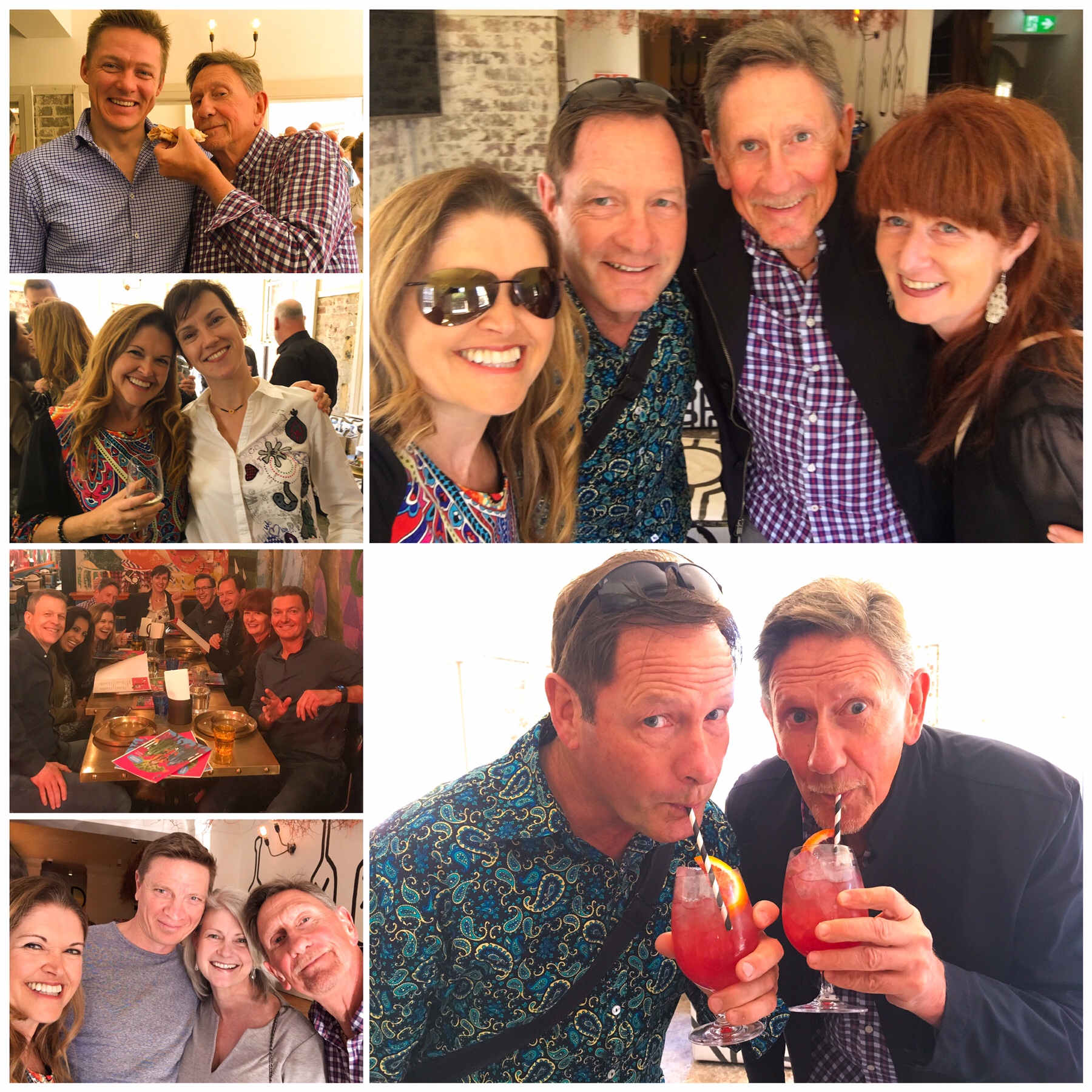 Monday and Tuesday were earmarked for the all essential medical check ups, with good news for Mr A’s eye pressures, less good news for my airway (but a new procedure to try in October), and some steroid injections into my foot to allow some comfortable hiking in the USA.
Monday and Tuesday were earmarked for the all essential medical check ups, with good news for Mr A’s eye pressures, less good news for my airway (but a new procedure to try in October), and some steroid injections into my foot to allow some comfortable hiking in the USA.
We got all our jobs done and managed to fit in a couple of cups of tea with friends too. Sydney was back to its usual sparkling self: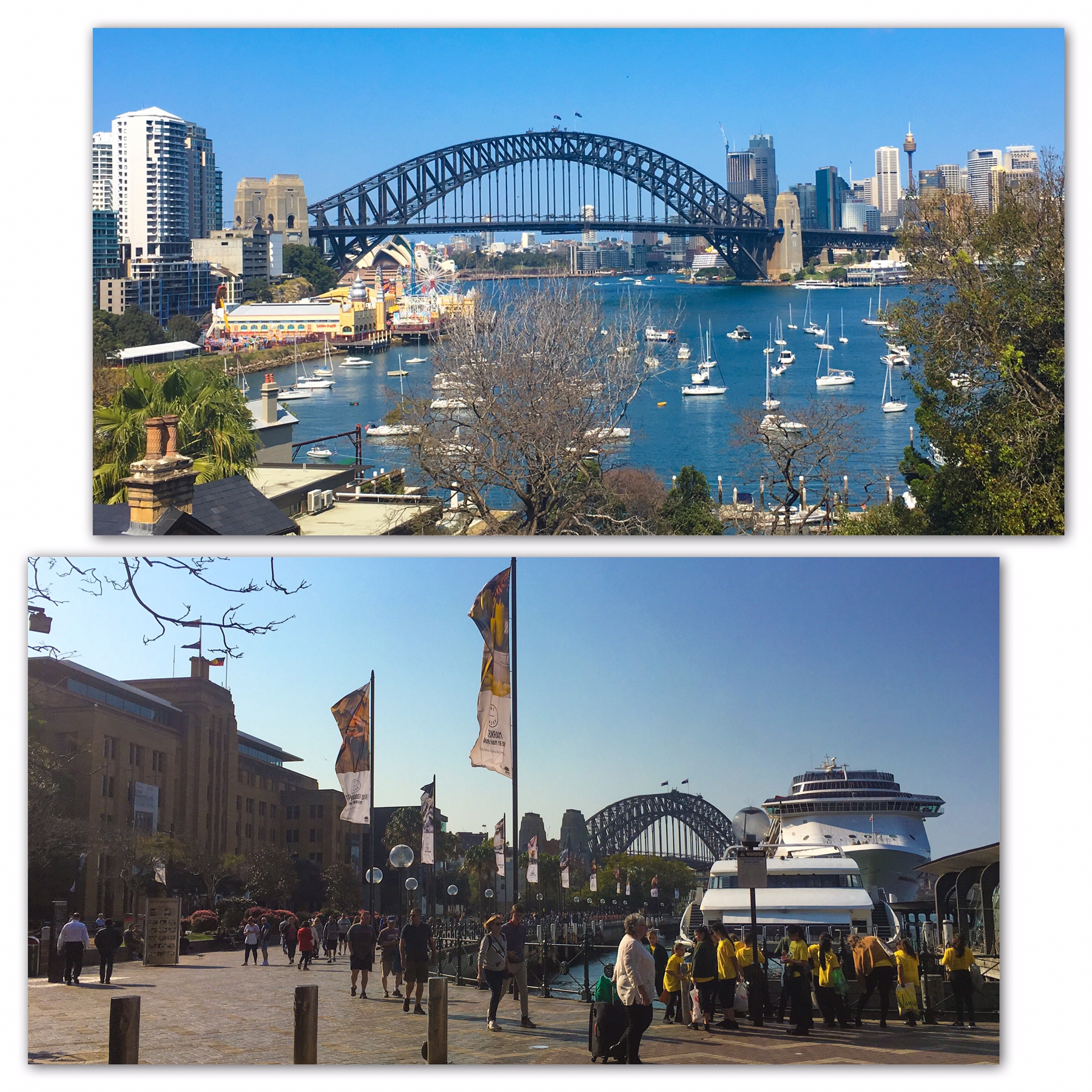
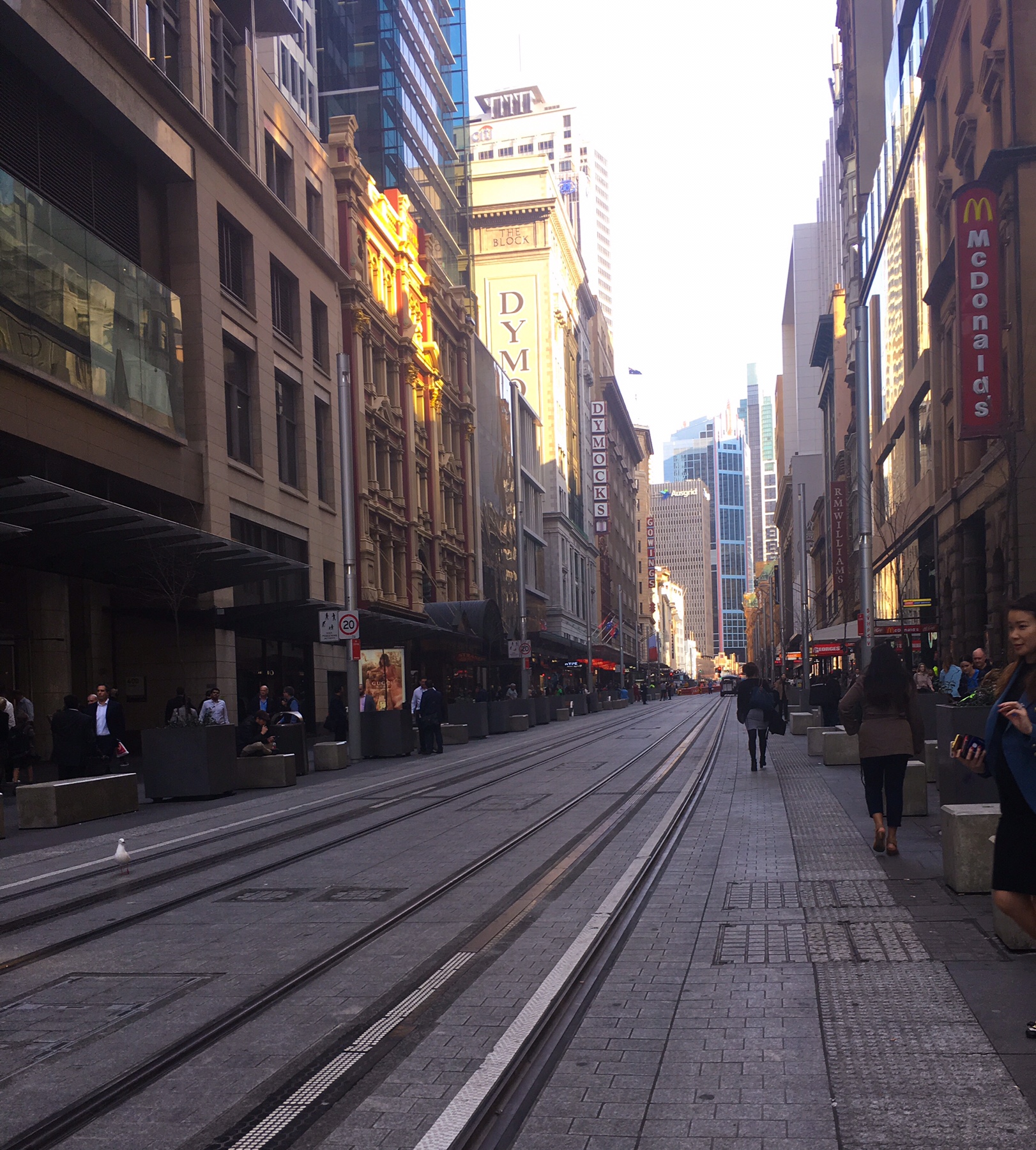
Wednesday was a final packing day as we fly off to Los Angeles in the morning. We started with an early morning walk in the Malabar Headland National Park. Mr A and Jenny walked, while I (on doctors orders not to use my foot much, post injections) did a little bird spotting – mostly wattle birds, New England honeyeaters, lorikeets, cockatoos and fairy wrens. What a pretty area and great time of day to enjoy the sunrise and birdlife.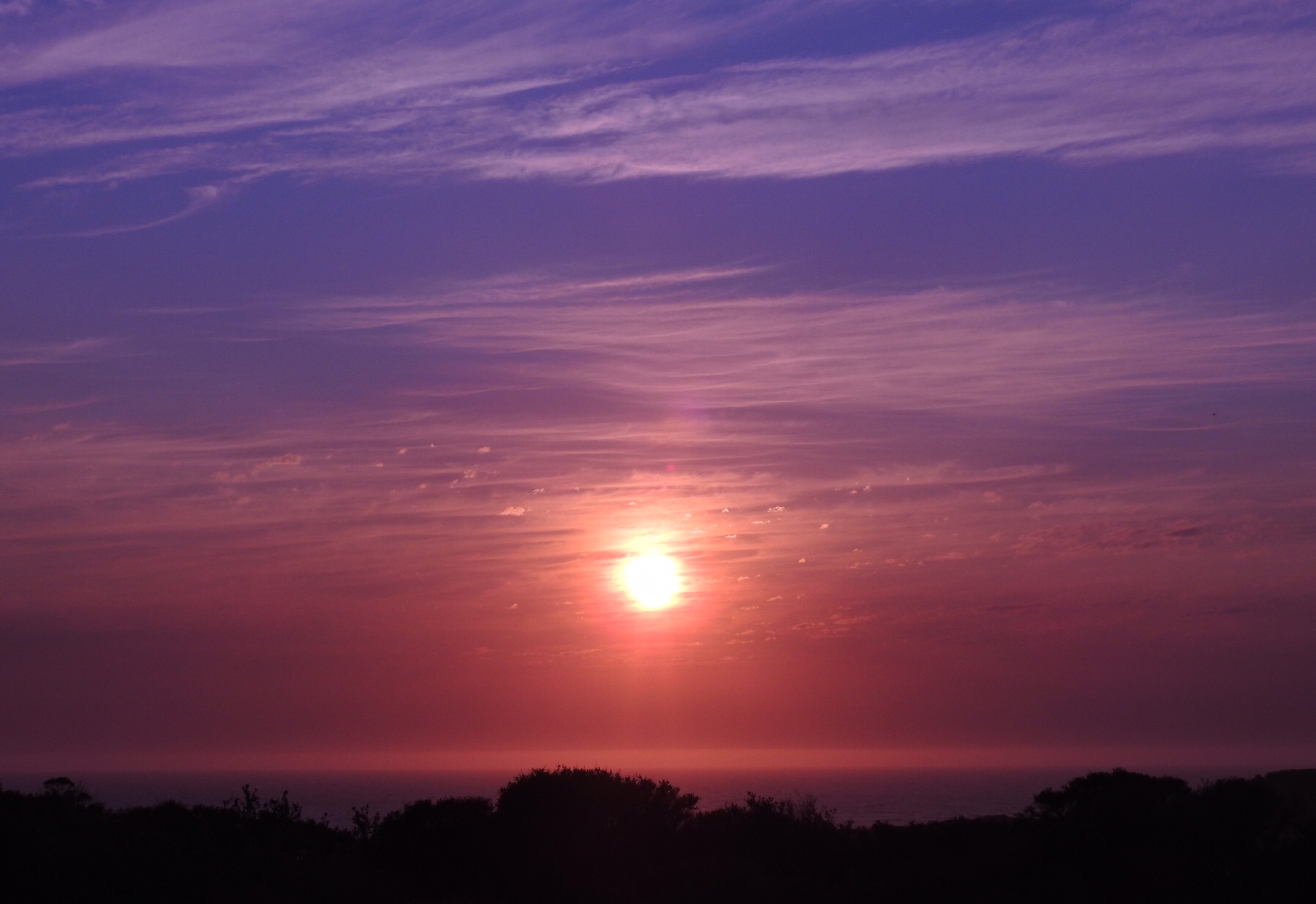
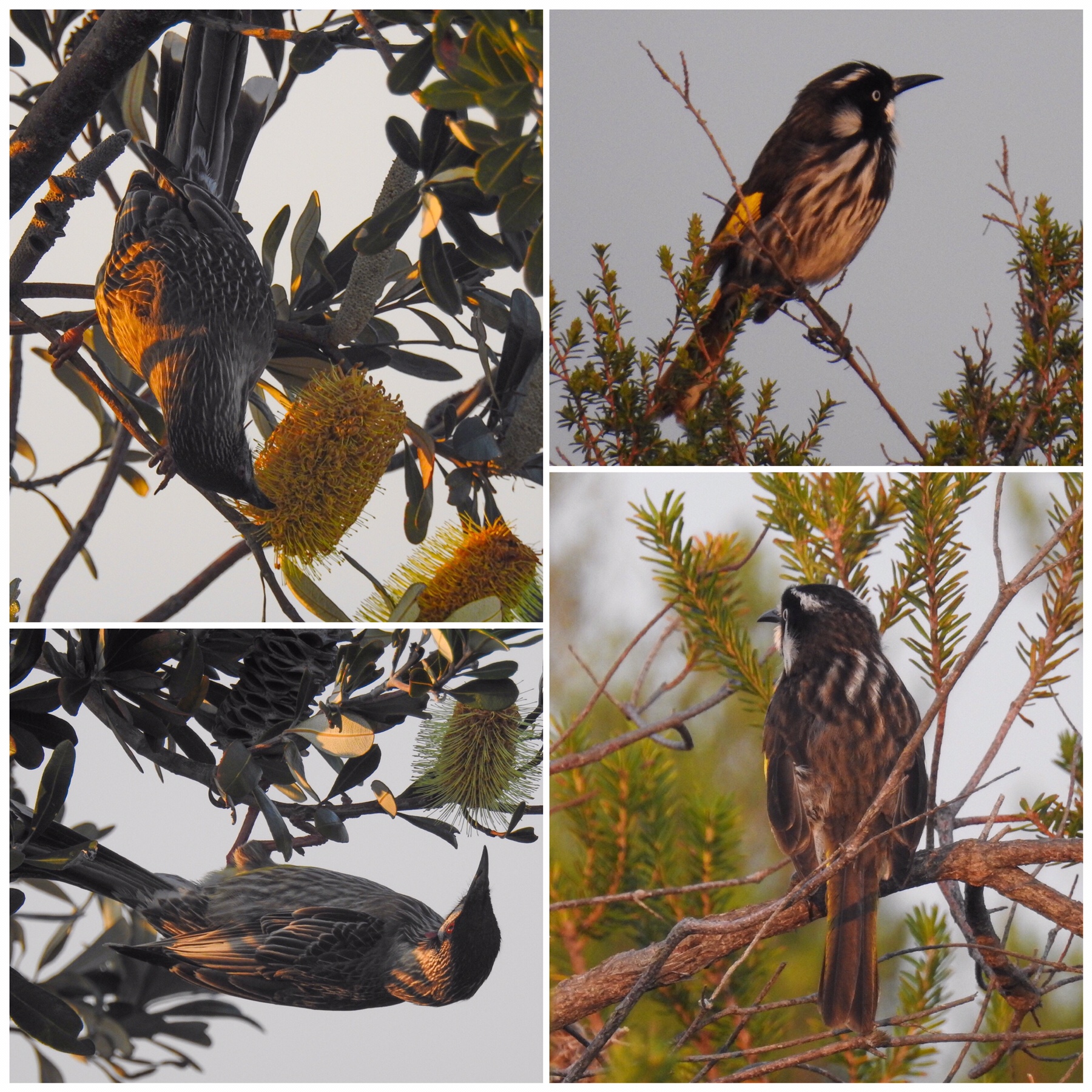
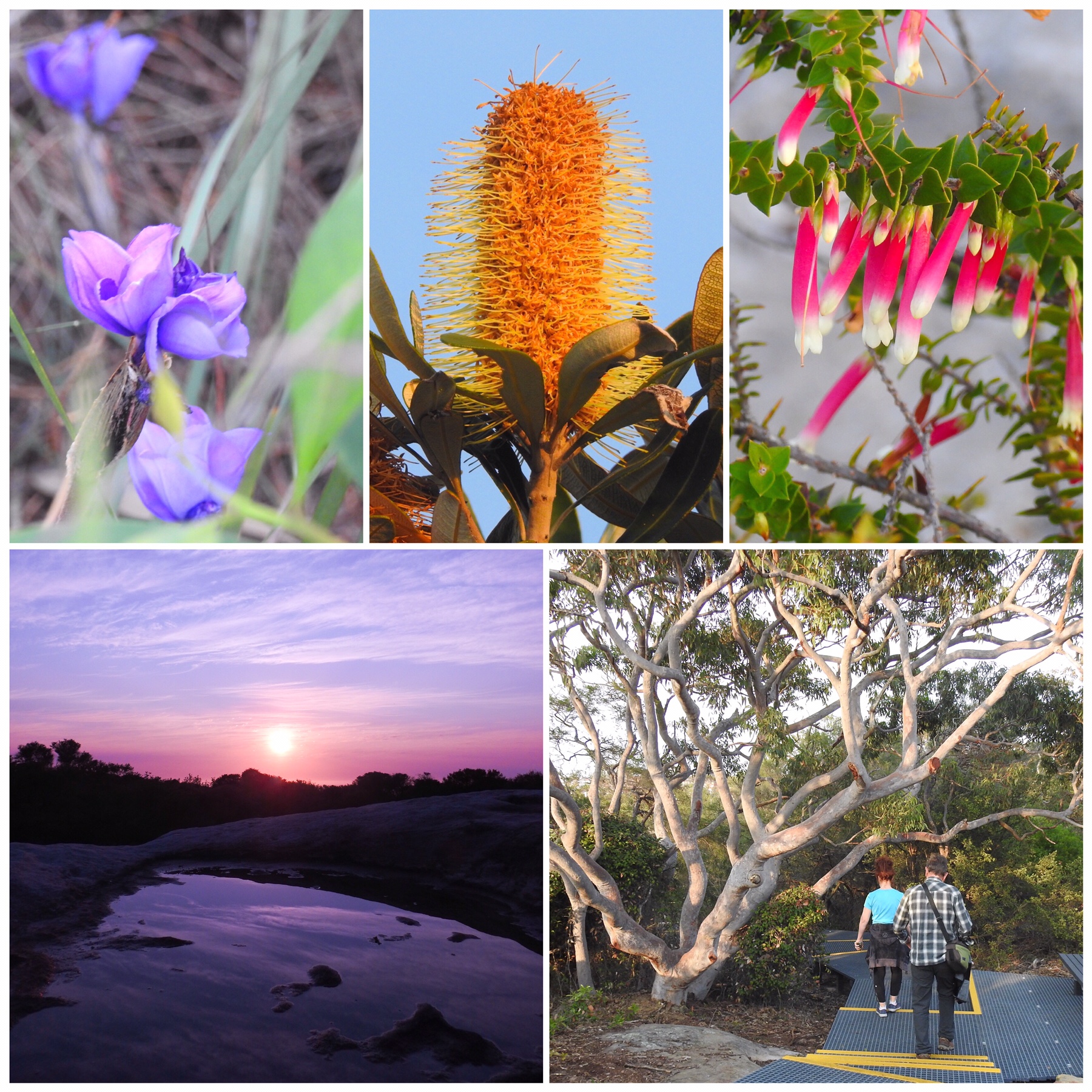 Mr A took the opportunity to catch up with a bunch of old work colleagues for lunch while I had a hair cut. Lovely.
Mr A took the opportunity to catch up with a bunch of old work colleagues for lunch while I had a hair cut. Lovely. We finished off our day joining Jenny and David for dinner at a local Italian restaurant. Fabulous food and company as always.
We finished off our day joining Jenny and David for dinner at a local Italian restaurant. Fabulous food and company as always.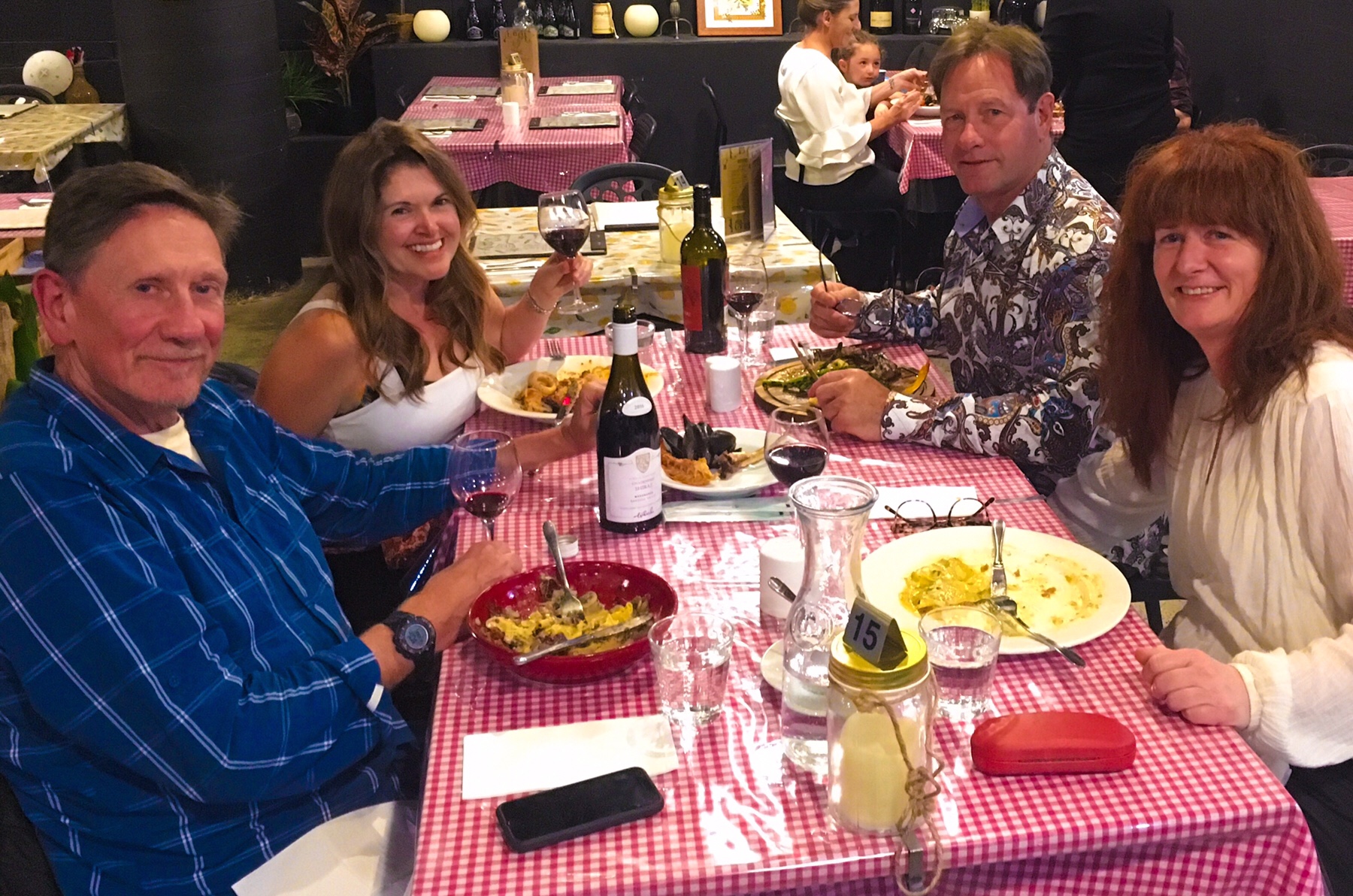 While we are away, Miss Tassie will be staying here at her luxury pad in Matraville for the next month. She’s settled in nicely, already solar mapping out the apartment. Apparently the new chairs on the balcony suit her, while she is also finding the colour scheme elsewhere works with her glossy blue coat. She’s in good hands here.
While we are away, Miss Tassie will be staying here at her luxury pad in Matraville for the next month. She’s settled in nicely, already solar mapping out the apartment. Apparently the new chairs on the balcony suit her, while she is also finding the colour scheme elsewhere works with her glossy blue coat. She’s in good hands here.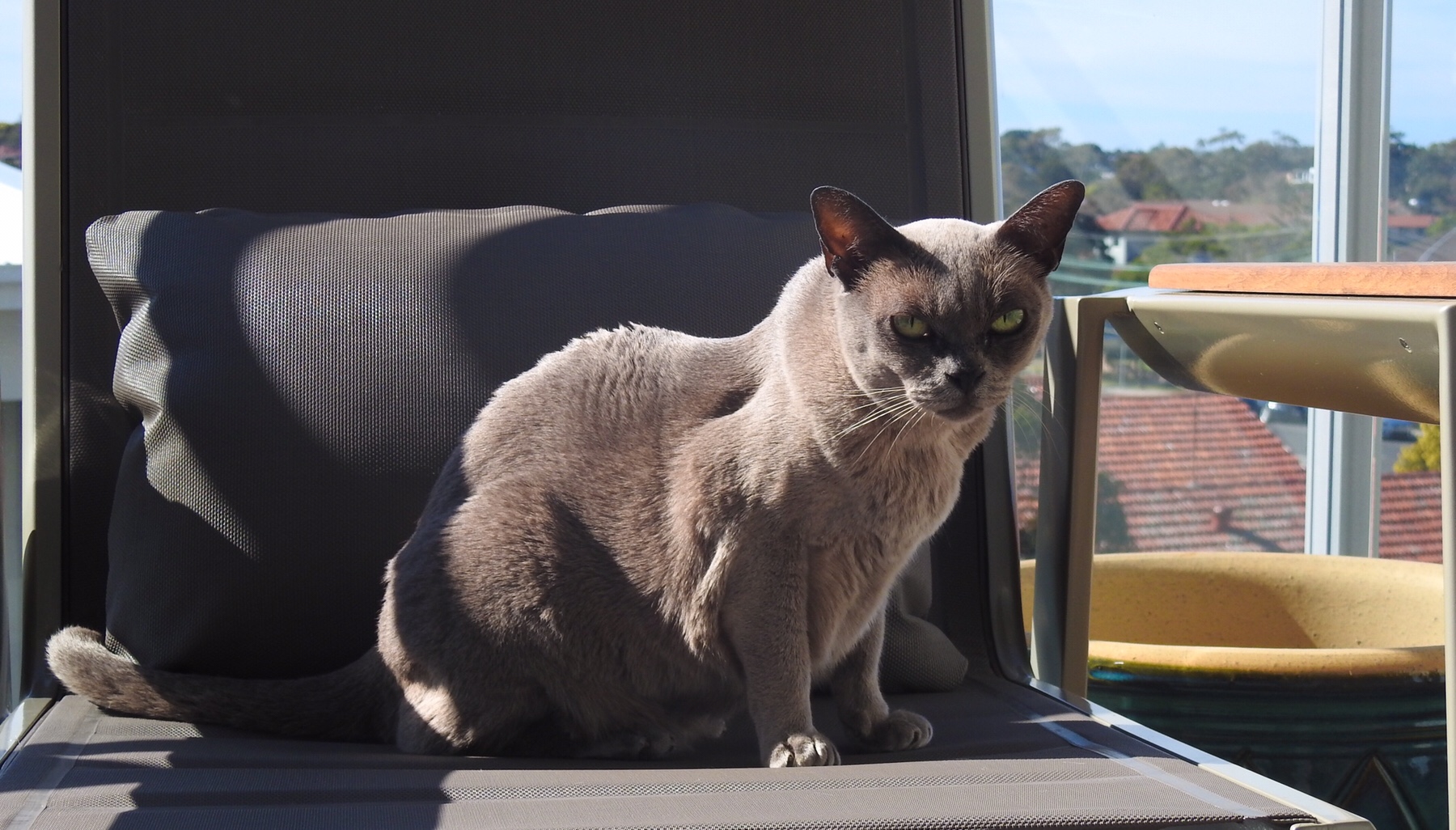
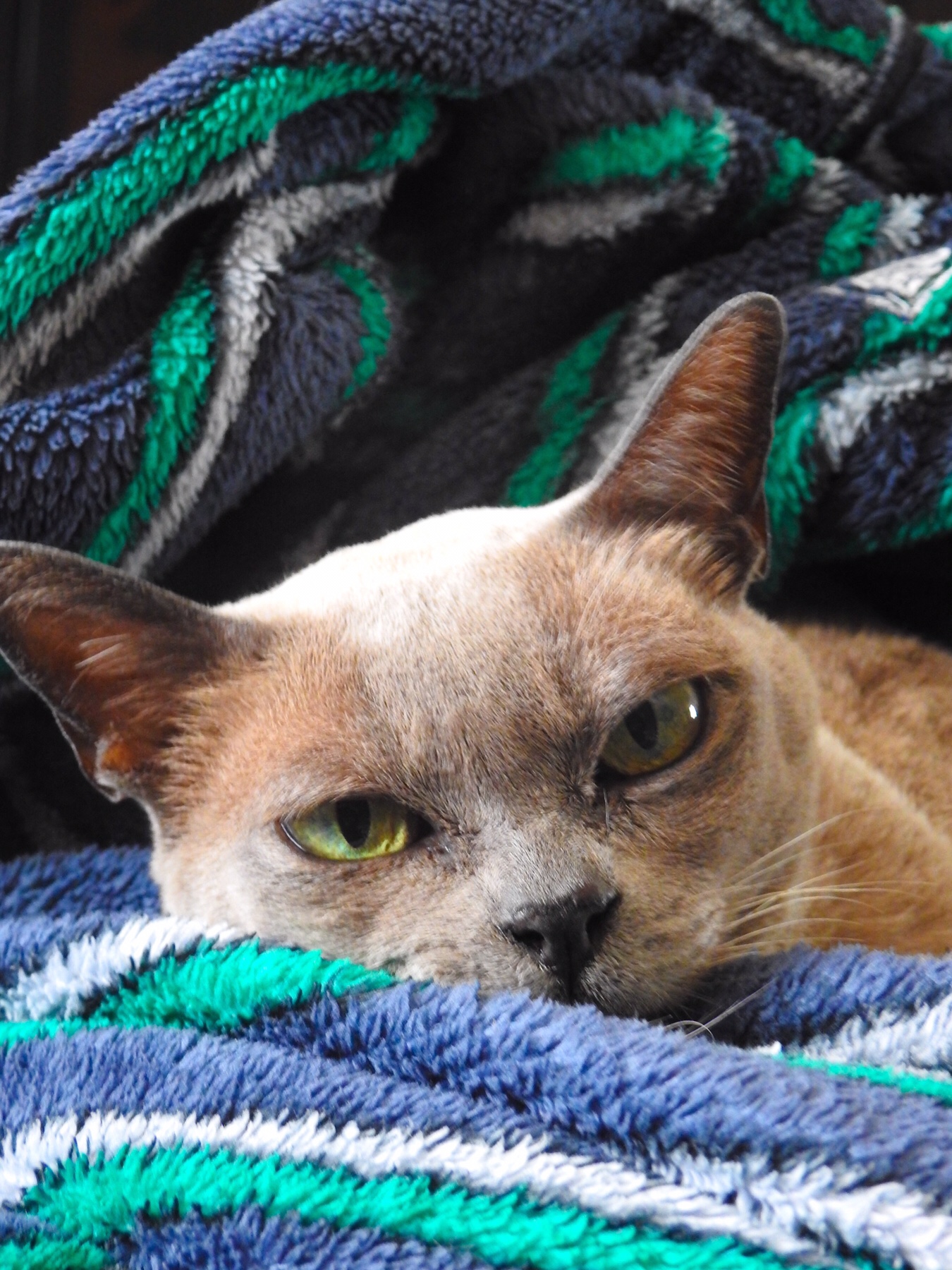
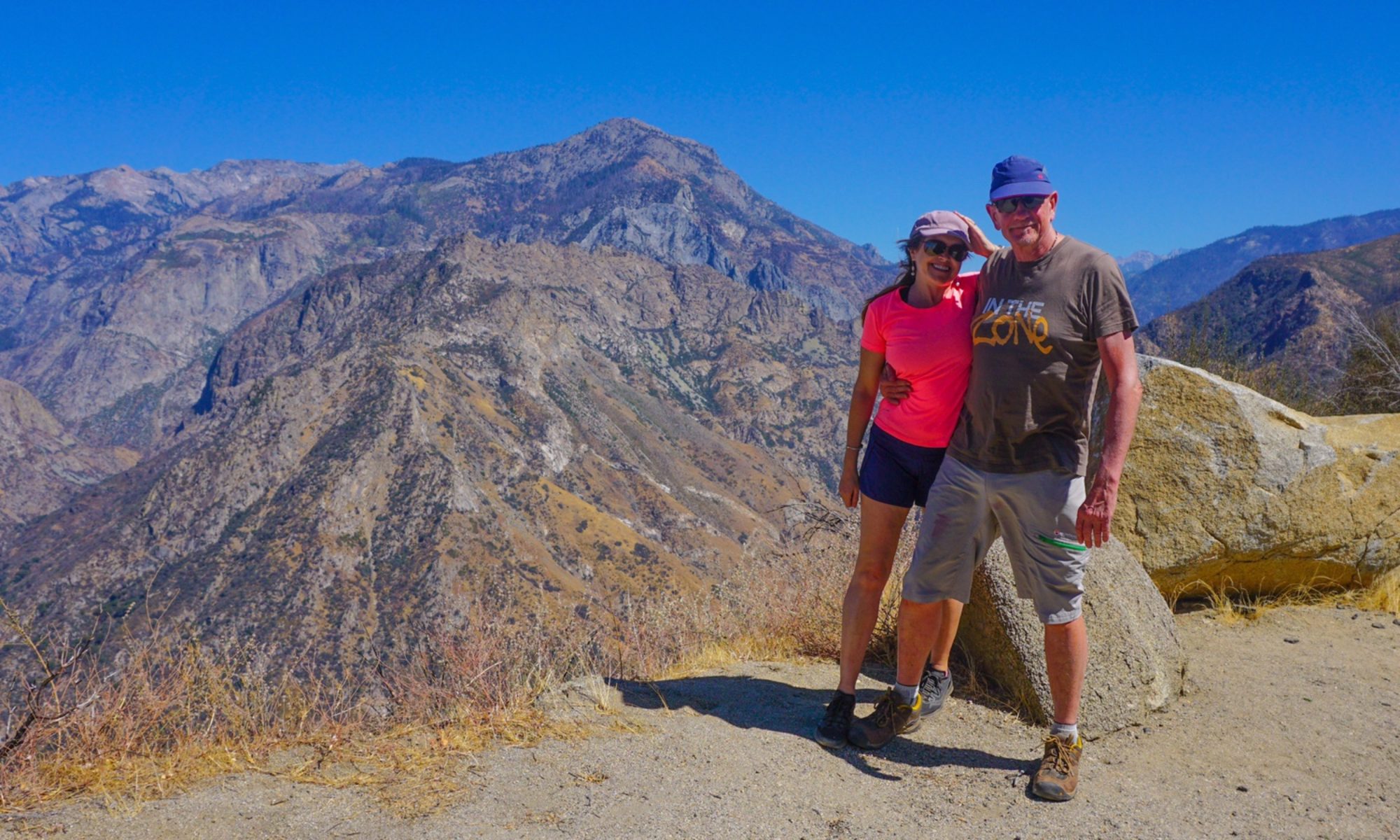
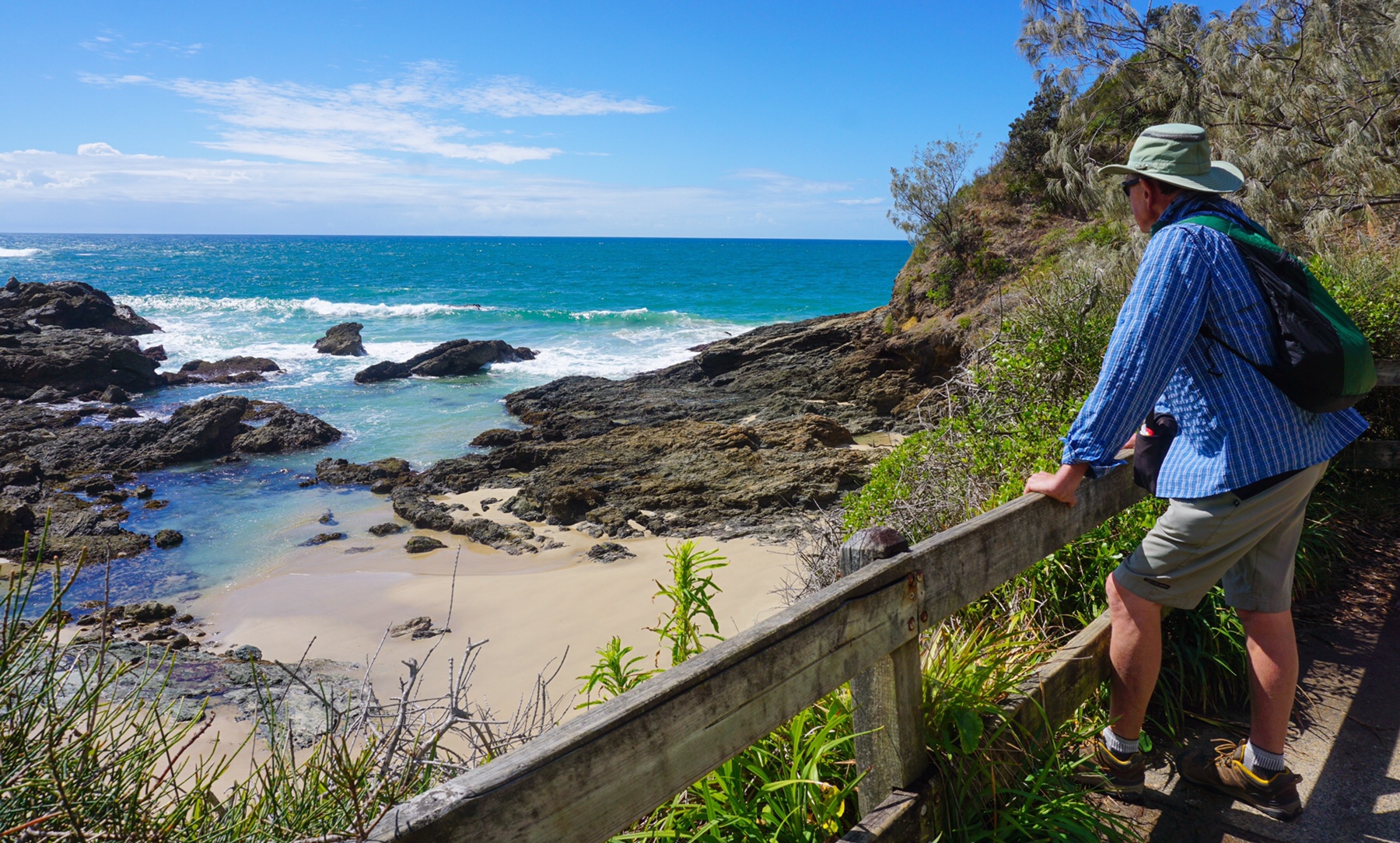
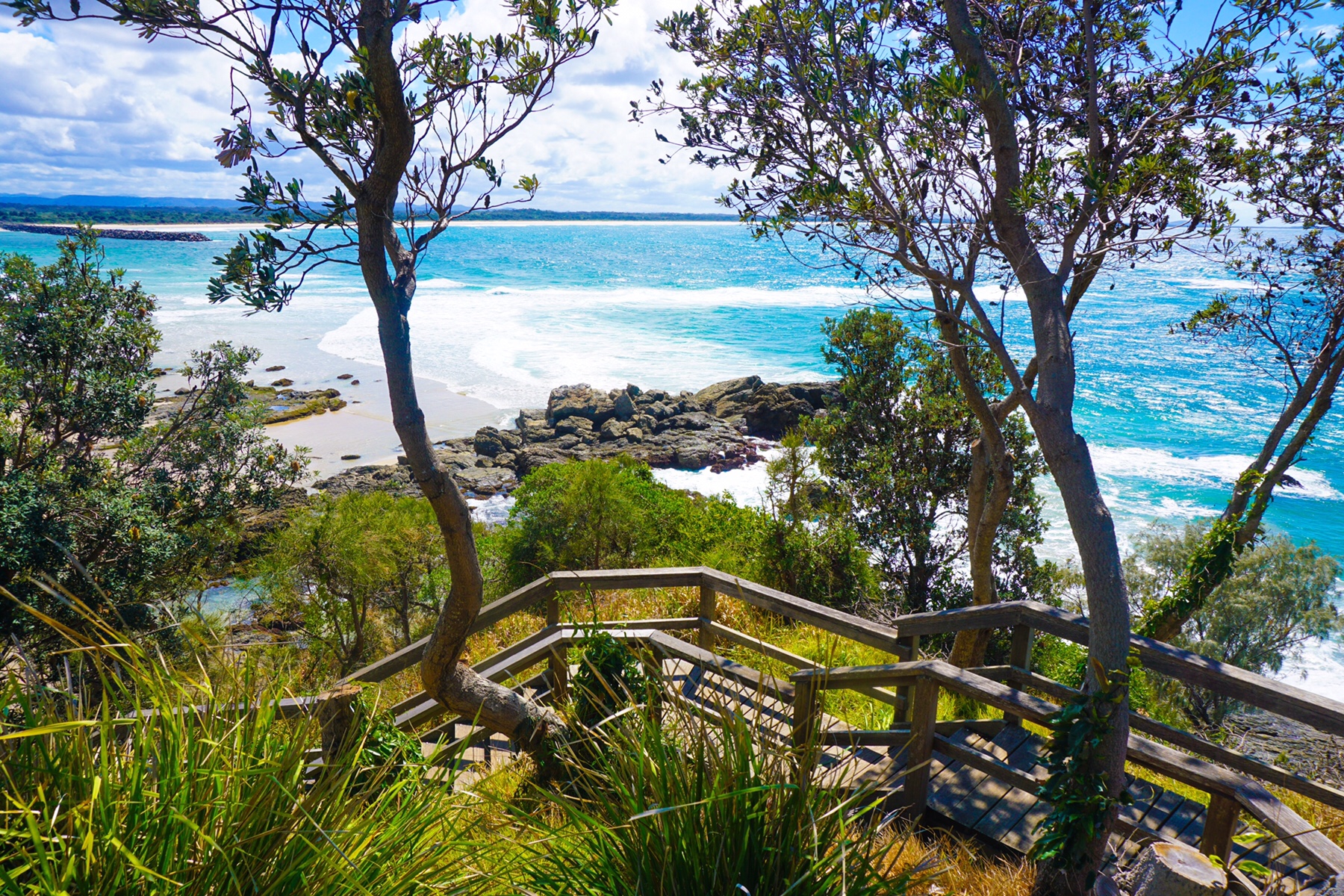
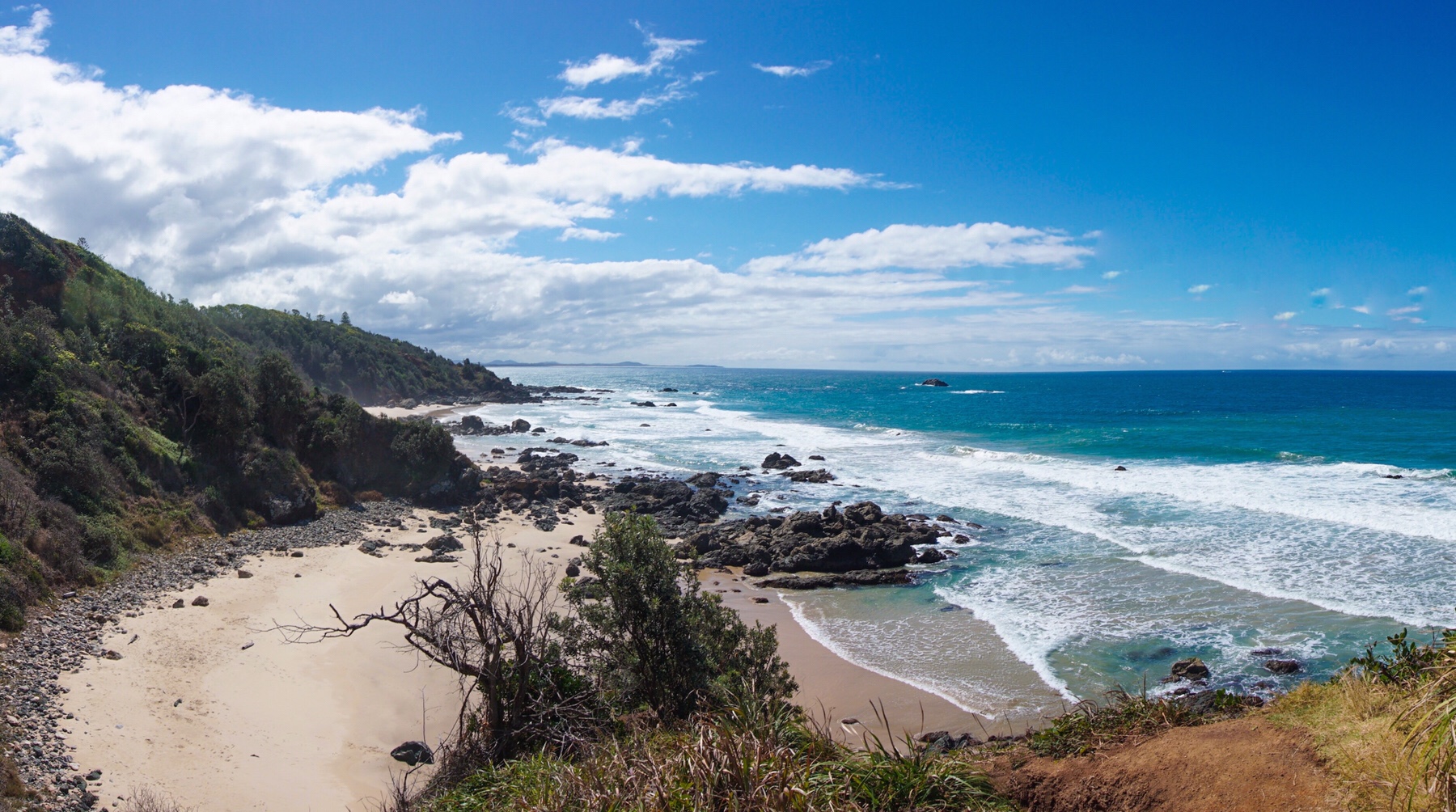
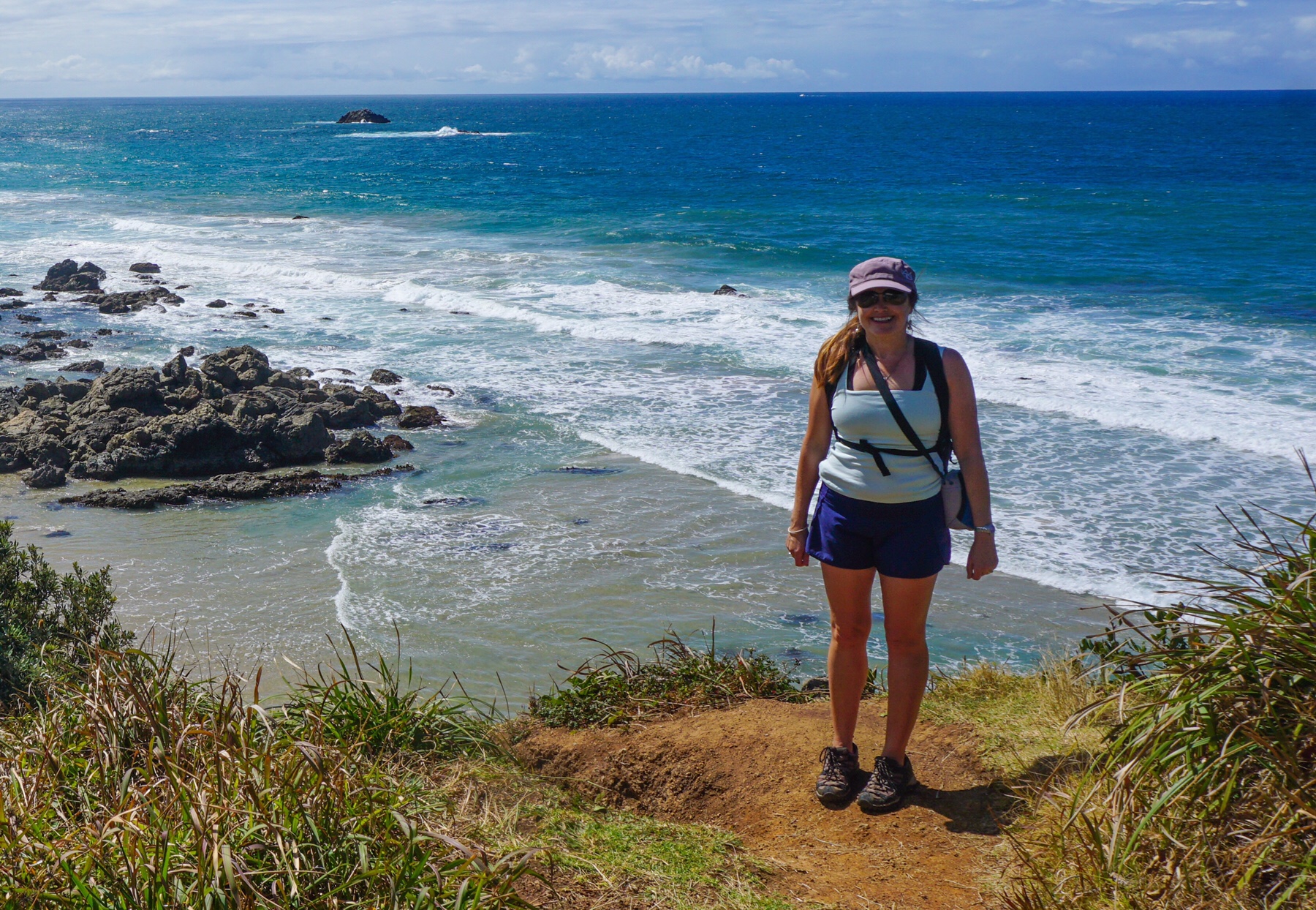
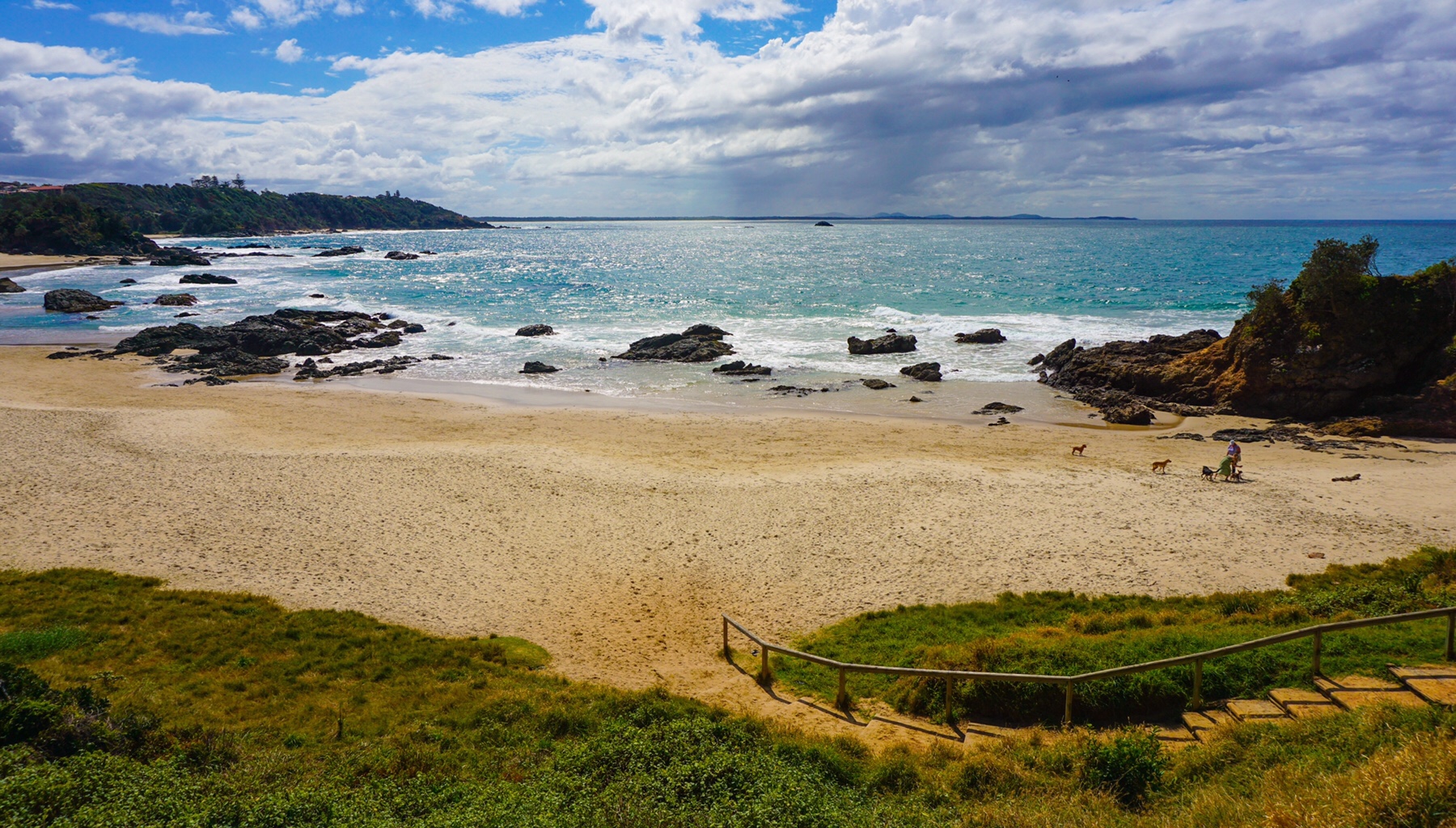
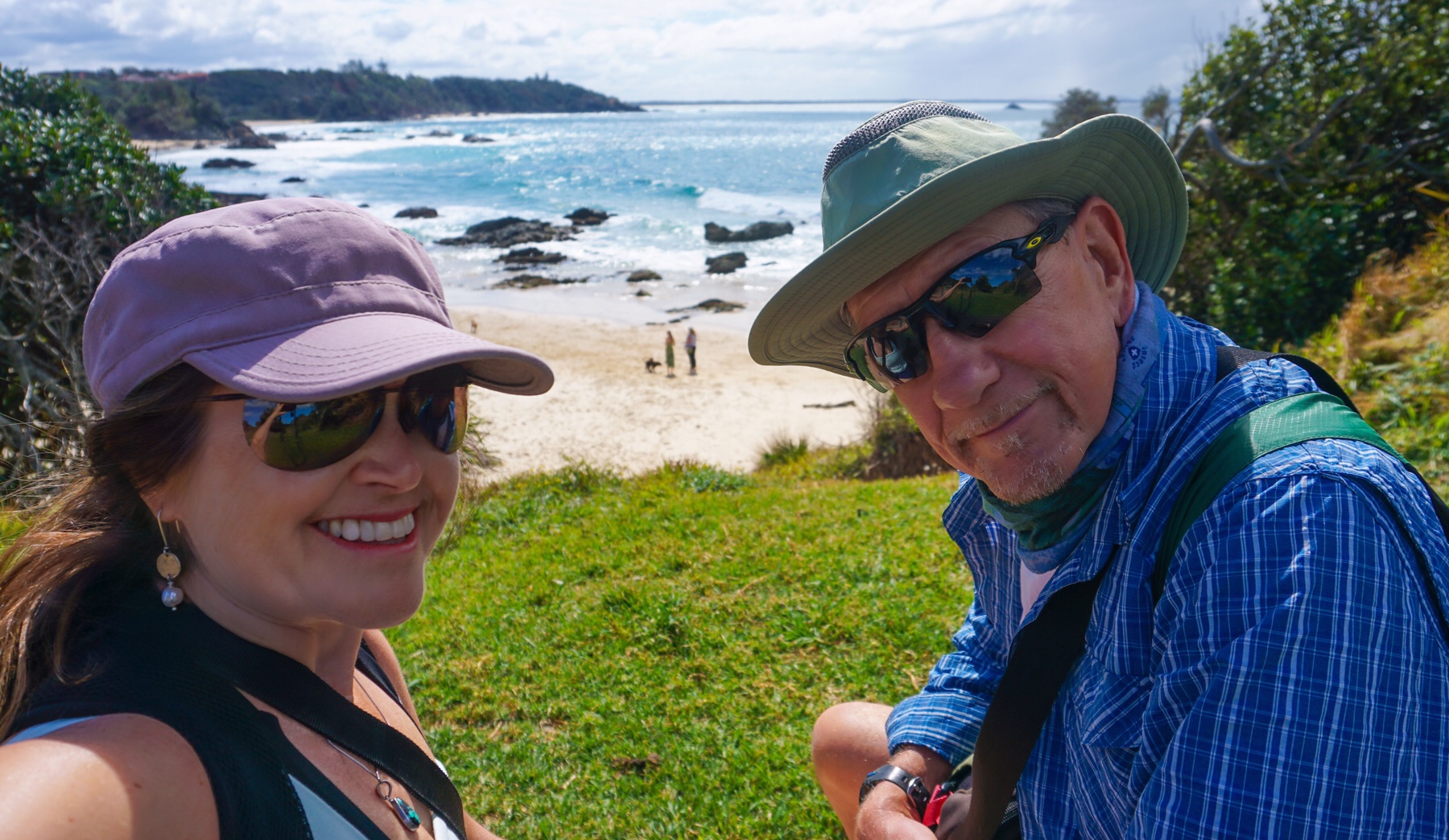
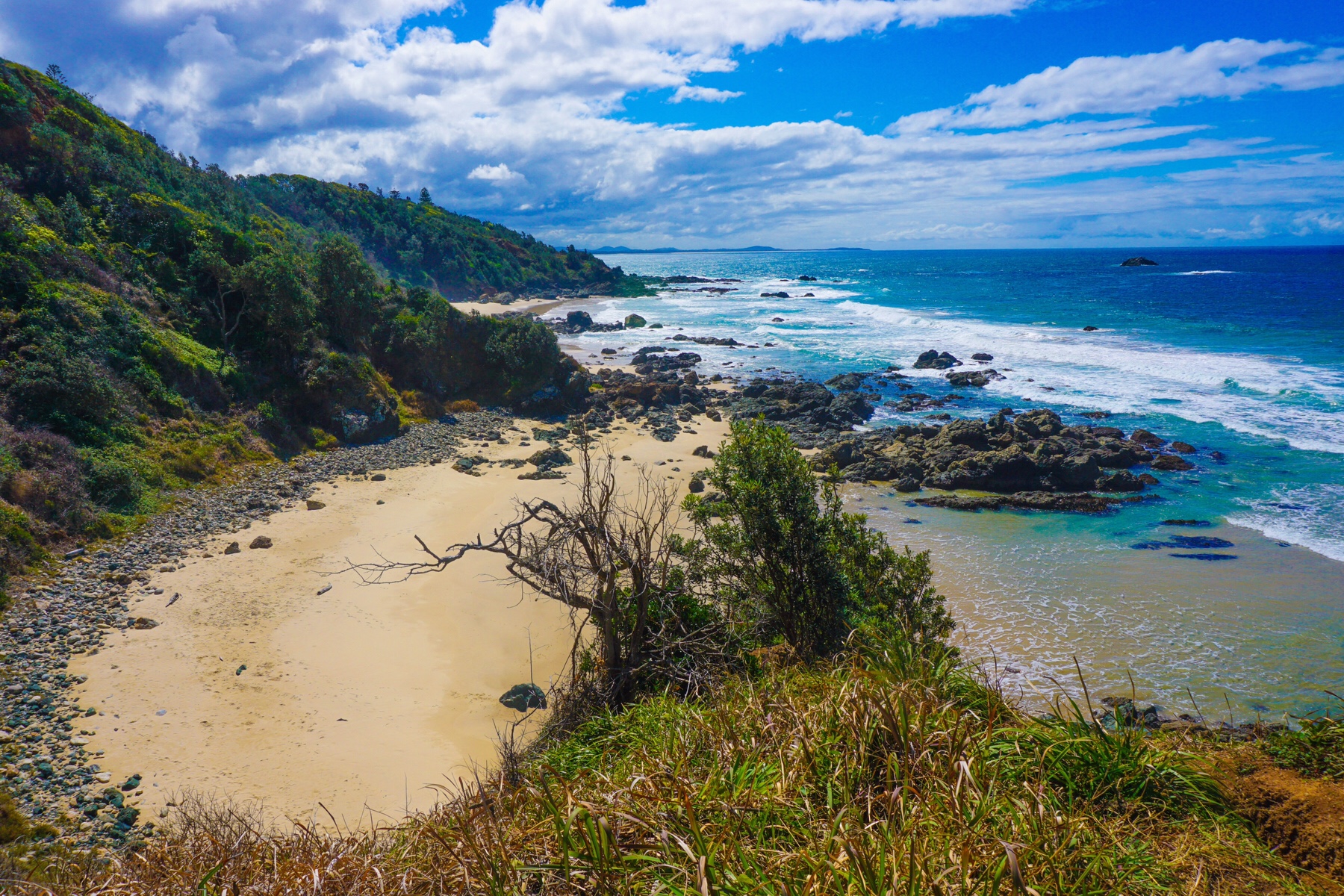
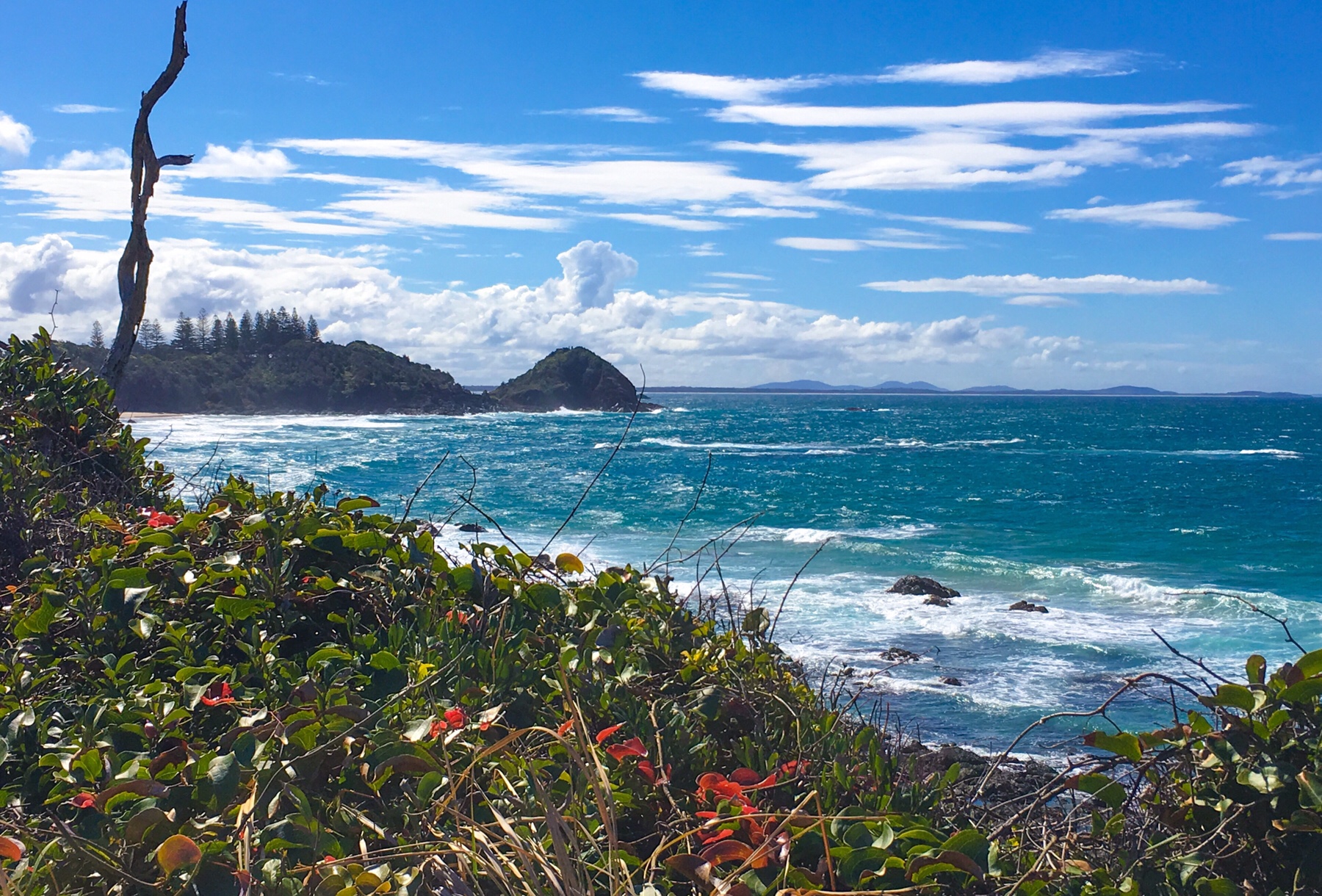
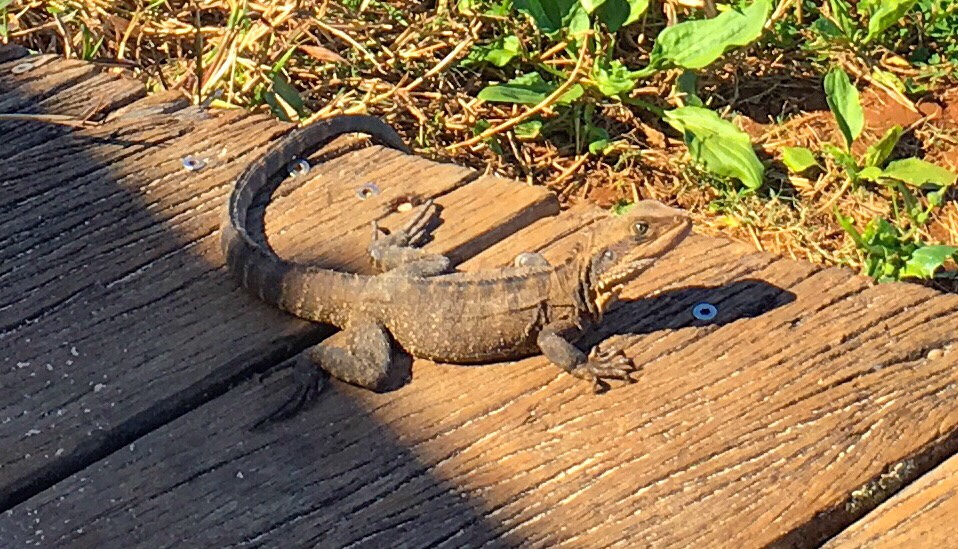
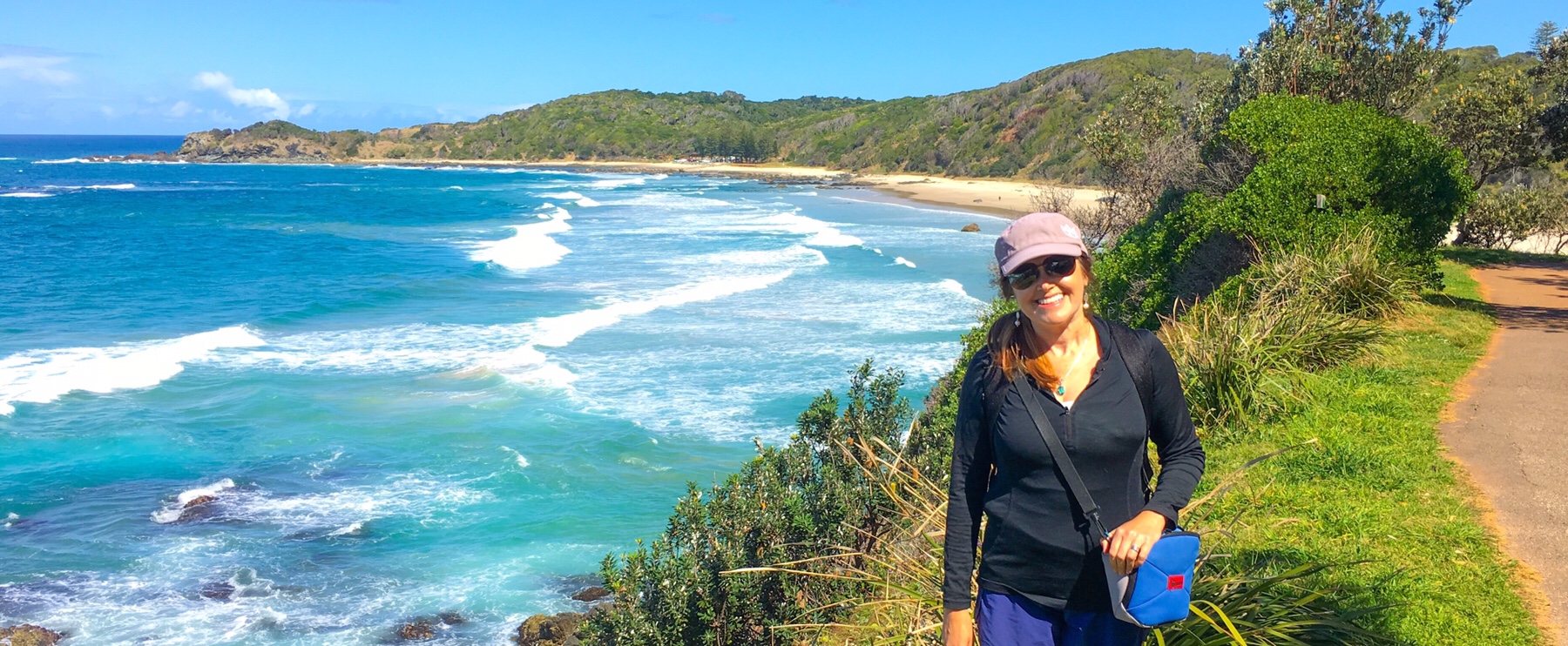

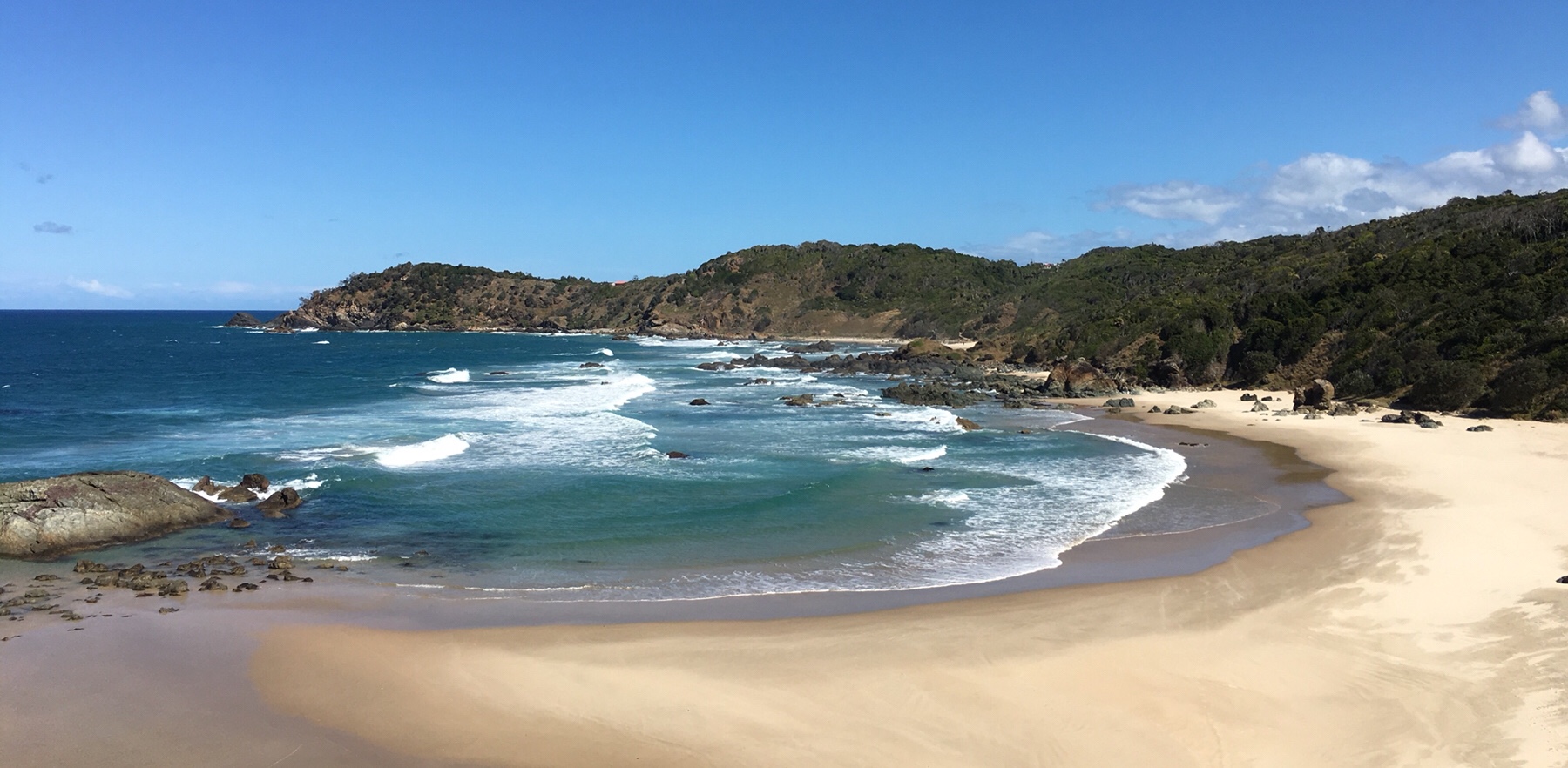 The sand was just so fine and white, almost felt like flour in your hand. We had a great lunch at a little surf cafe, and then settled in back at the Zone.
The sand was just so fine and white, almost felt like flour in your hand. We had a great lunch at a little surf cafe, and then settled in back at the Zone.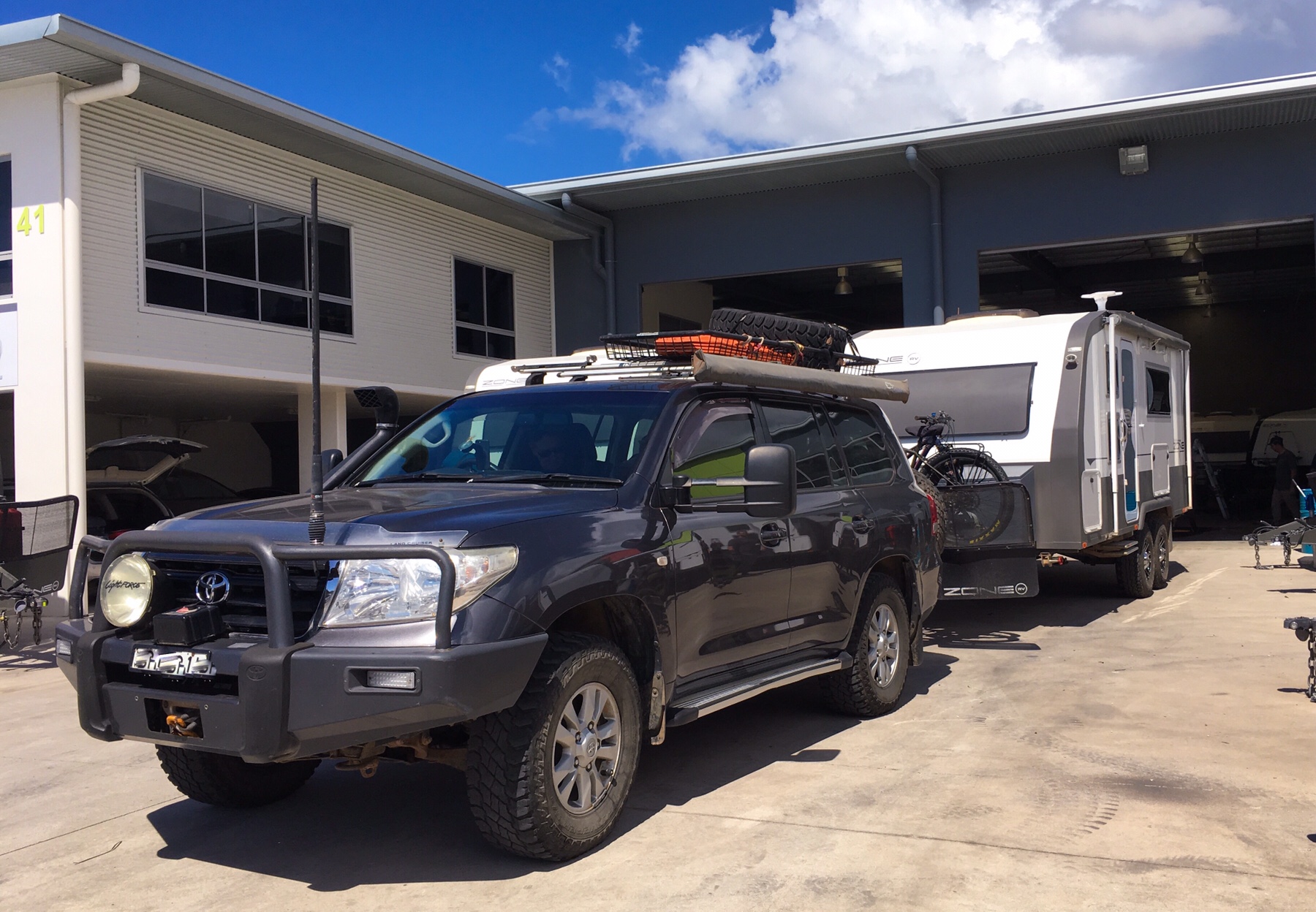 We had a brief whirlwind of time to transfer our cases and food back into the caravan, dig out the smart clothes and get changed, before the four of us drove into Brisbane for the evening.
We had a brief whirlwind of time to transfer our cases and food back into the caravan, dig out the smart clothes and get changed, before the four of us drove into Brisbane for the evening.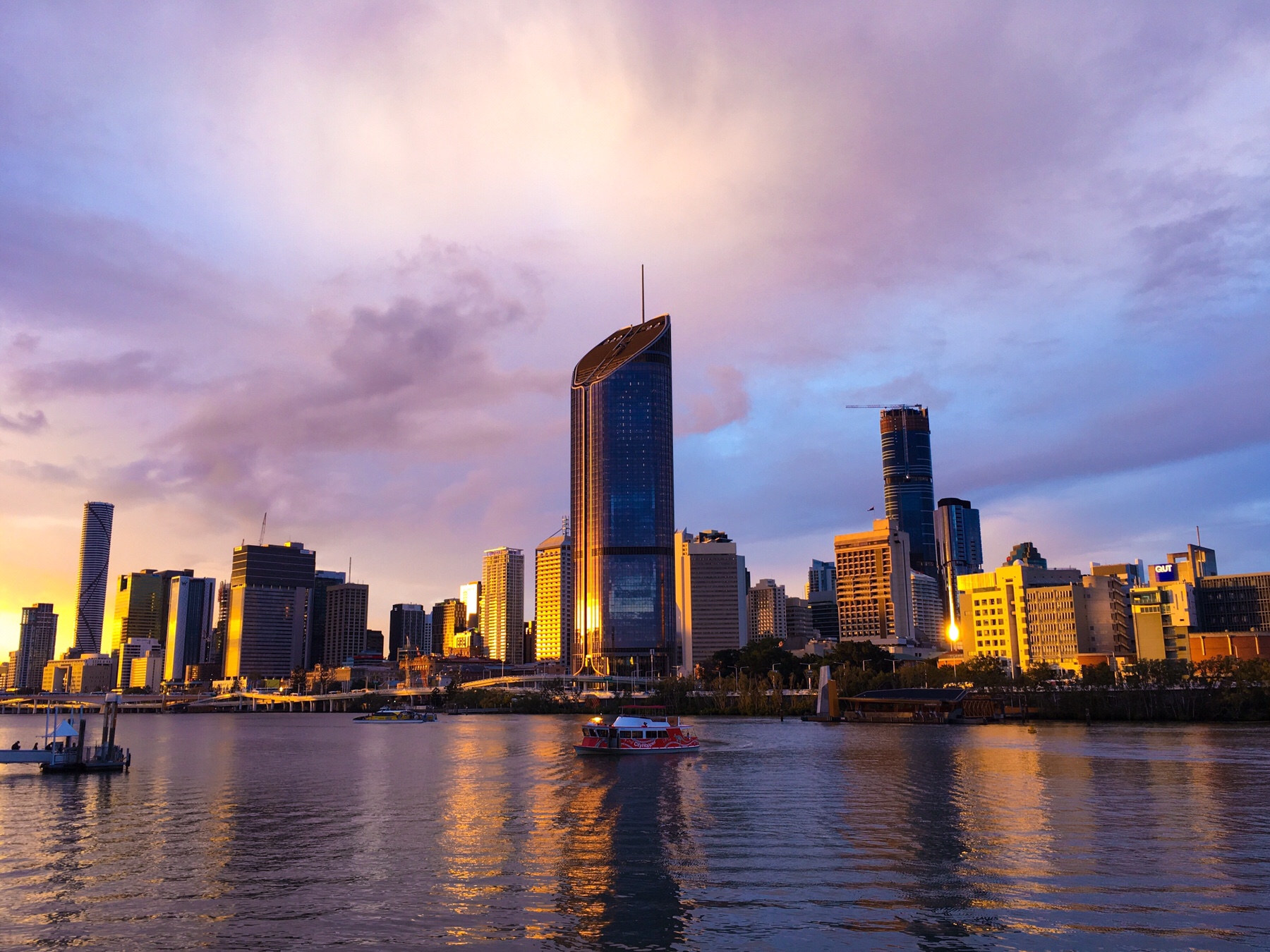
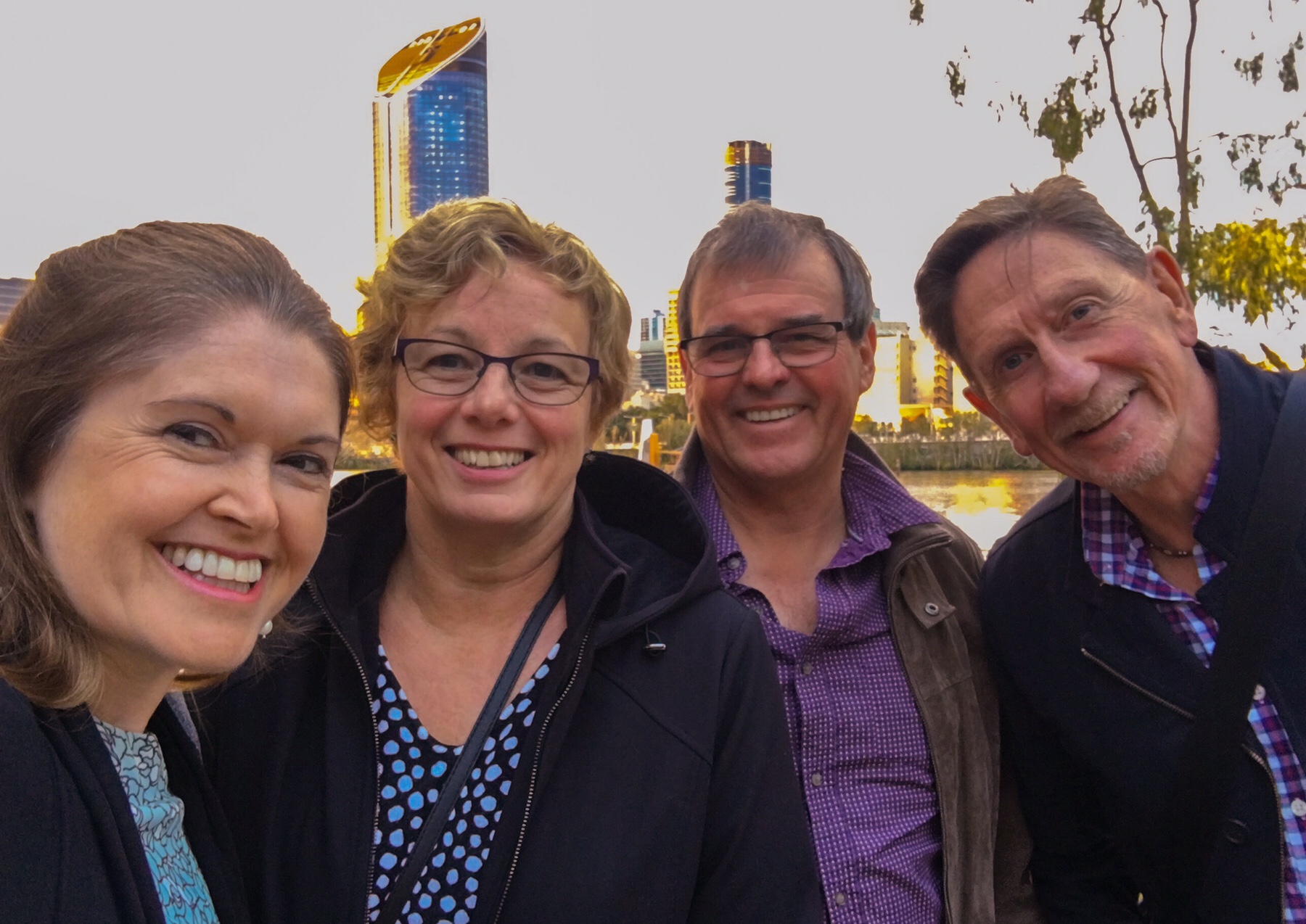 After this, we parted ways, Phil and Libby ending up at a pub helping celebrate a nephew’s birthday, while Mr A and I joined three lovely ladies for dinner in a French restaurant beside the water.
After this, we parted ways, Phil and Libby ending up at a pub helping celebrate a nephew’s birthday, while Mr A and I joined three lovely ladies for dinner in a French restaurant beside the water. We have probably driven past this area a dozen times without any awareness of what’s here, but it’s a lovely rural settlement sat on the banks of the Clarence River close to the estuary. There are over 100 islands in the wide river here, the nearest to us being Goodwood Island.
We have probably driven past this area a dozen times without any awareness of what’s here, but it’s a lovely rural settlement sat on the banks of the Clarence River close to the estuary. There are over 100 islands in the wide river here, the nearest to us being Goodwood Island.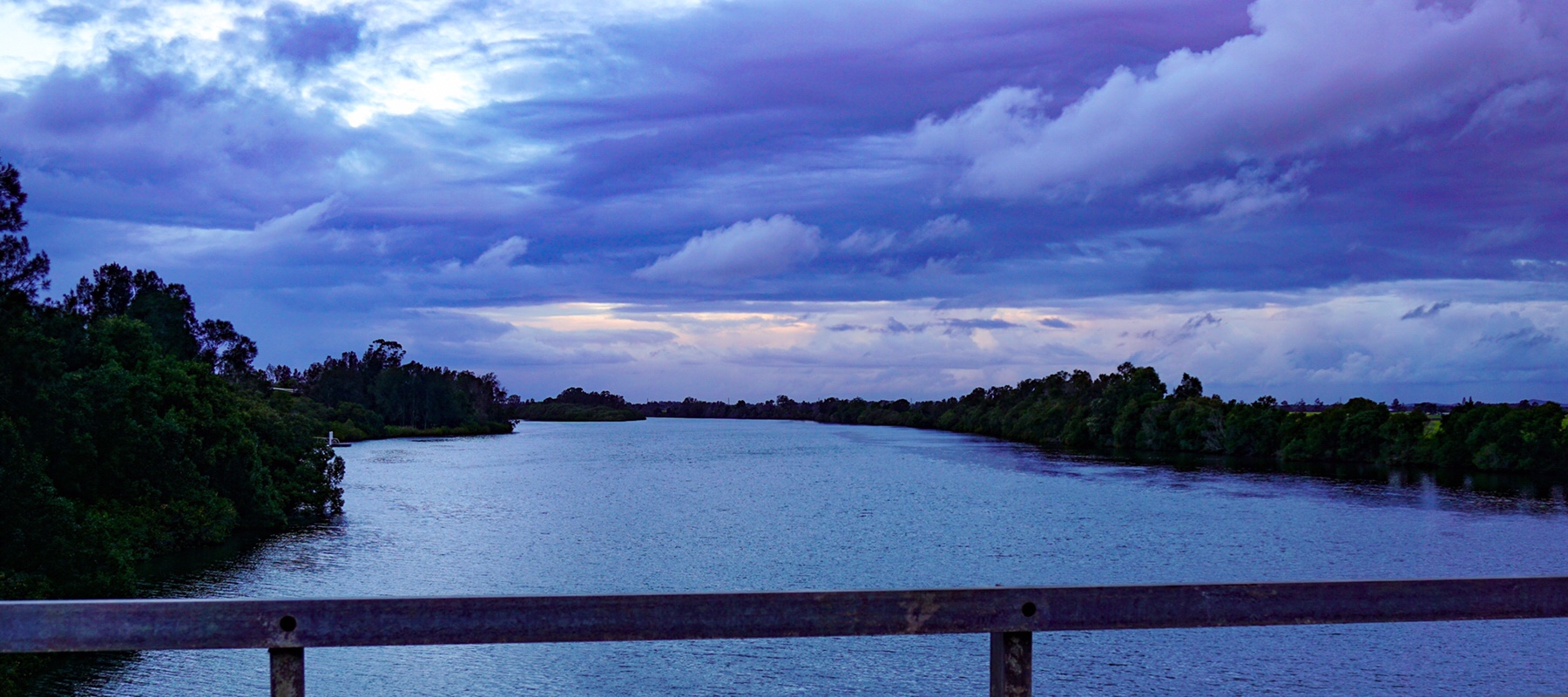
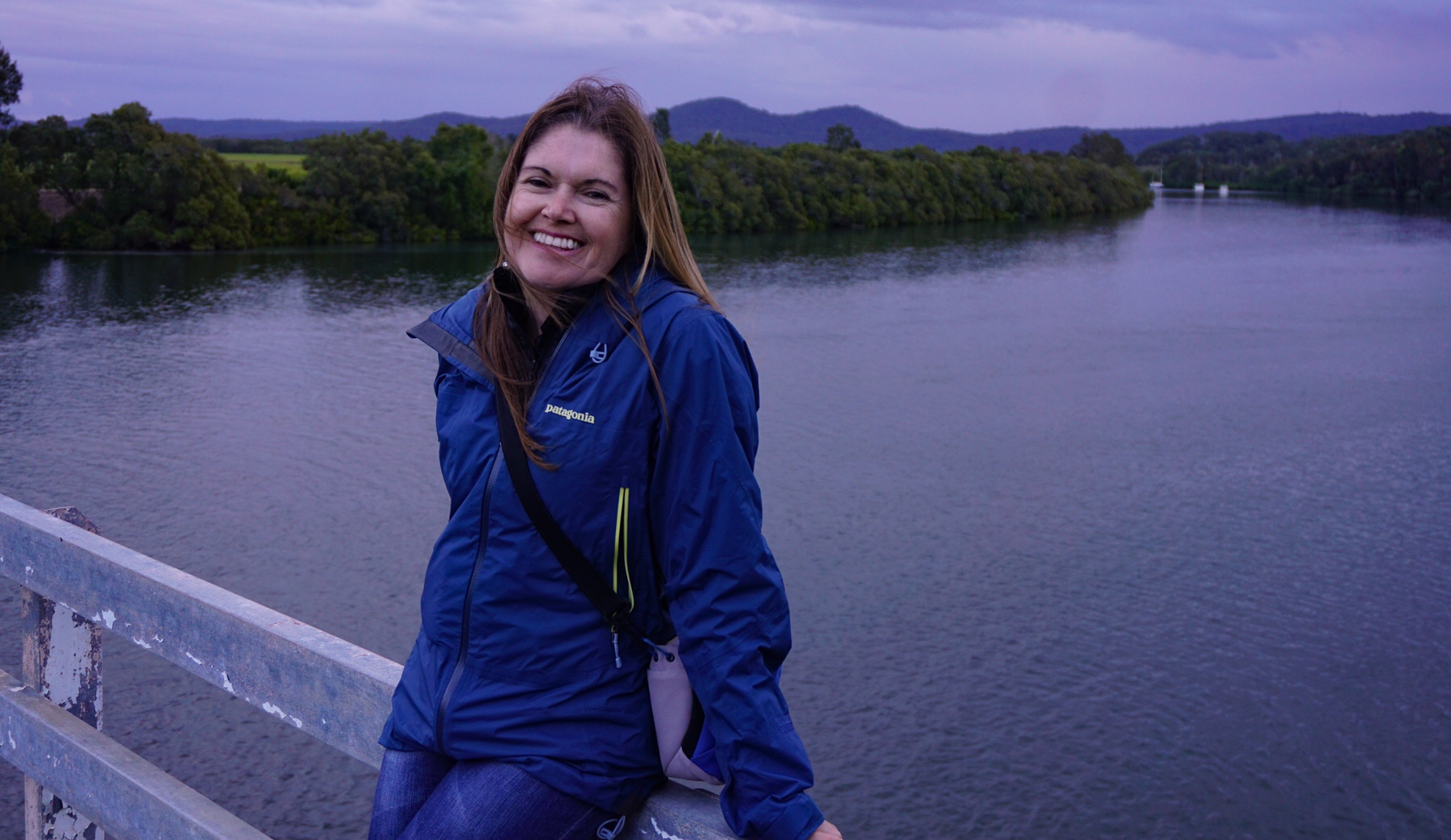 The sun was starting to set so we only went a couple of kilometres, crossing over the bridge to Goodwood Island and checking out the wet sugar cane fields before returning for the evening.
The sun was starting to set so we only went a couple of kilometres, crossing over the bridge to Goodwood Island and checking out the wet sugar cane fields before returning for the evening.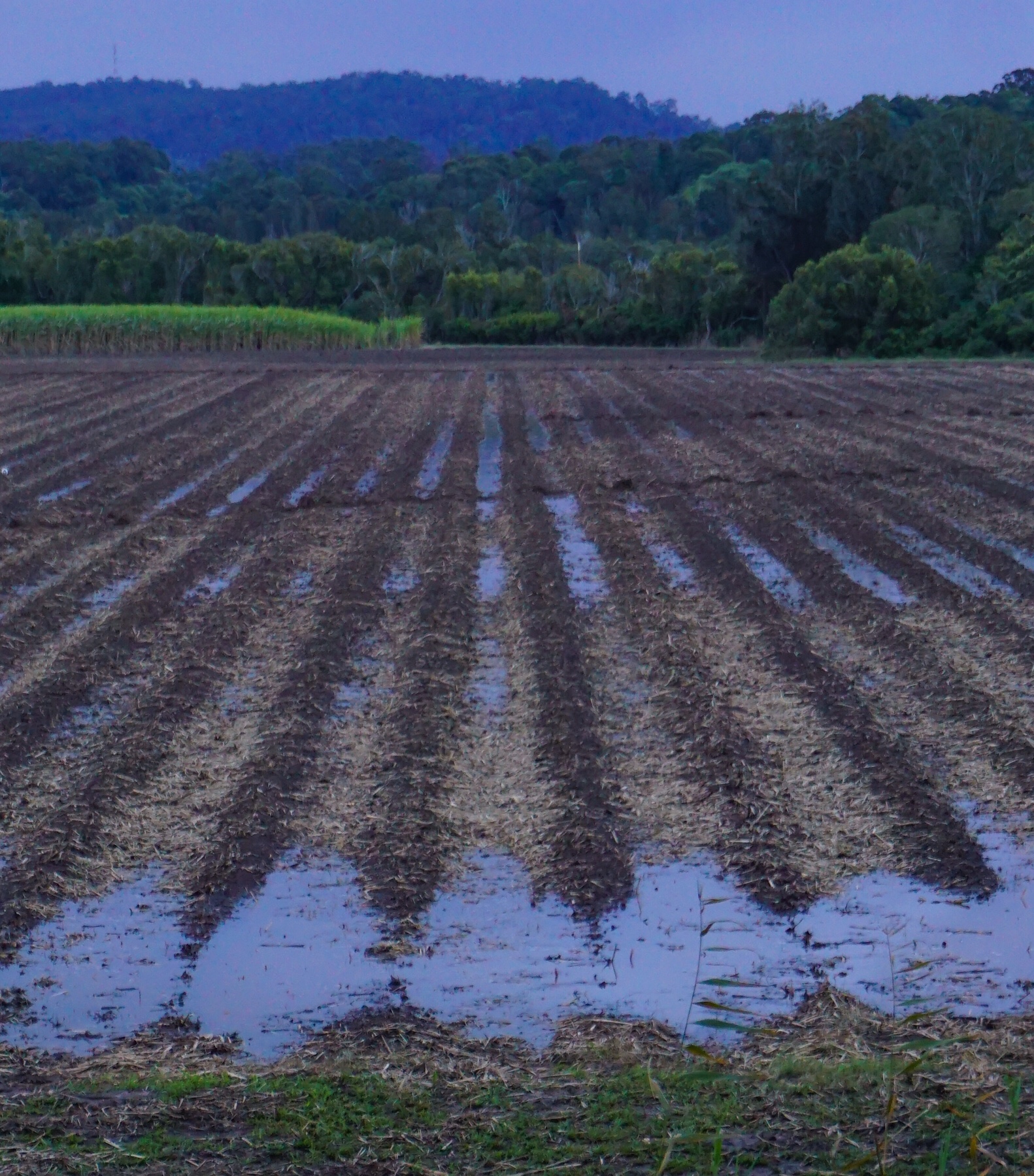
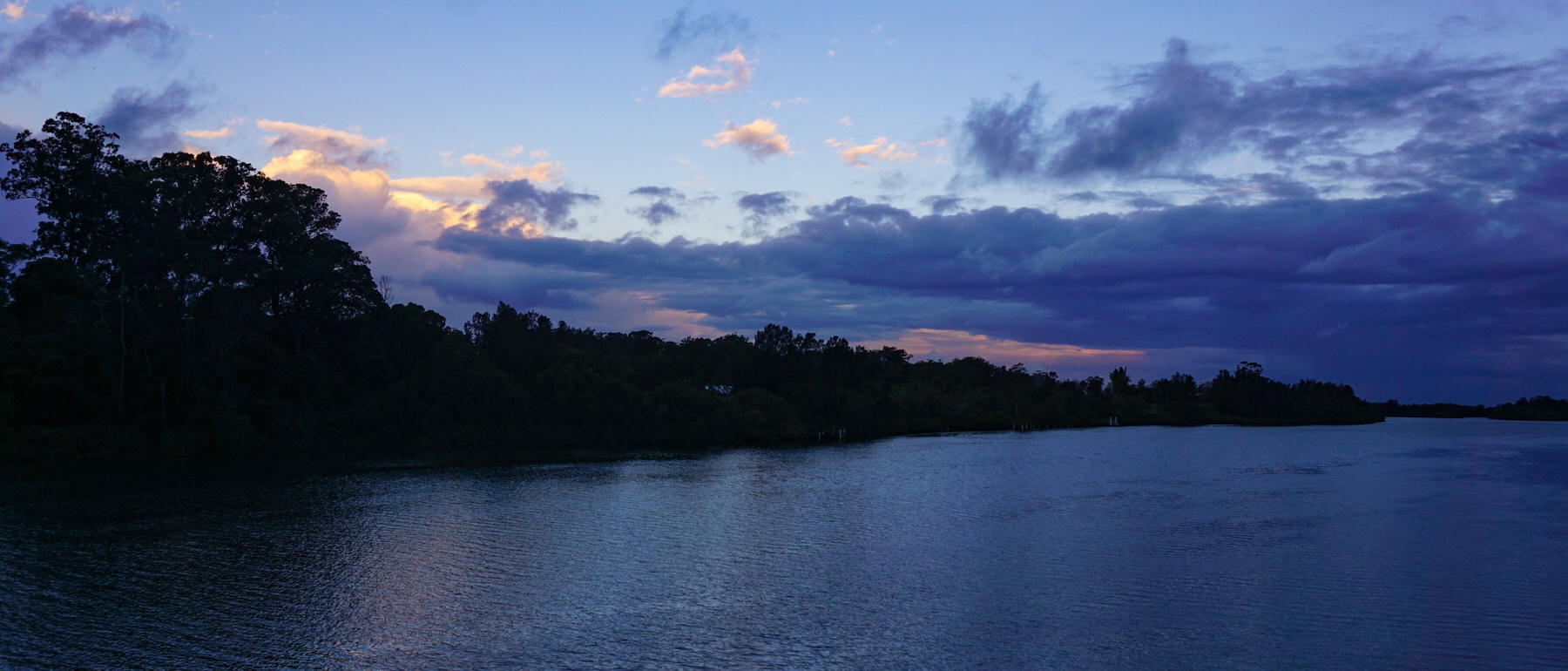 More rain and thunder entertained us, a novelty after the dry and drought of the inland areas. Sadly, it seems the rain is sticking to the coast, not helping out the farmers this time.
More rain and thunder entertained us, a novelty after the dry and drought of the inland areas. Sadly, it seems the rain is sticking to the coast, not helping out the farmers this time.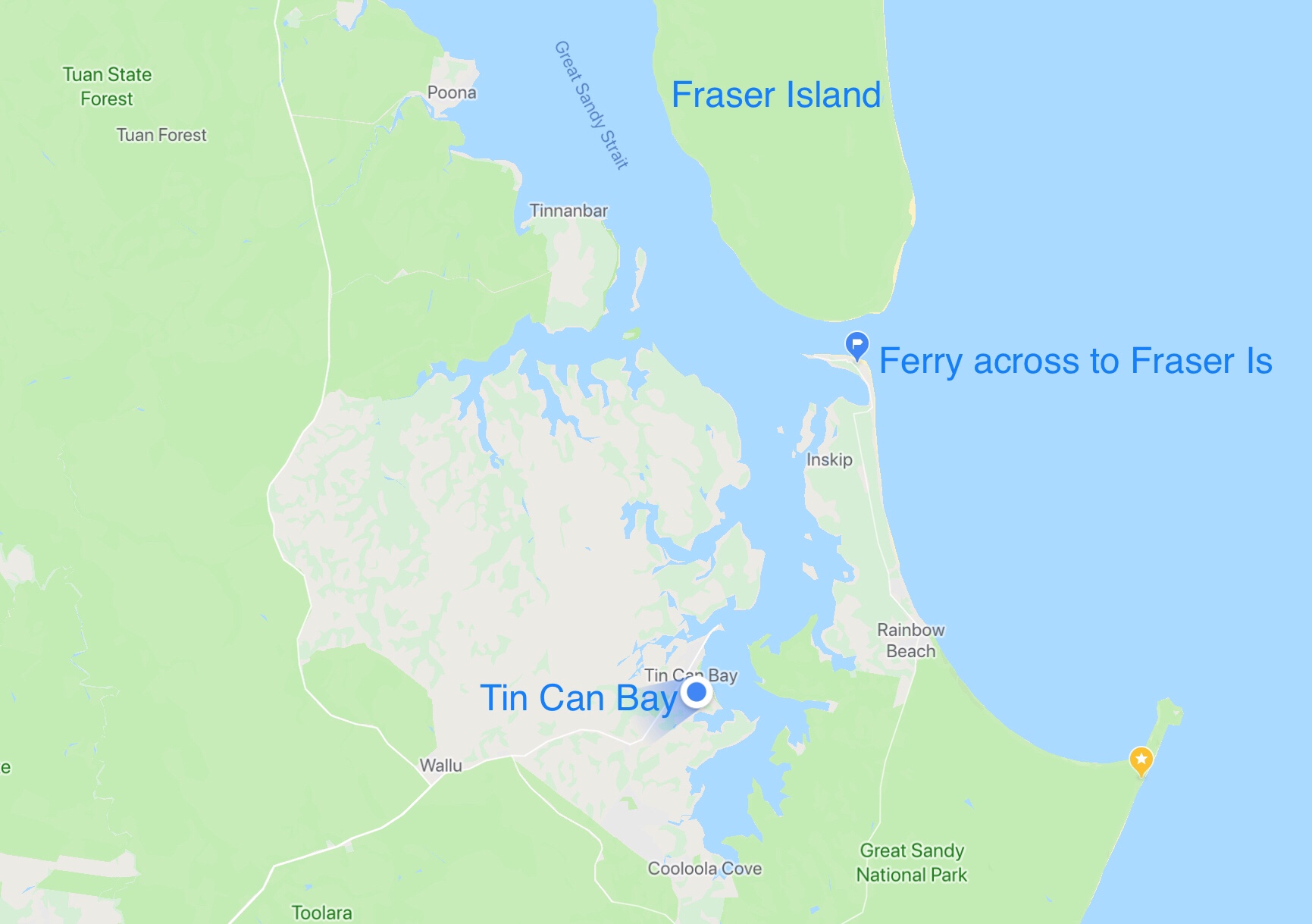
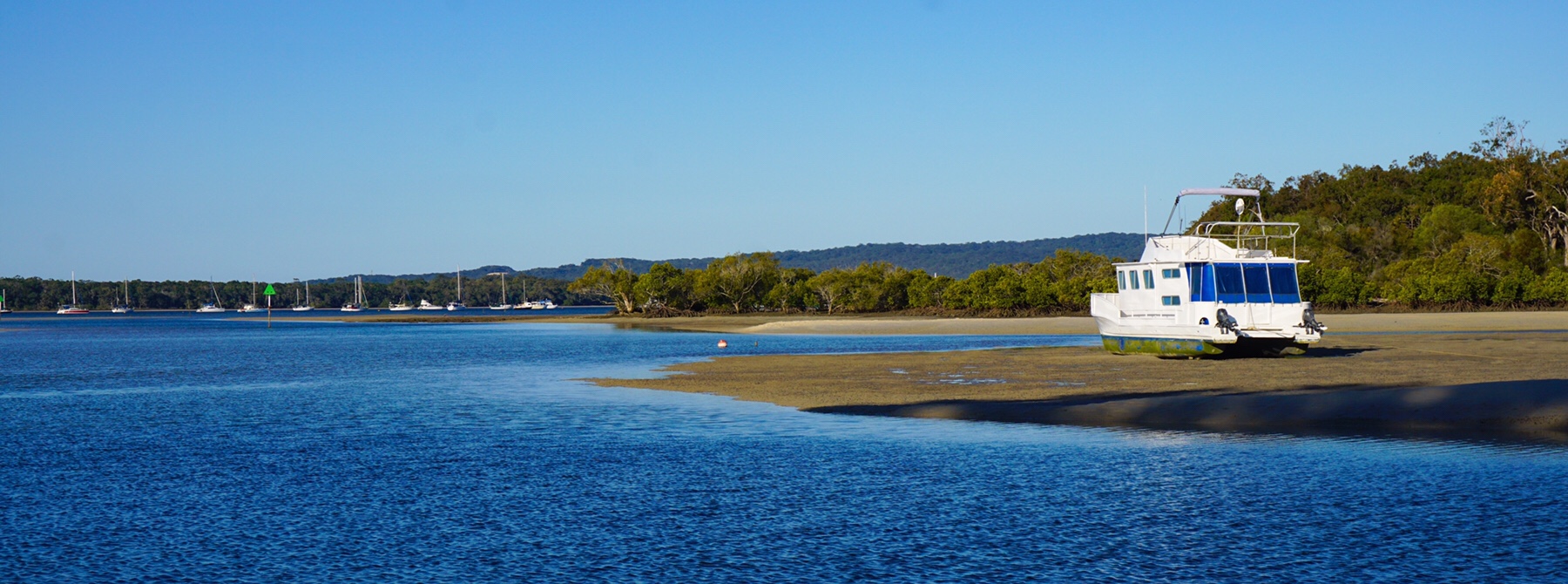
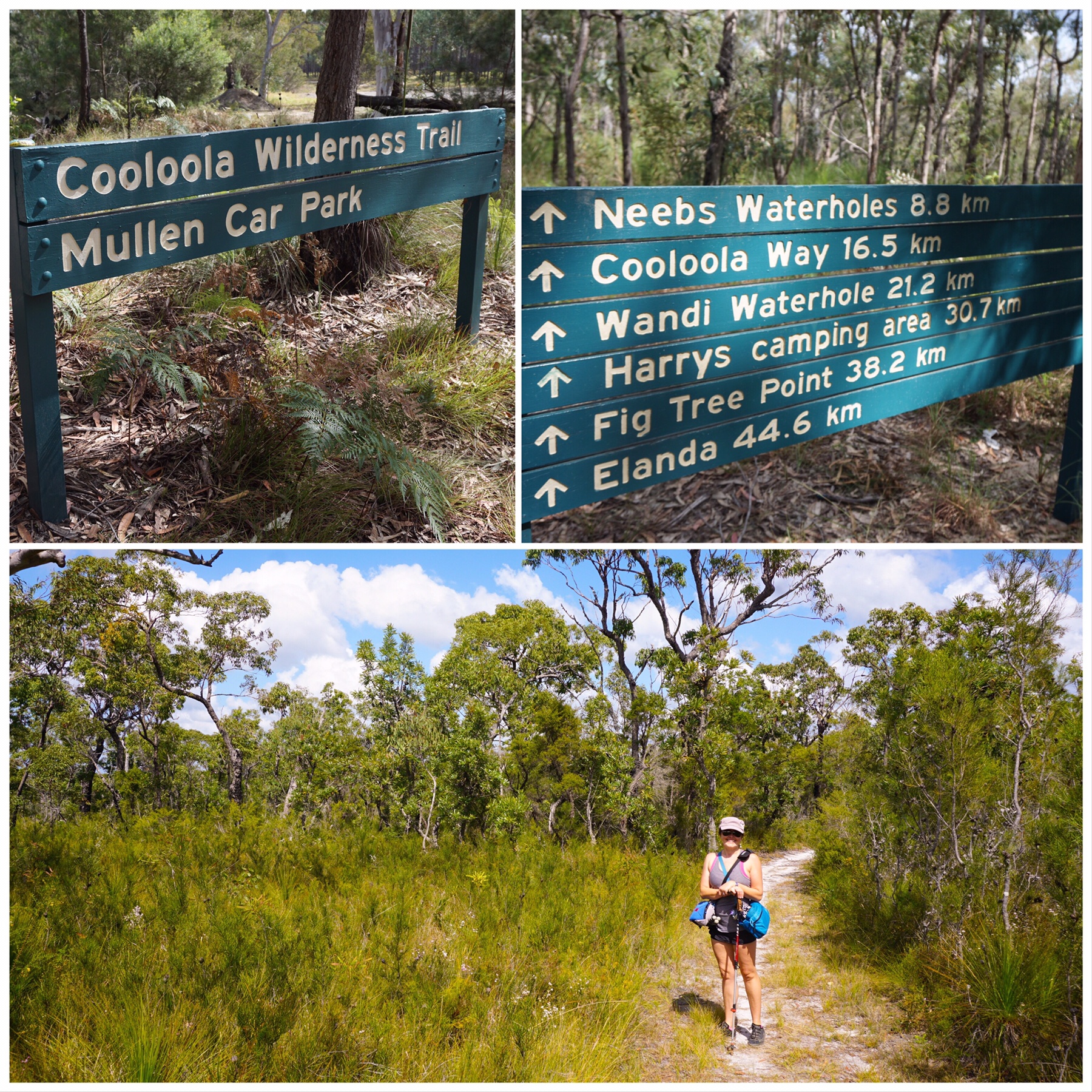 And what a beautiful walk it is. We are days away from the offical start of spring here (1st September) but the wildflowers were out in abundance.
And what a beautiful walk it is. We are days away from the offical start of spring here (1st September) but the wildflowers were out in abundance.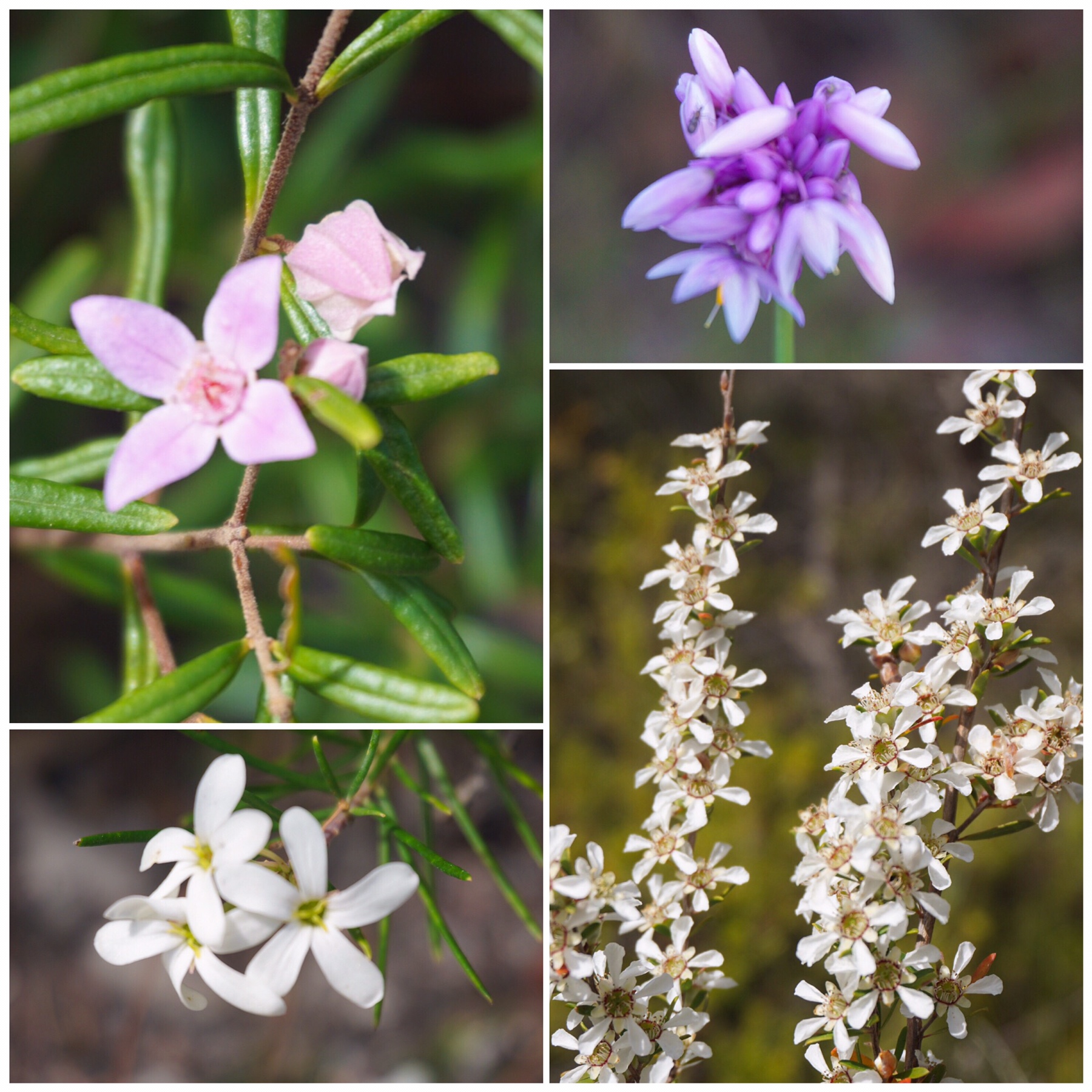 Several varieties of boronia, teatree, bottlebrush, peas, heath, eucalypts and more brightened our pathway, accompanied by the rhythmic hum of insects feeding on the nectar. It really was good for the soul and reminded us how much we love bush walking at this time of year.
Several varieties of boronia, teatree, bottlebrush, peas, heath, eucalypts and more brightened our pathway, accompanied by the rhythmic hum of insects feeding on the nectar. It really was good for the soul and reminded us how much we love bush walking at this time of year.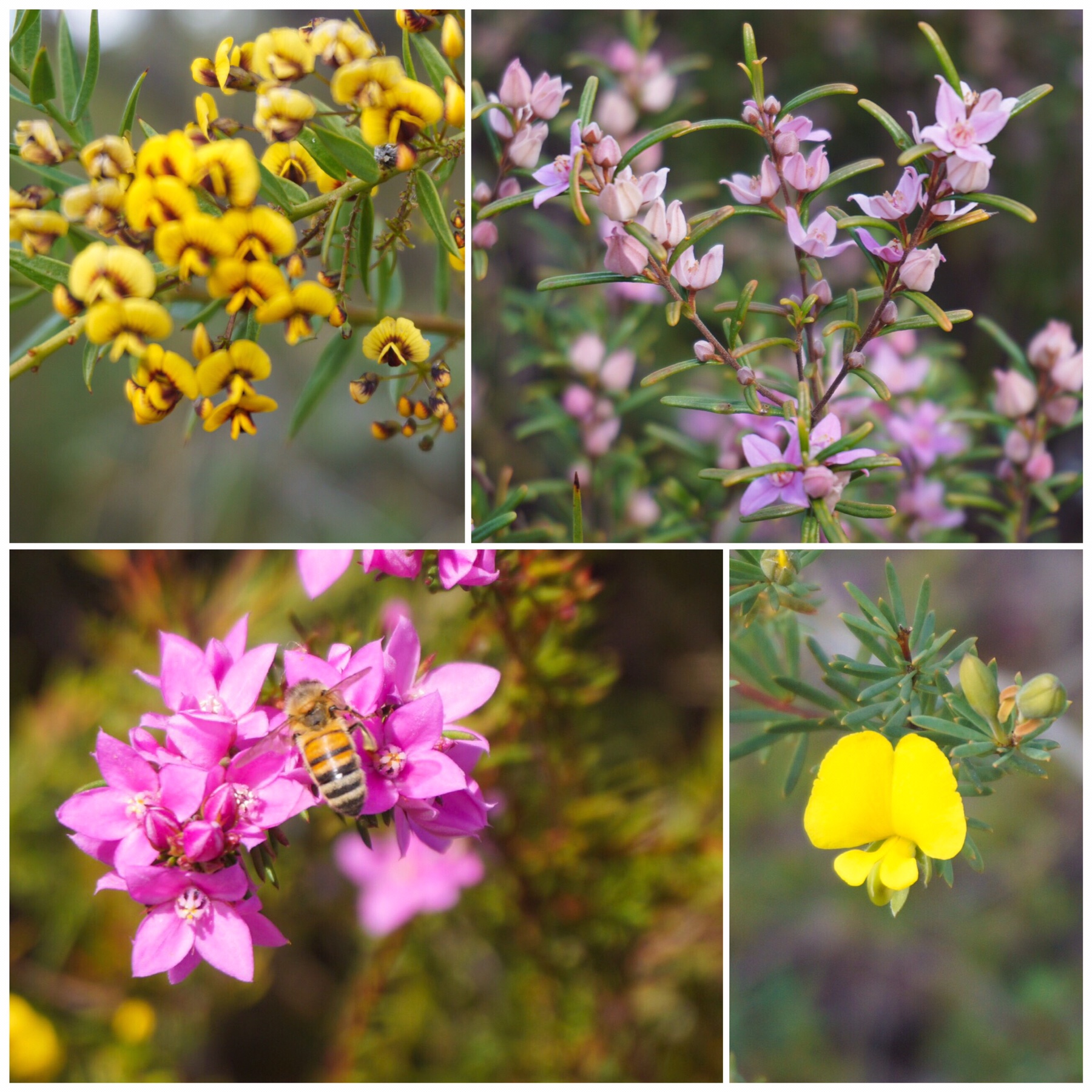
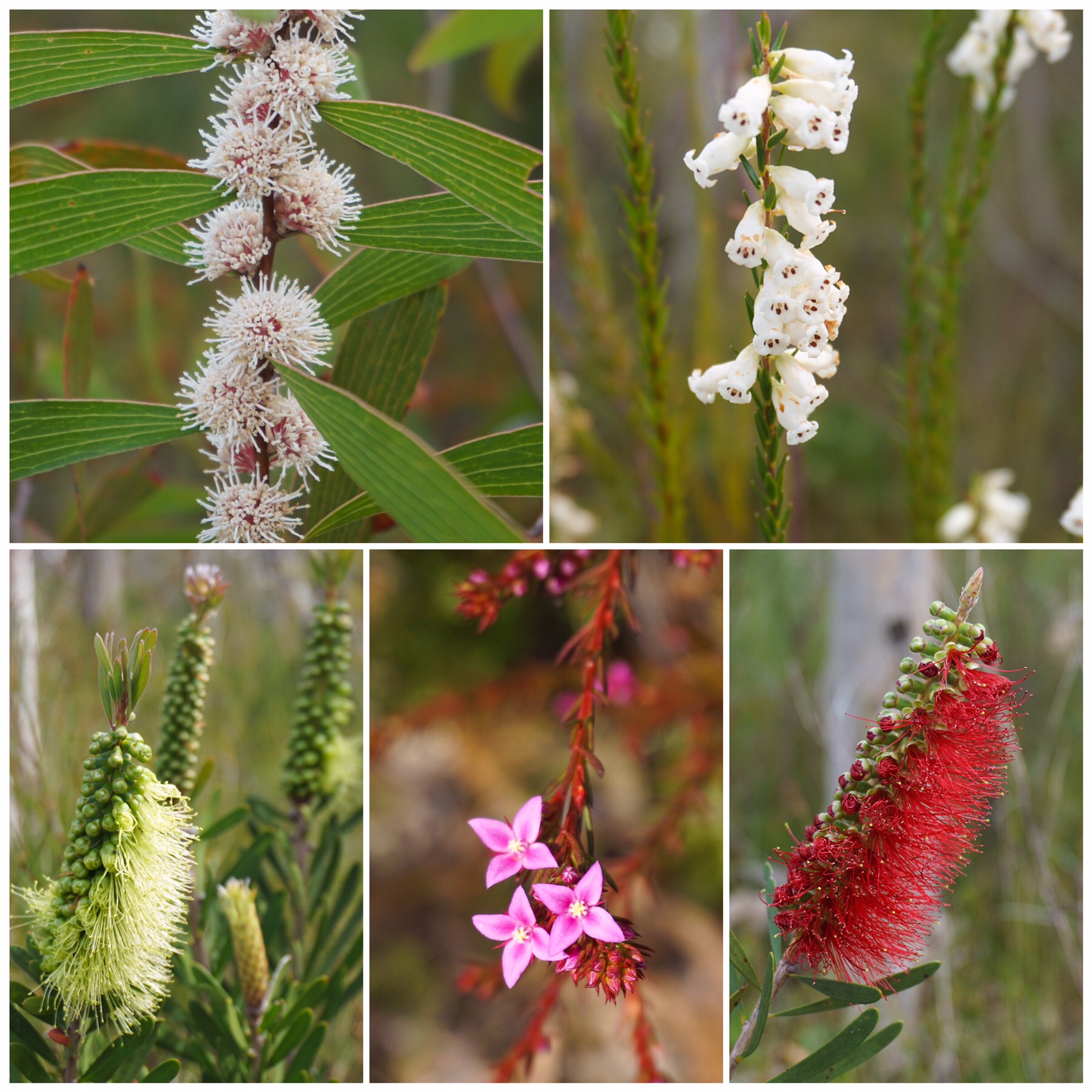 The pathway was well marked and predominantly white sand or grass, very easy walking with a couple of water crossings along the way. The landscape was quite open with good views to the east, across to the Great Sandy National Park.
The pathway was well marked and predominantly white sand or grass, very easy walking with a couple of water crossings along the way. The landscape was quite open with good views to the east, across to the Great Sandy National Park.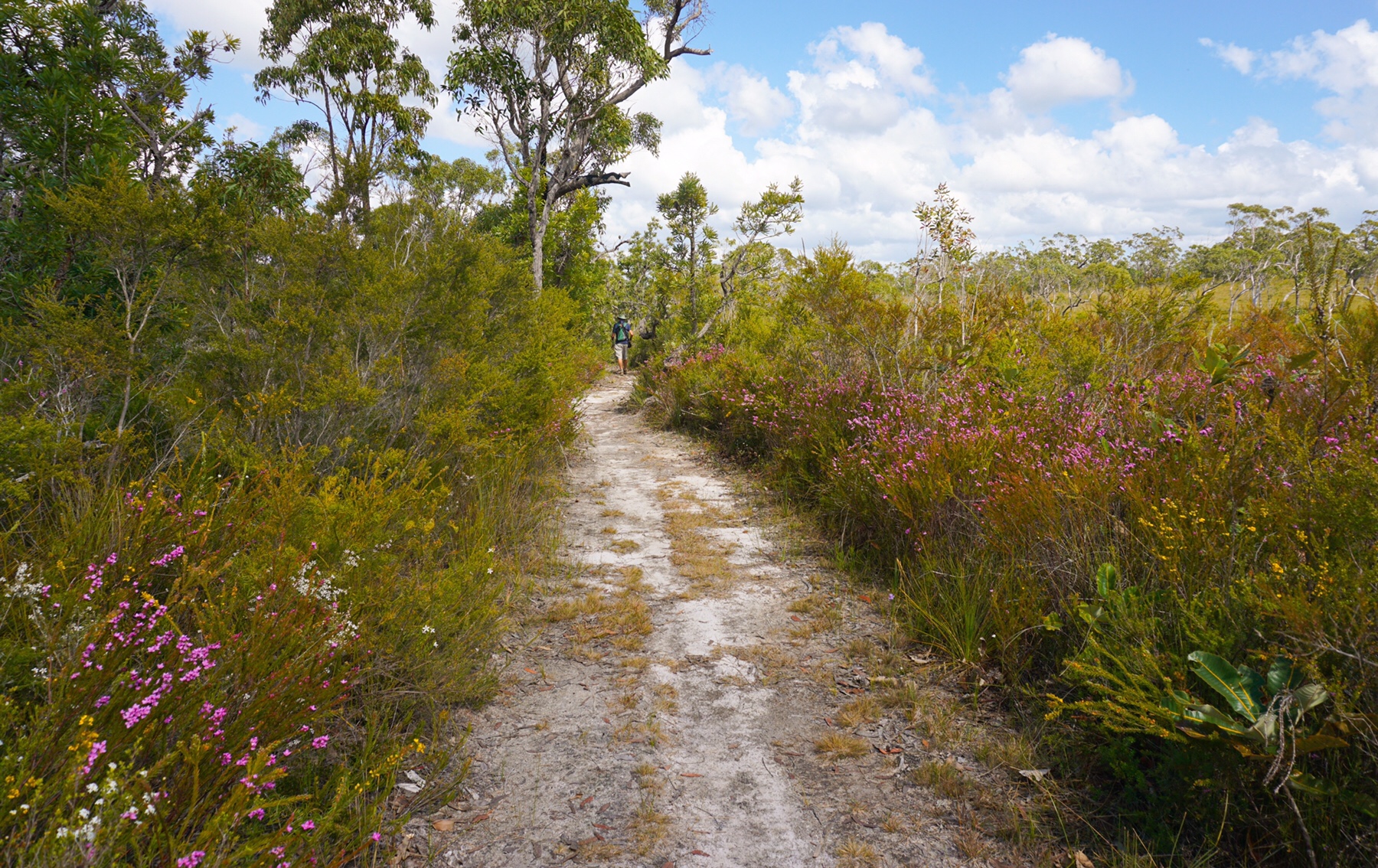
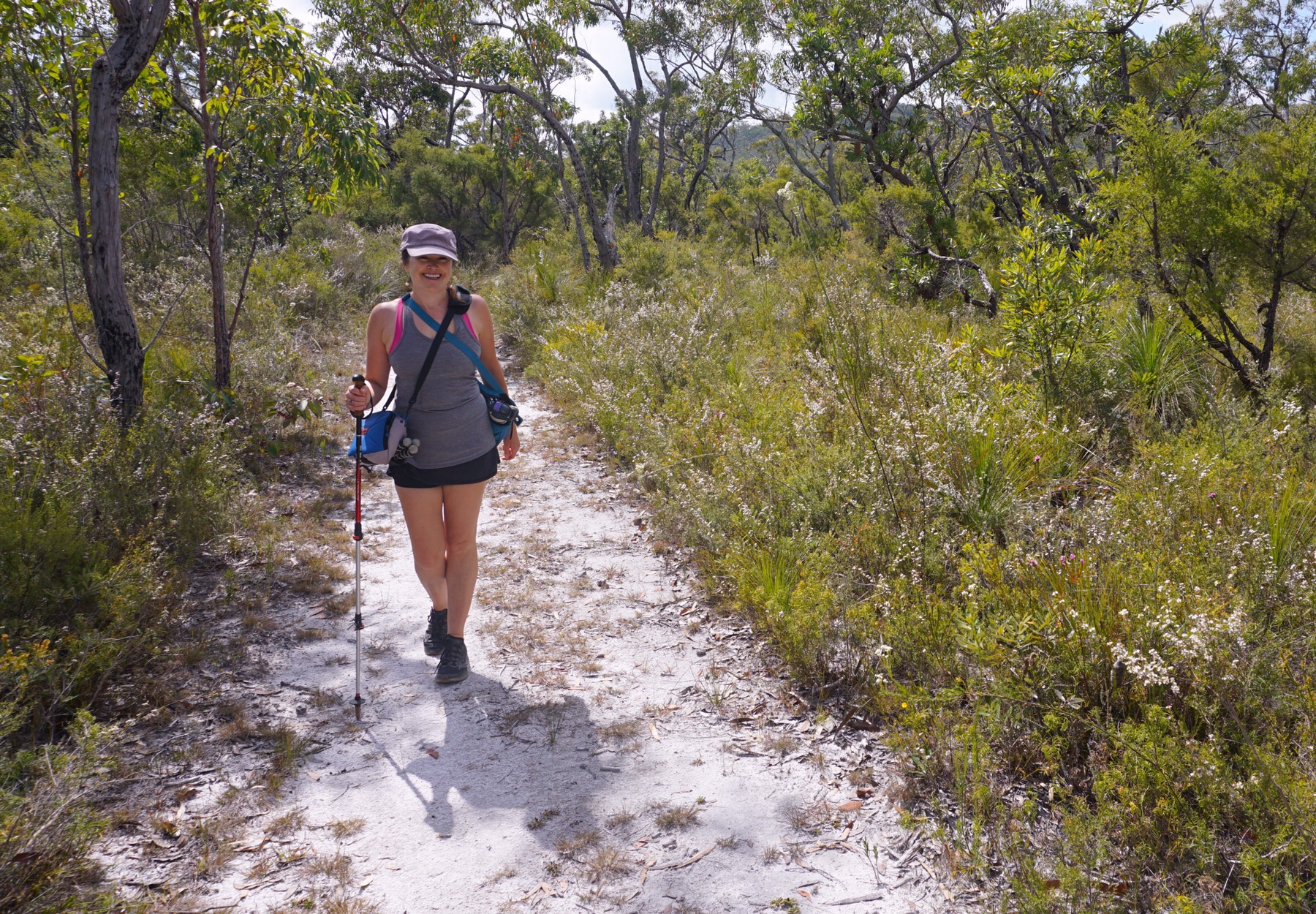

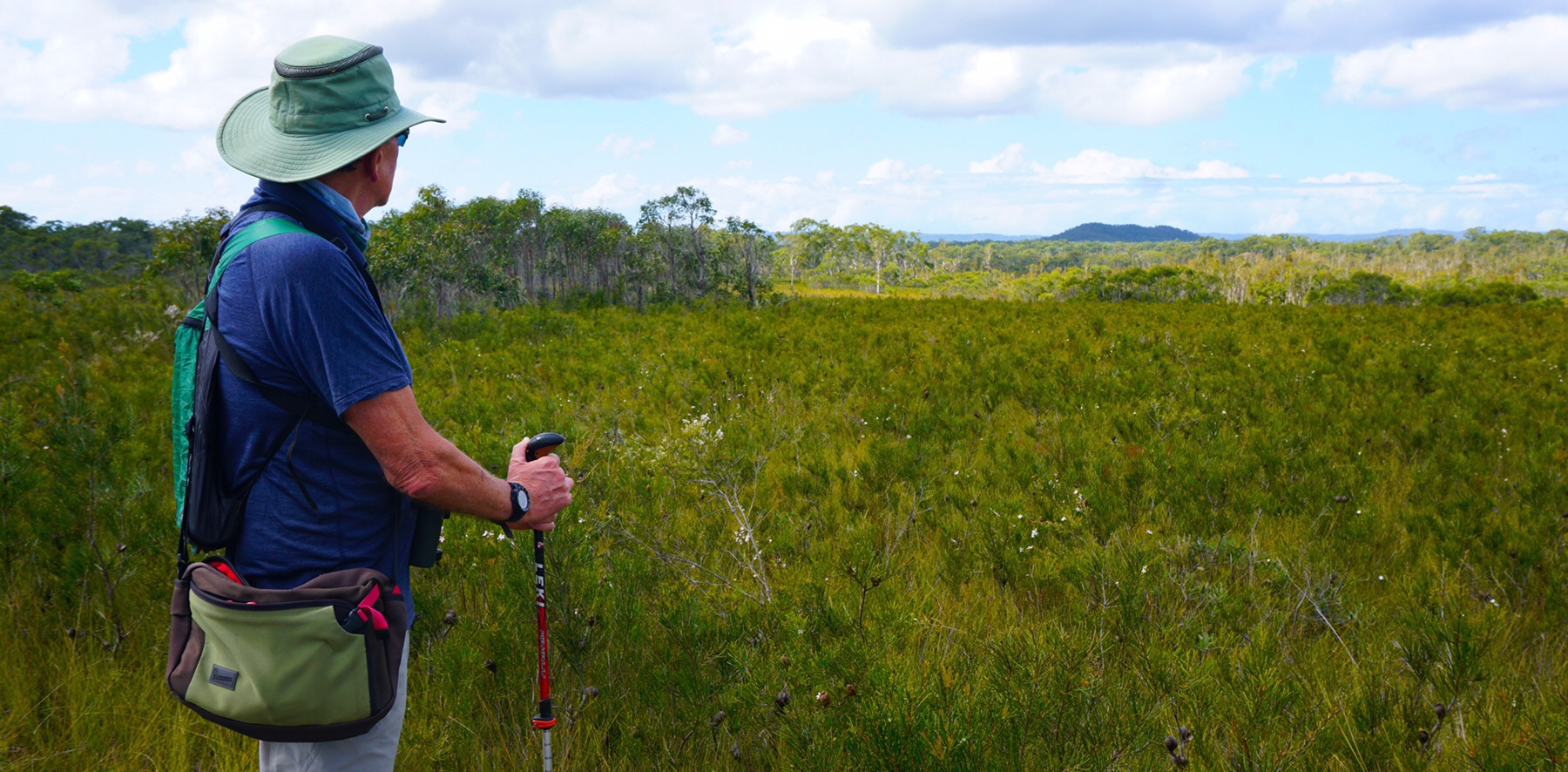
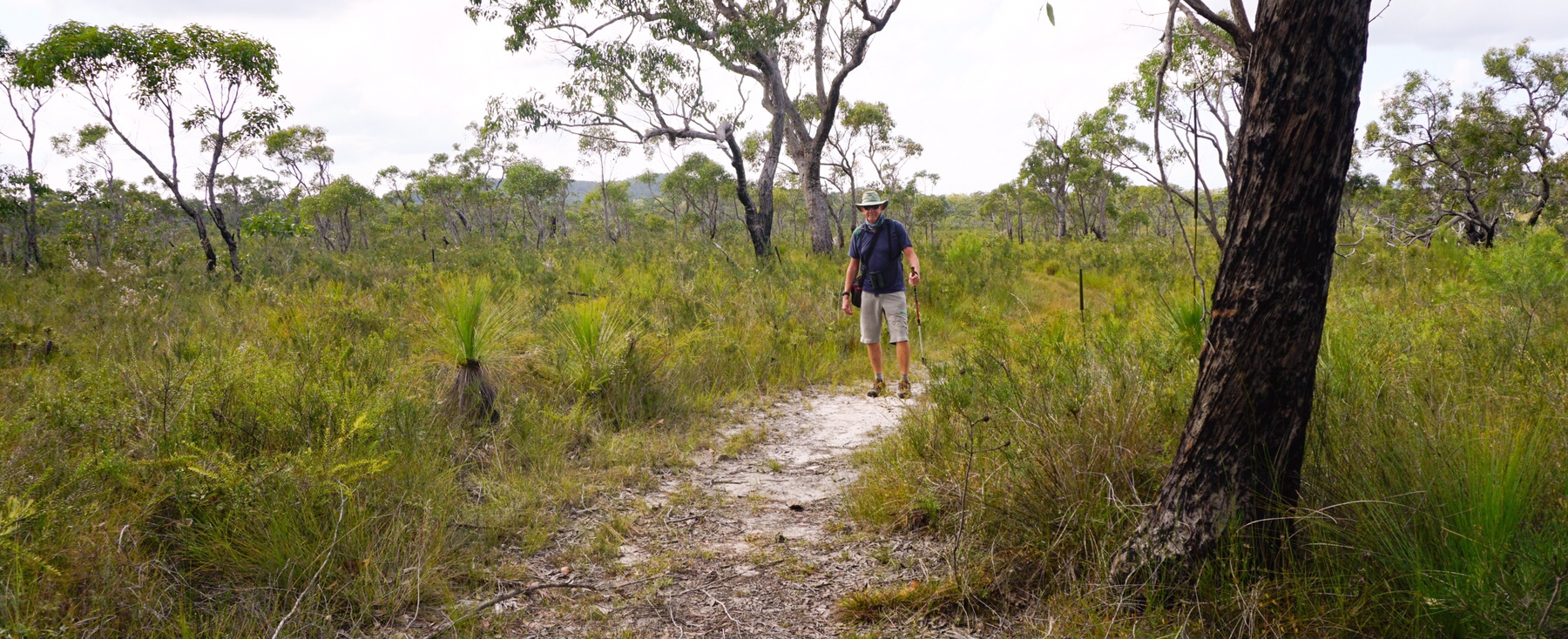 Even the trunks of the gum trees were beautiful!
Even the trunks of the gum trees were beautiful!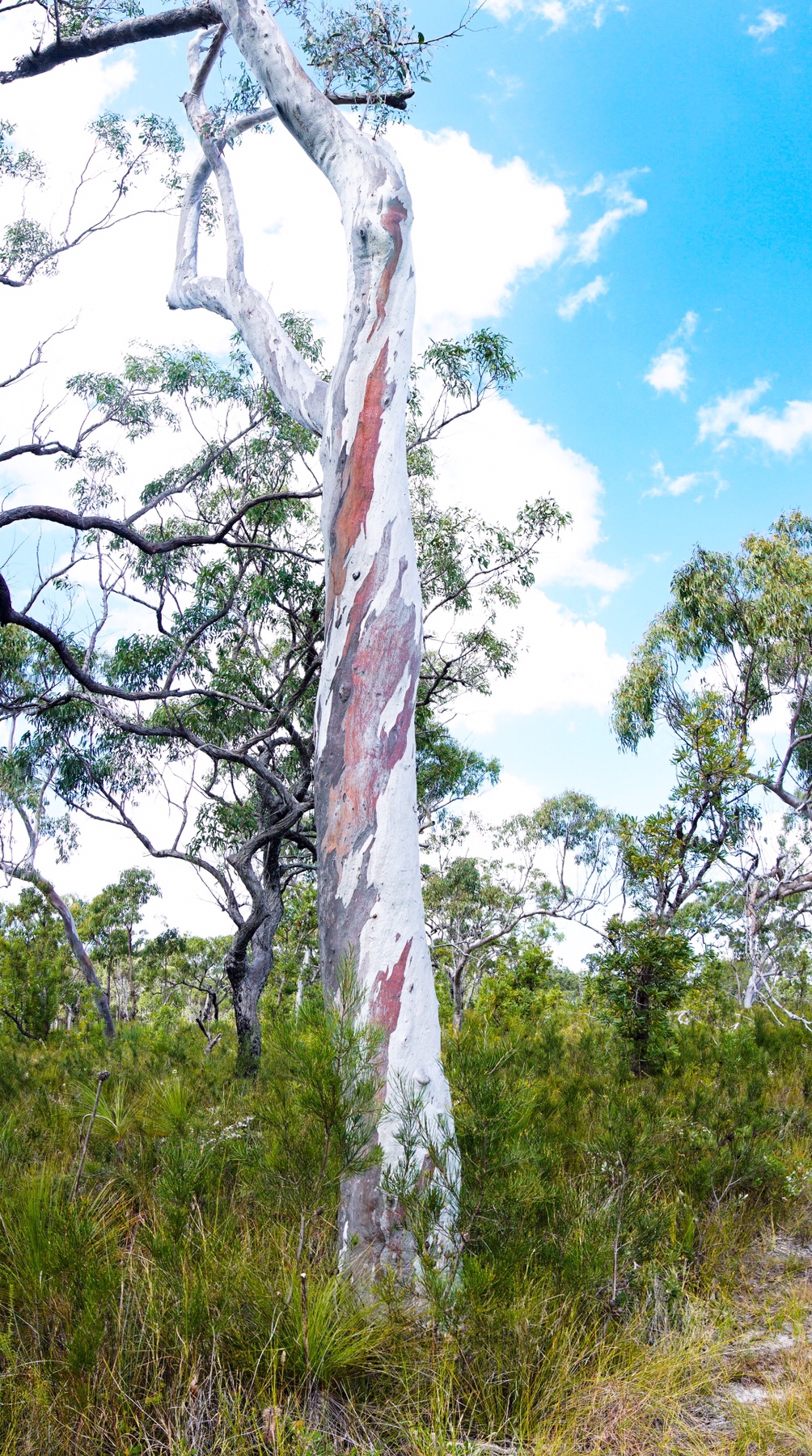
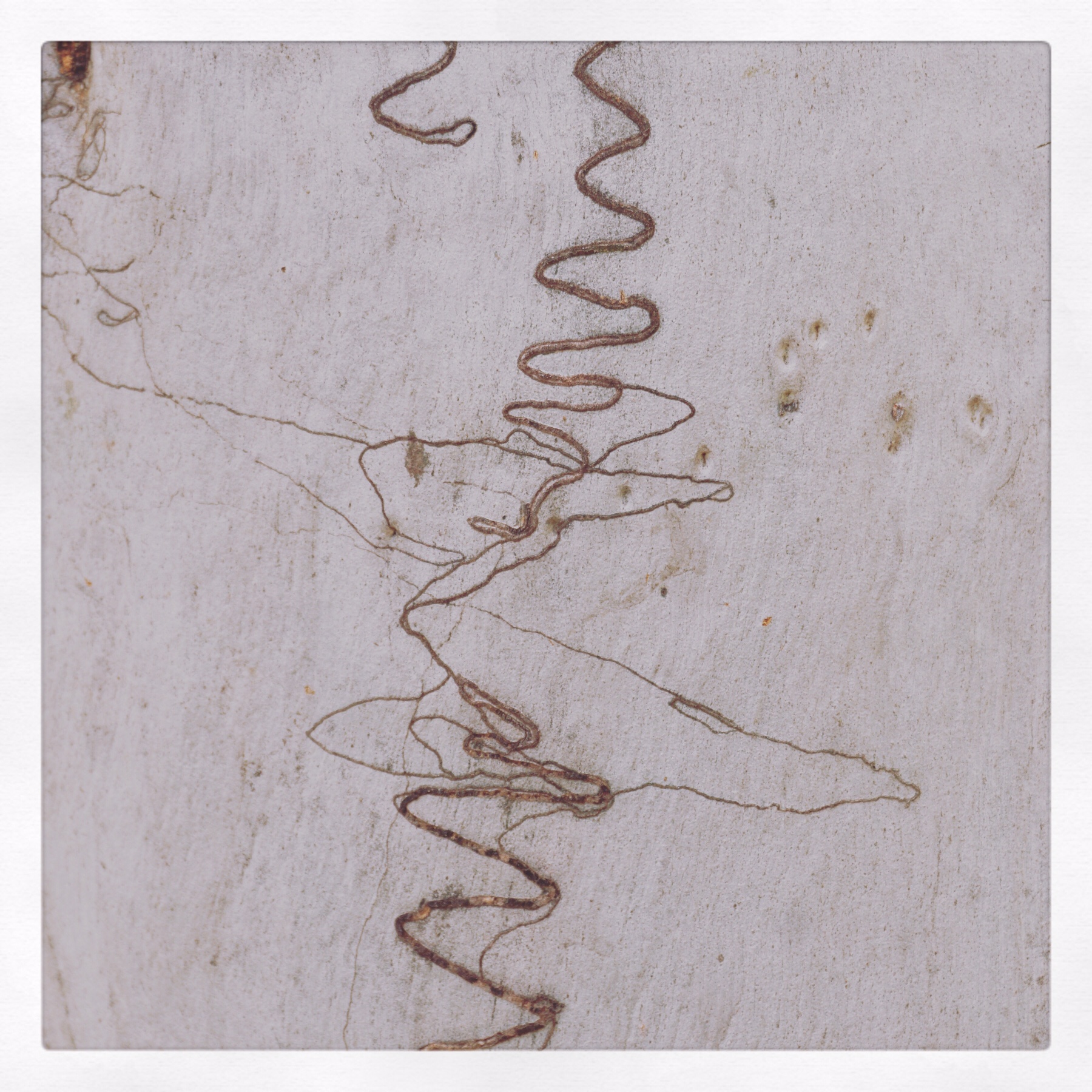 We stopped walking after around 5km when we saw the path dropping steeply downhill, remembering we had to turn around at some point and return via the same route.
We stopped walking after around 5km when we saw the path dropping steeply downhill, remembering we had to turn around at some point and return via the same route.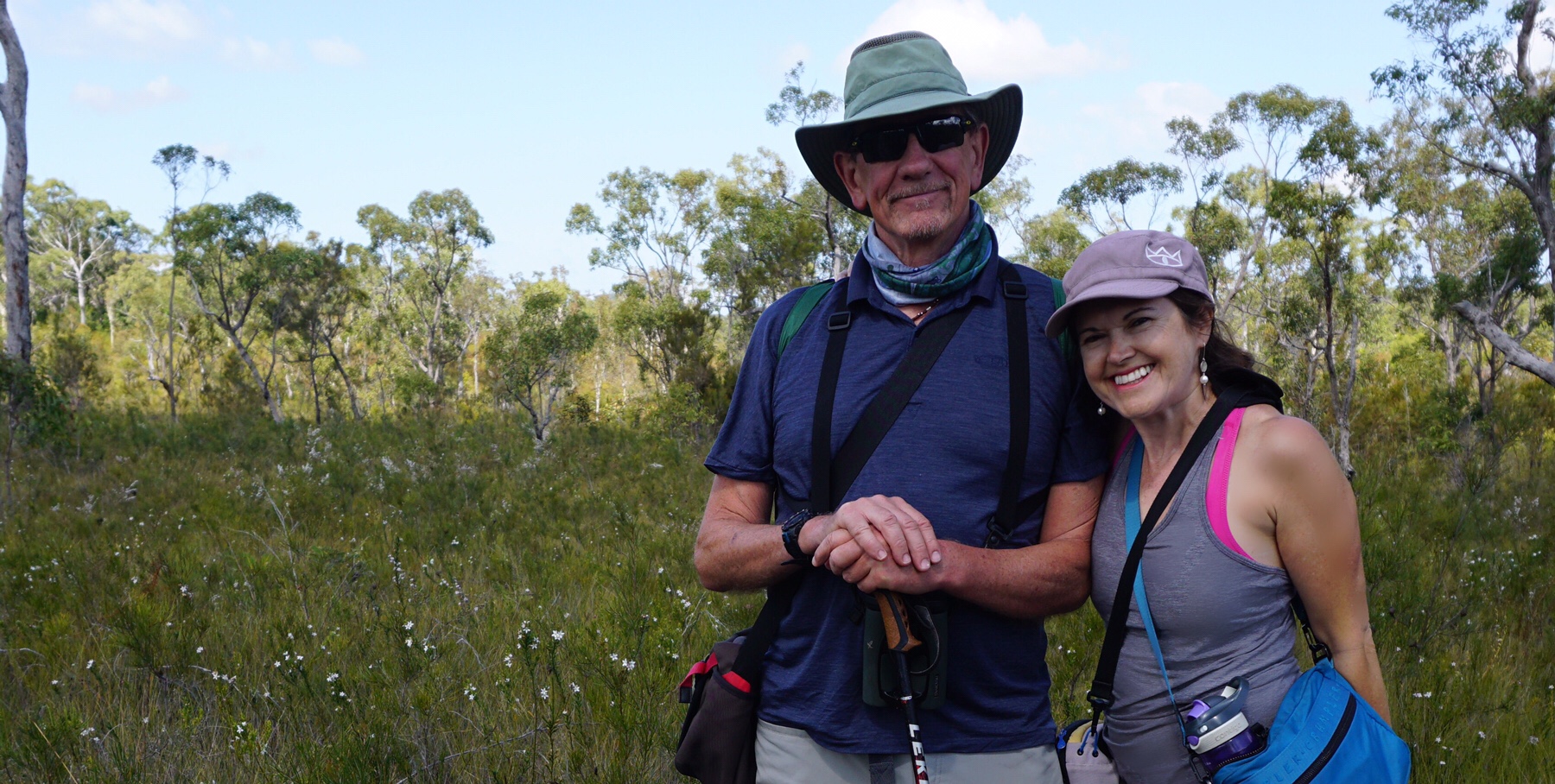 We definitely recommend getting out and enjoying the Australian bush at this time of year.
We definitely recommend getting out and enjoying the Australian bush at this time of year.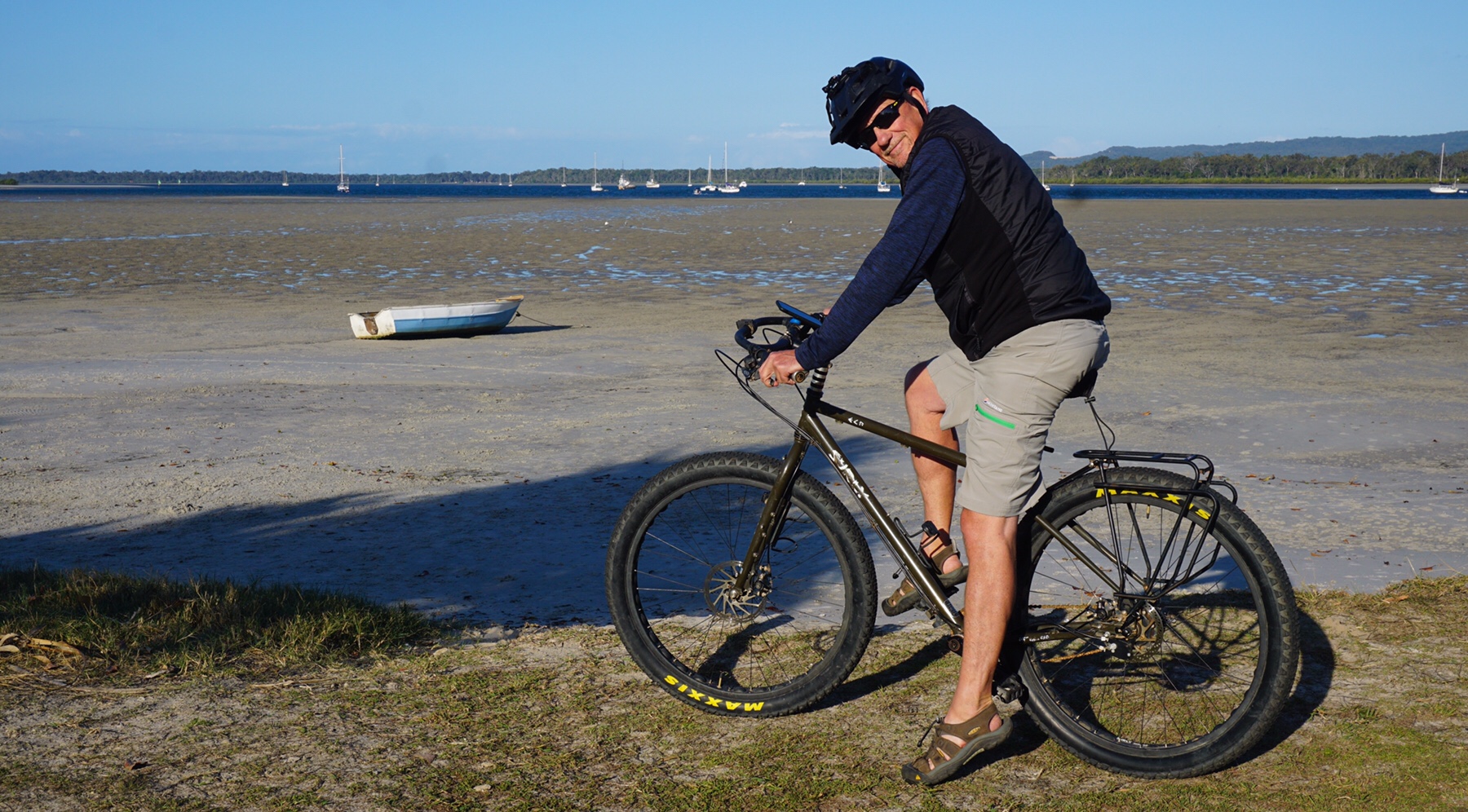
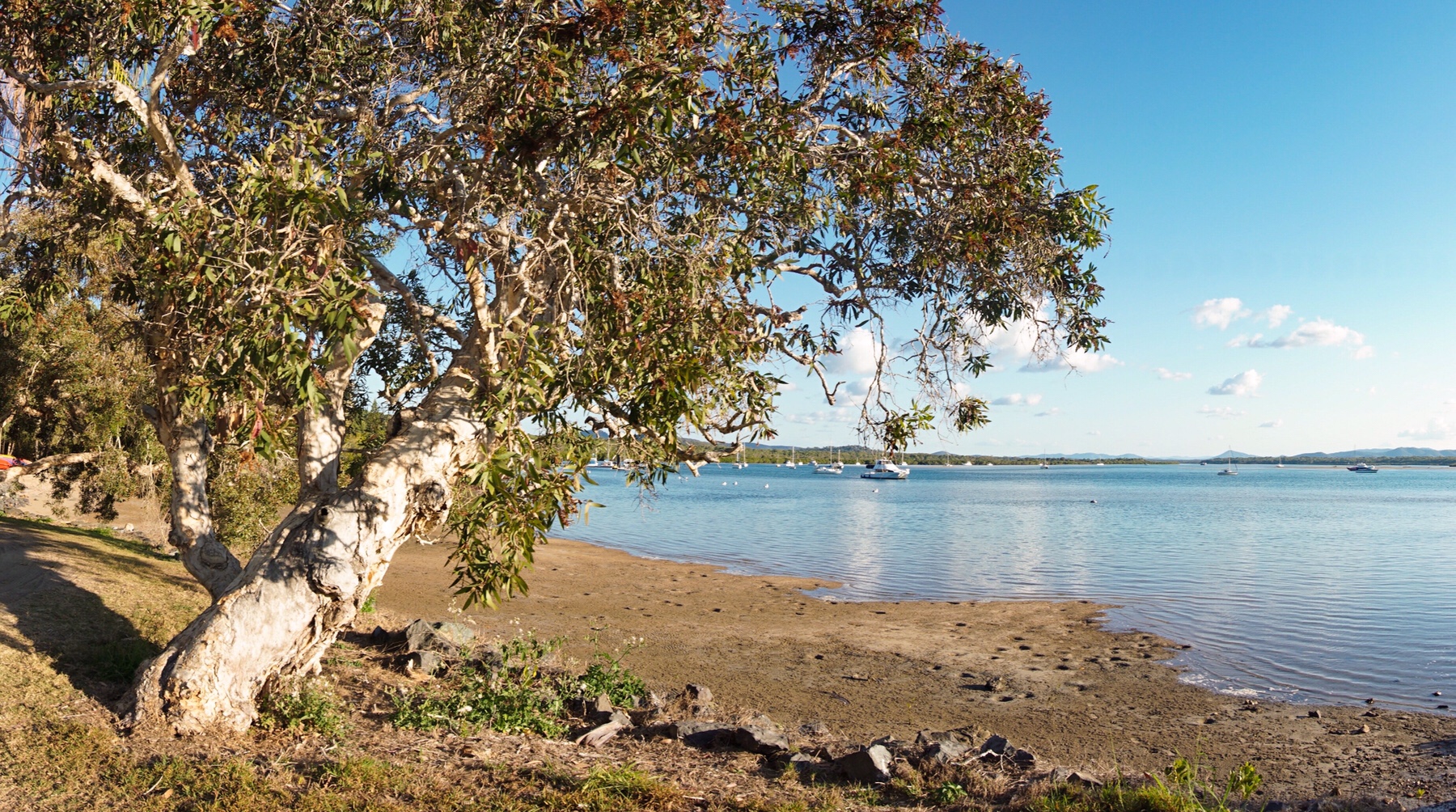 So good to be back by the ocean again, with those lovely smells of the sea air, the calm waters of the Coral Sea exuding a tranquility that we just soaked up, over a cold beer.
So good to be back by the ocean again, with those lovely smells of the sea air, the calm waters of the Coral Sea exuding a tranquility that we just soaked up, over a cold beer.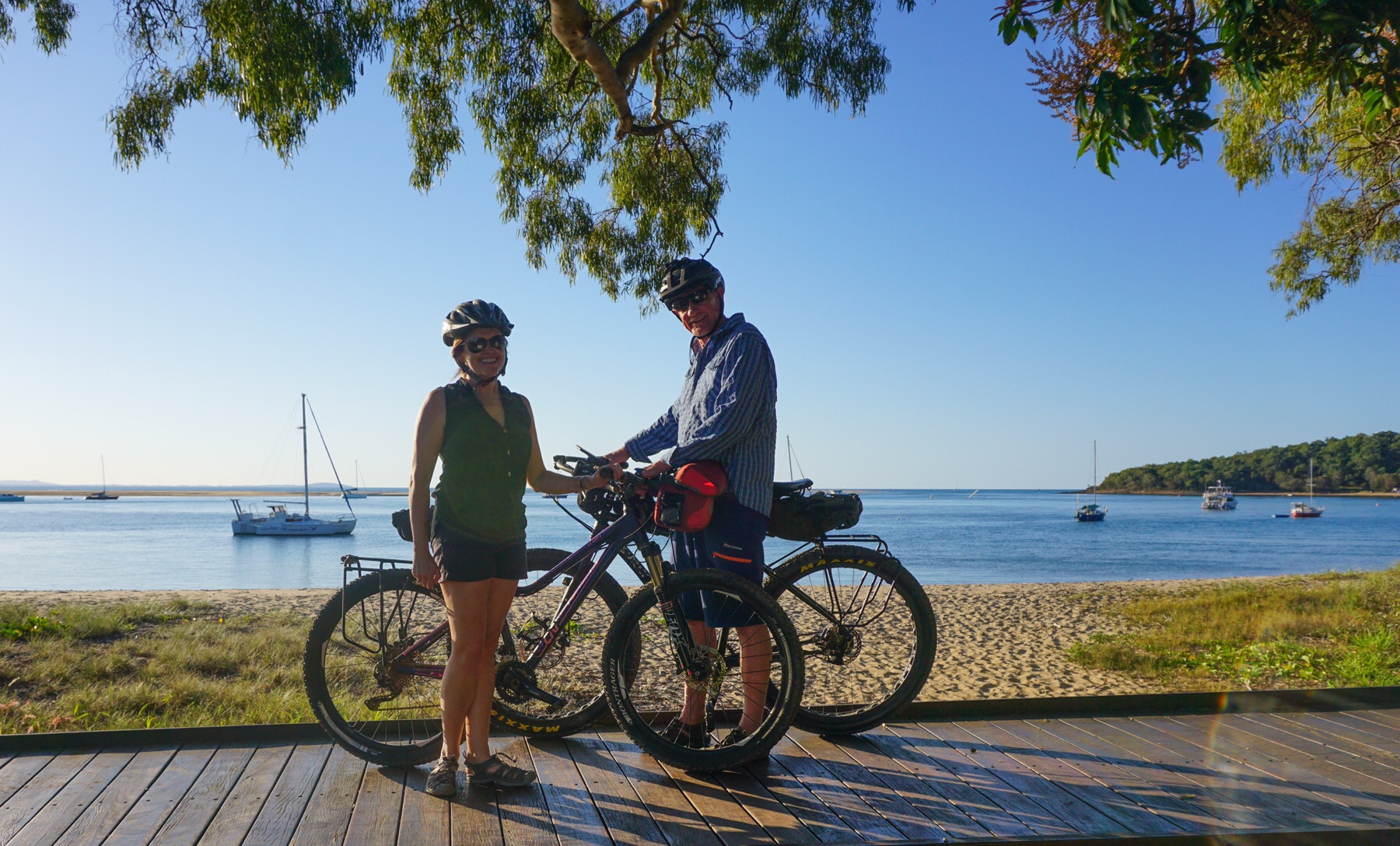
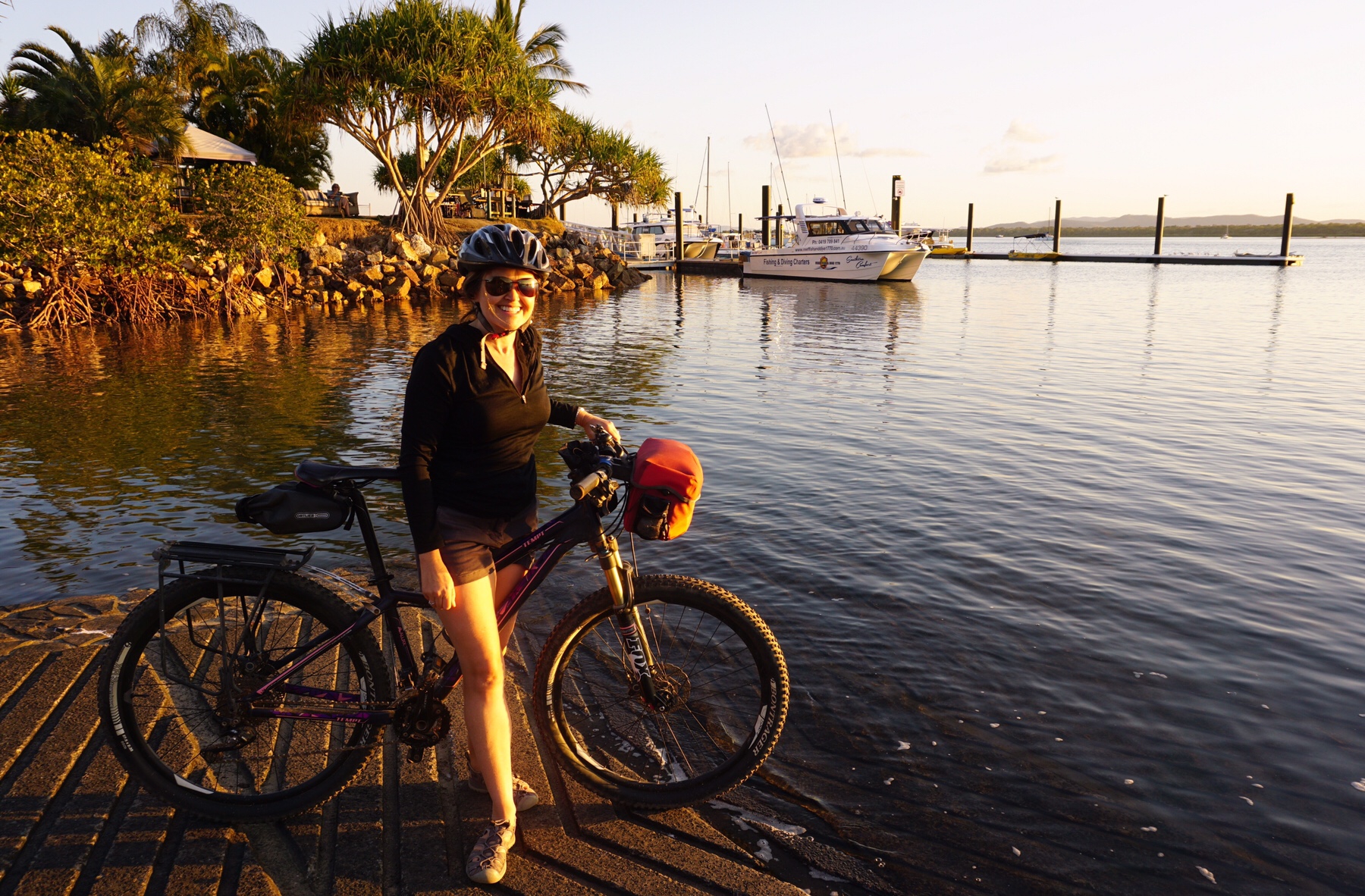
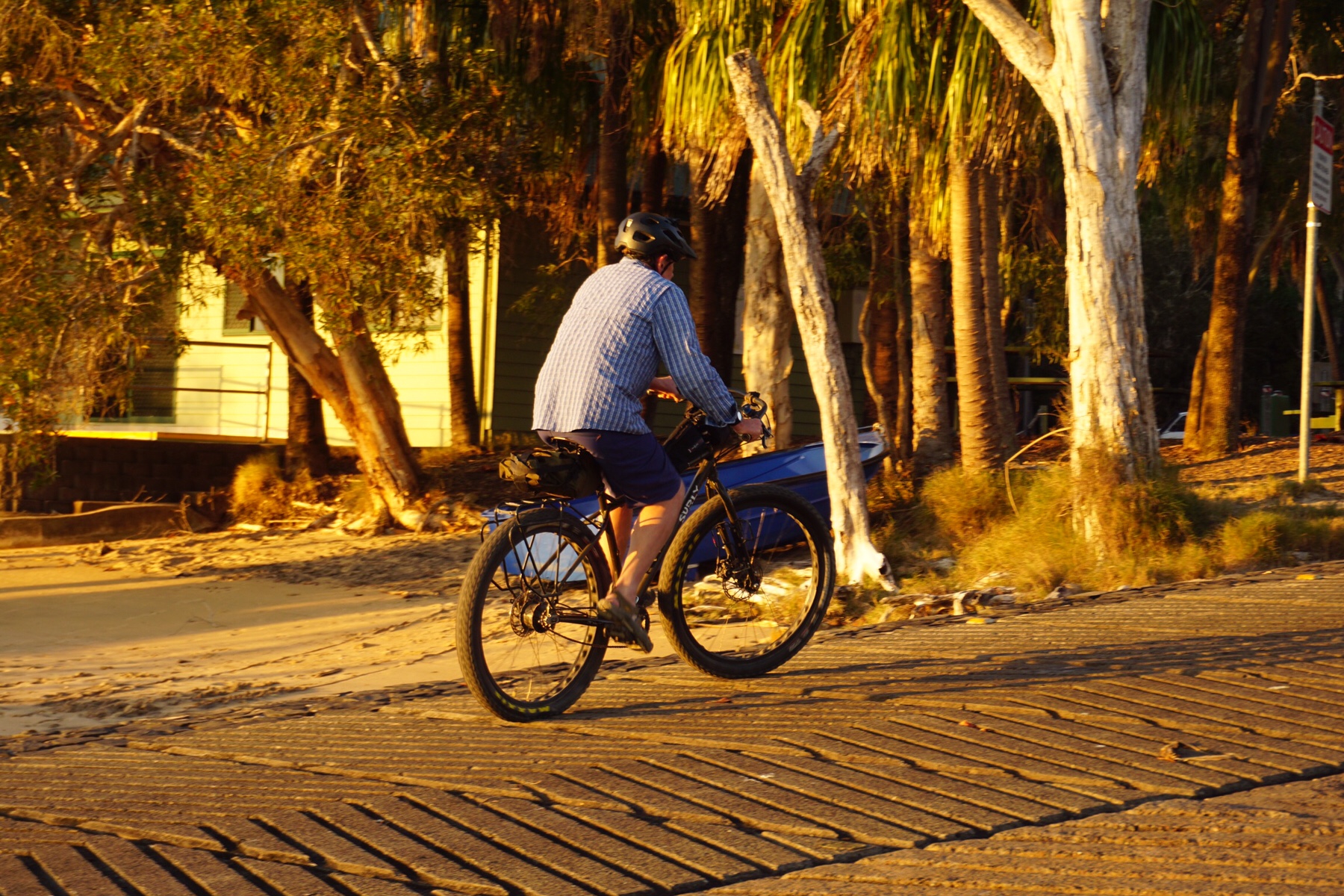 I did smile though on seeing this cafe perched in a car park, next to the road, when the other side of the building was…..
I did smile though on seeing this cafe perched in a car park, next to the road, when the other side of the building was…..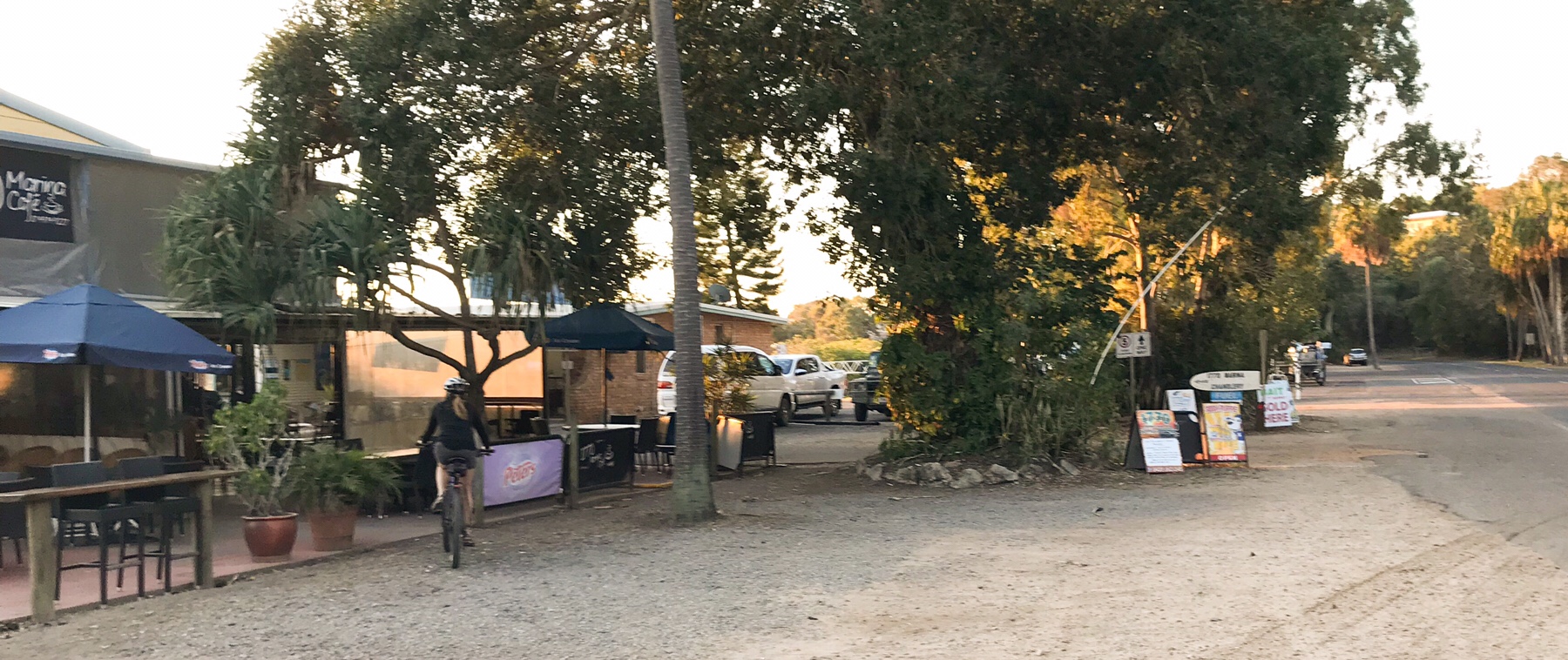 …this view! I don’t think 1770 has quite made it into 2018 – and that’s part of its appeal.
…this view! I don’t think 1770 has quite made it into 2018 – and that’s part of its appeal.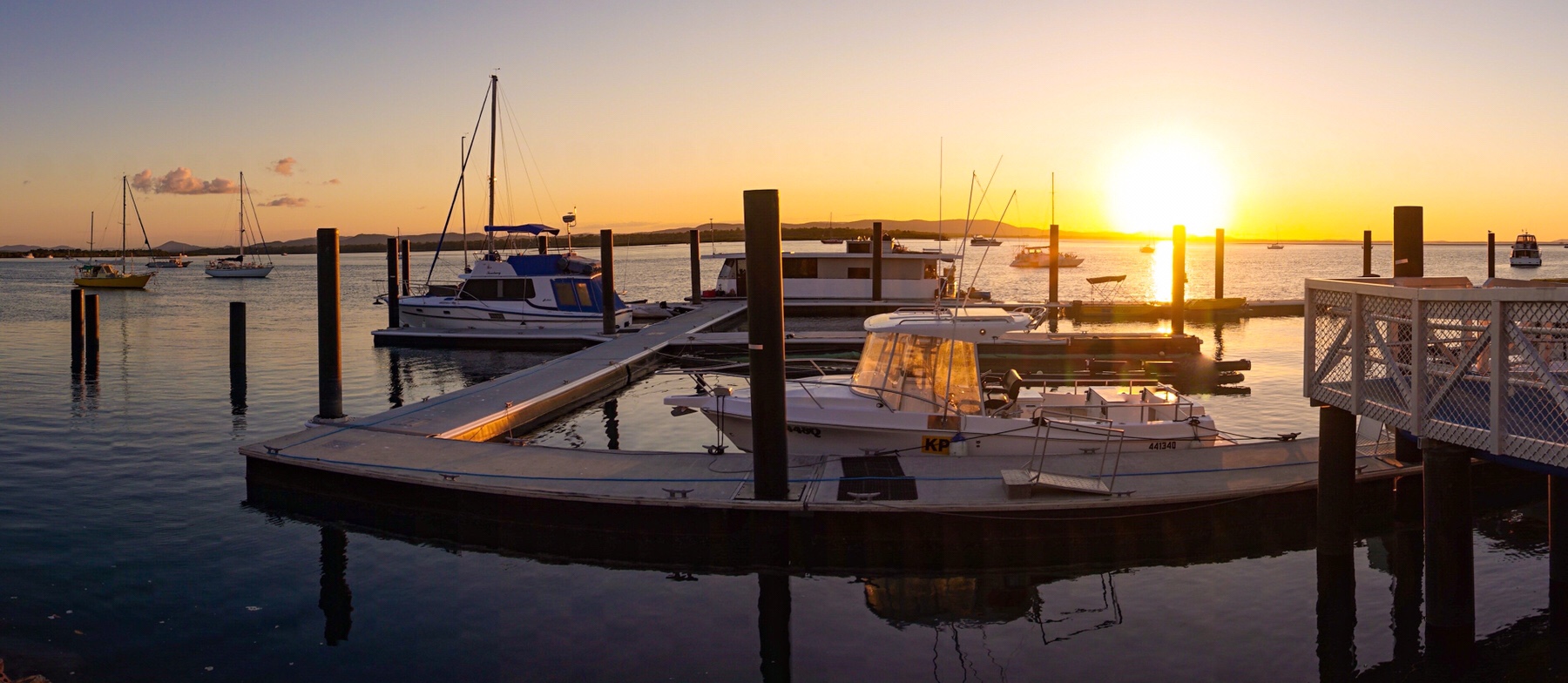
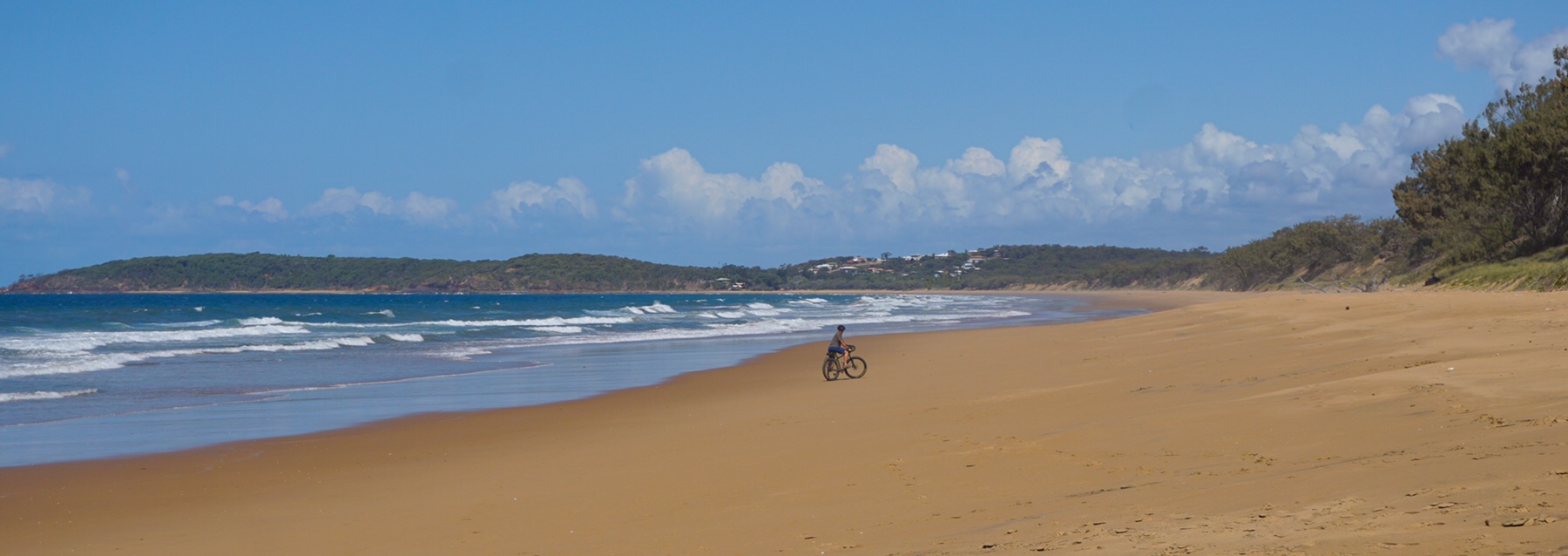
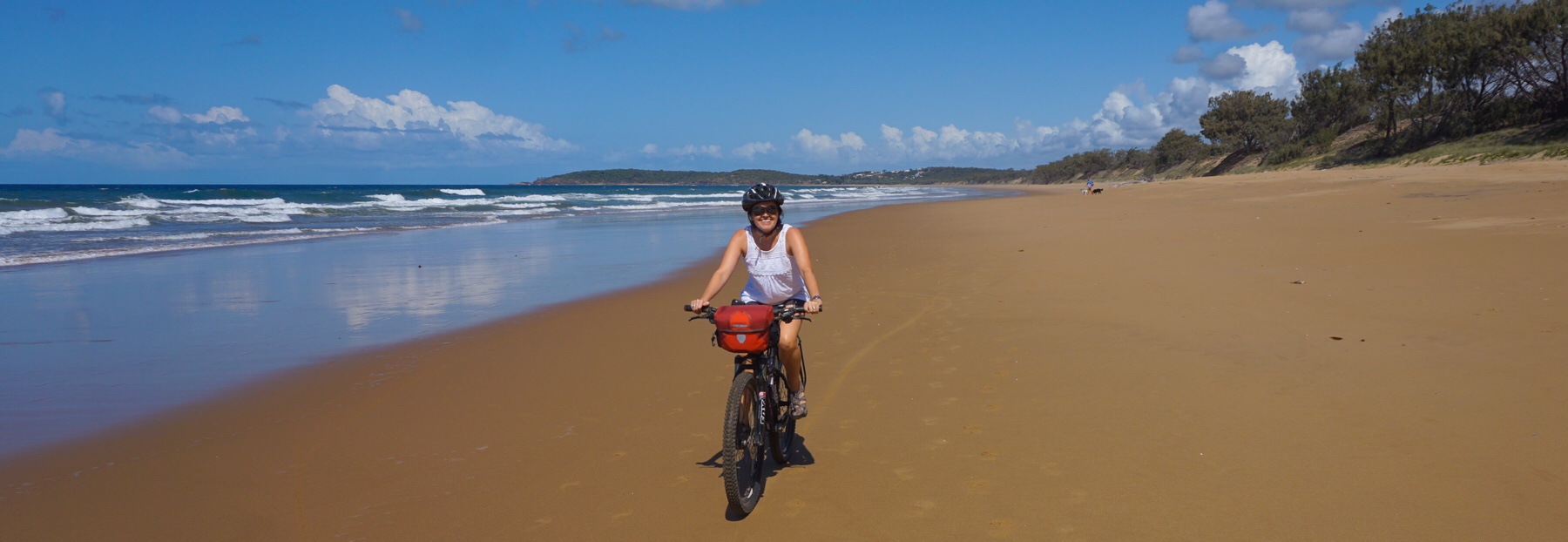 This was a little less sleepy, with a few shops and restaurants, one of which we had been told was going to be offering an Indian focused menu tonight. A booking was made – this little business is clearly making an effort to do something a bit different. A range of speciality teas lined the walls that almost rivalled our selection in the Zone!
This was a little less sleepy, with a few shops and restaurants, one of which we had been told was going to be offering an Indian focused menu tonight. A booking was made – this little business is clearly making an effort to do something a bit different. A range of speciality teas lined the walls that almost rivalled our selection in the Zone!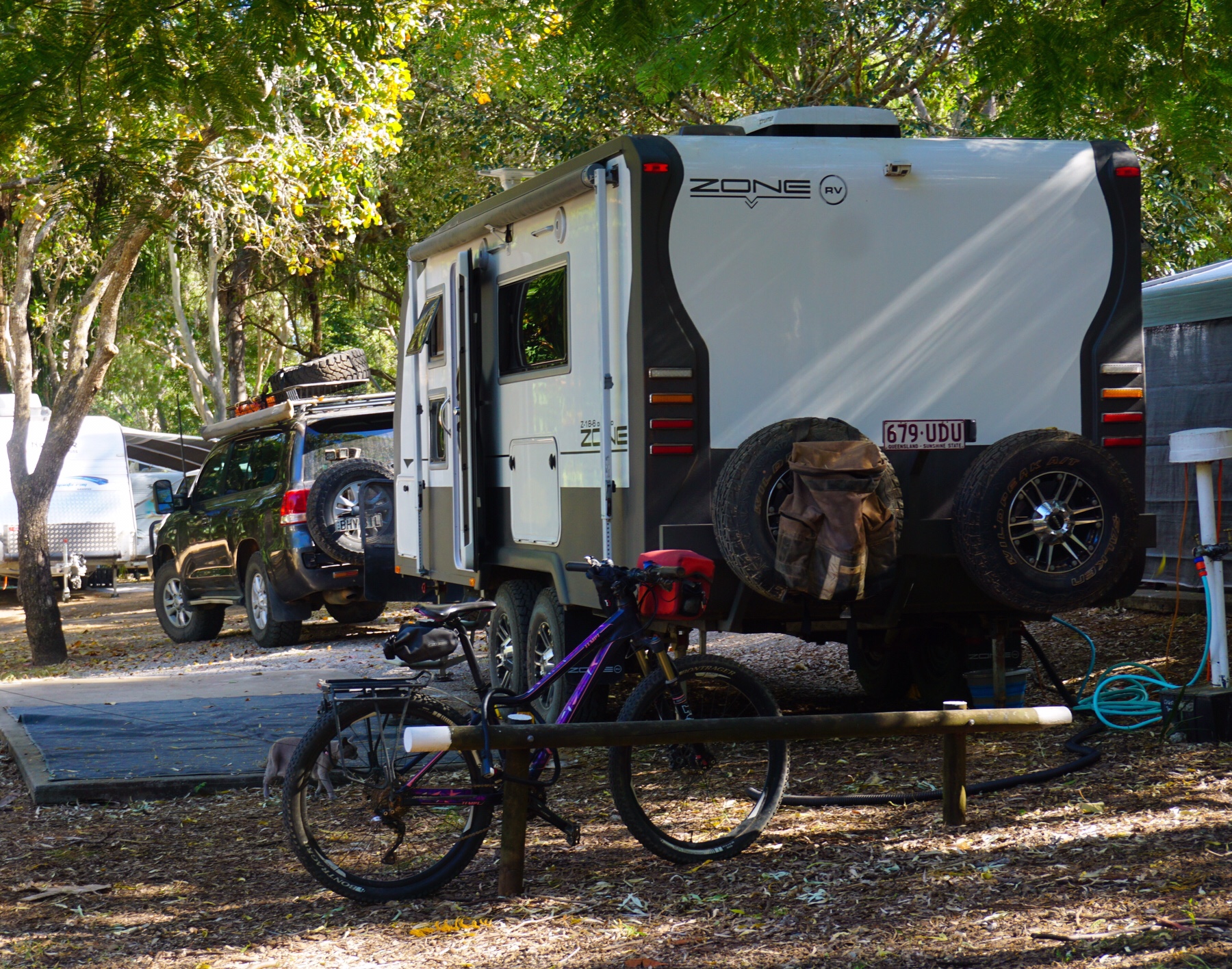
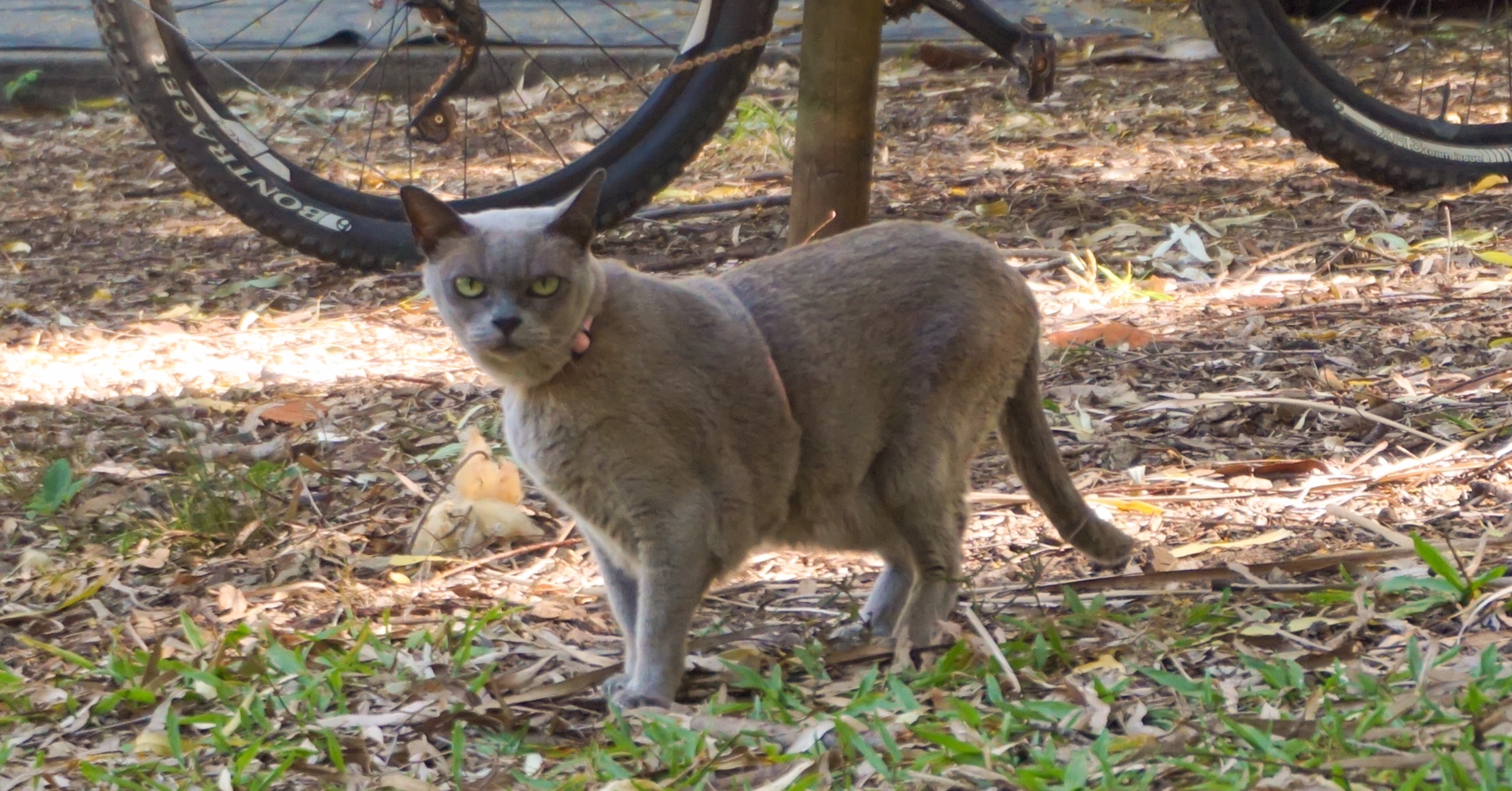 Then it was back to Cafe Discovery for their take on Indian food. A beef vindaloo and chicken tikka masala went down a treat.
Then it was back to Cafe Discovery for their take on Indian food. A beef vindaloo and chicken tikka masala went down a treat.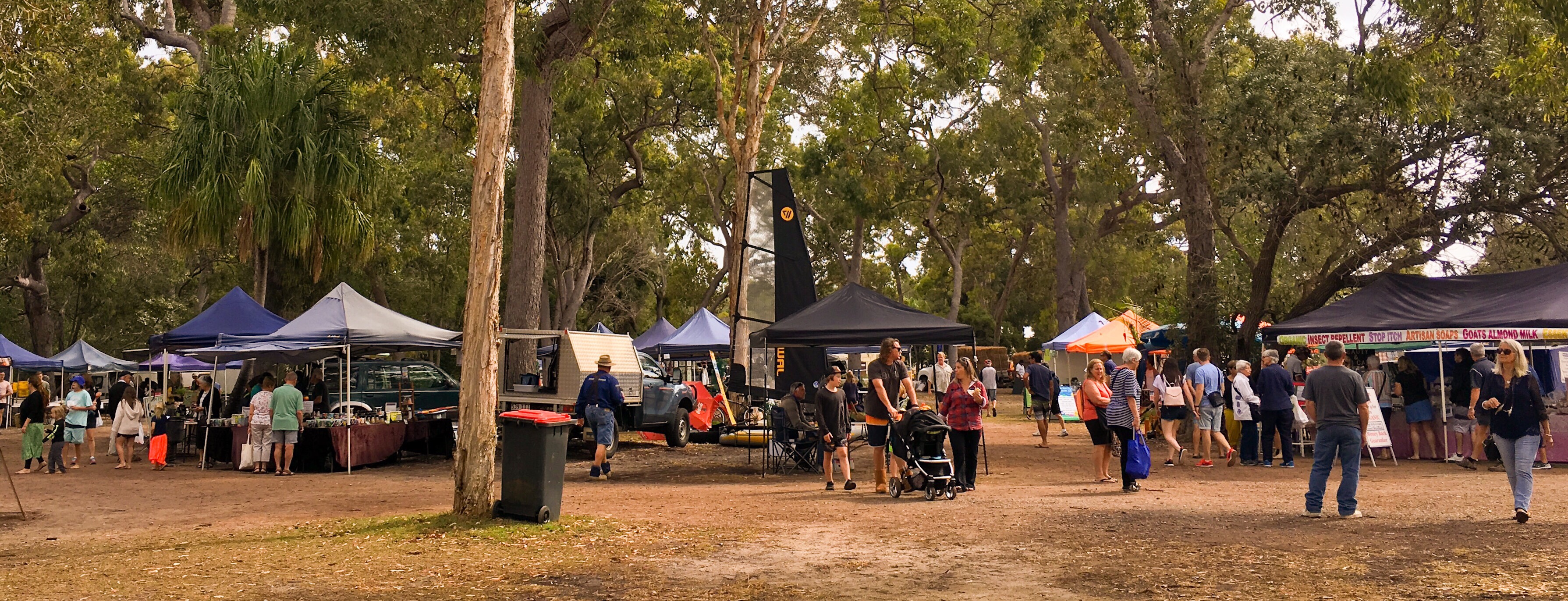
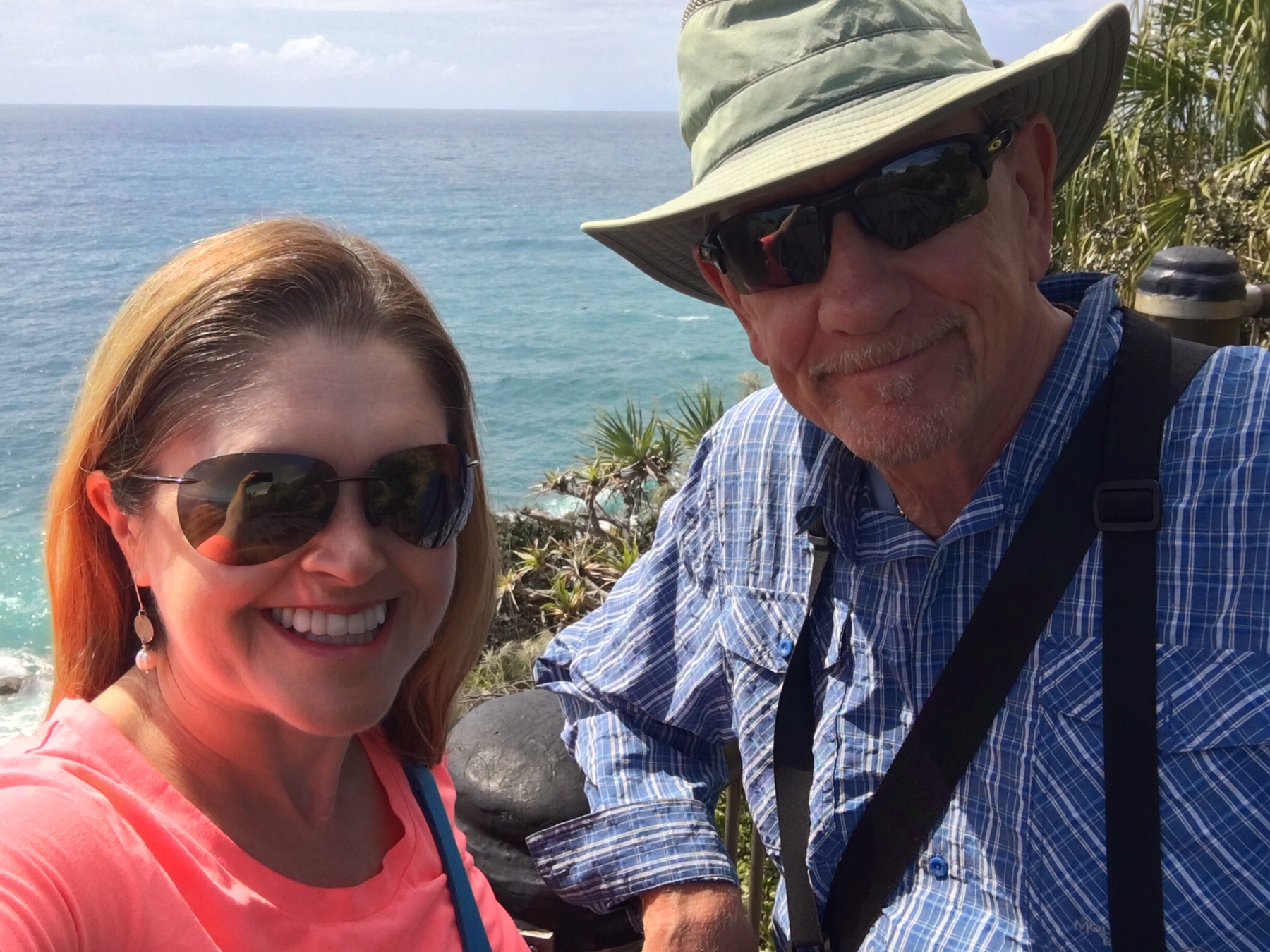
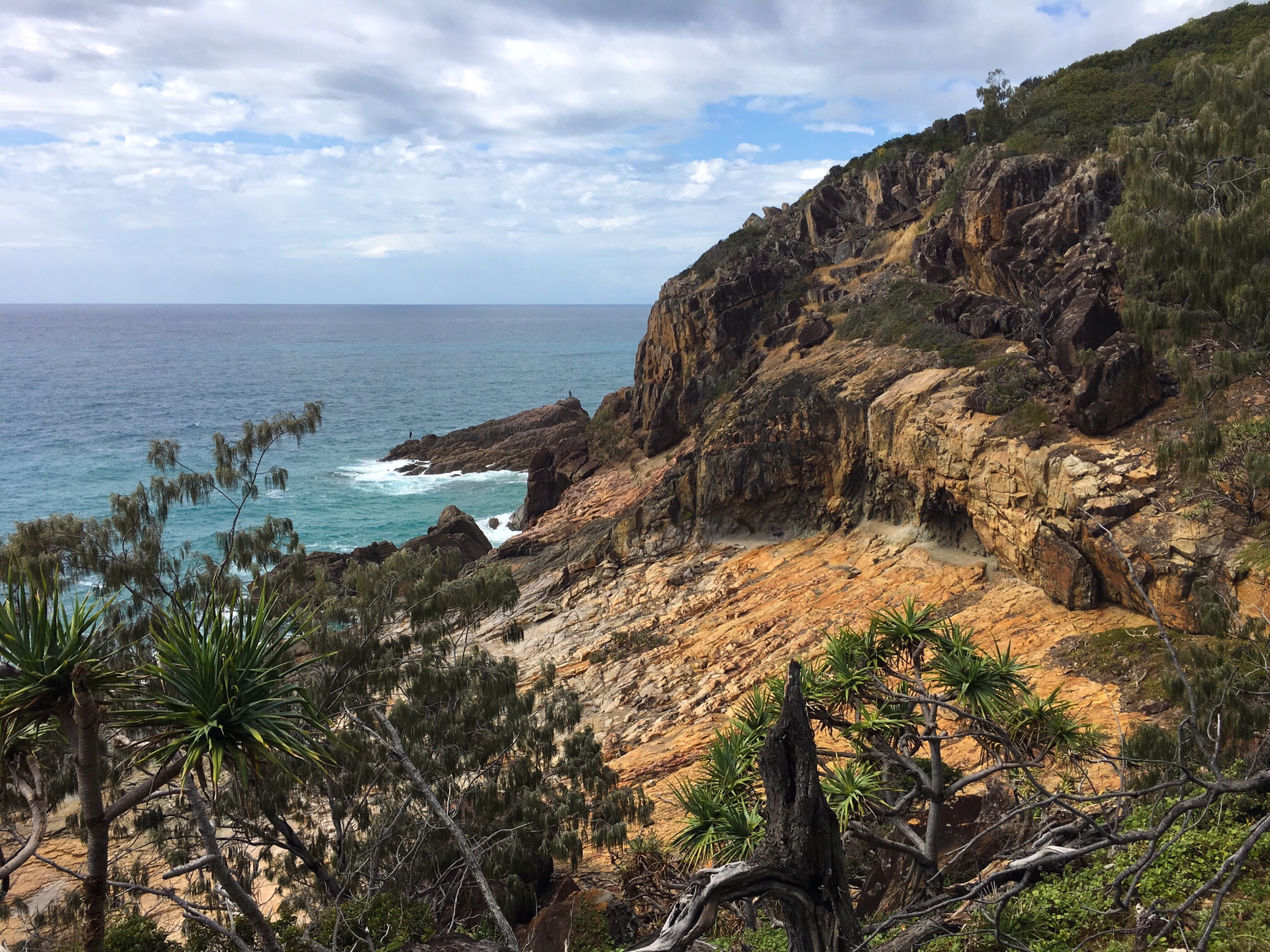 We decided to brave the weather and headed out for a walk, so glad we did. The first short walk we did through a paper bark forest was magical with the sun making the dripping vegetation just sparkle.
We decided to brave the weather and headed out for a walk, so glad we did. The first short walk we did through a paper bark forest was magical with the sun making the dripping vegetation just sparkle.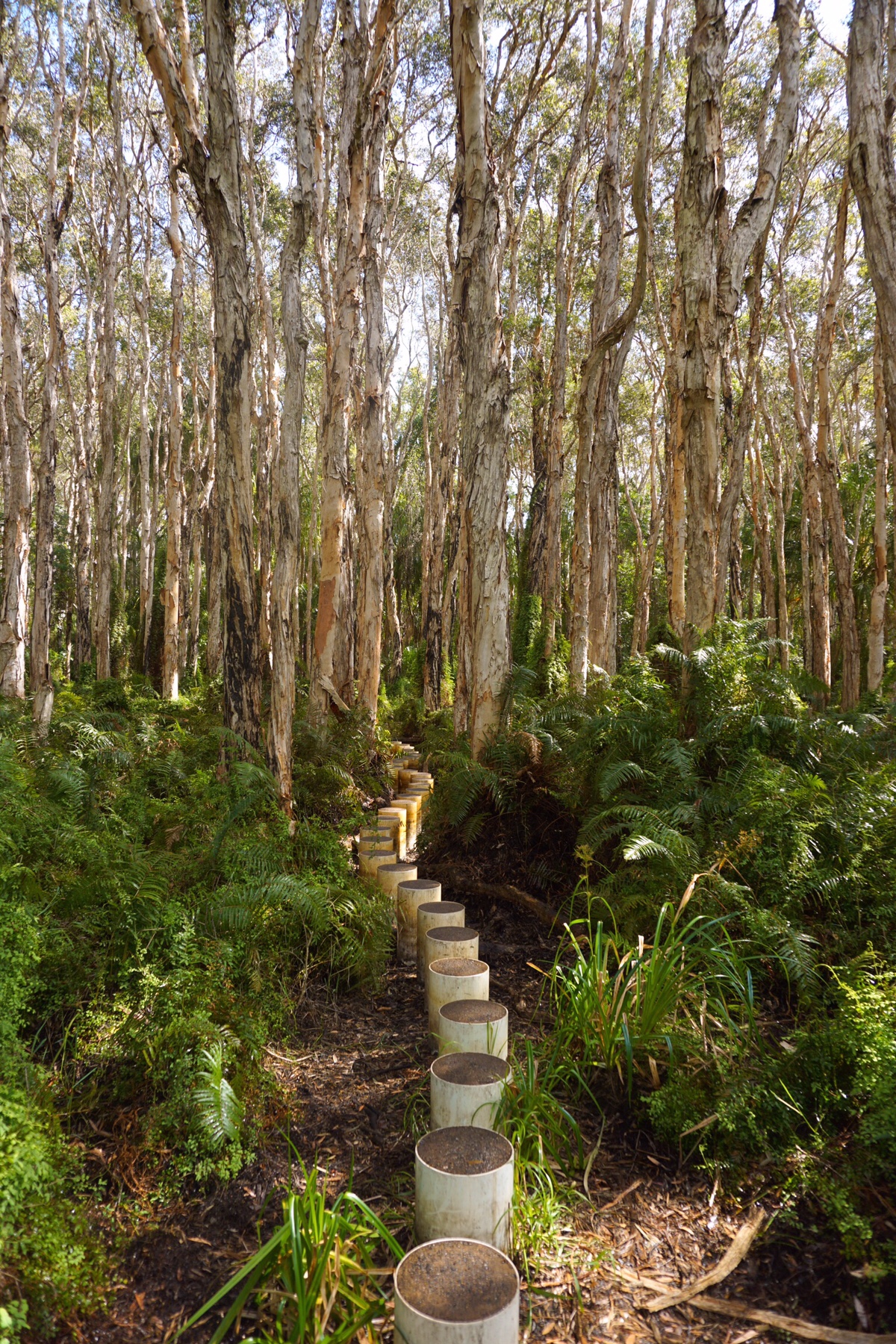
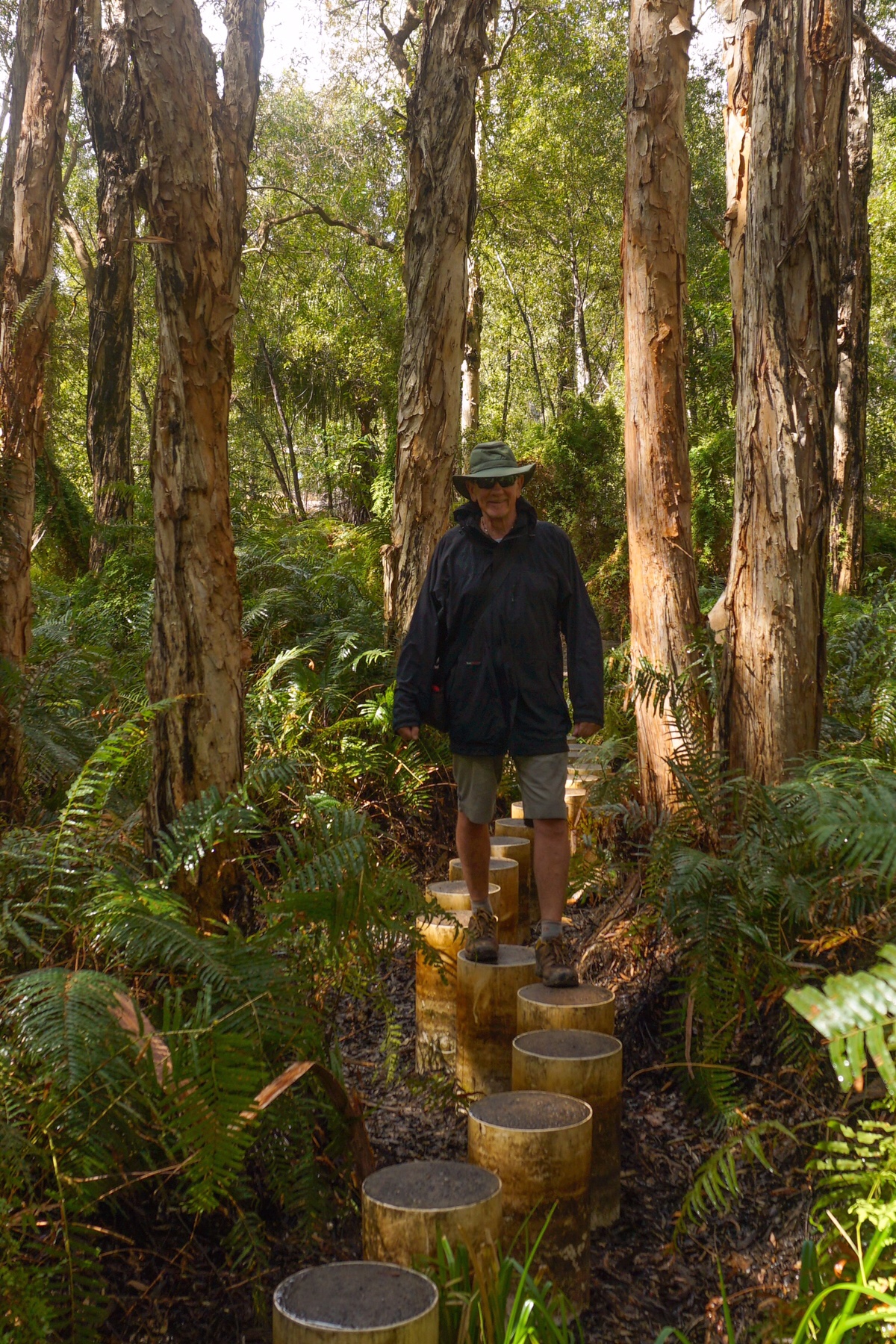
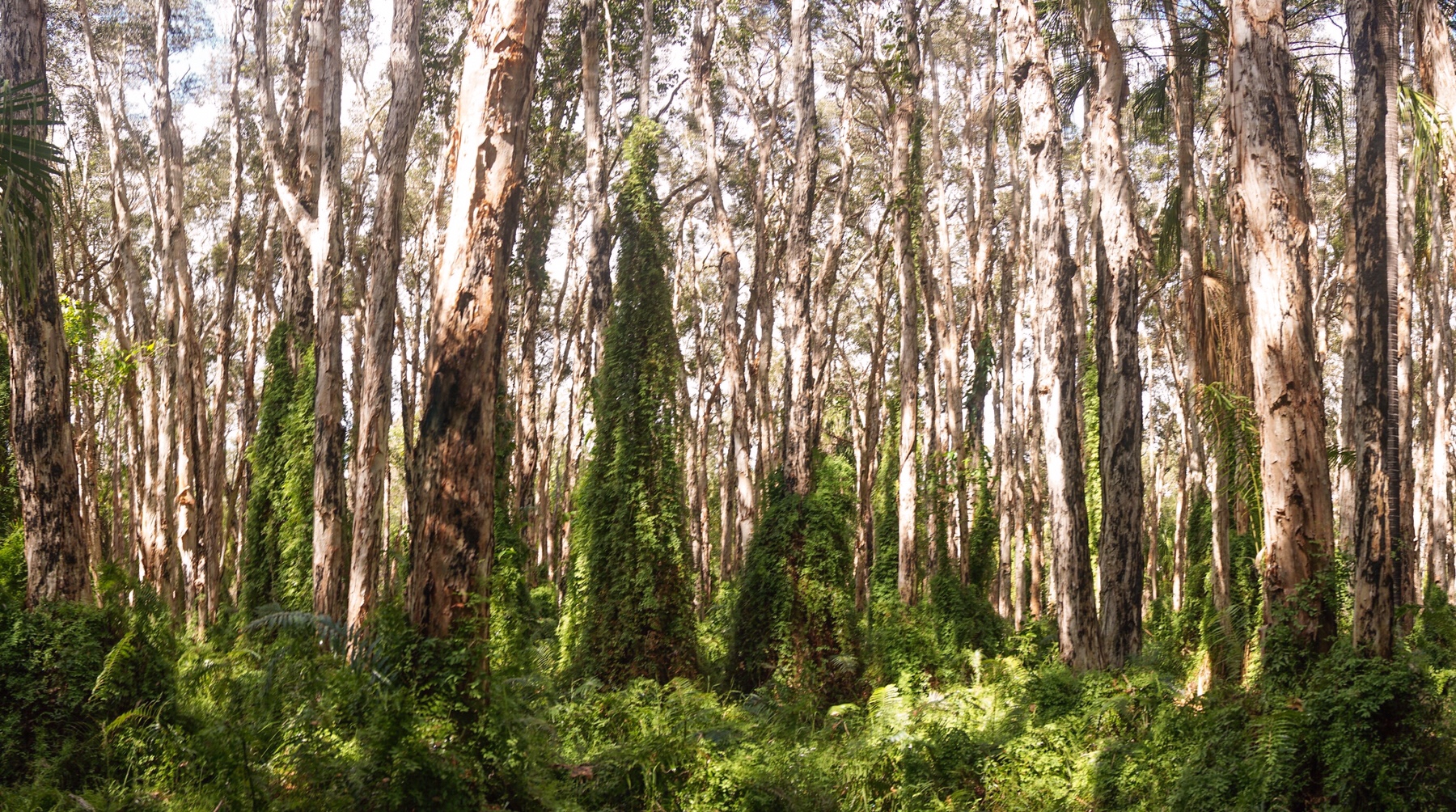
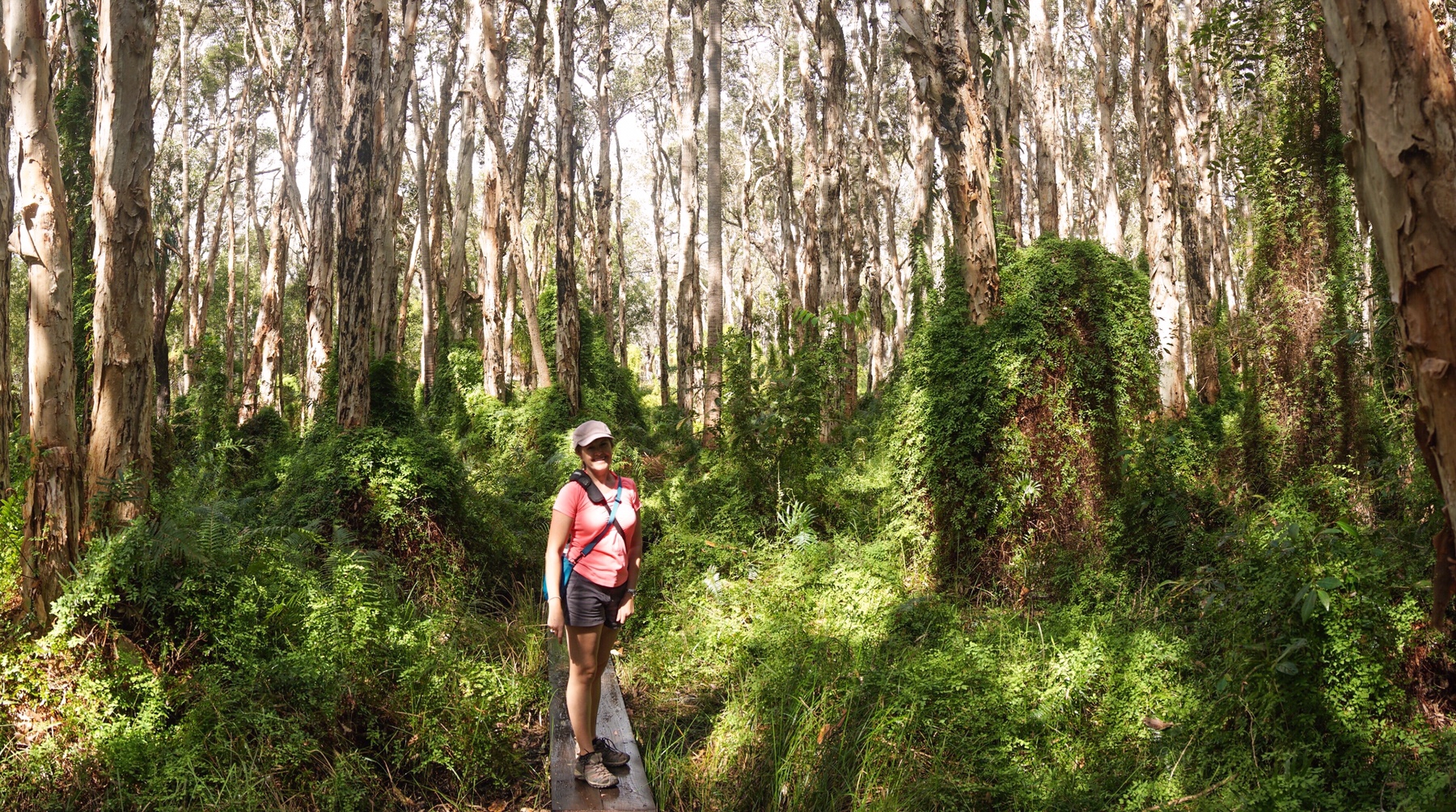 Then it was a 6km coastal walk, although the weather then closed in and it really started to throw it down, complete with thunder and lightning.
Then it was a 6km coastal walk, although the weather then closed in and it really started to throw it down, complete with thunder and lightning.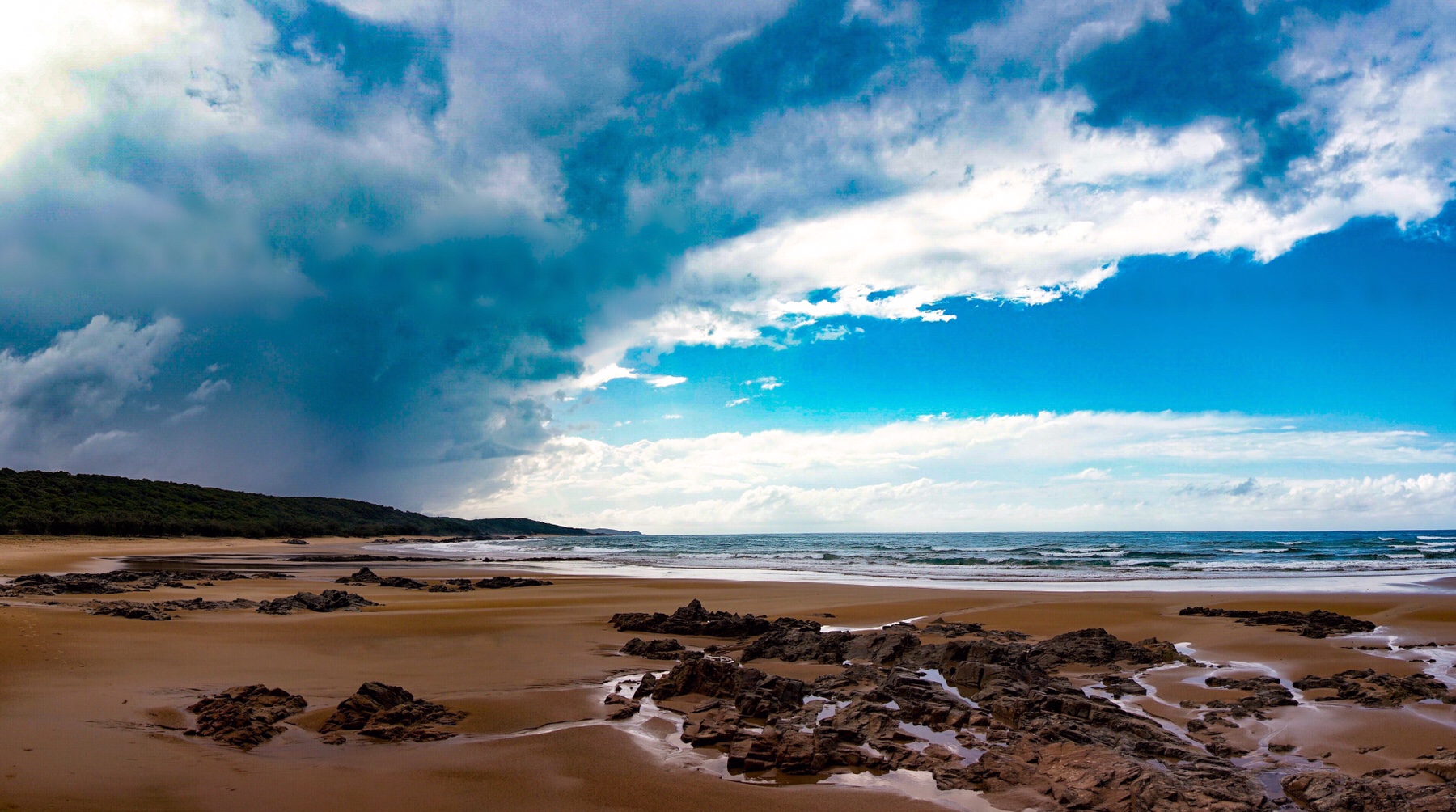
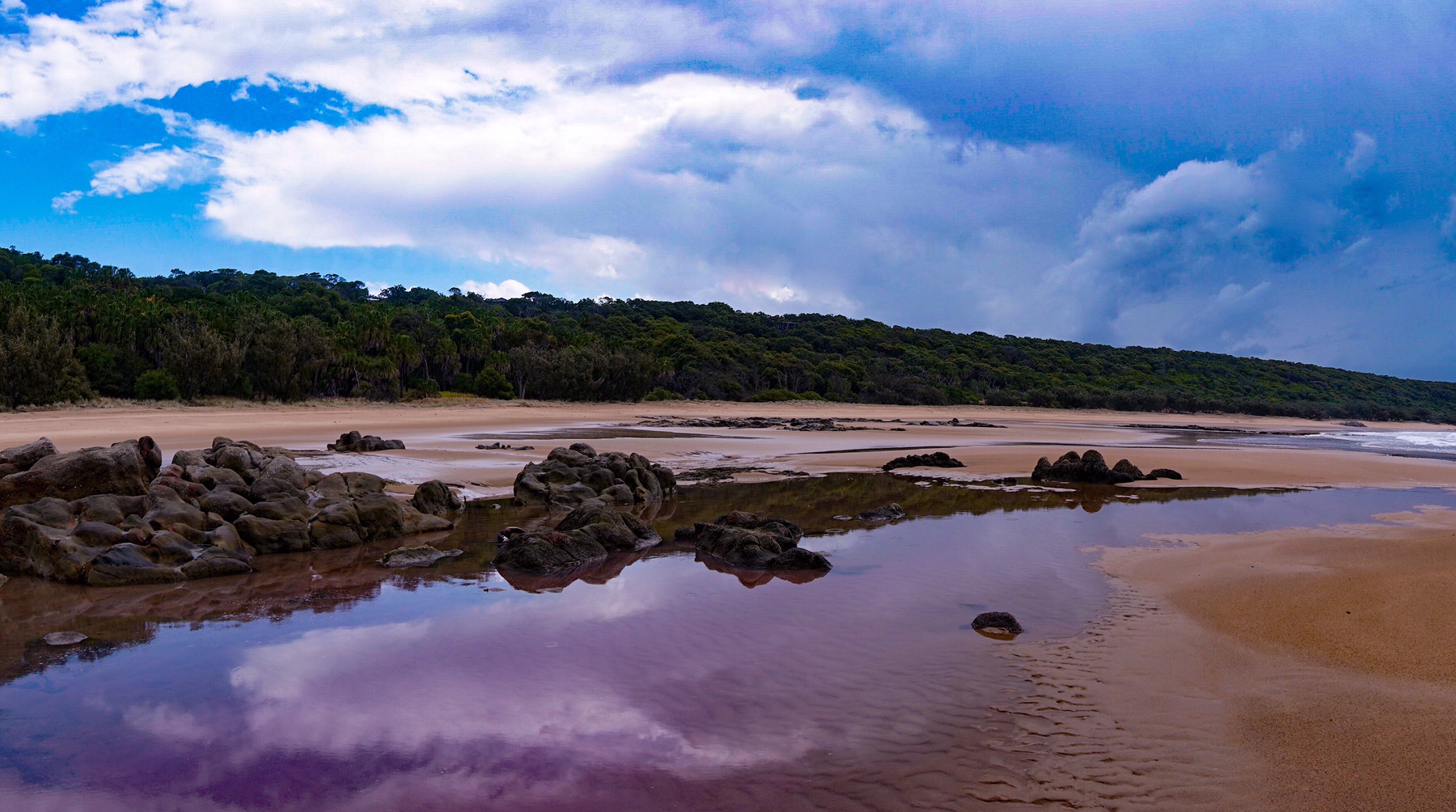
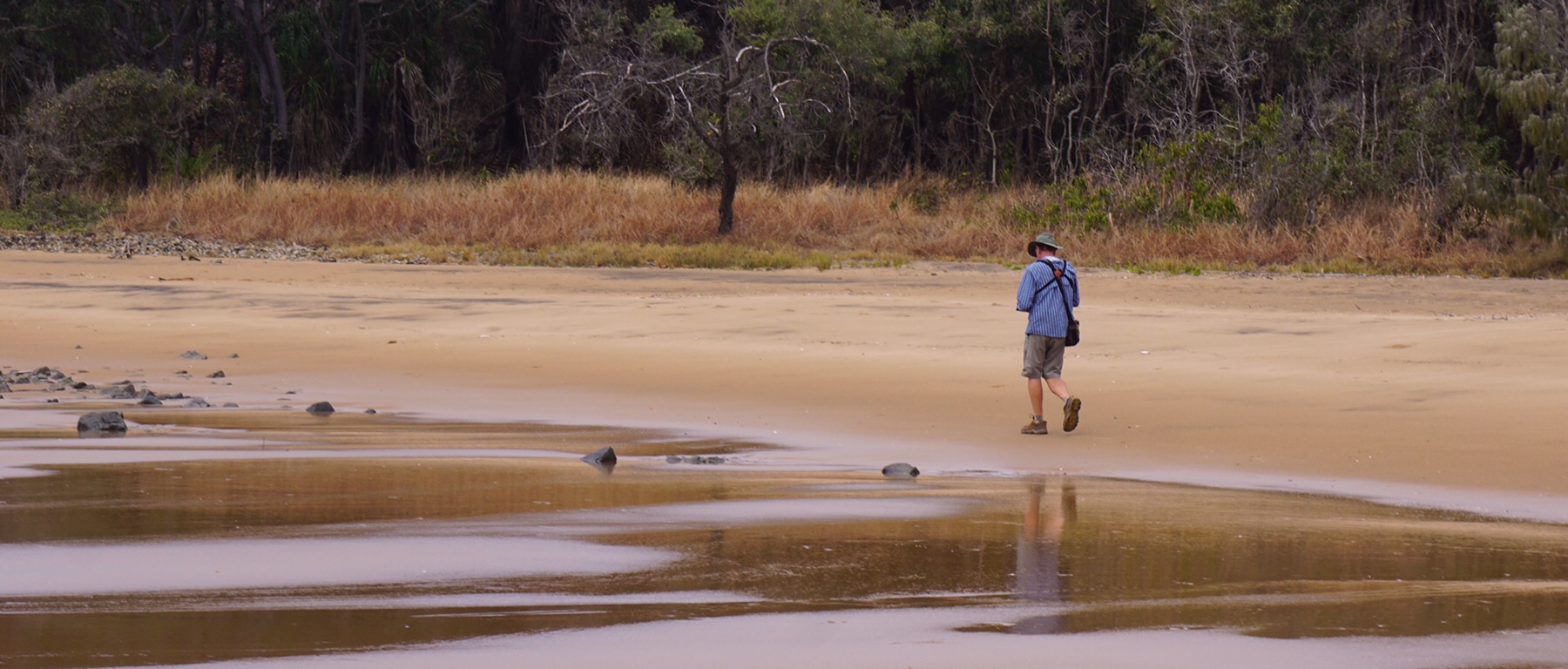

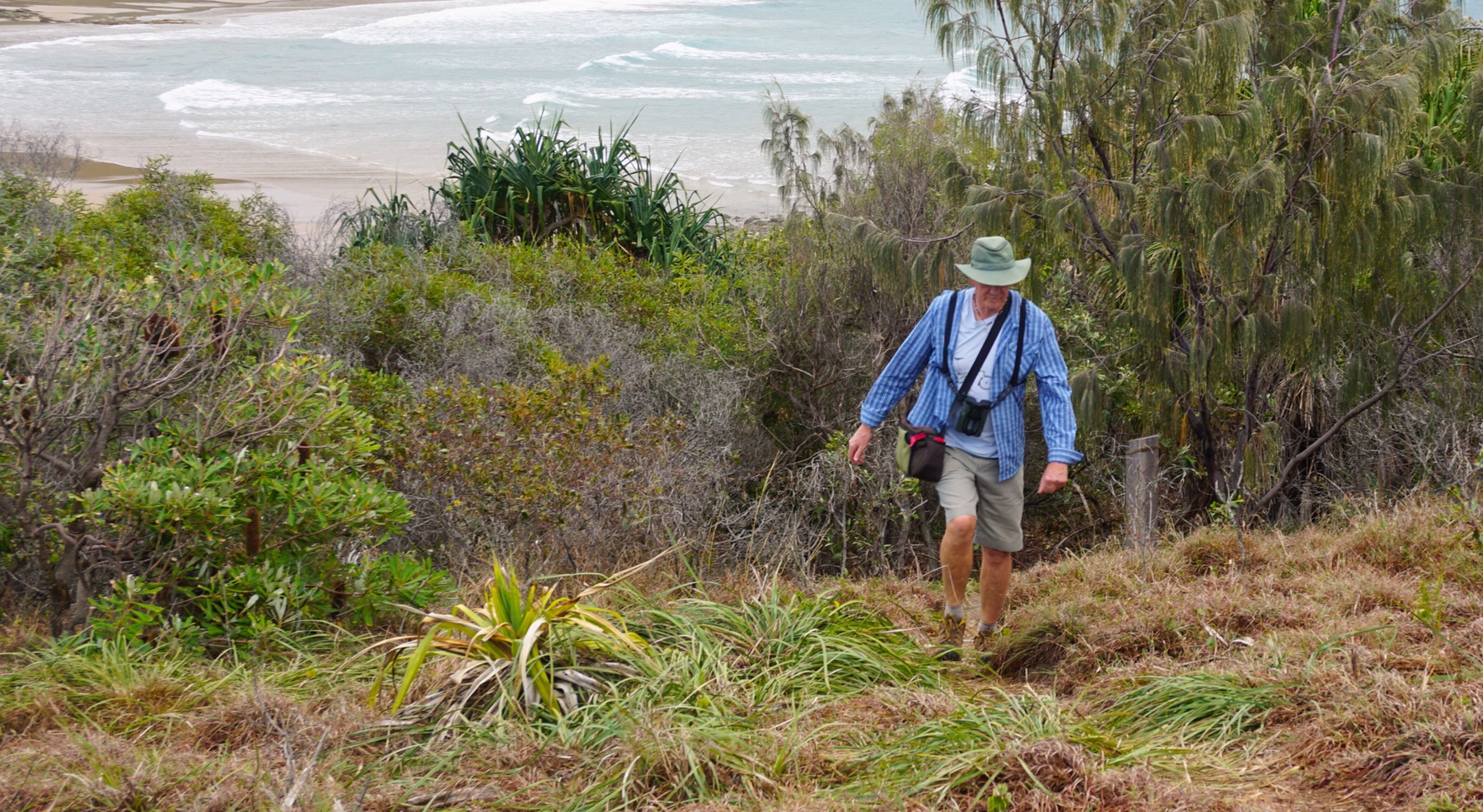
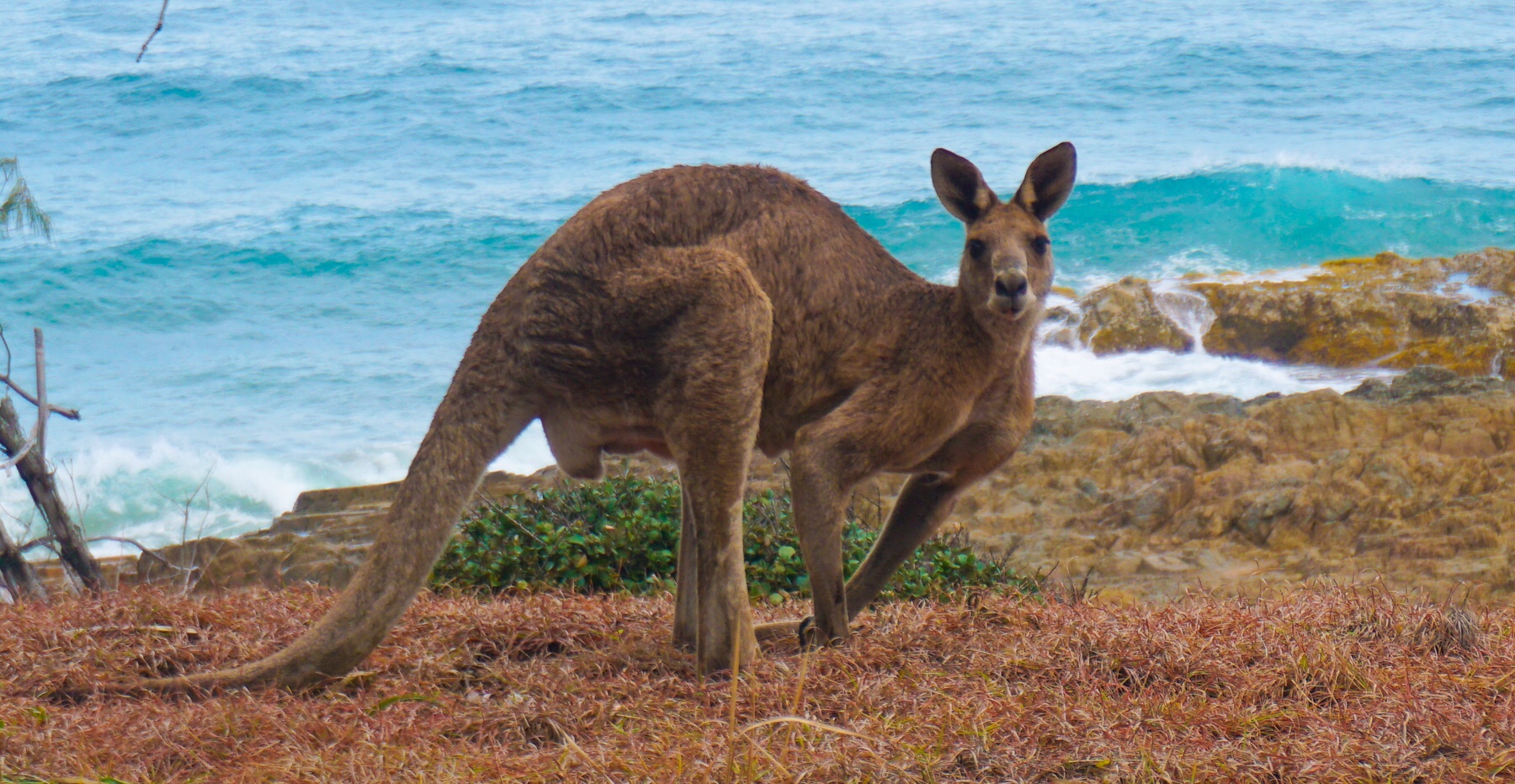
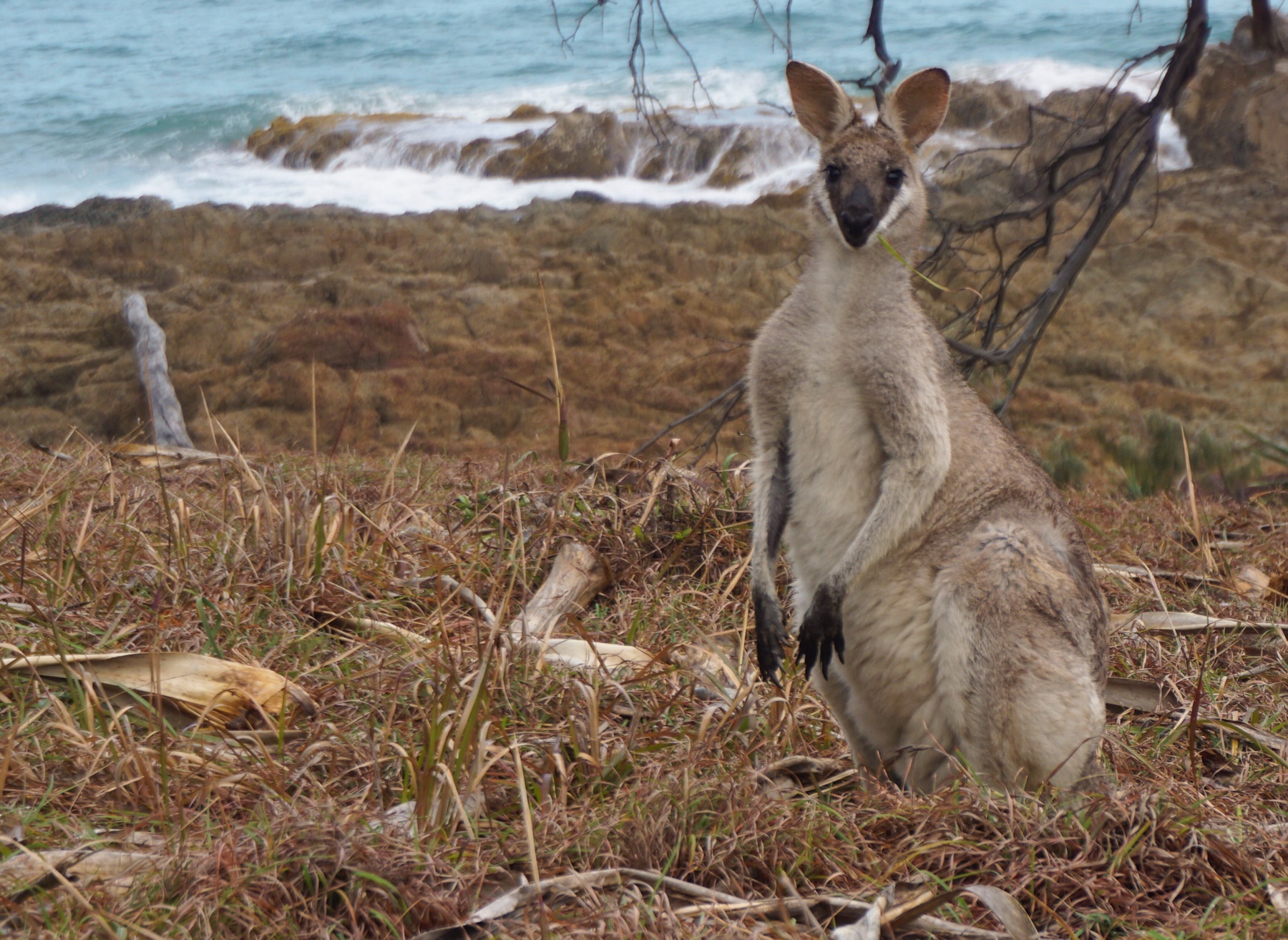
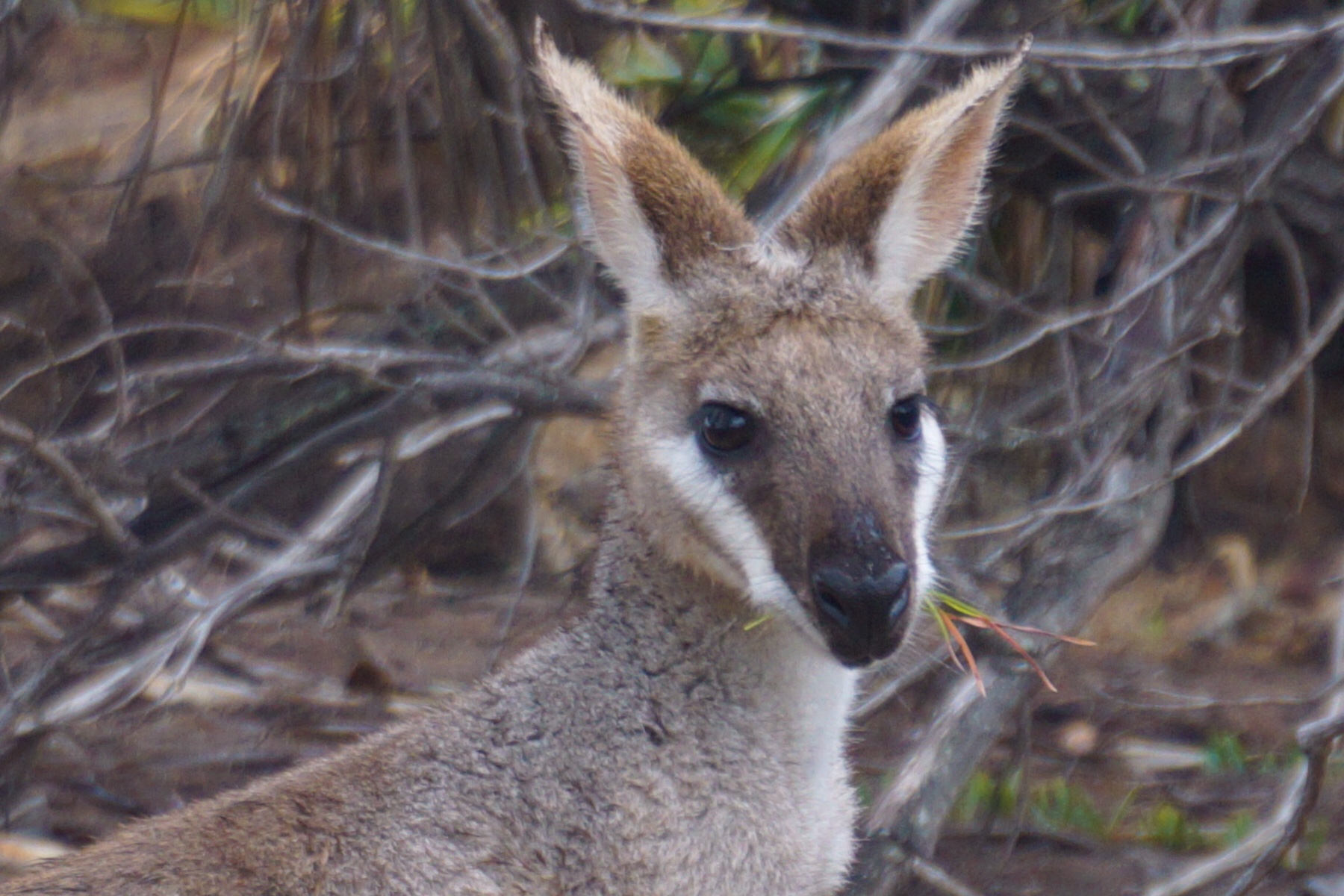
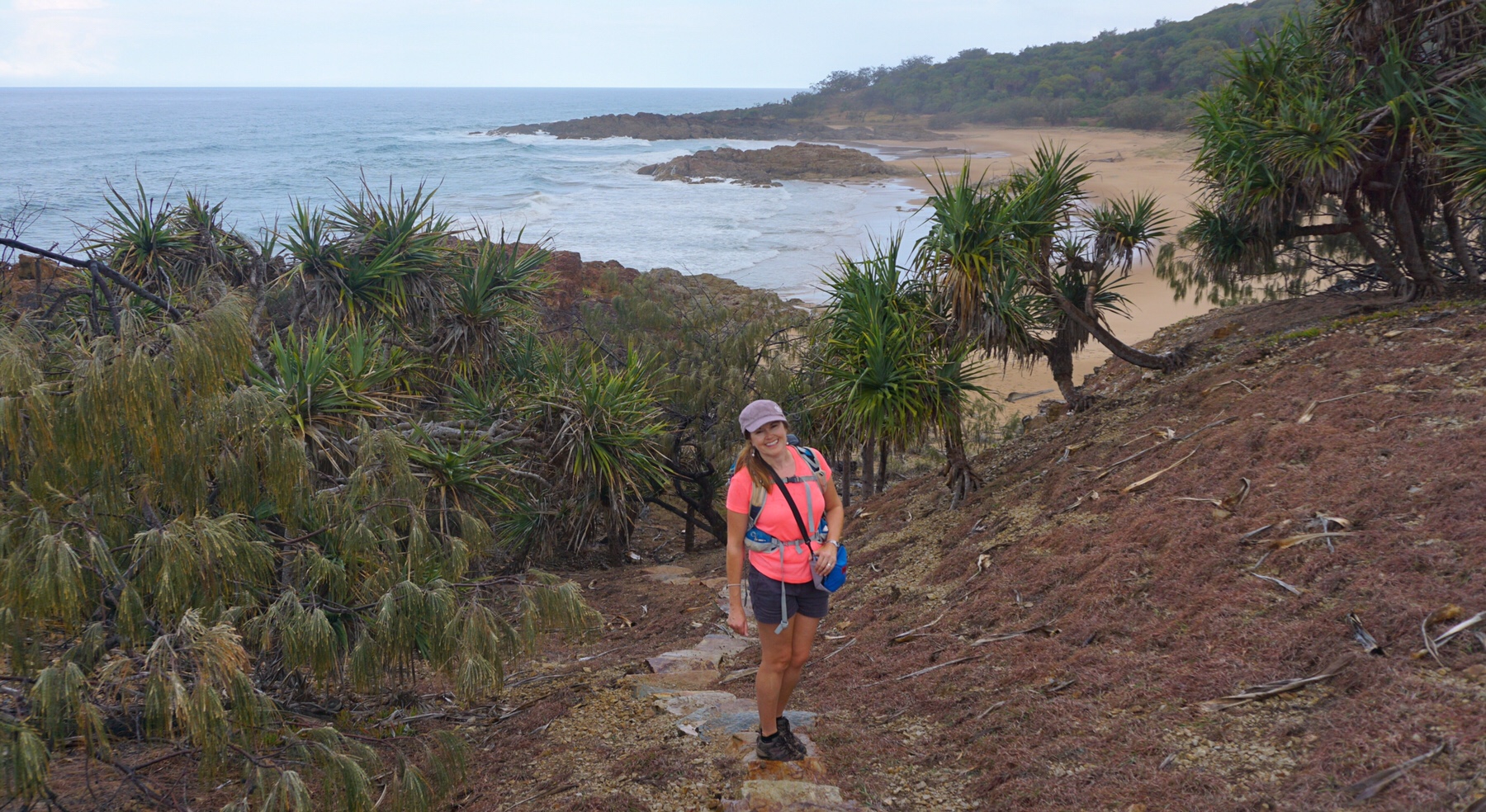
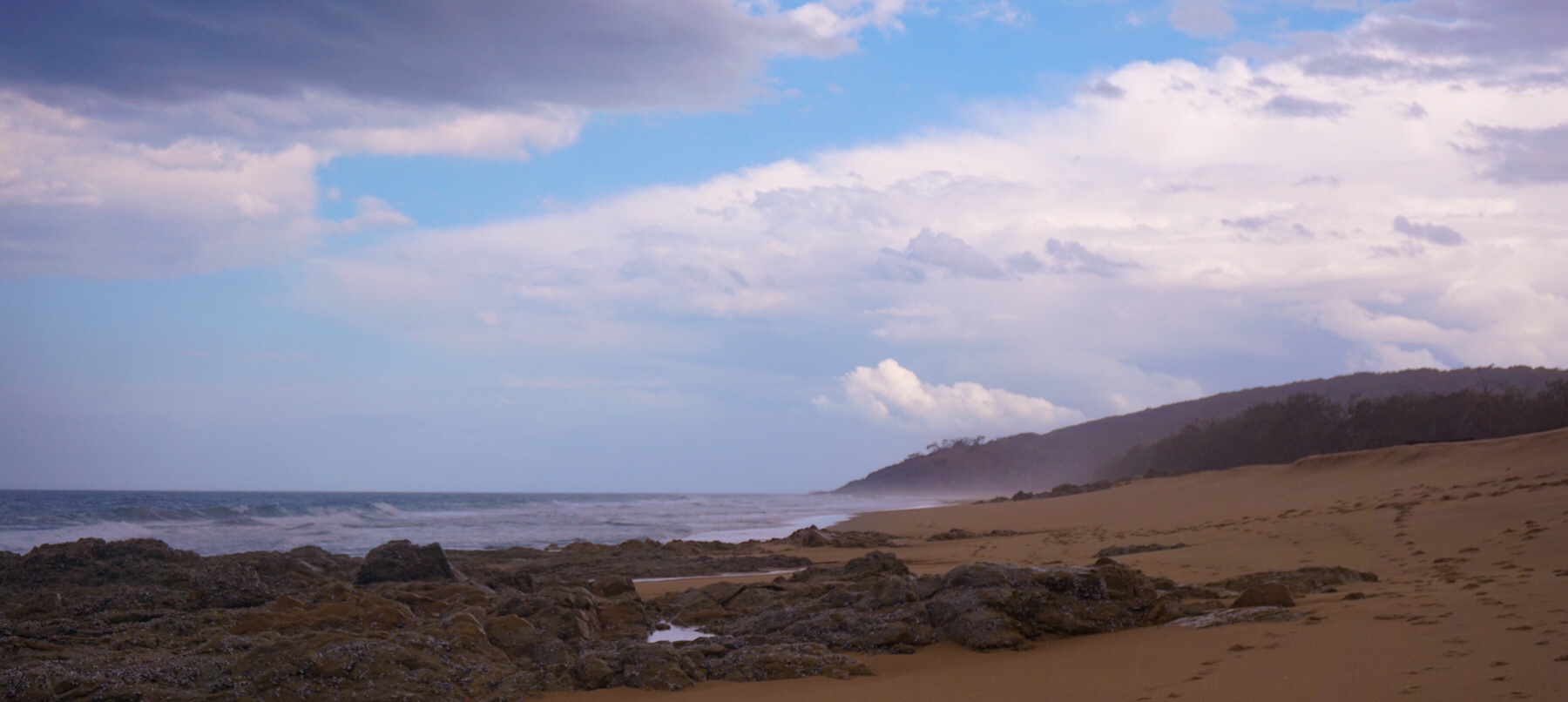
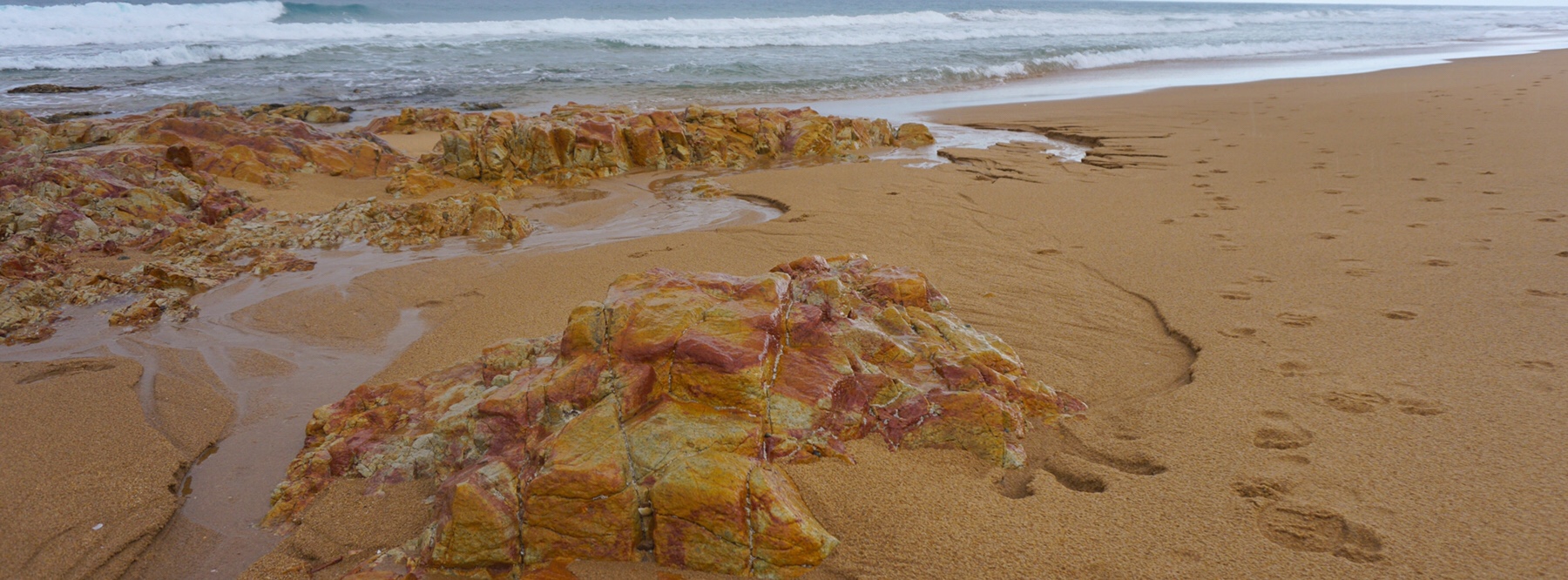
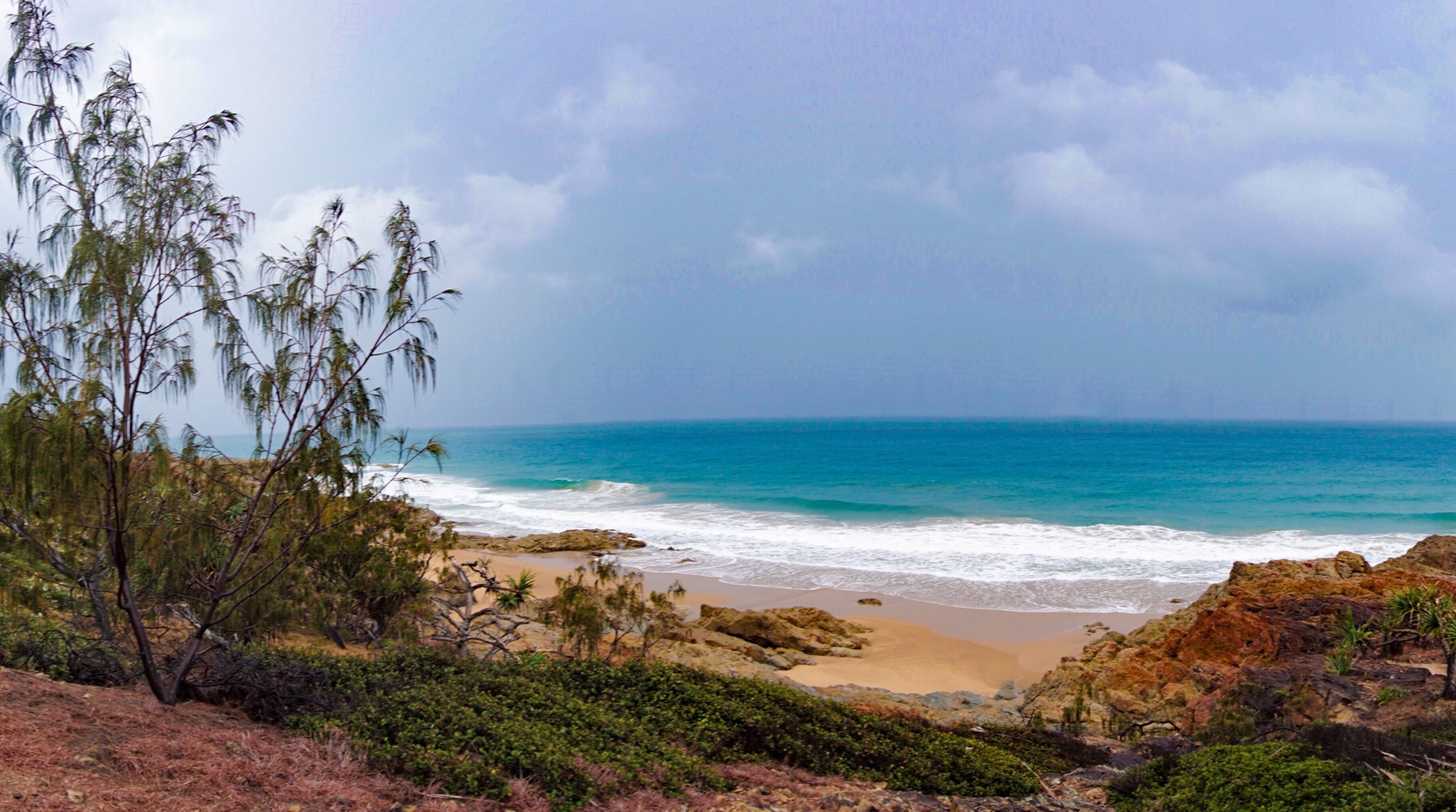
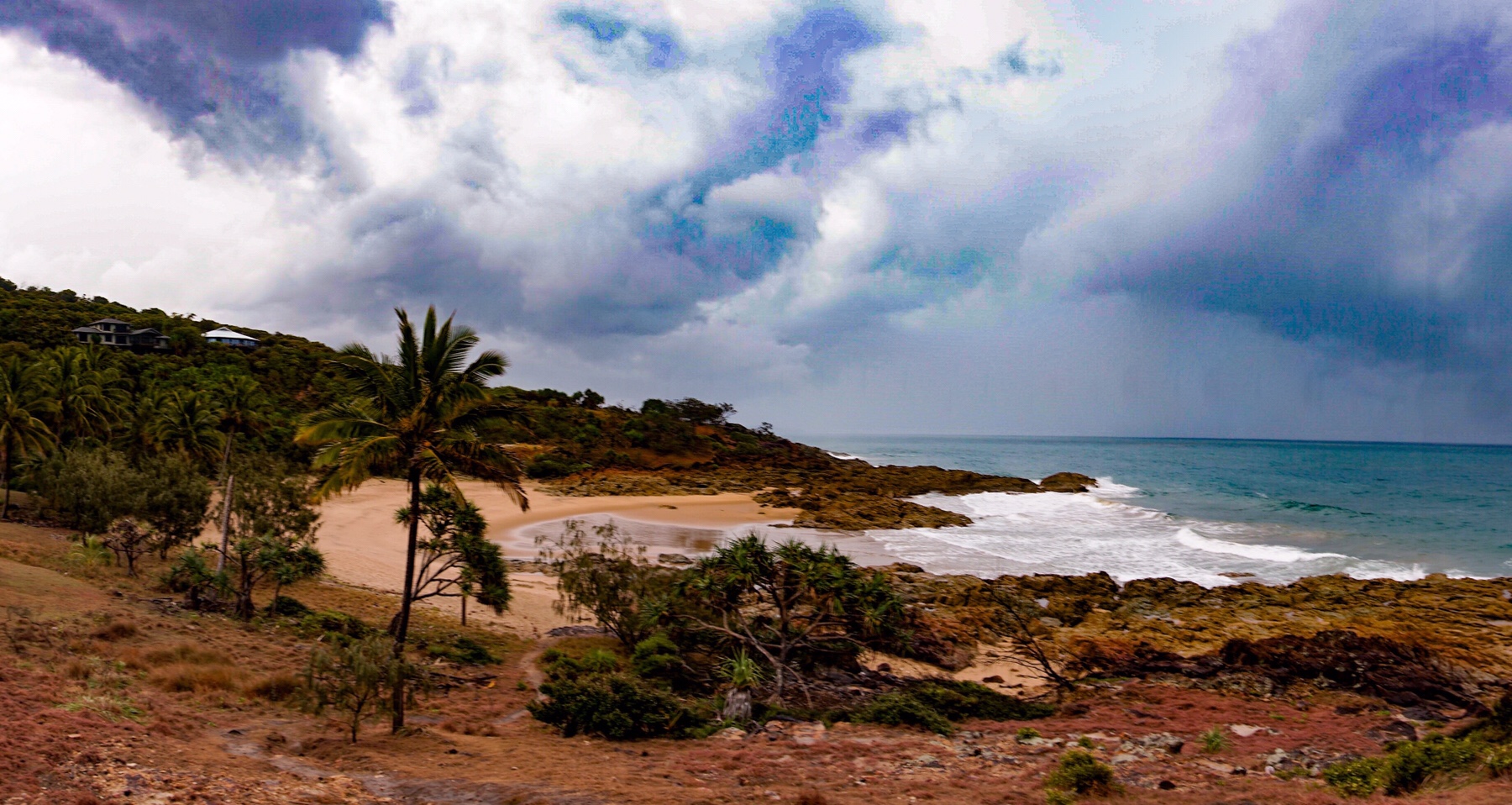 Back to the park and a quiet Sunday night (when isn’t it nowadays!) and plans made for our departure tomorrow.
Back to the park and a quiet Sunday night (when isn’t it nowadays!) and plans made for our departure tomorrow.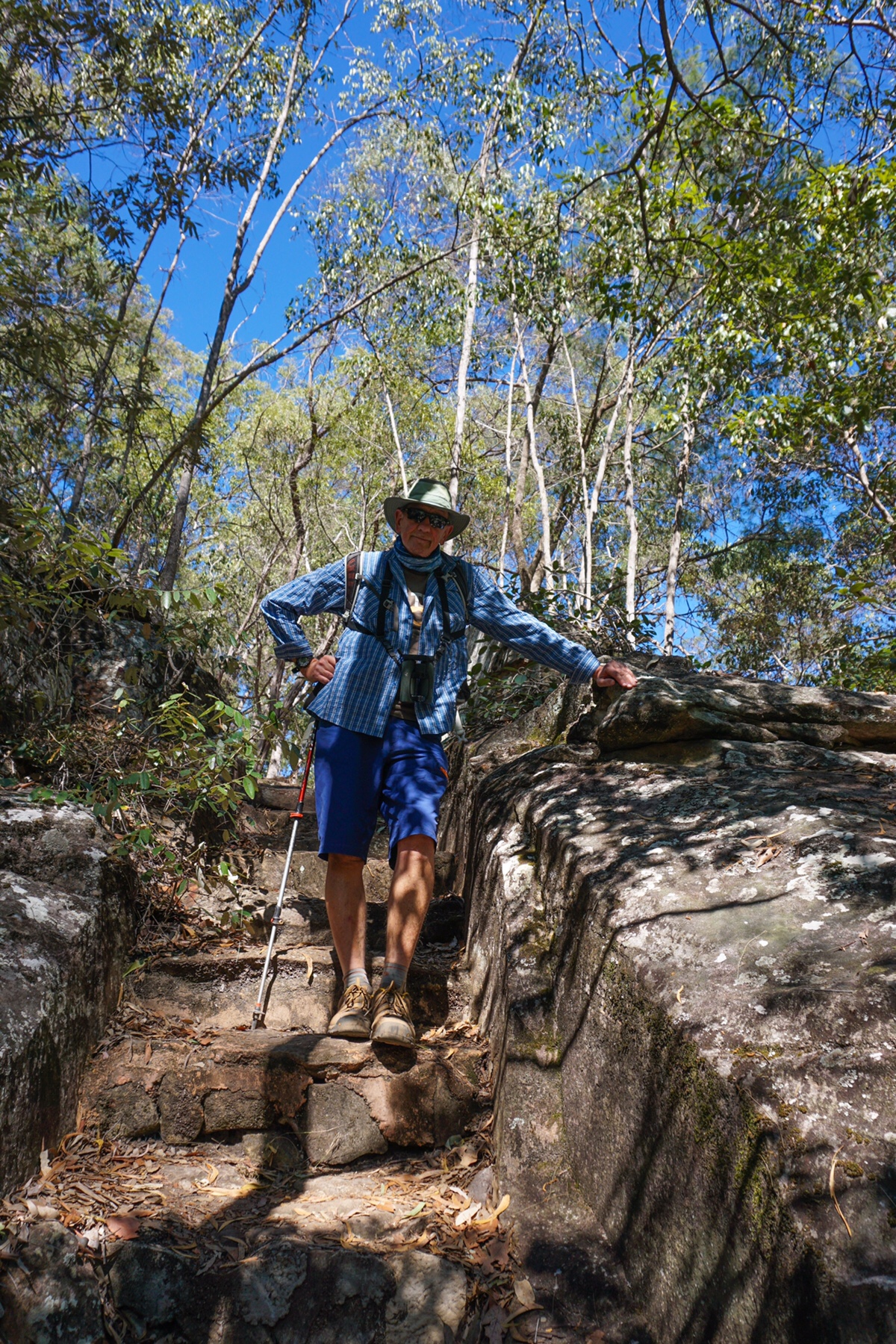
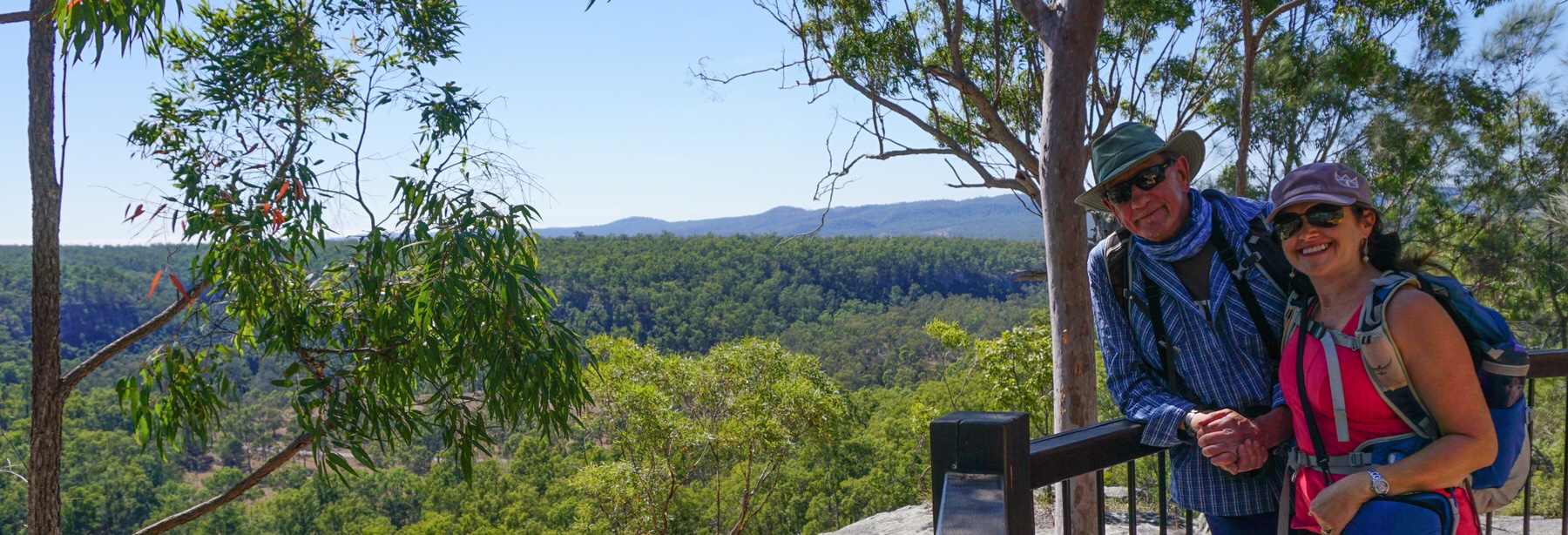
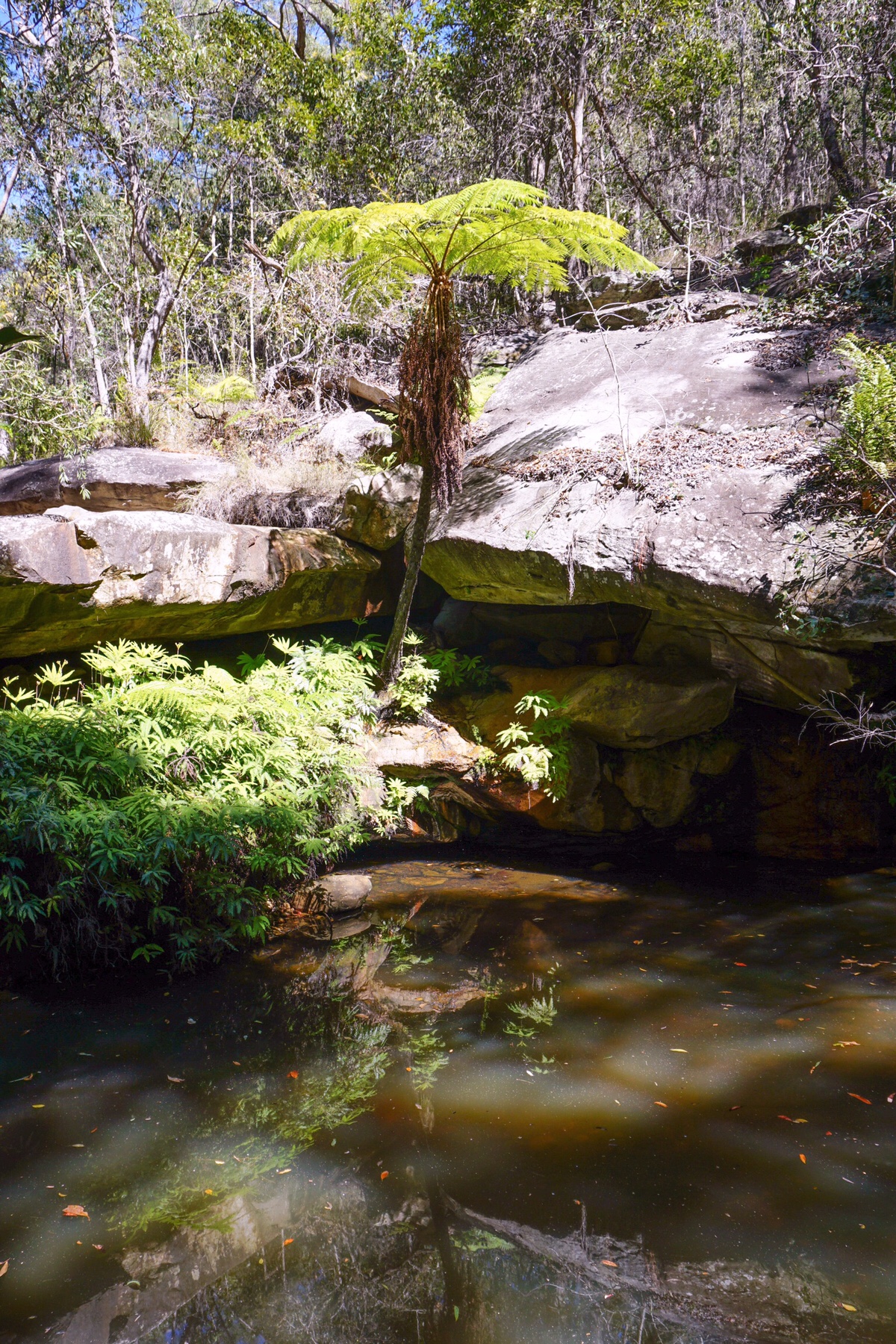
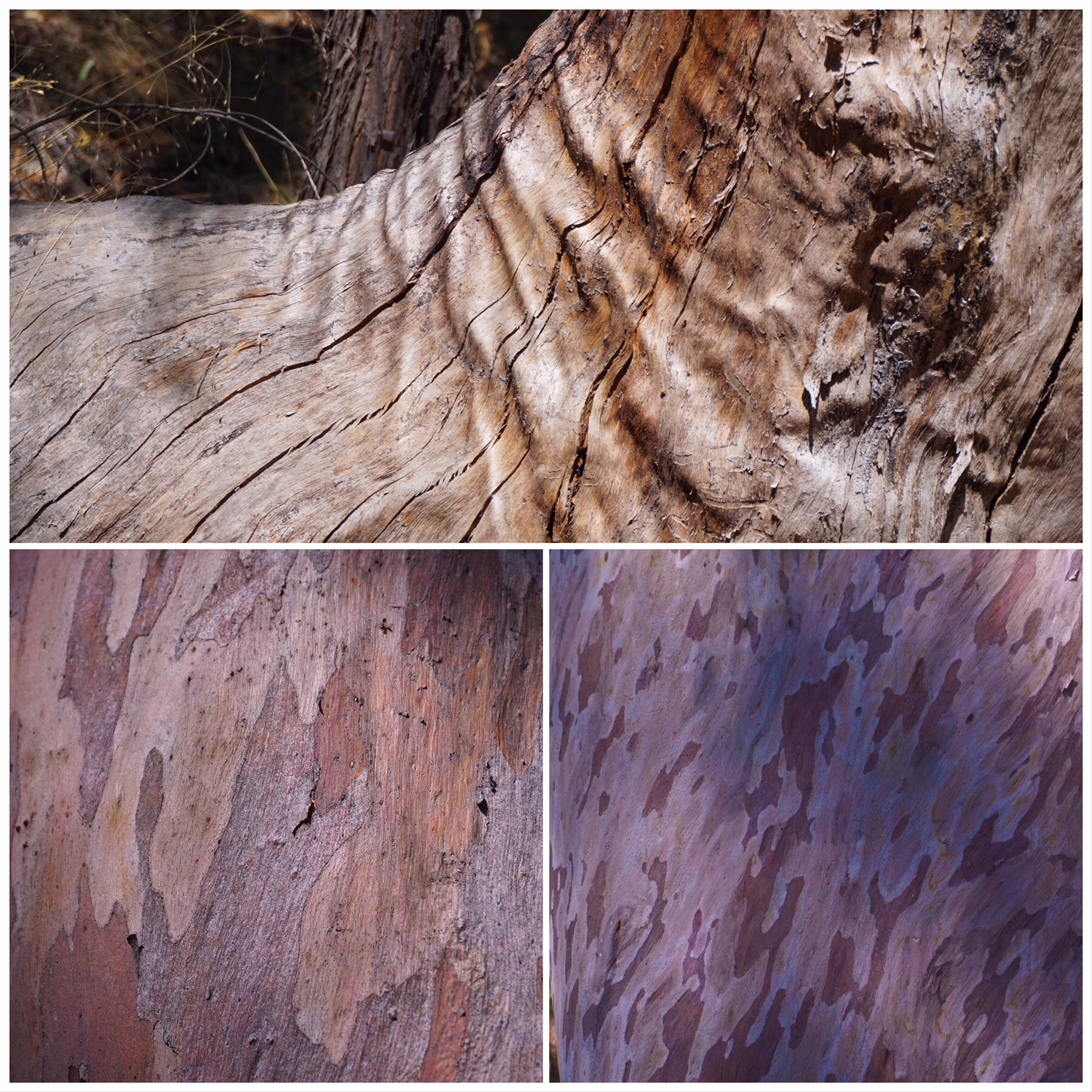
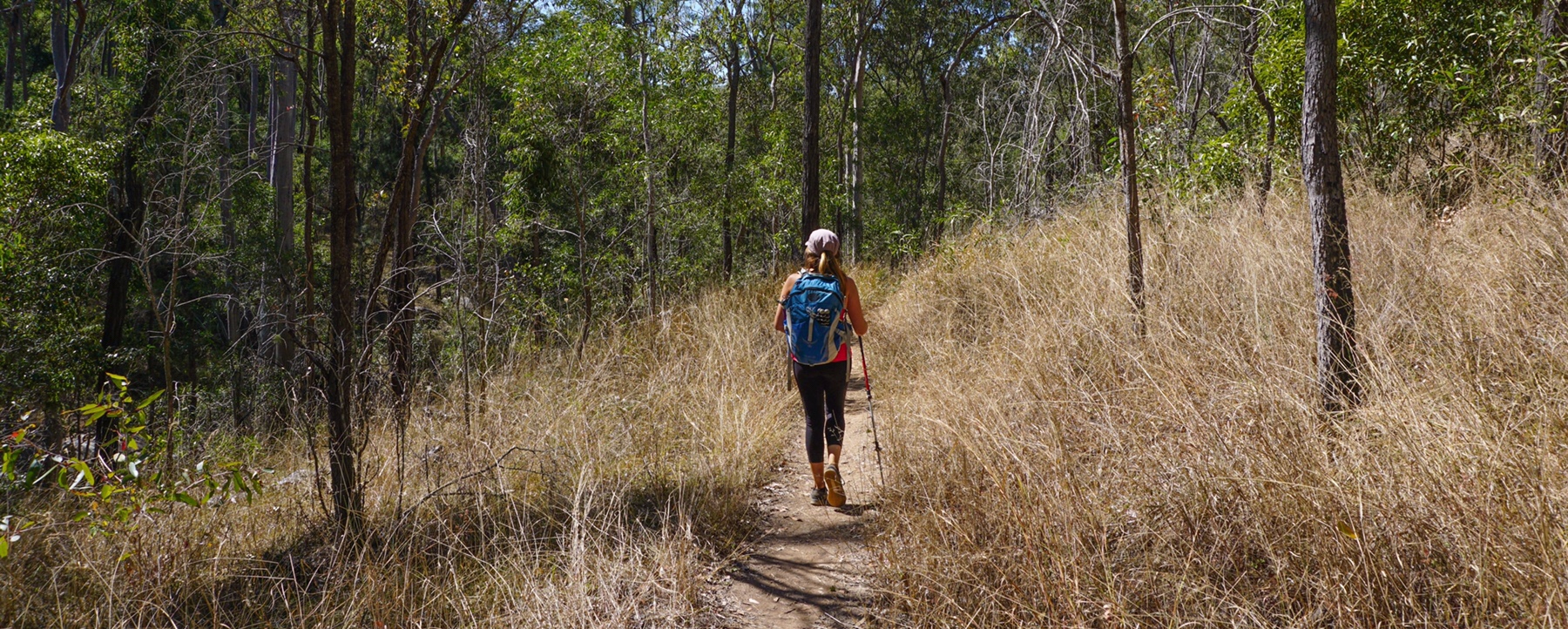 Queensland is very dry currently, not having had rain in this area for a couple of months. This is very evident in the sheer numbers of birds flocking to this little water source, particularly grey fantails and flocks of silvereyes, so gorgeous.
Queensland is very dry currently, not having had rain in this area for a couple of months. This is very evident in the sheer numbers of birds flocking to this little water source, particularly grey fantails and flocks of silvereyes, so gorgeous.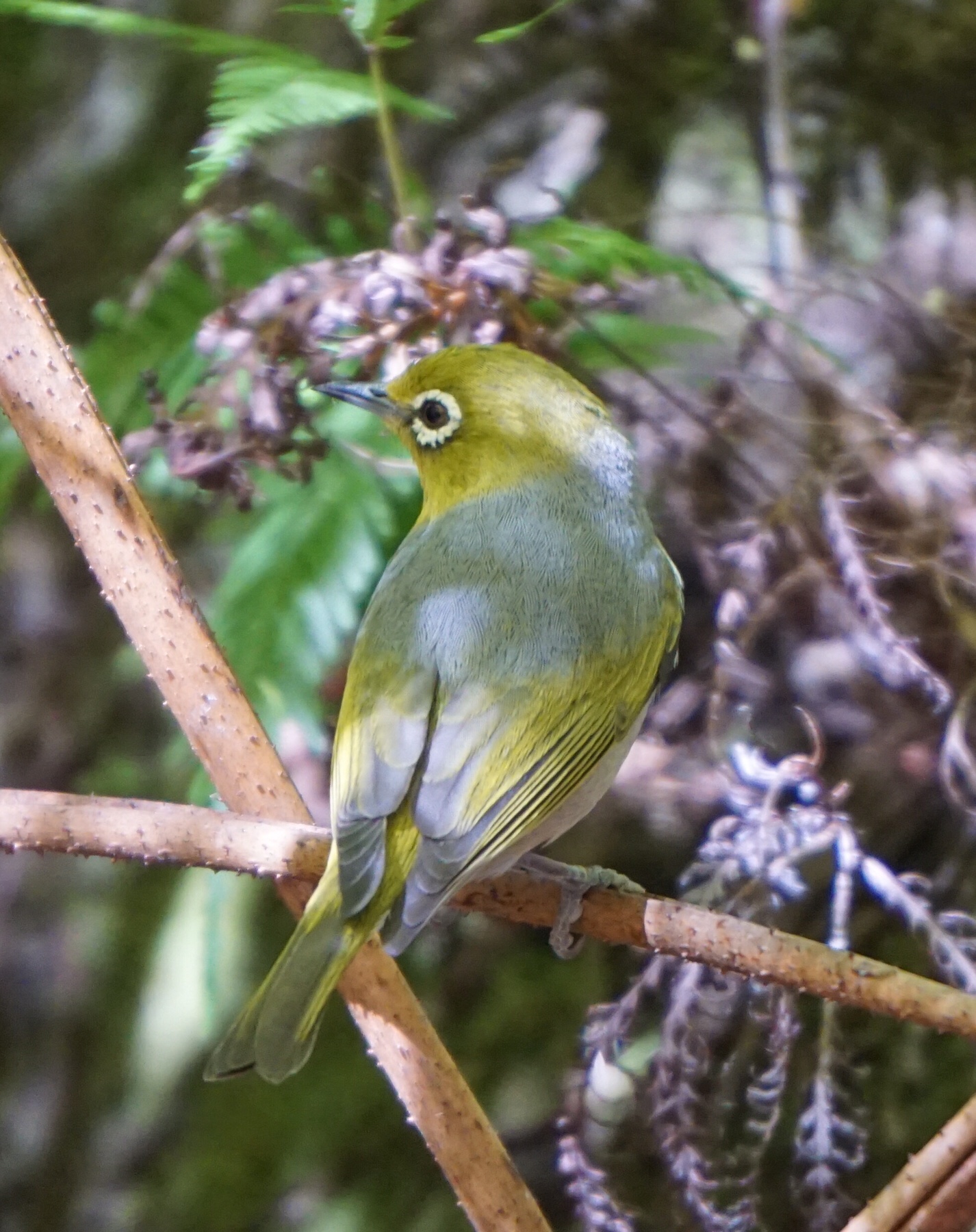
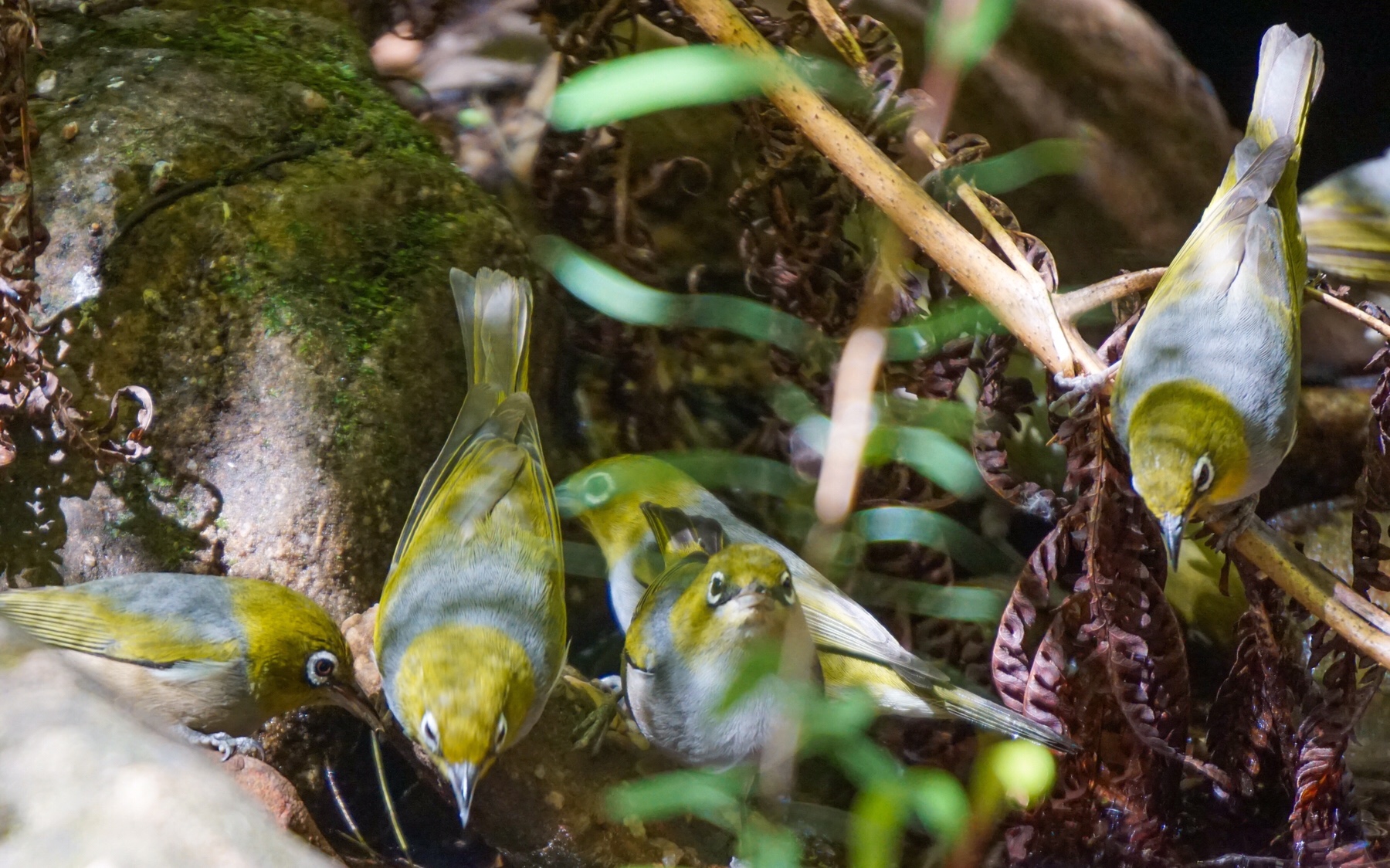
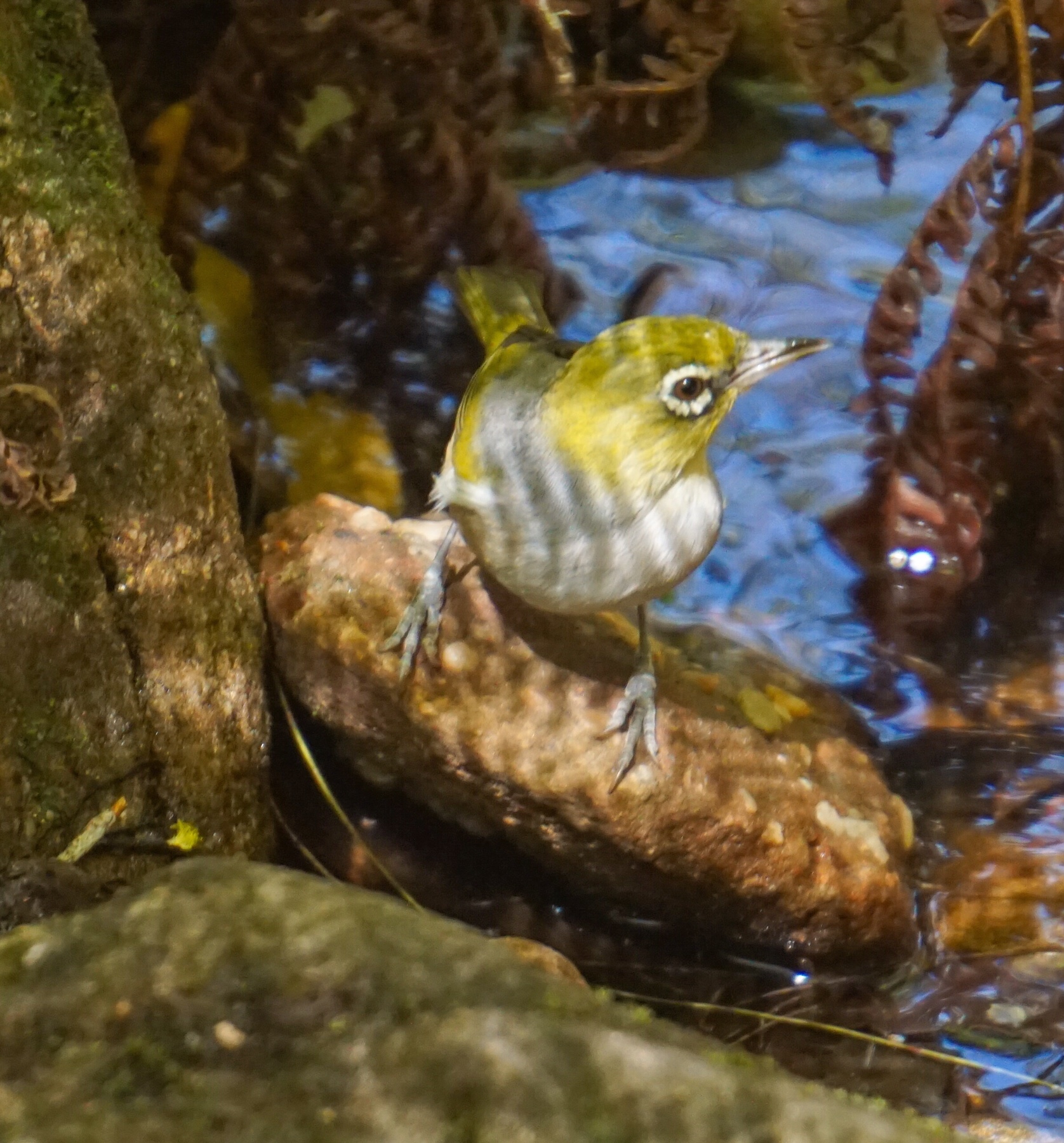
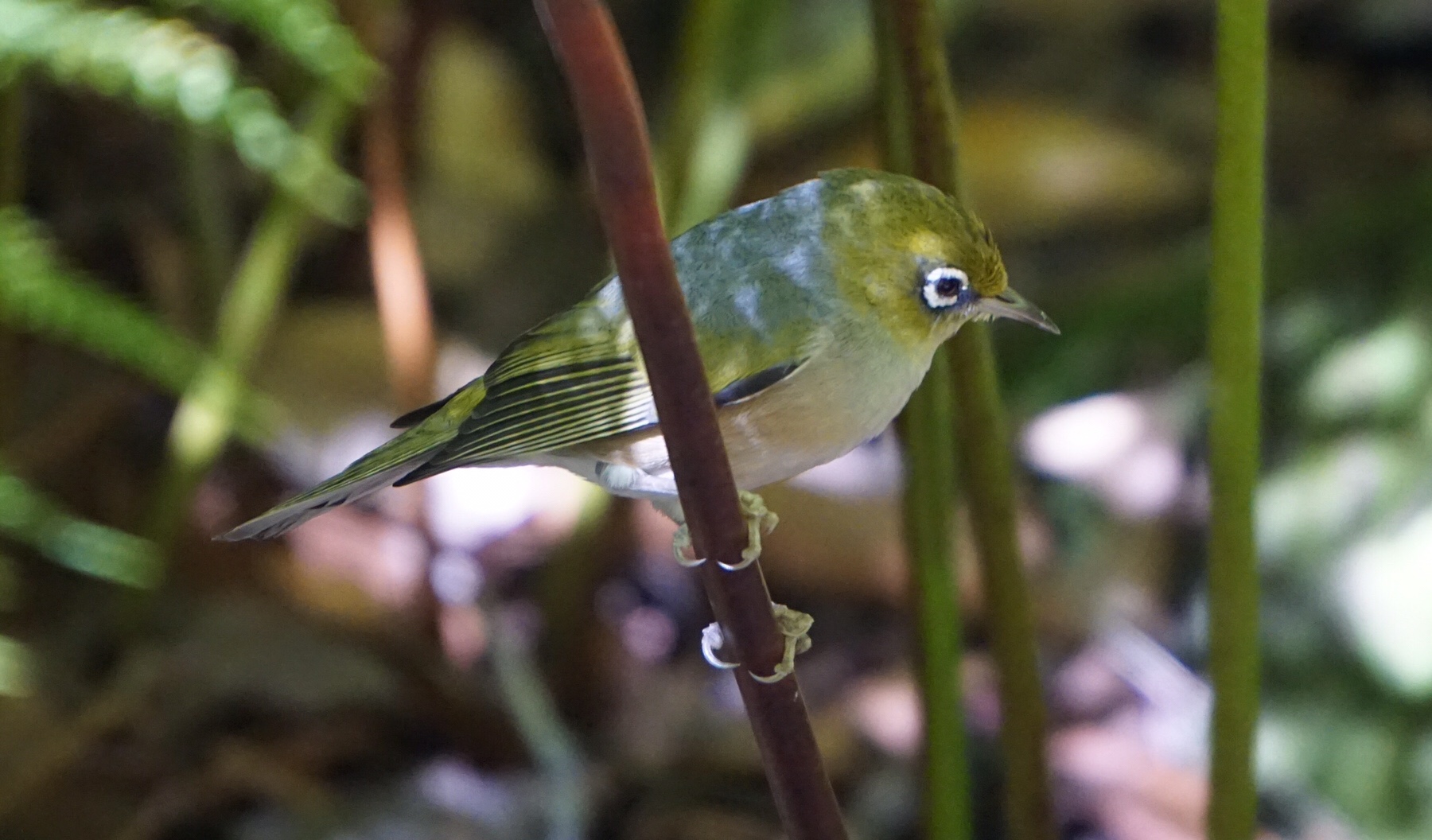
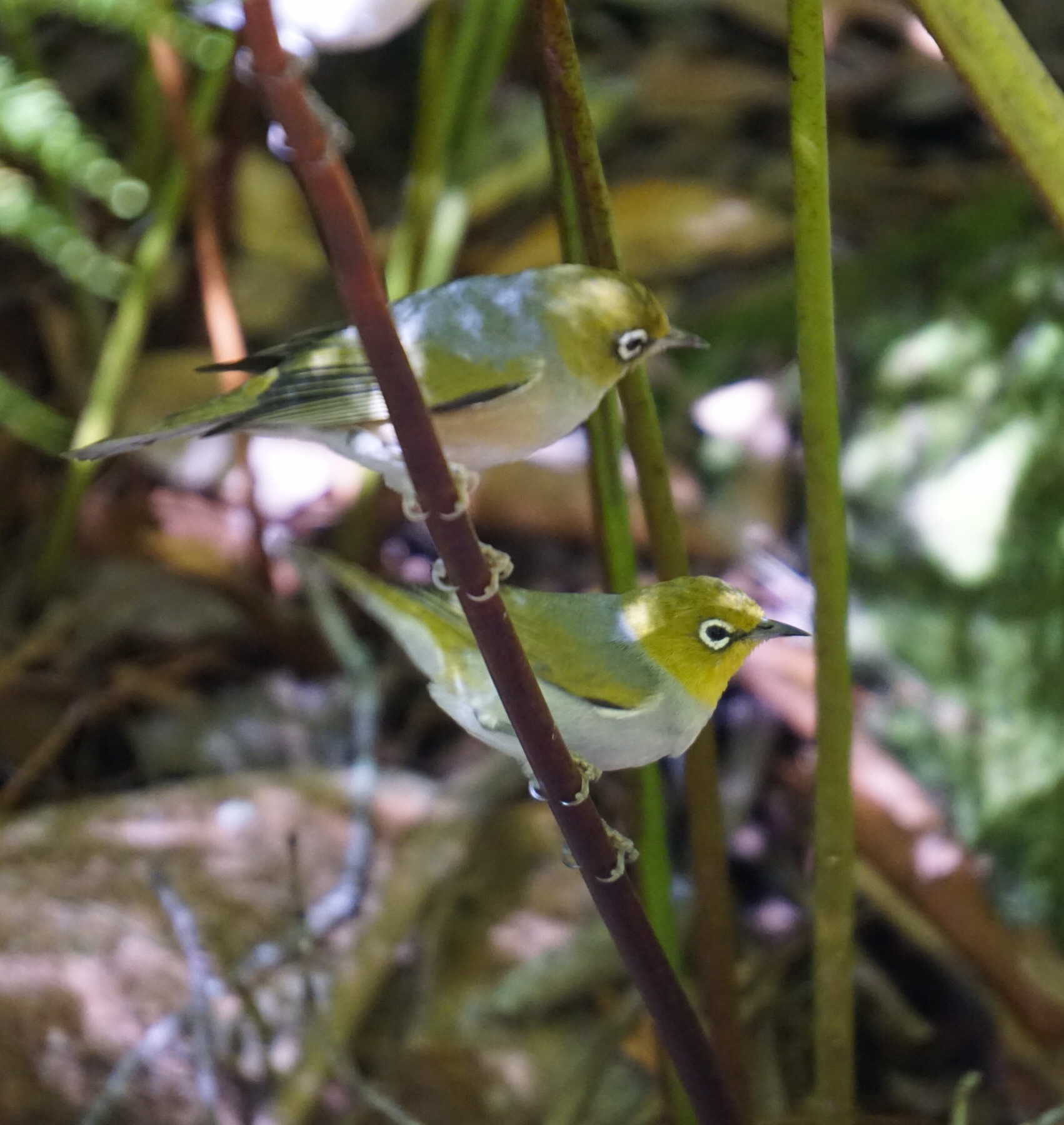
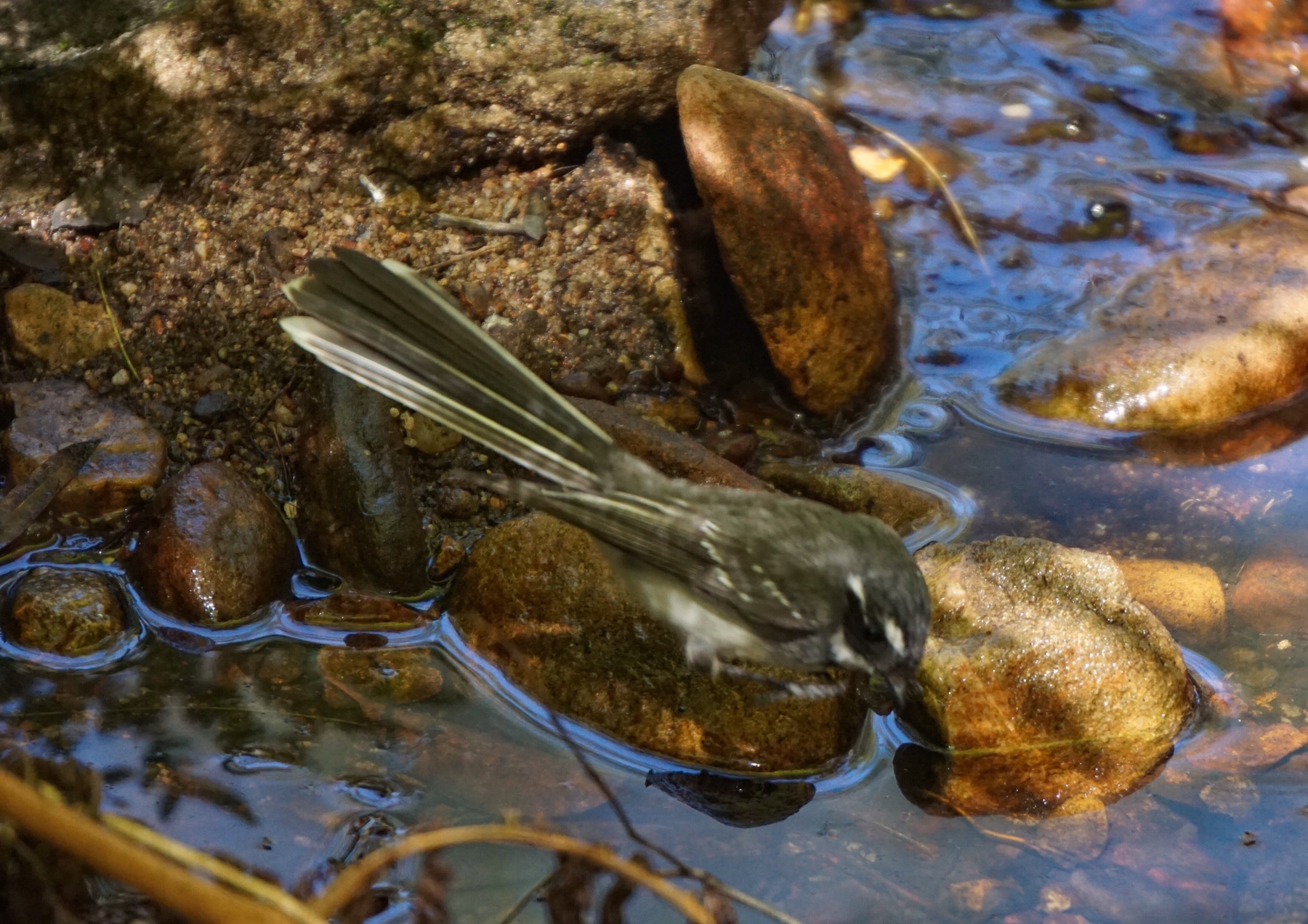
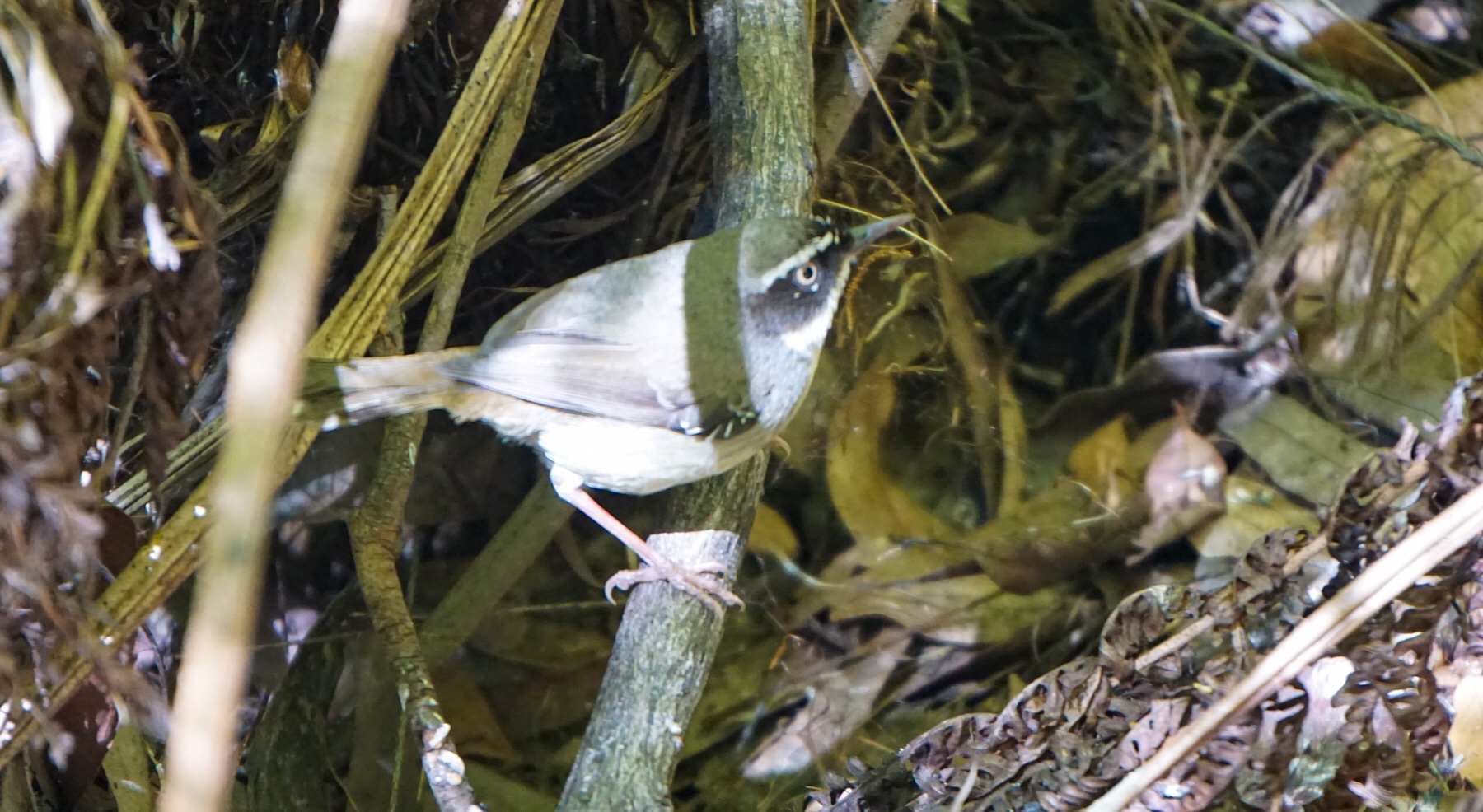 Six kilometres later we were back at camp for a relax. This is one of the nicest places we have parked our mobile apartment in a long while, surrounded by tall gum trees, dappled sunlight and high sandstone walls providing a picturesque backdrop. As we sat outside with a cup of tea a couple we had seen on our walk strolled past, the American man inviting Mark to join him on a cycle up to the dam later on in the afternoon. Mark accepted his invitation, and jumped on his bike for a ride.I meanwhile finished baking an orange and almond cake, and left that to cool while I went off on another 6km walk.
Six kilometres later we were back at camp for a relax. This is one of the nicest places we have parked our mobile apartment in a long while, surrounded by tall gum trees, dappled sunlight and high sandstone walls providing a picturesque backdrop. As we sat outside with a cup of tea a couple we had seen on our walk strolled past, the American man inviting Mark to join him on a cycle up to the dam later on in the afternoon. Mark accepted his invitation, and jumped on his bike for a ride.I meanwhile finished baking an orange and almond cake, and left that to cool while I went off on another 6km walk.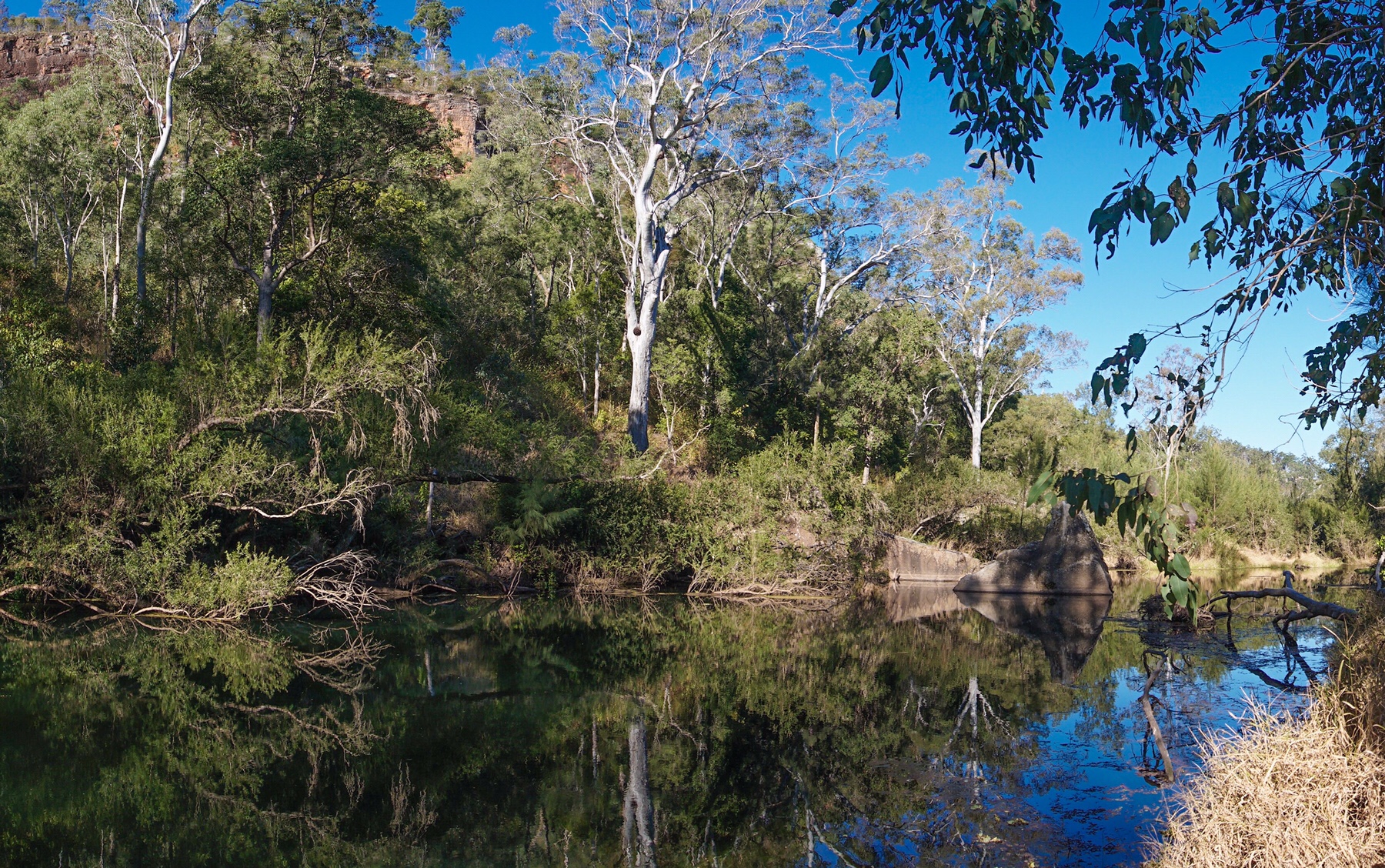
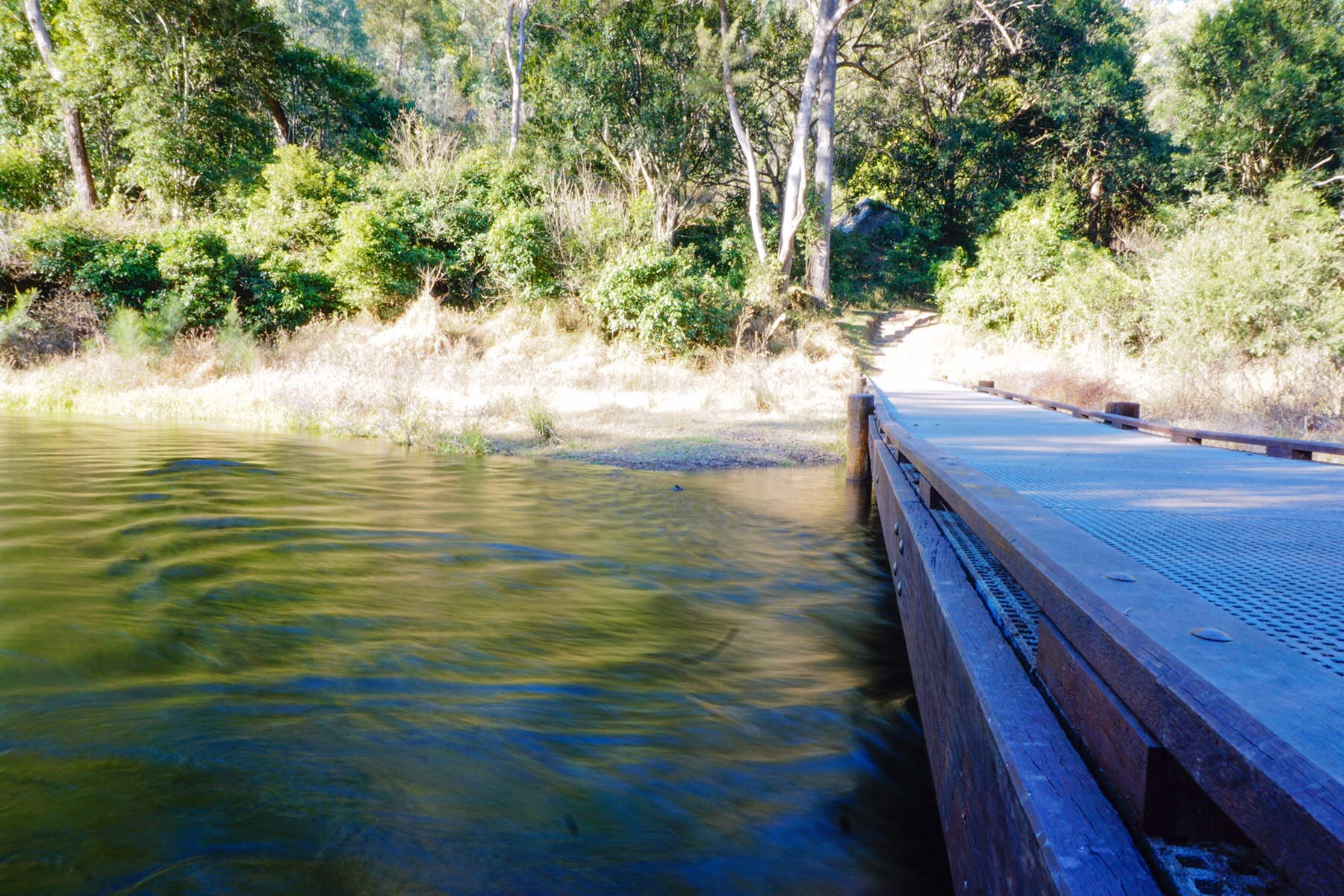
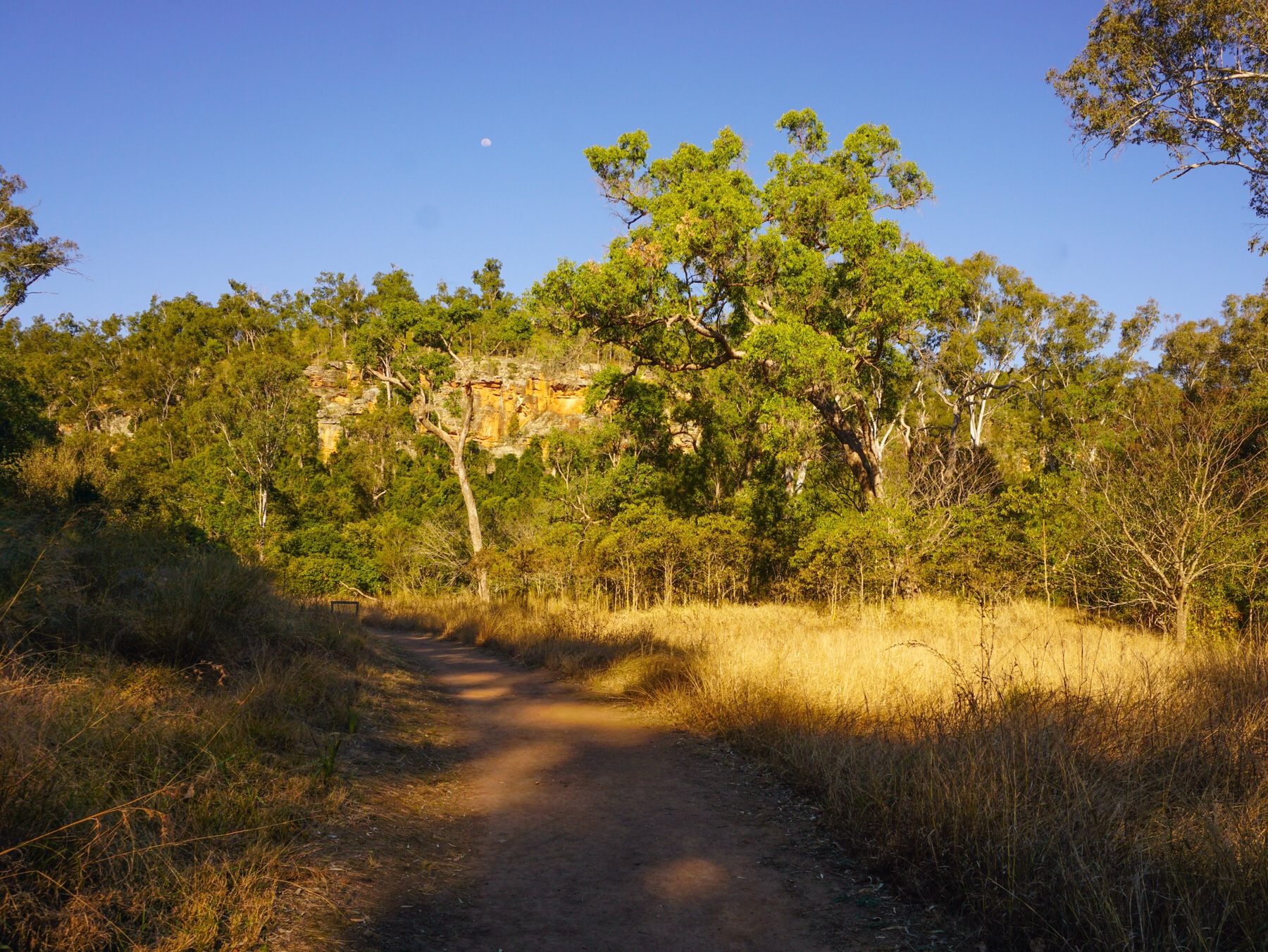 From there, I walked up to Dragon Cave, so named for the black ‘mural’ of a dragon up on the wall in there…with a little imagination. Generally I just enjoyed the clean fresh air, the sound of the birds and just being outdoors in the warm light of the late afternoon.
From there, I walked up to Dragon Cave, so named for the black ‘mural’ of a dragon up on the wall in there…with a little imagination. Generally I just enjoyed the clean fresh air, the sound of the birds and just being outdoors in the warm light of the late afternoon.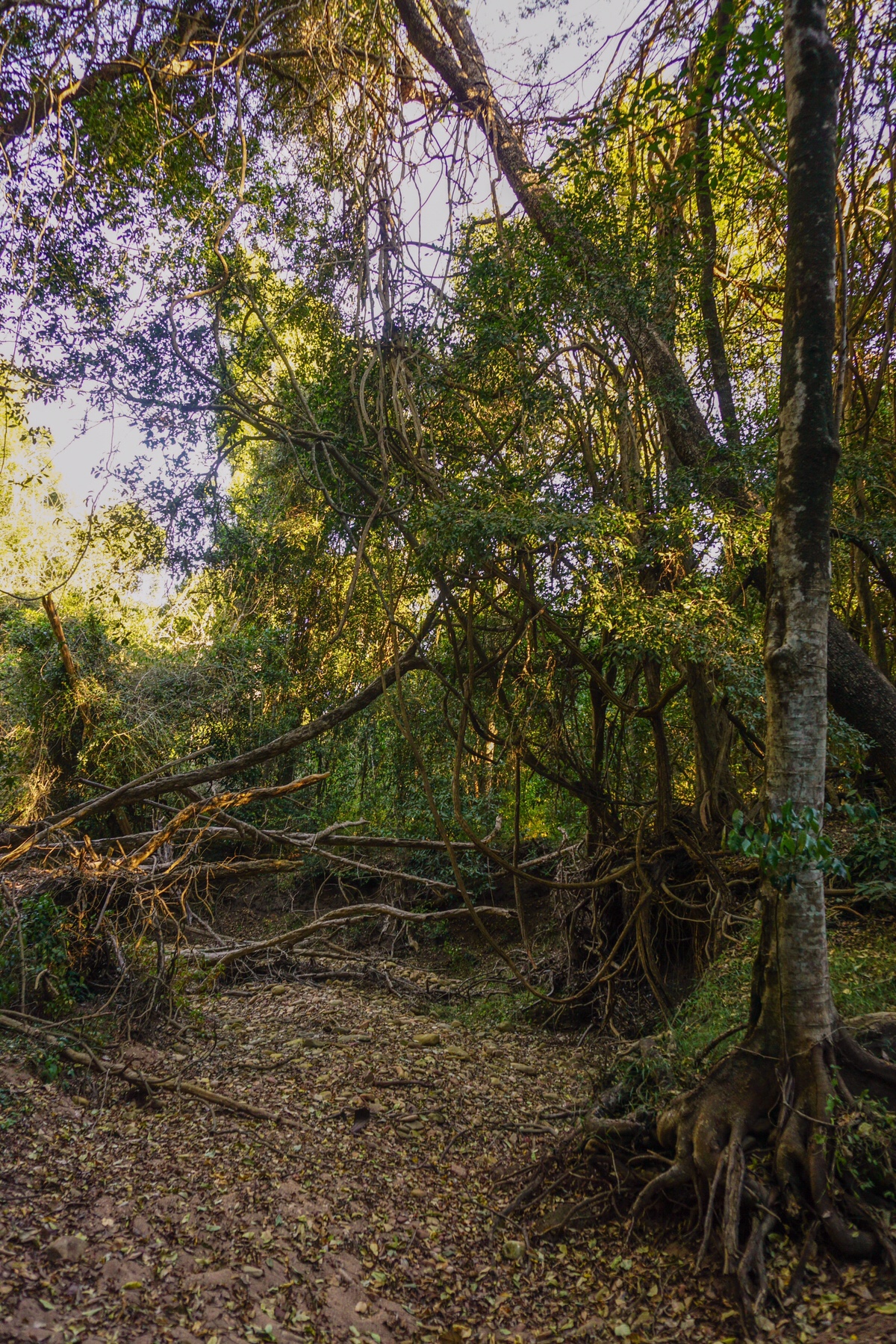
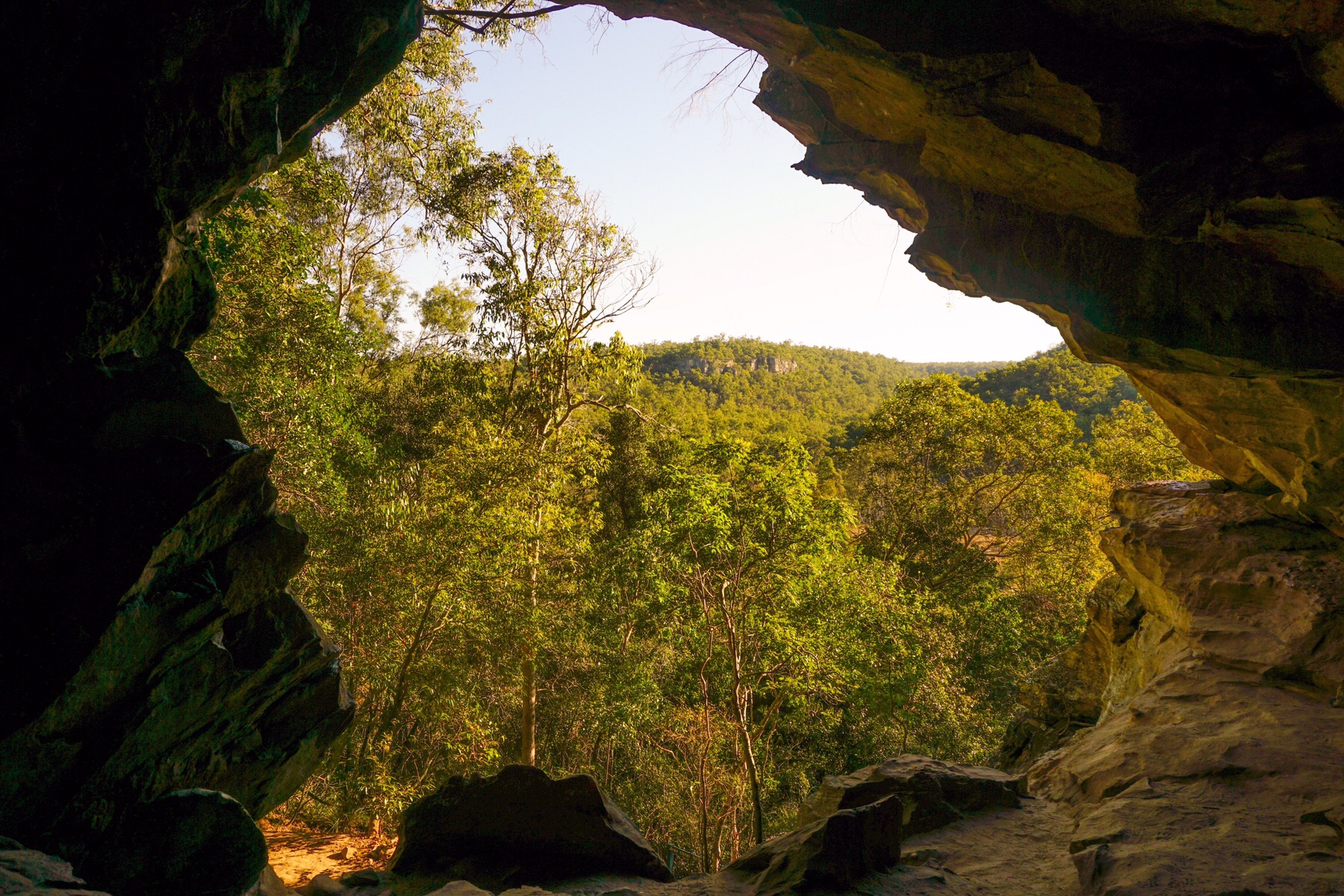
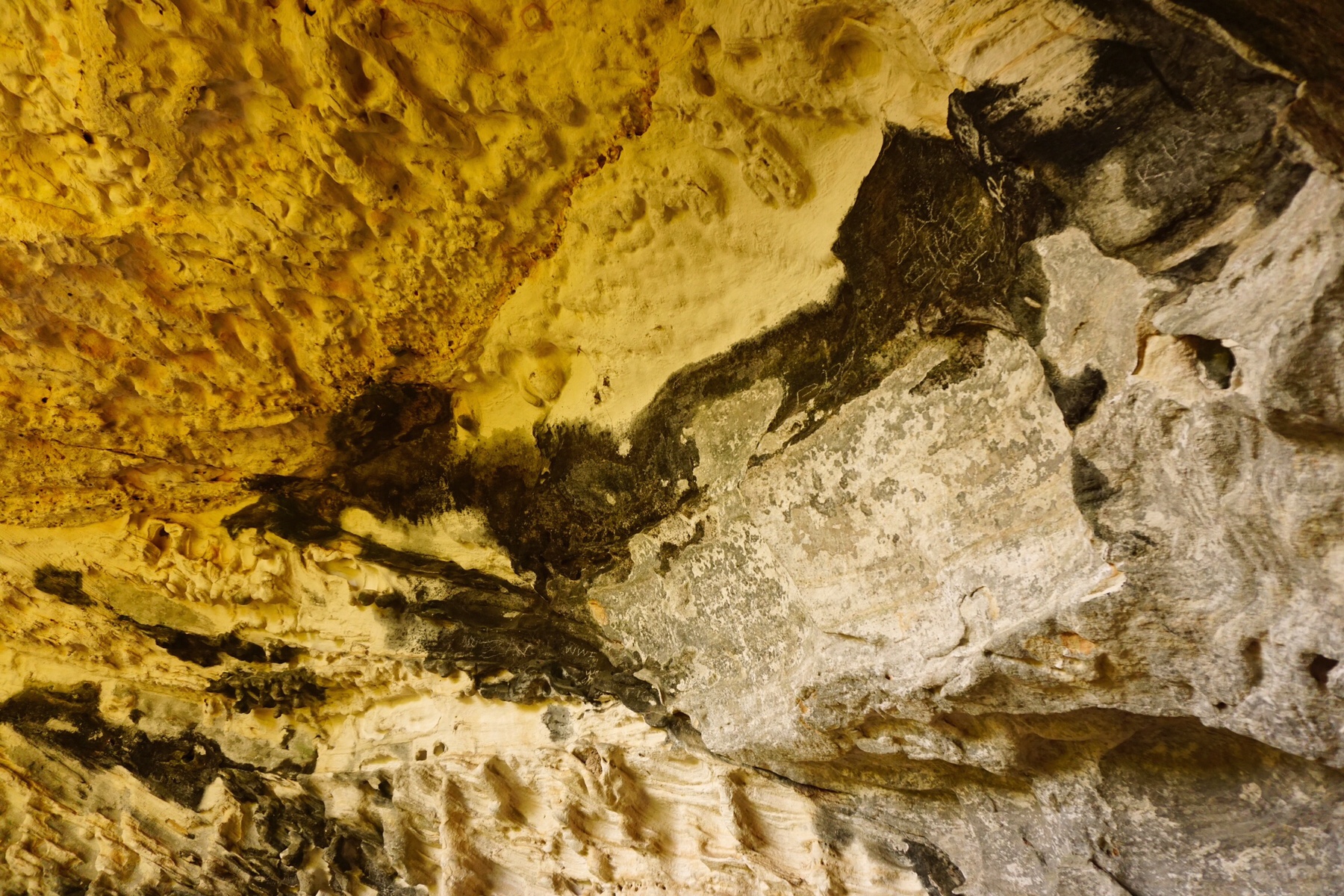
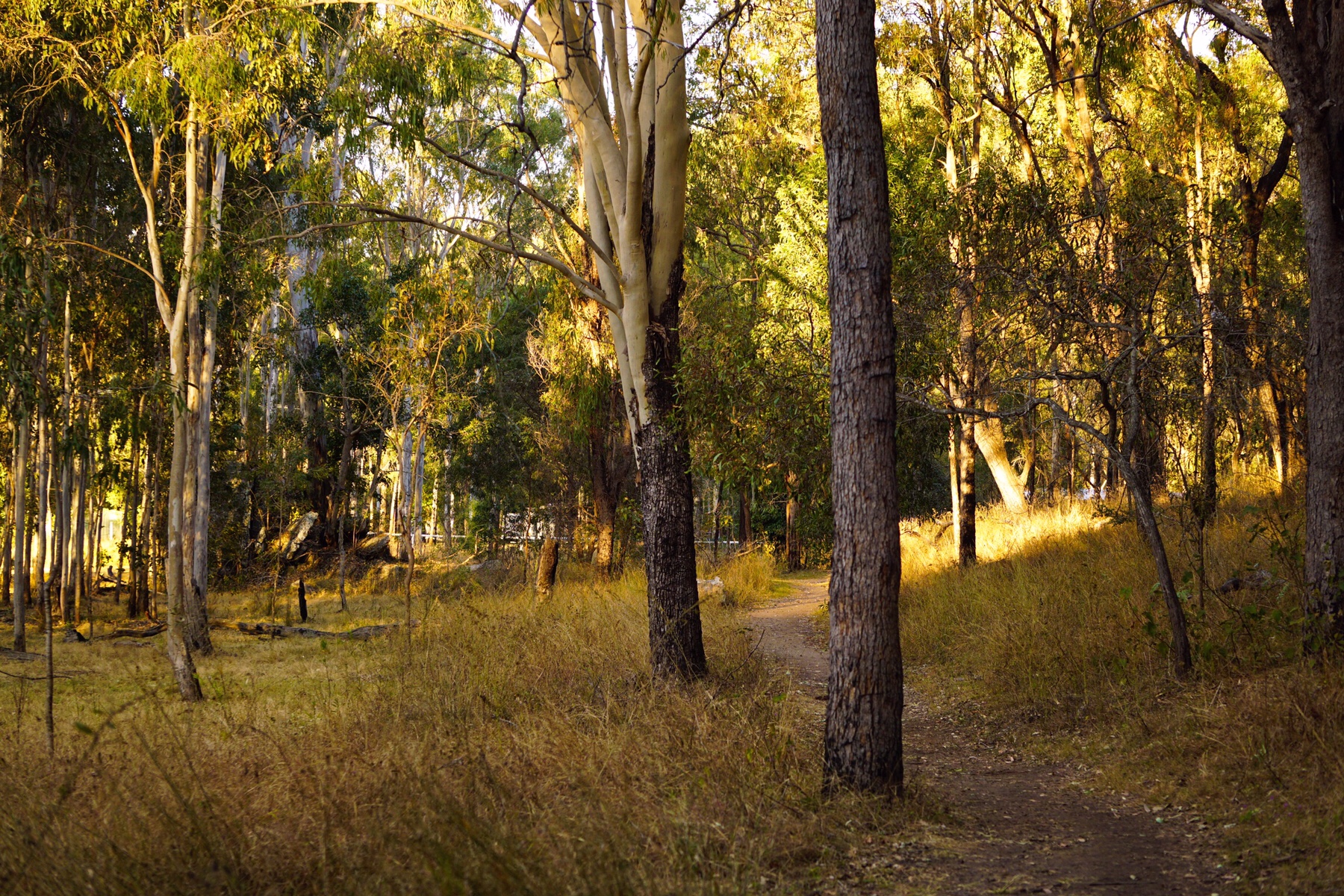 I reached camp just as the sun was setting, and Mr A was already sipping a glass of French red wine with his cycling partner and some other neighbours. It turns out the cyclist, Ben, works with mutual friends in Sydney. What a small world!
I reached camp just as the sun was setting, and Mr A was already sipping a glass of French red wine with his cycling partner and some other neighbours. It turns out the cyclist, Ben, works with mutual friends in Sydney. What a small world!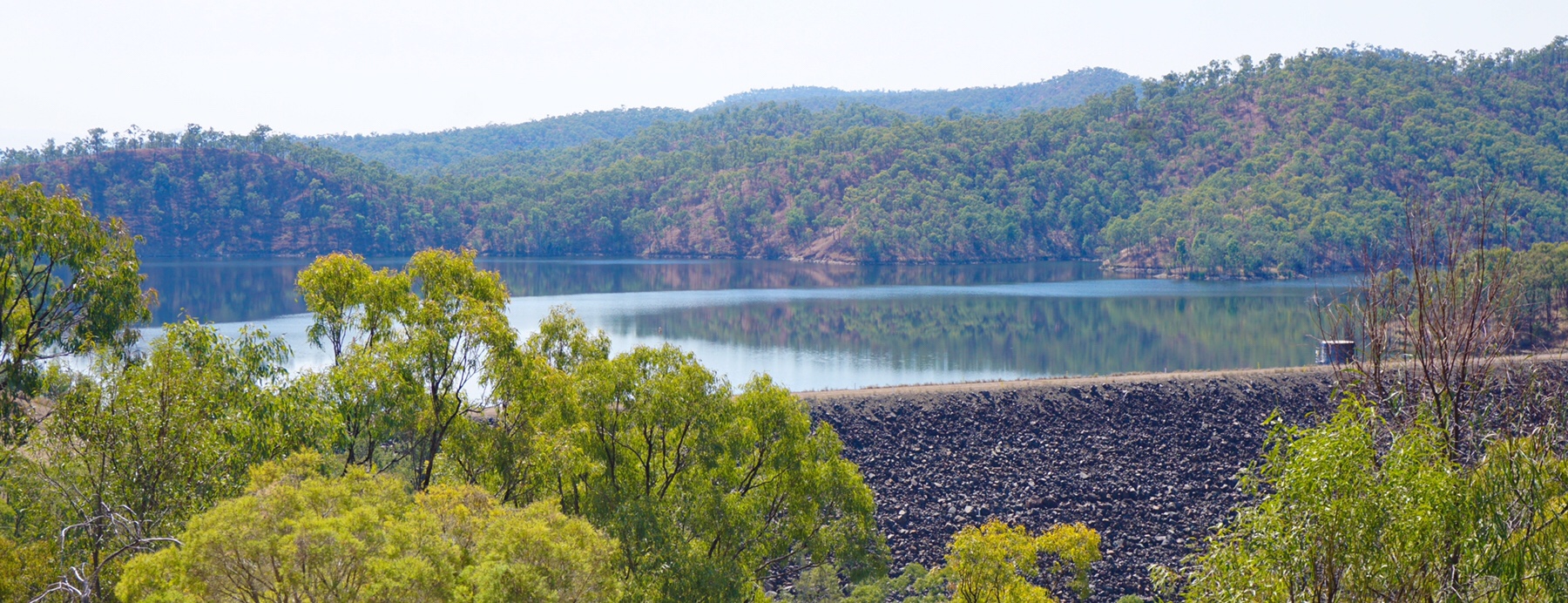
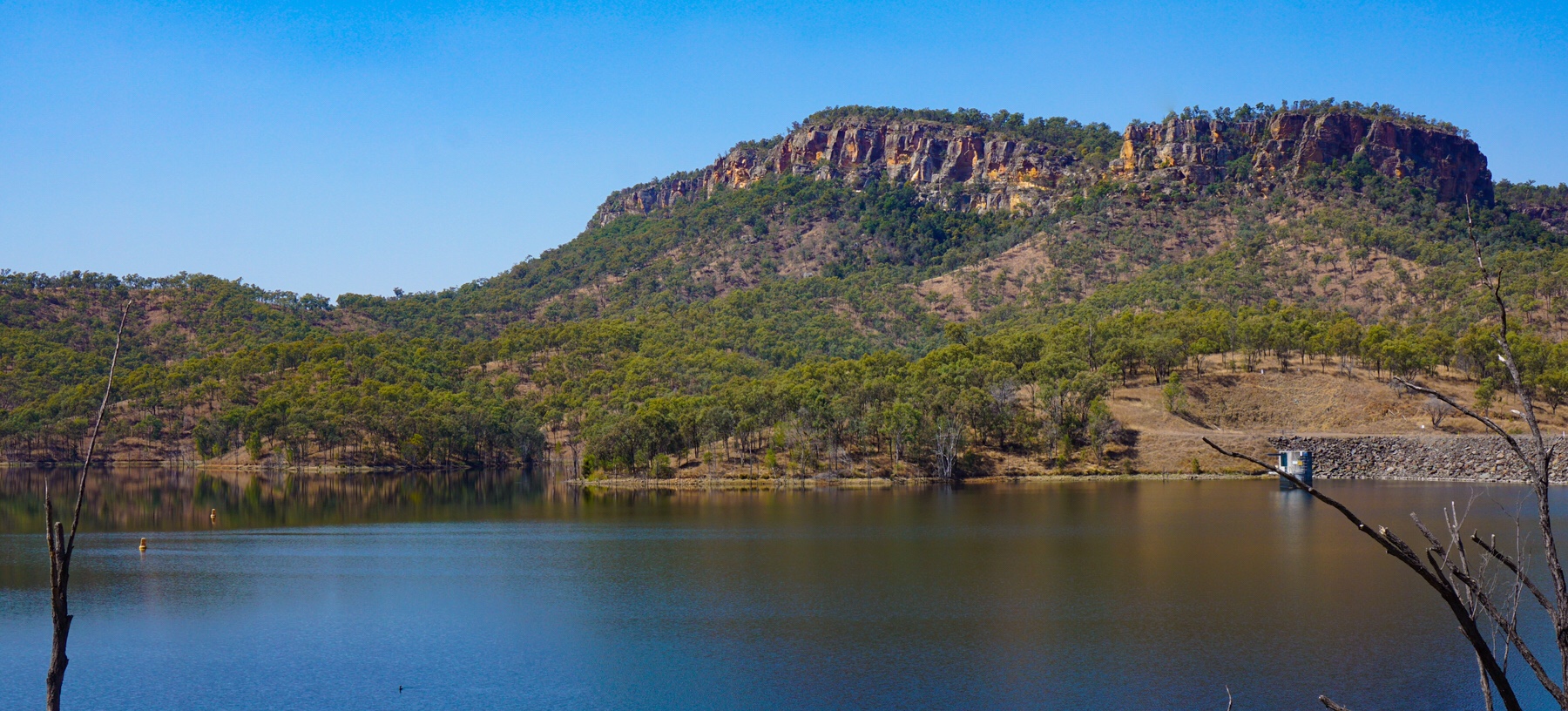
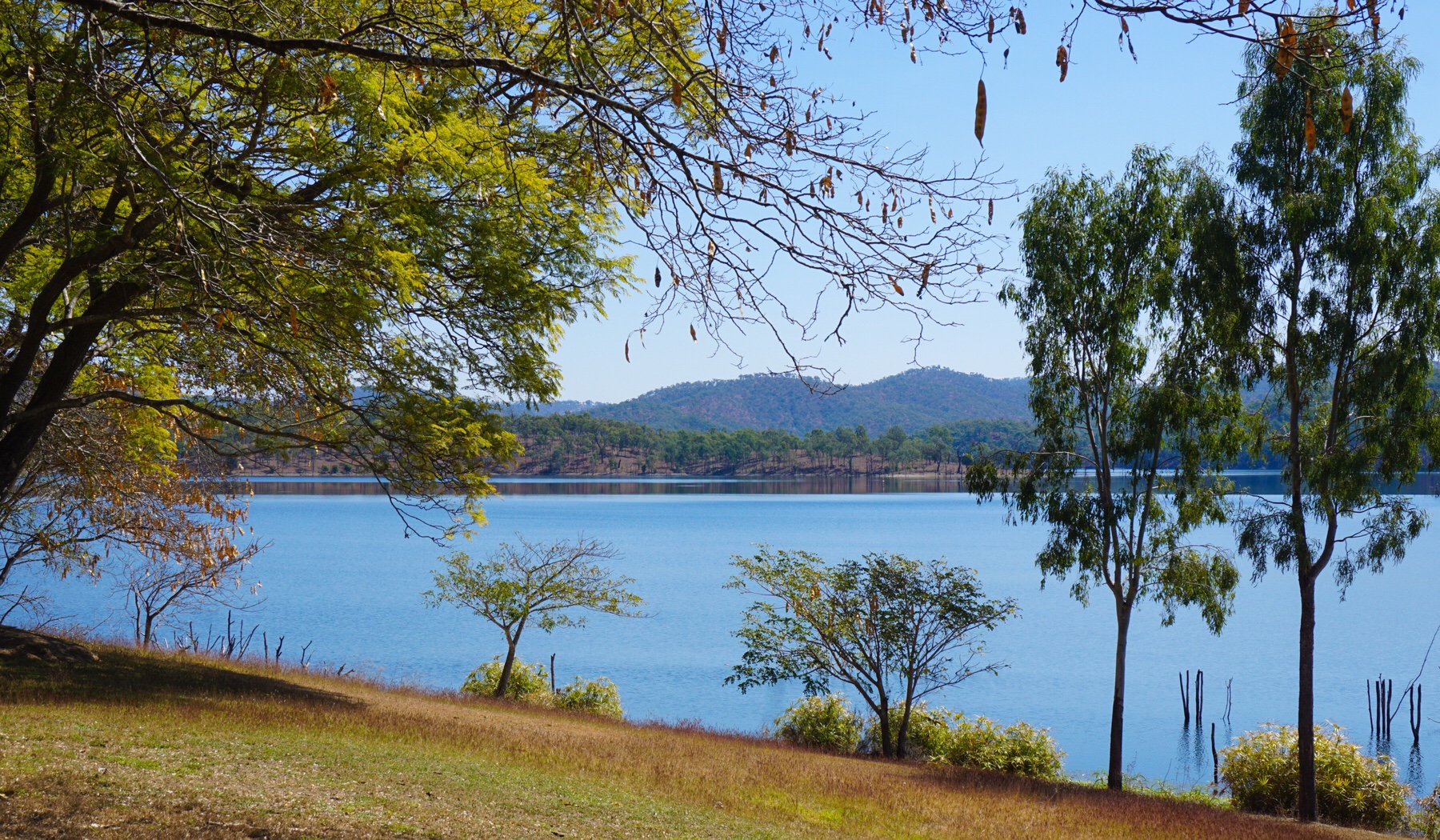 Cania Gorge had a gold rush in the 1870s, and the remnants were visible on a short walk. There was little gold here, with 183.5 tons of rock yielding only around 4.3kg of gold – a lot of work for little reward under gruelling conditions. Today felt pretty warm at about 25 degrees centigrade in the middle of winter. We had a wander around, then headed off to do another, longer walk.
Cania Gorge had a gold rush in the 1870s, and the remnants were visible on a short walk. There was little gold here, with 183.5 tons of rock yielding only around 4.3kg of gold – a lot of work for little reward under gruelling conditions. Today felt pretty warm at about 25 degrees centigrade in the middle of winter. We had a wander around, then headed off to do another, longer walk.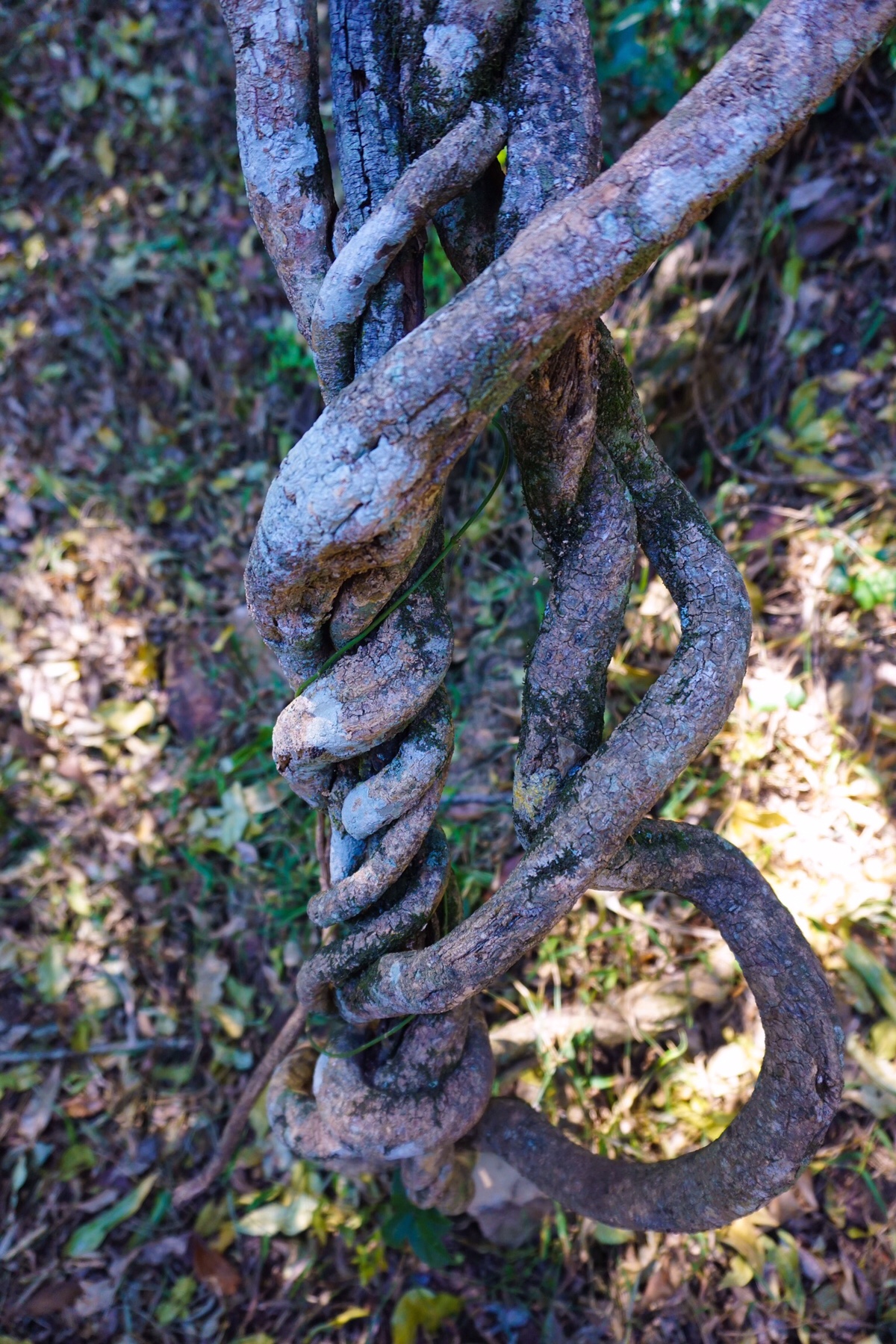
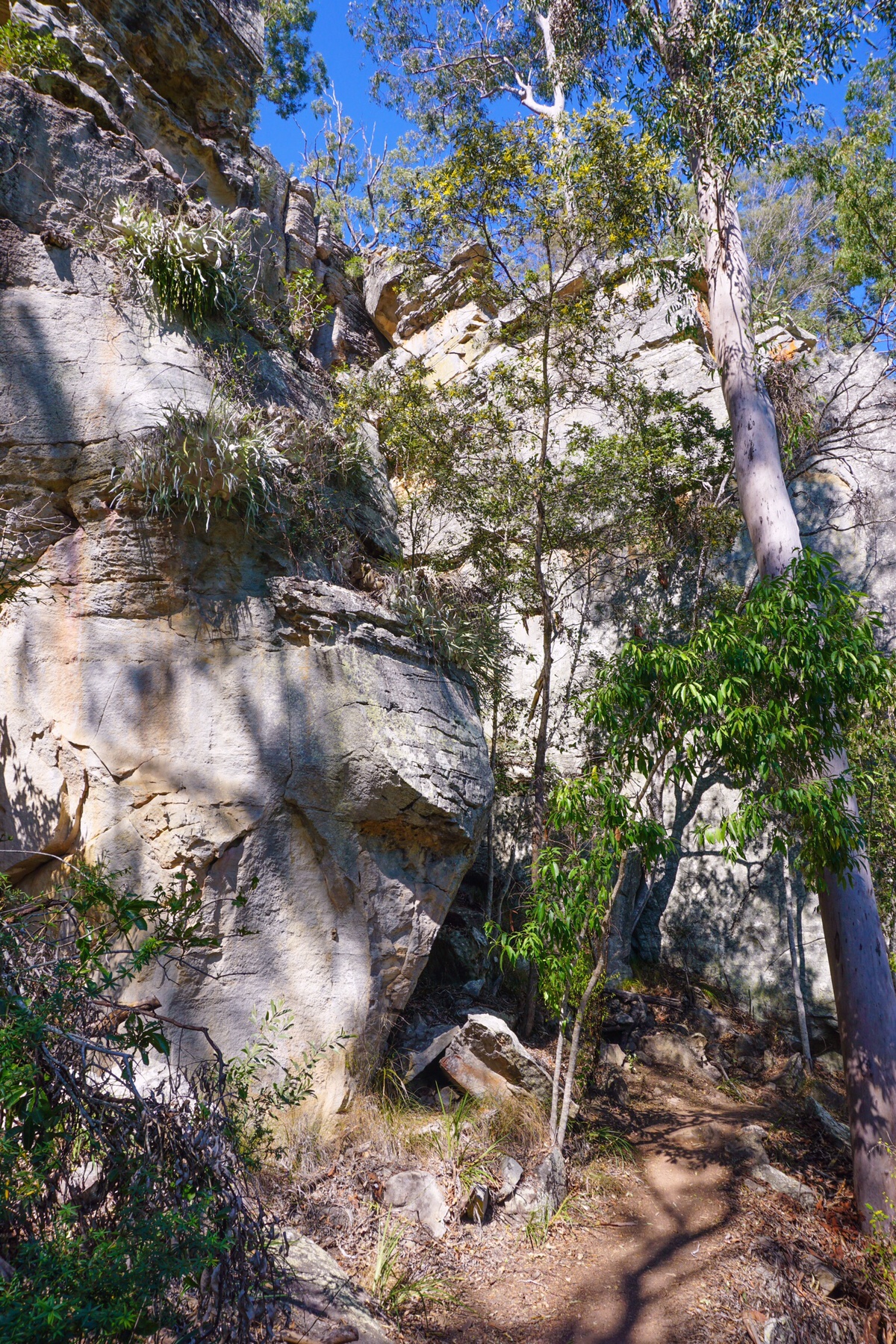
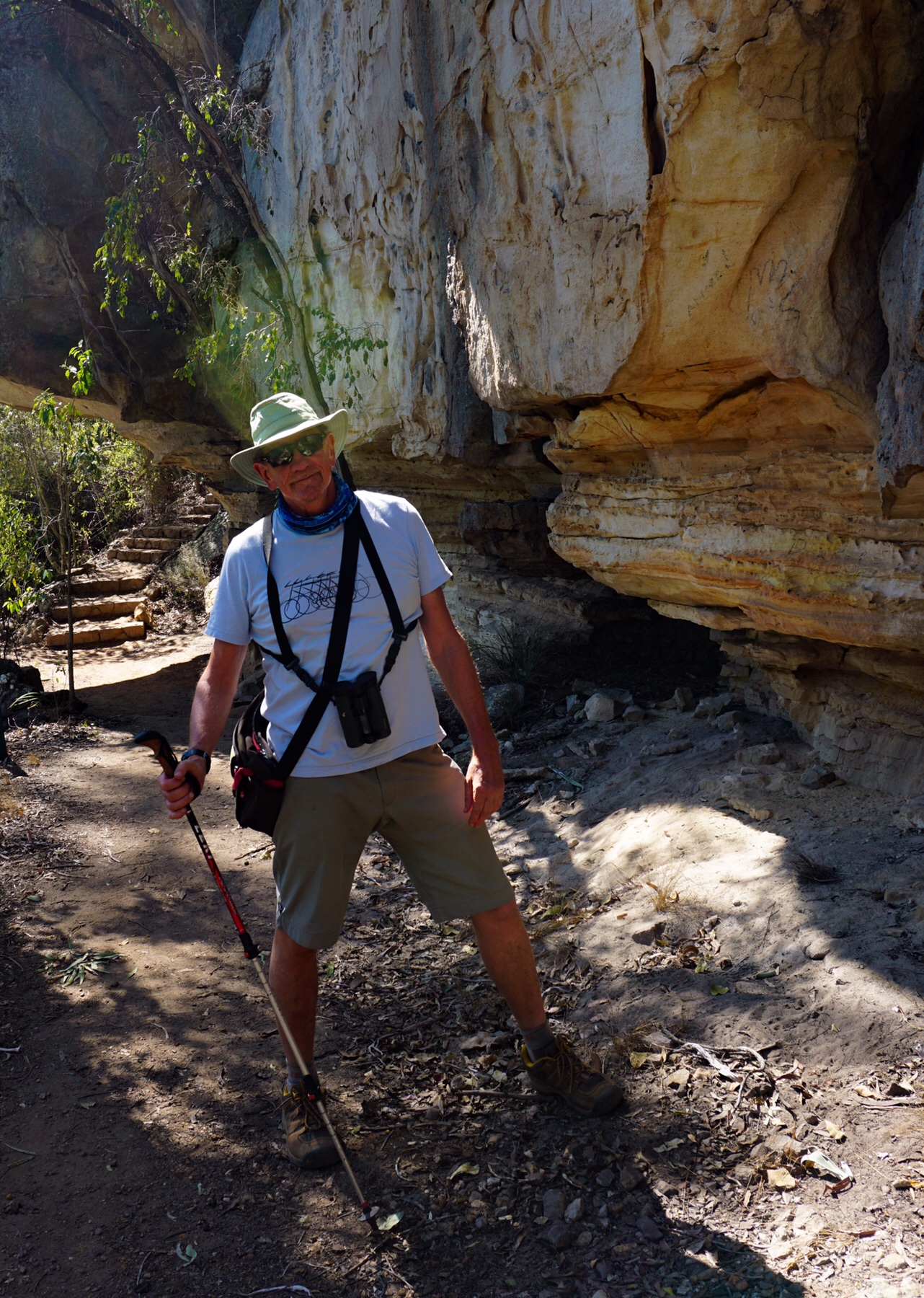
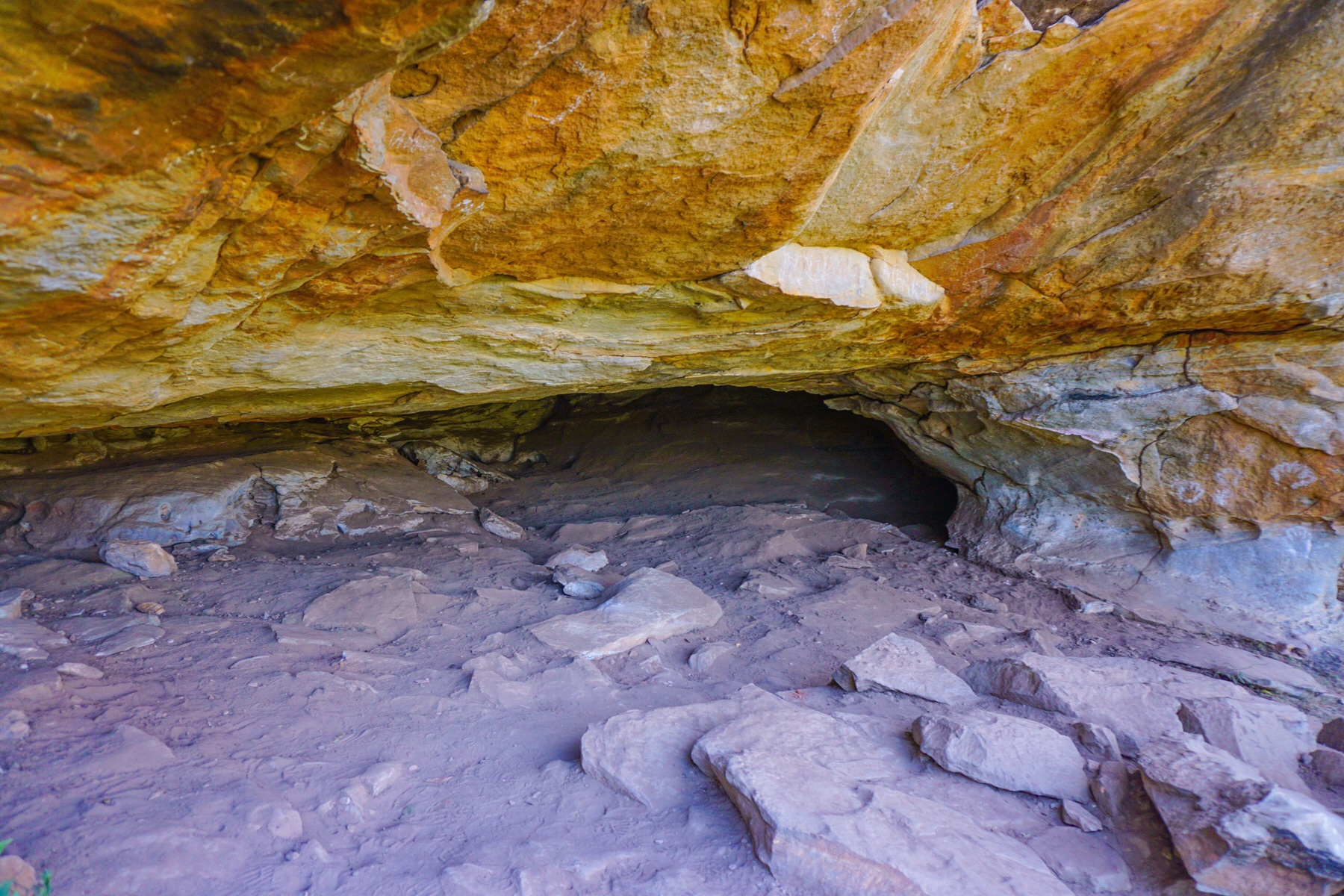
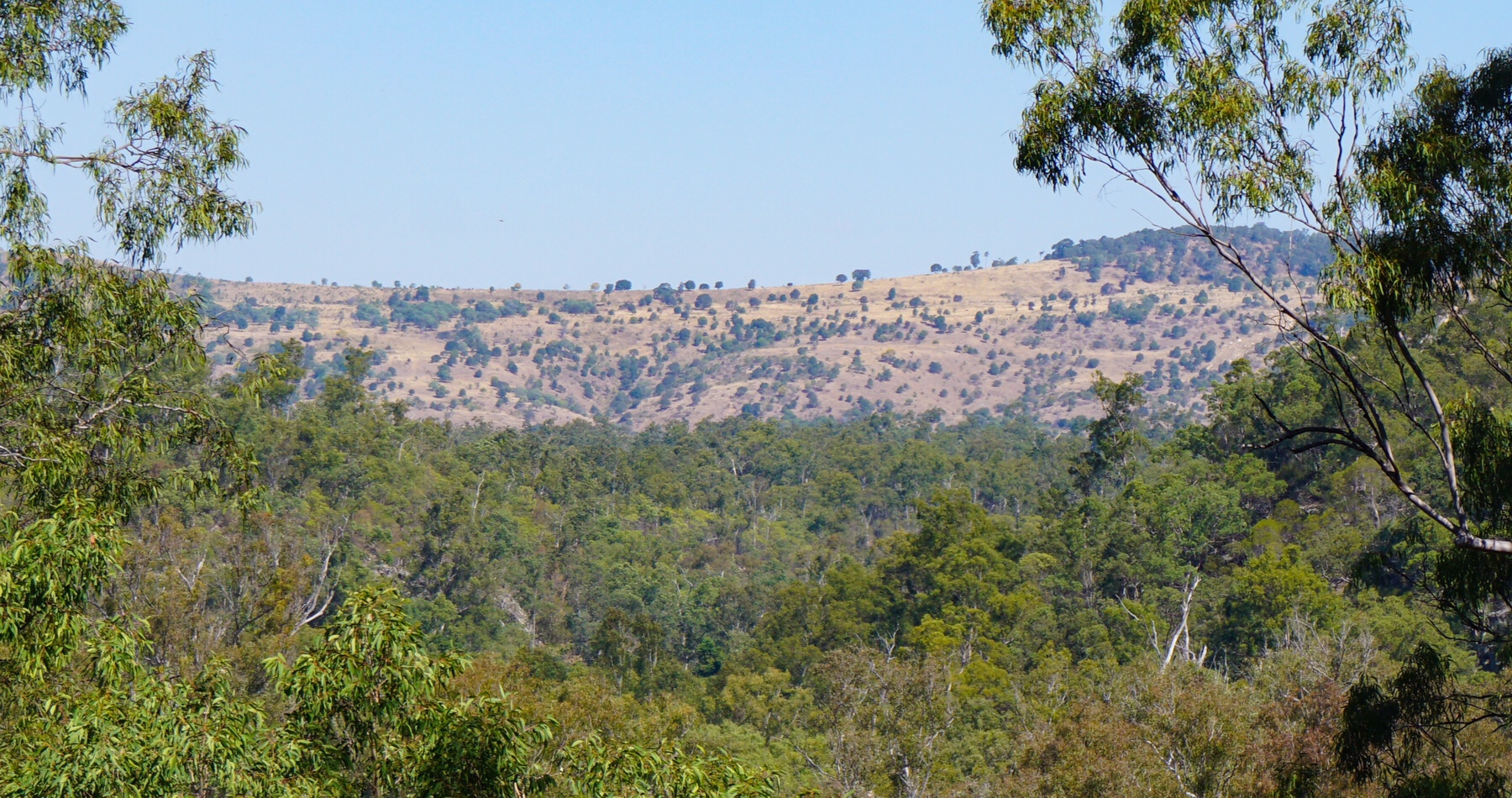 We hiked up to a lookout giving us a fabulous view across this little National Park, before returning to camp.
We hiked up to a lookout giving us a fabulous view across this little National Park, before returning to camp.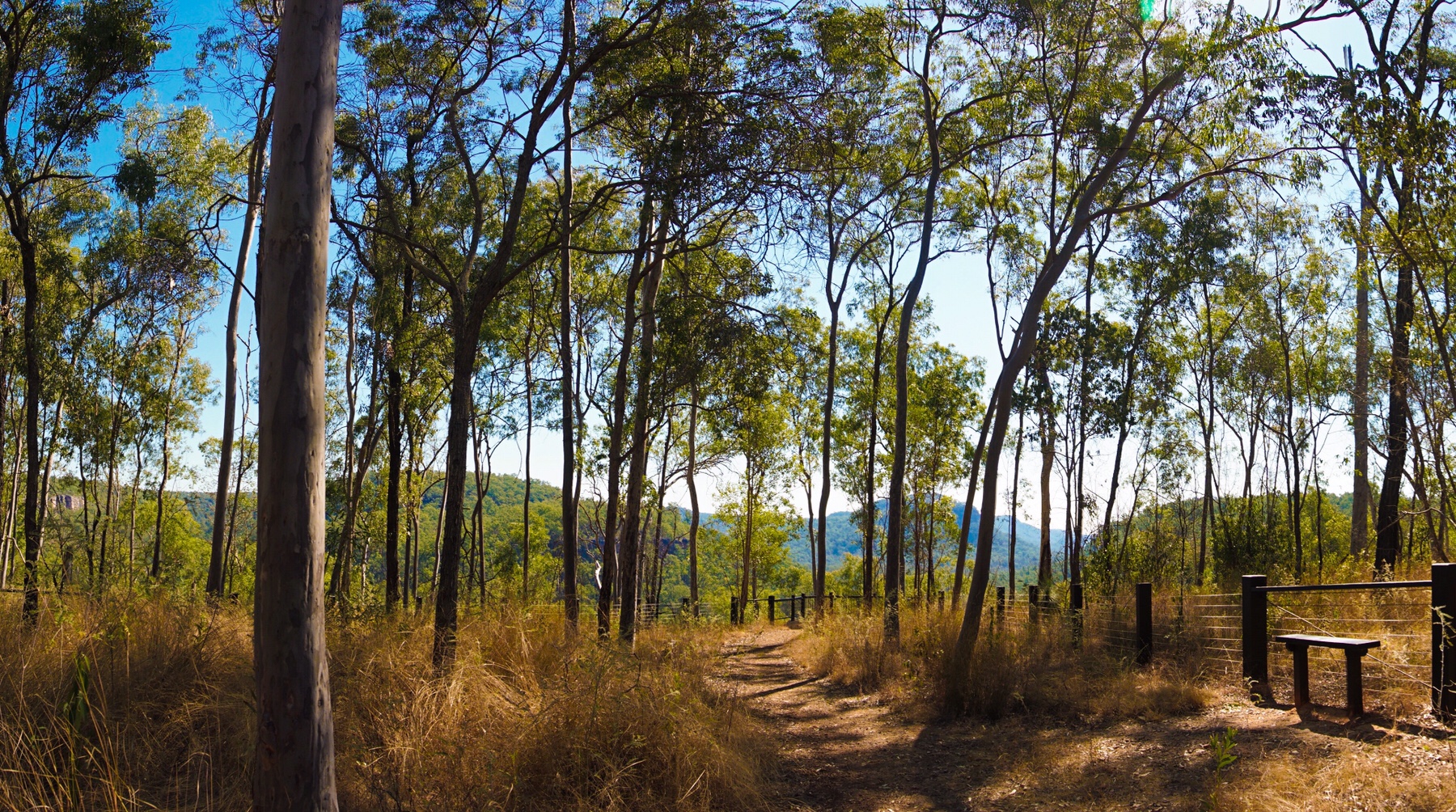
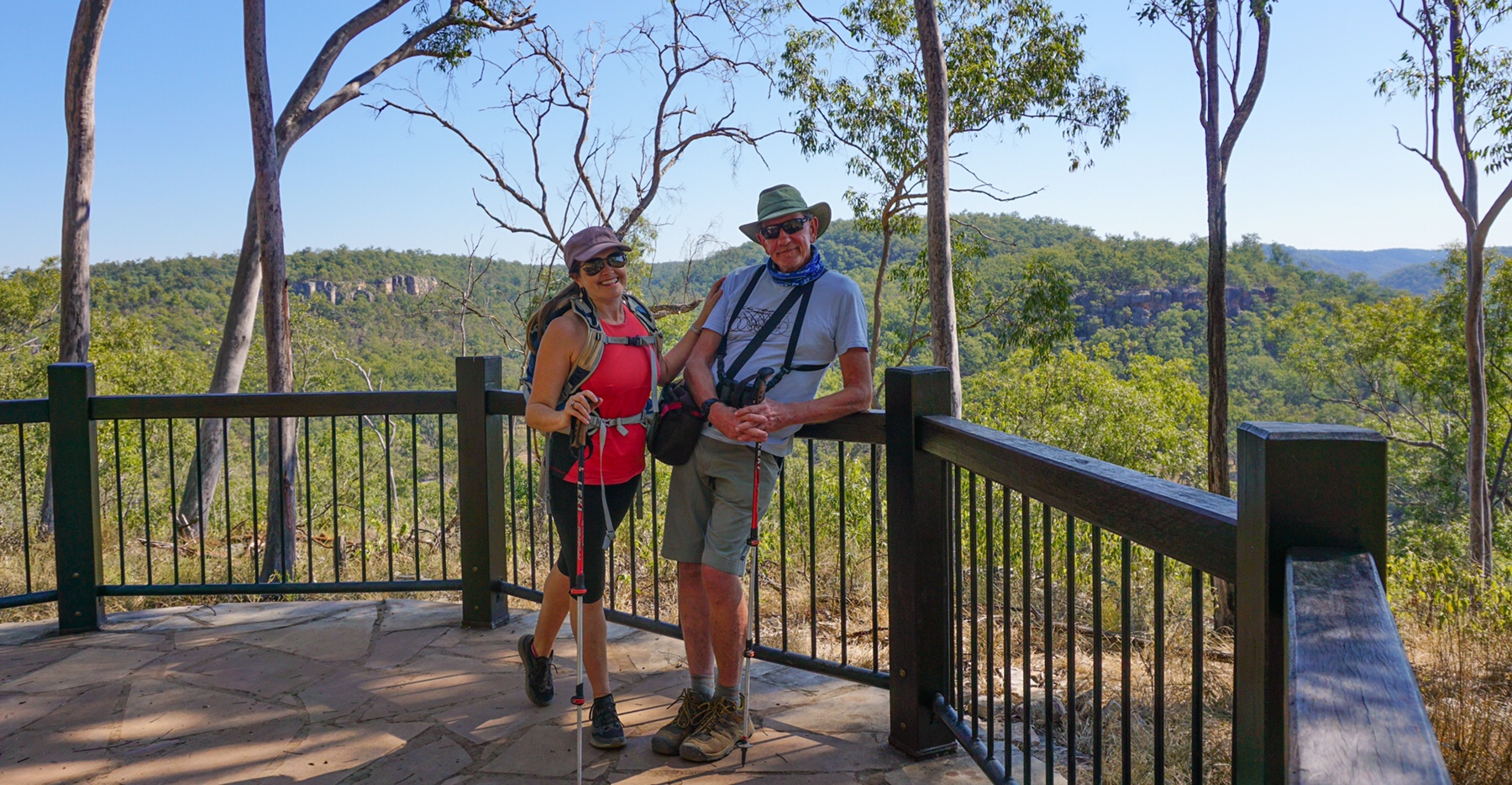
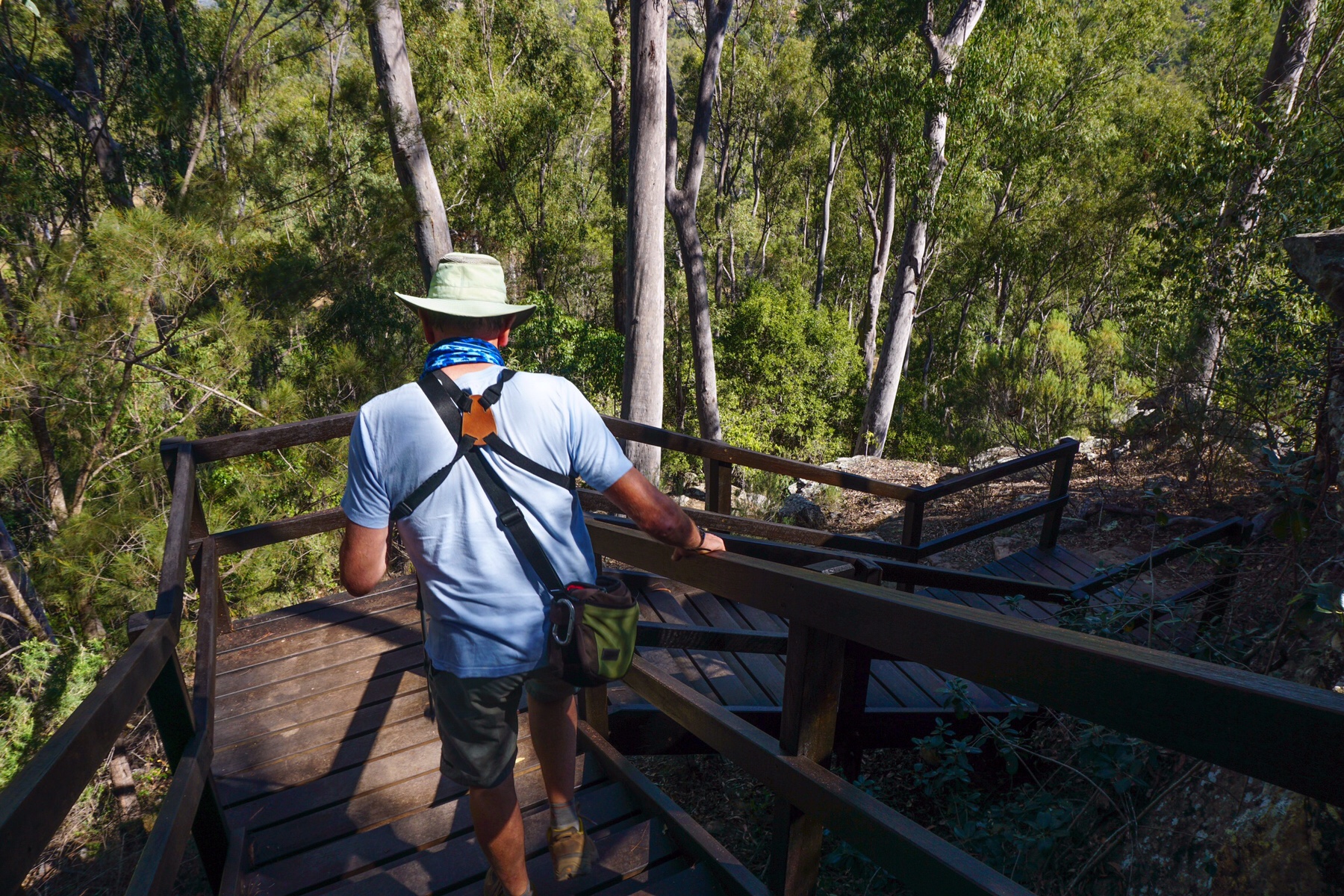
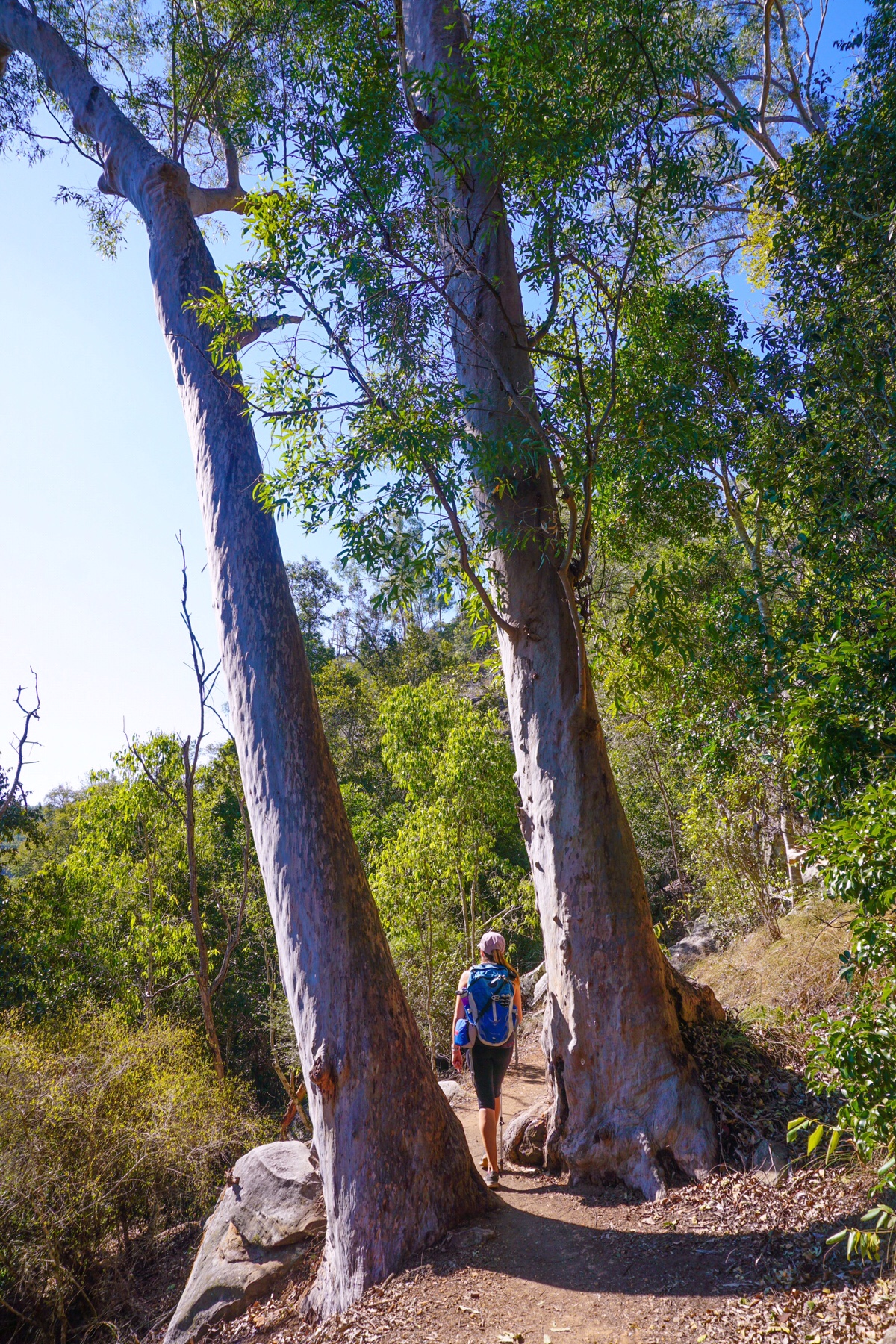
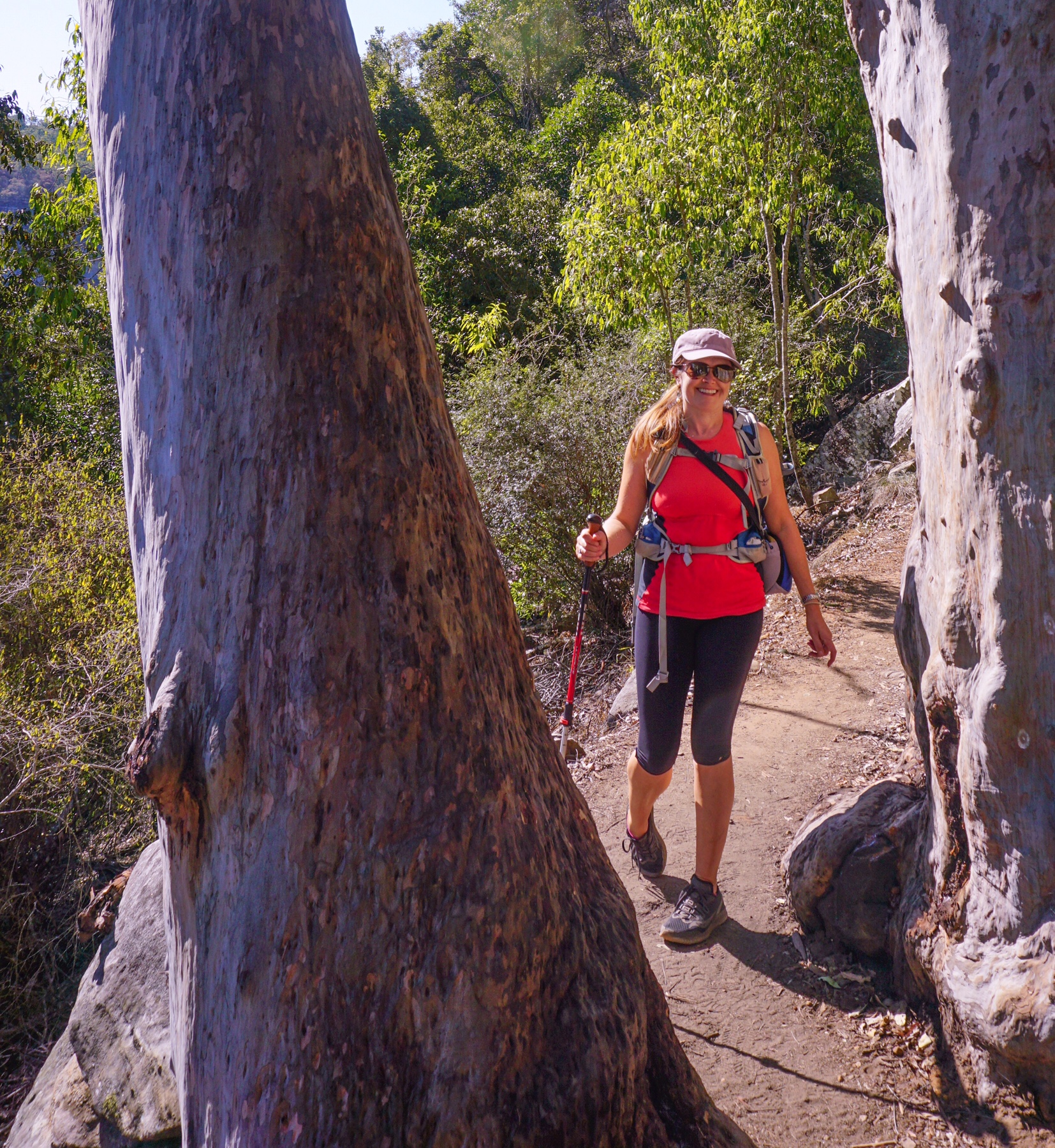
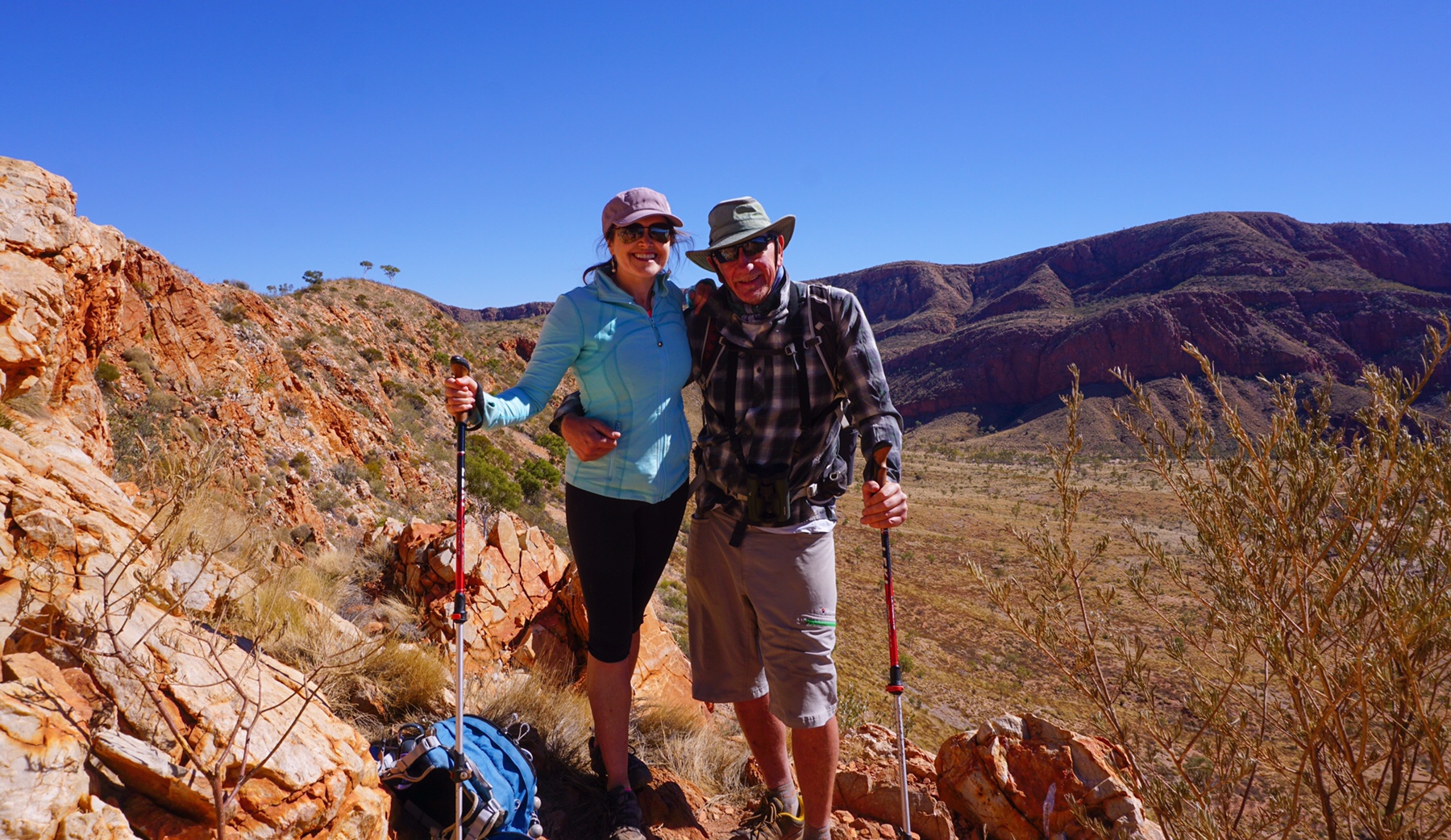
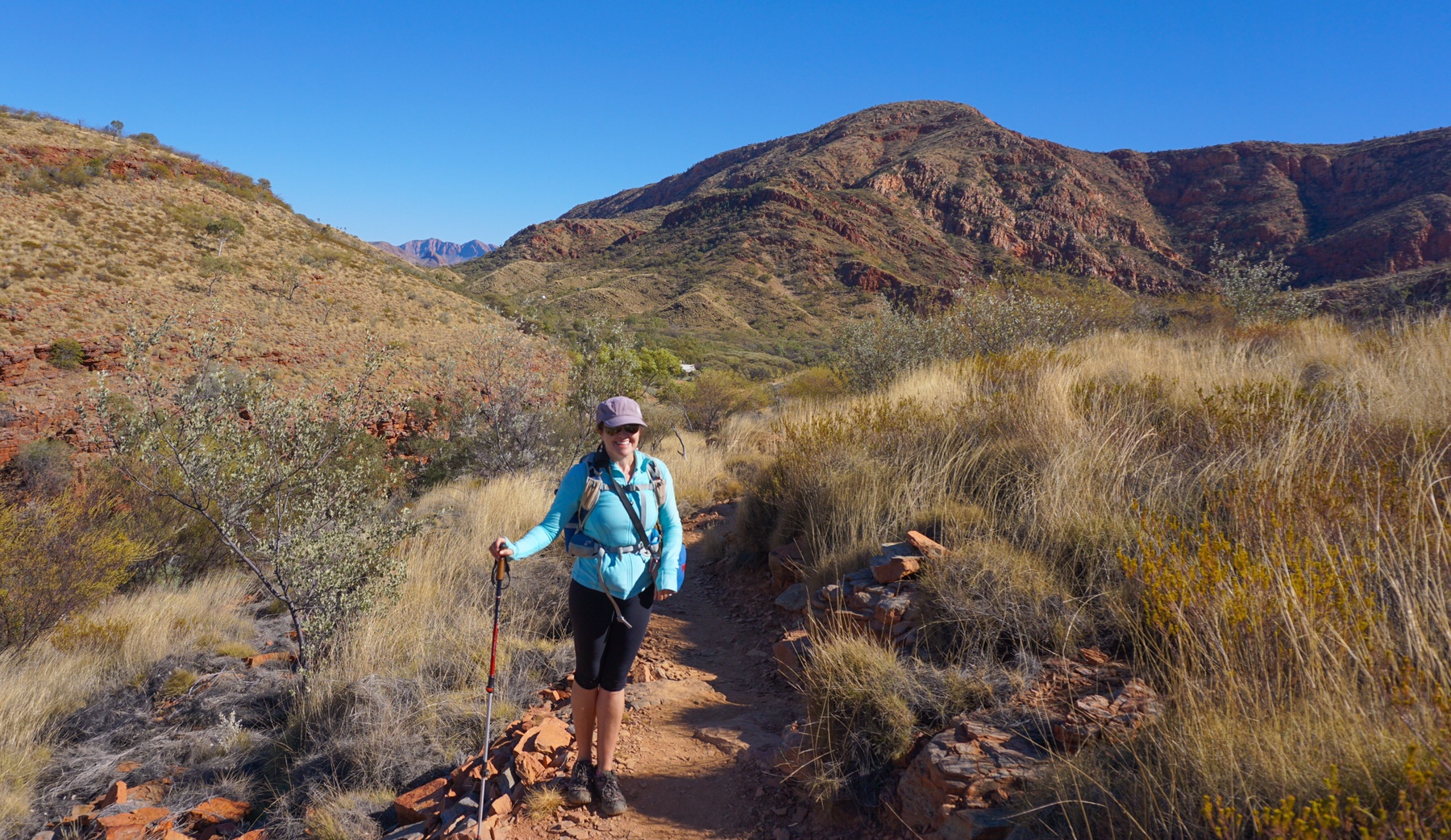
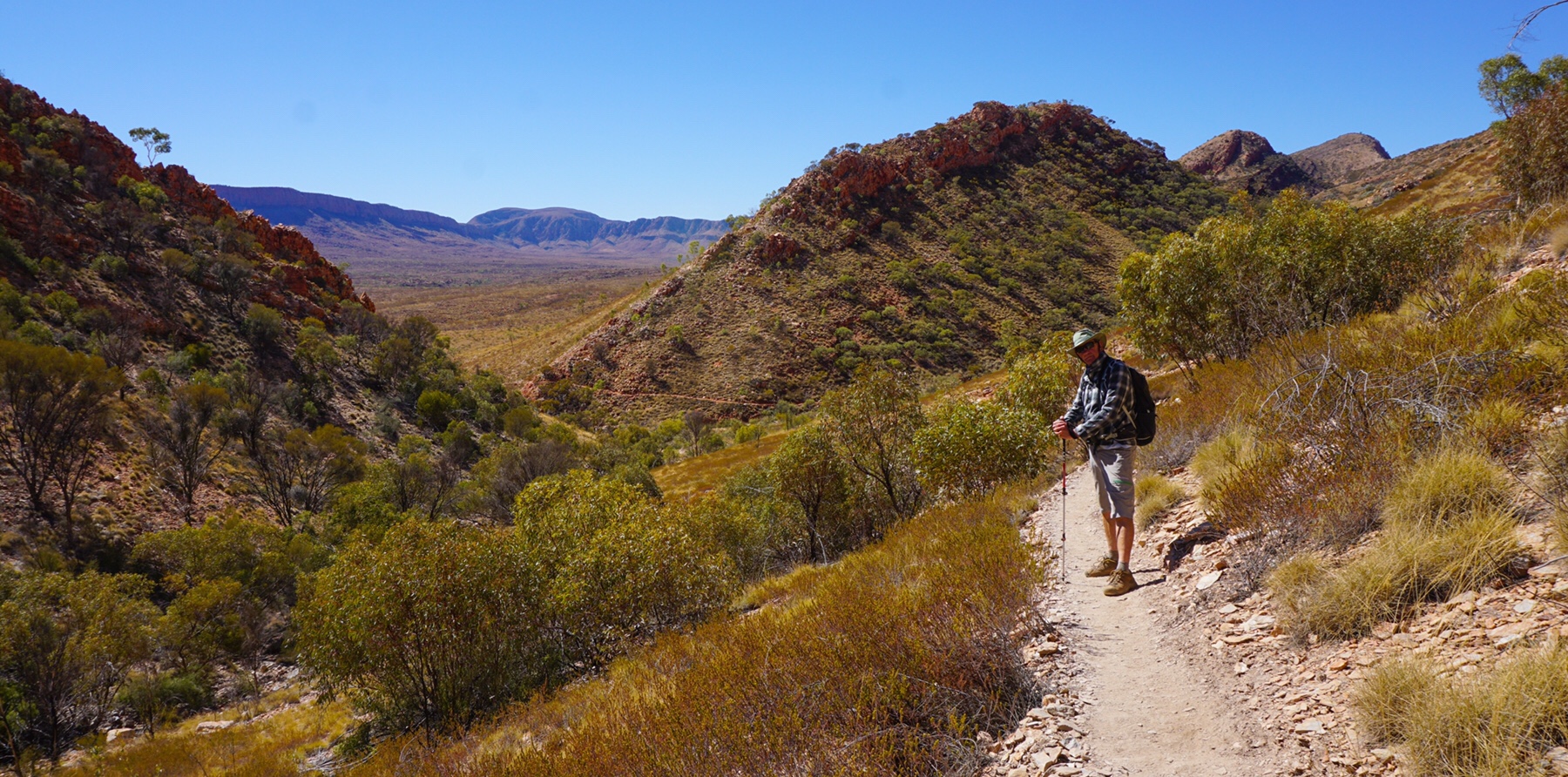 The circuit takes you firstly high up onto the walls of the Pound for spectacular views, before dropping down and winding its way across to a dry river bed, where you rock hop back to the beginning via some permanent water holes – like gold dust in this arid landscape.
The circuit takes you firstly high up onto the walls of the Pound for spectacular views, before dropping down and winding its way across to a dry river bed, where you rock hop back to the beginning via some permanent water holes – like gold dust in this arid landscape.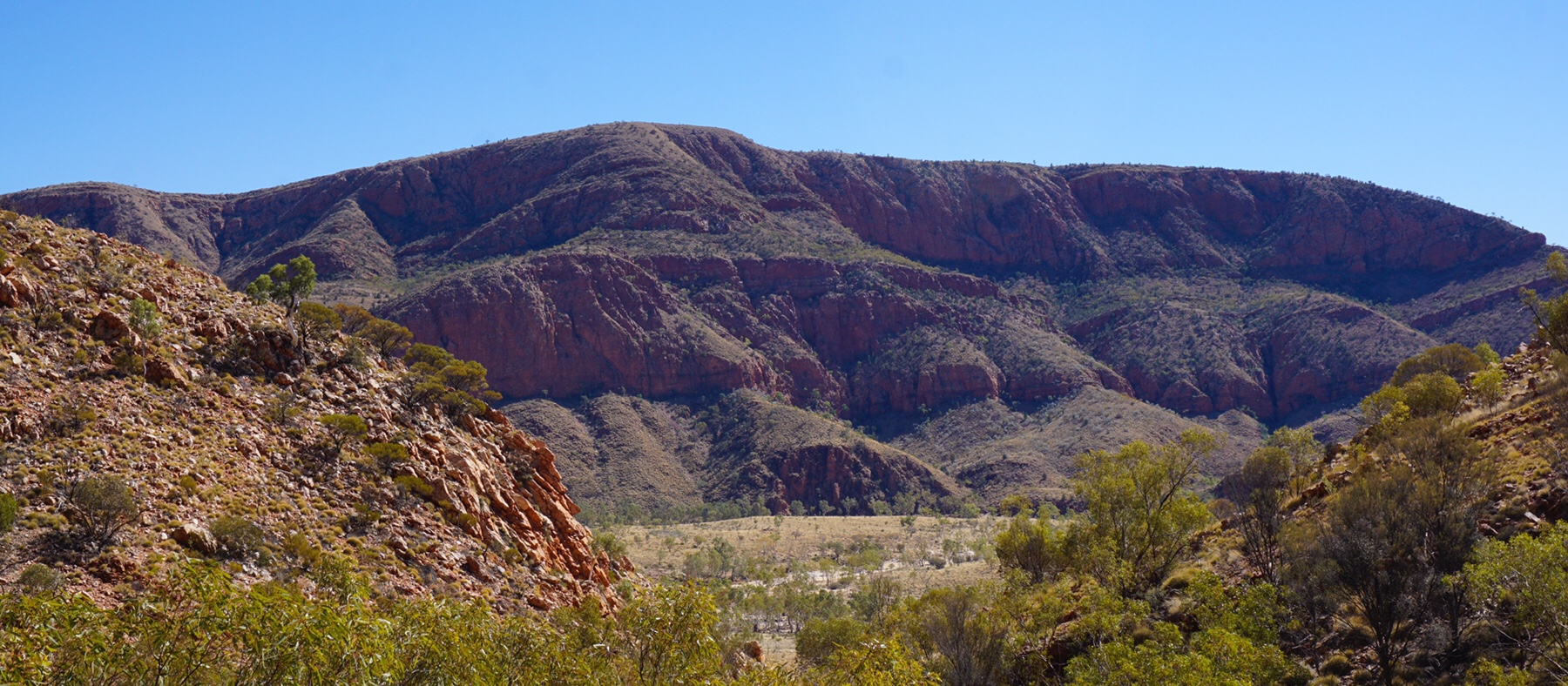
 The colours are so vivid in this incredible air, not polluted by traffic or smoke.
The colours are so vivid in this incredible air, not polluted by traffic or smoke.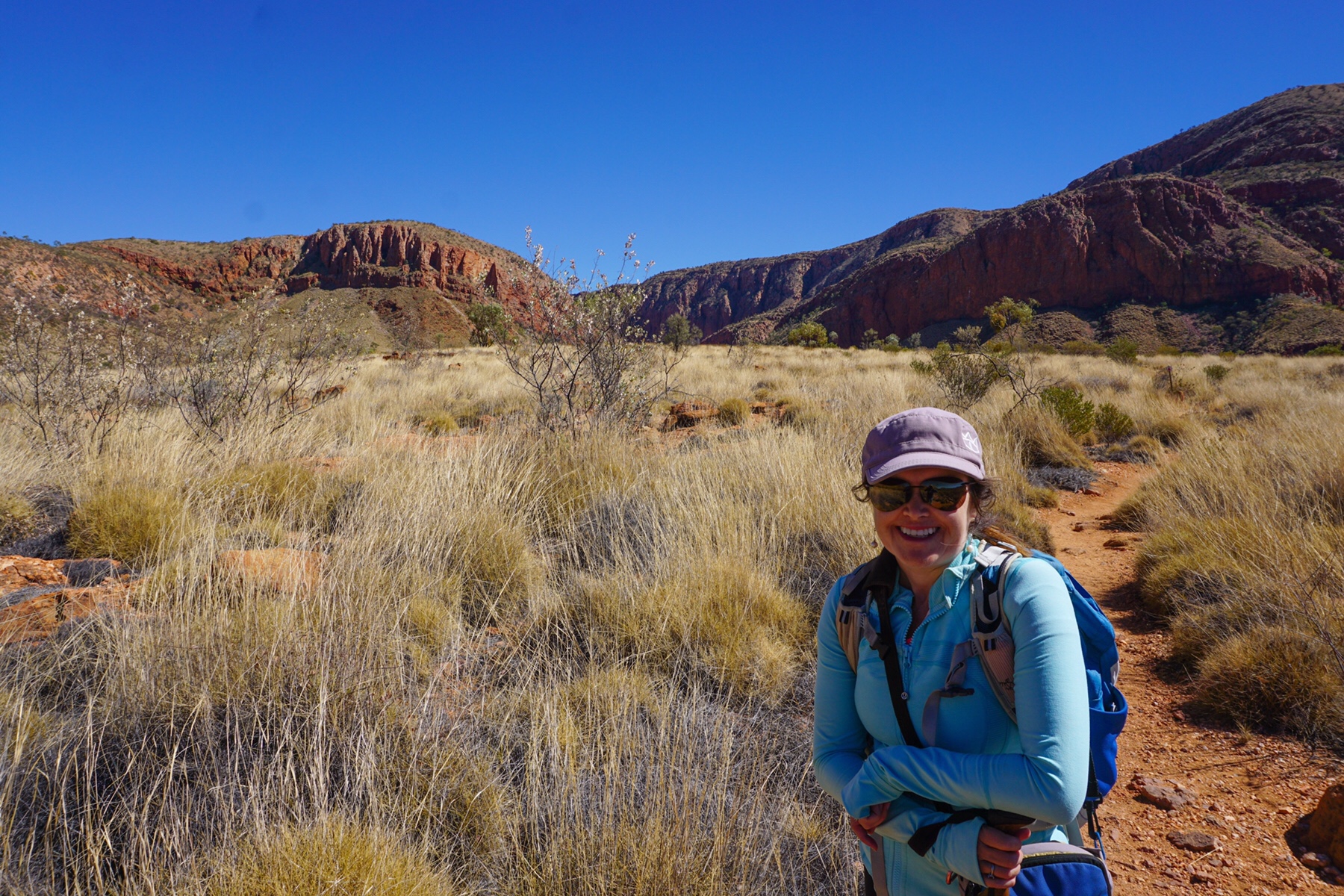
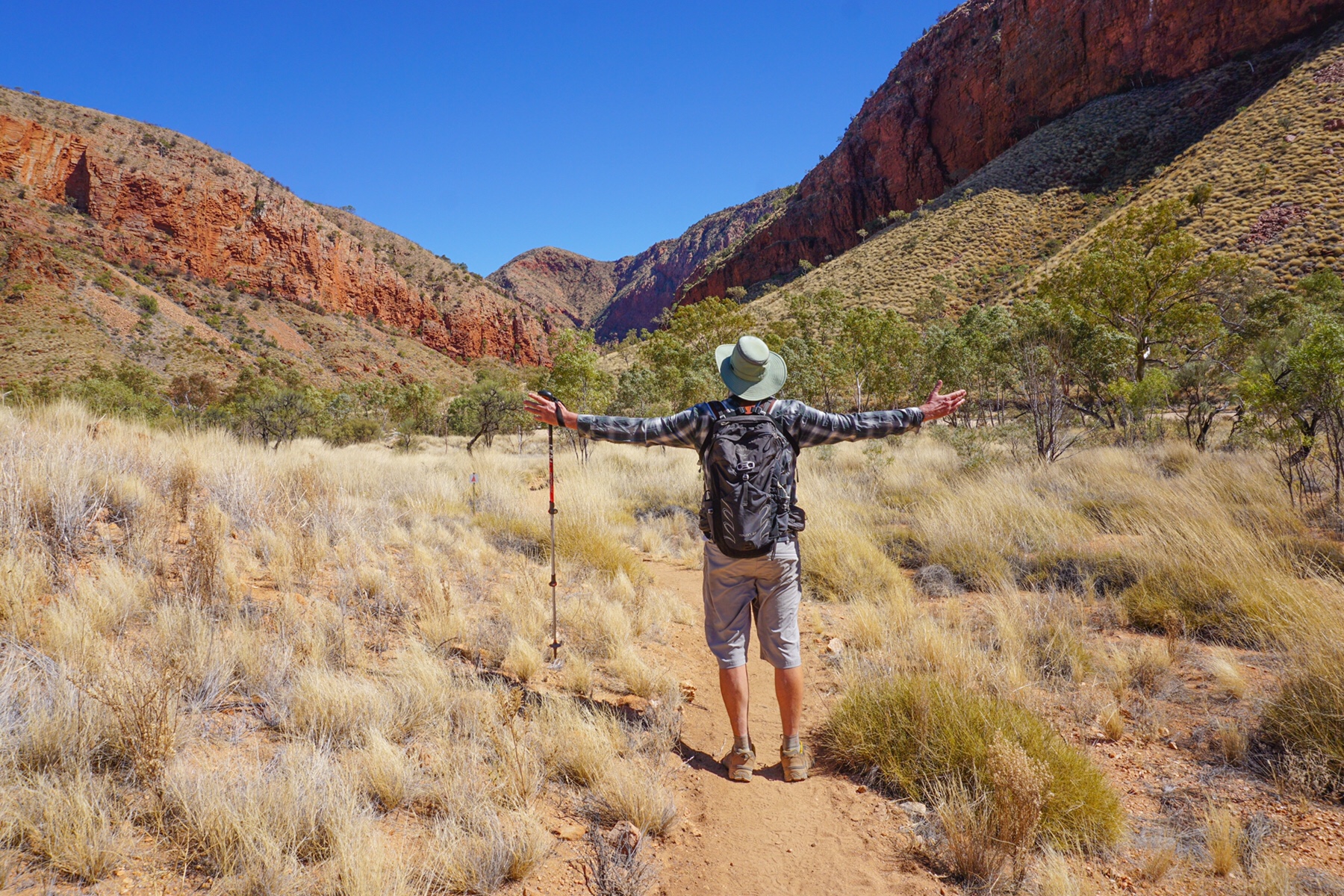 As the walls begin to close in on you for the last couple of kilometres you begin to appreciate the beauty of the rocks, not just the ochres, reds and salmons, but also yellows, mauves, purples and much much more. As the sunlight hits the walls above you it reflects into the shadows, creating more colour still – an absolute feast for the eyes. Even Mark’s limited visual palette was amazed.
As the walls begin to close in on you for the last couple of kilometres you begin to appreciate the beauty of the rocks, not just the ochres, reds and salmons, but also yellows, mauves, purples and much much more. As the sunlight hits the walls above you it reflects into the shadows, creating more colour still – an absolute feast for the eyes. Even Mark’s limited visual palette was amazed.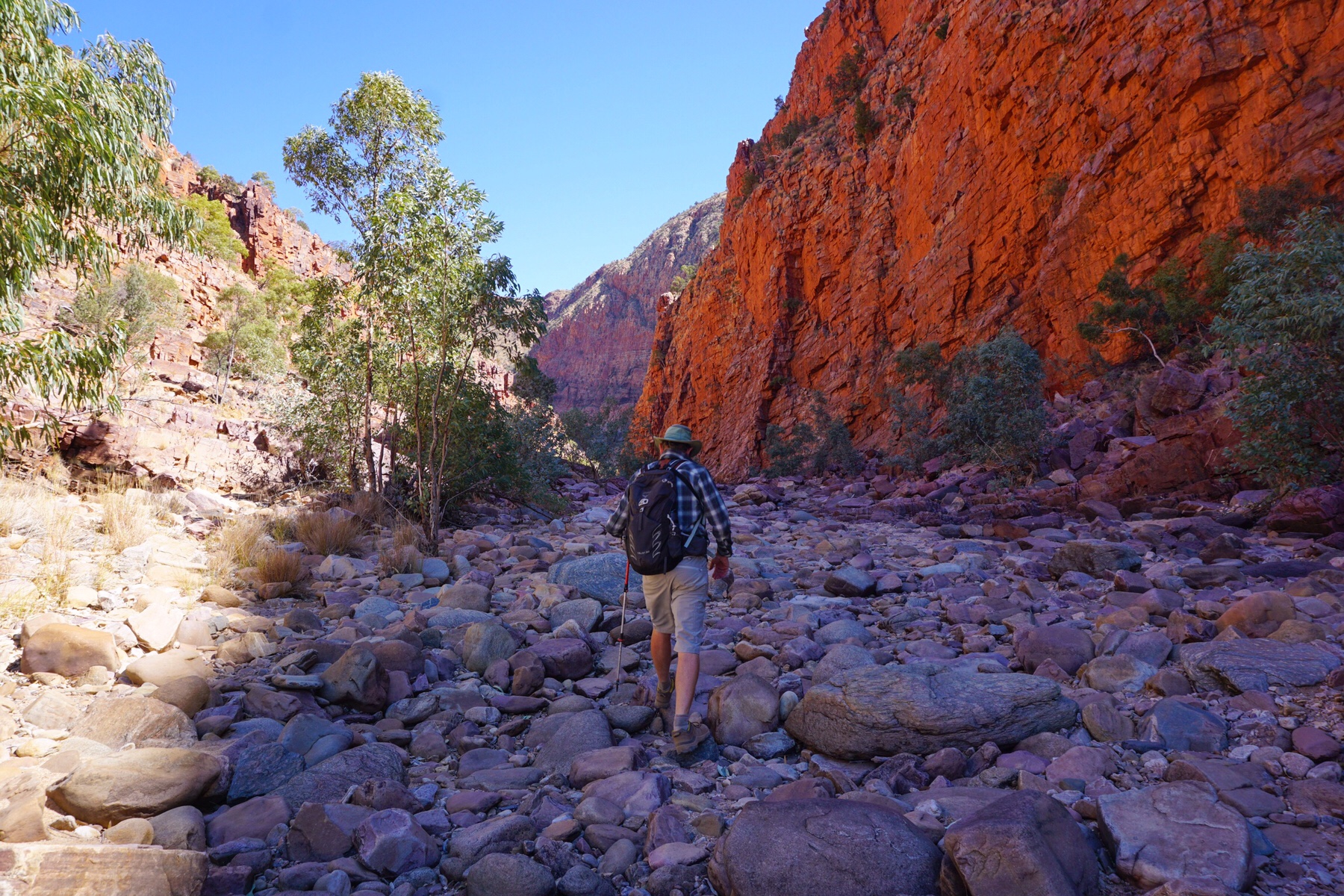
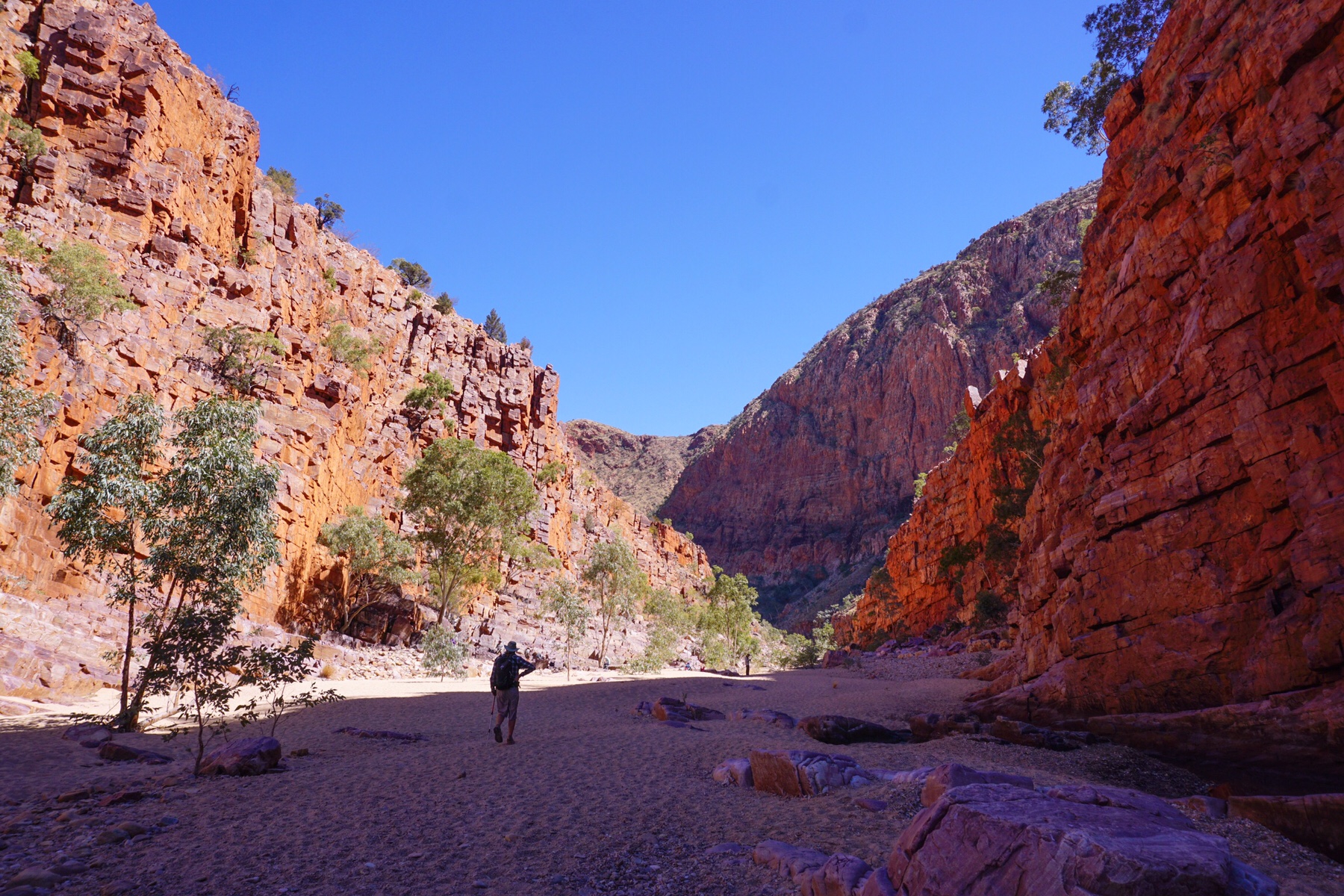 We finished by walking past the waterholes – we recall that last time we were here we had seen some endangered yellow footed rock wallabies drinking here, but this time it was a little too busy for these shy creatures.
We finished by walking past the waterholes – we recall that last time we were here we had seen some endangered yellow footed rock wallabies drinking here, but this time it was a little too busy for these shy creatures.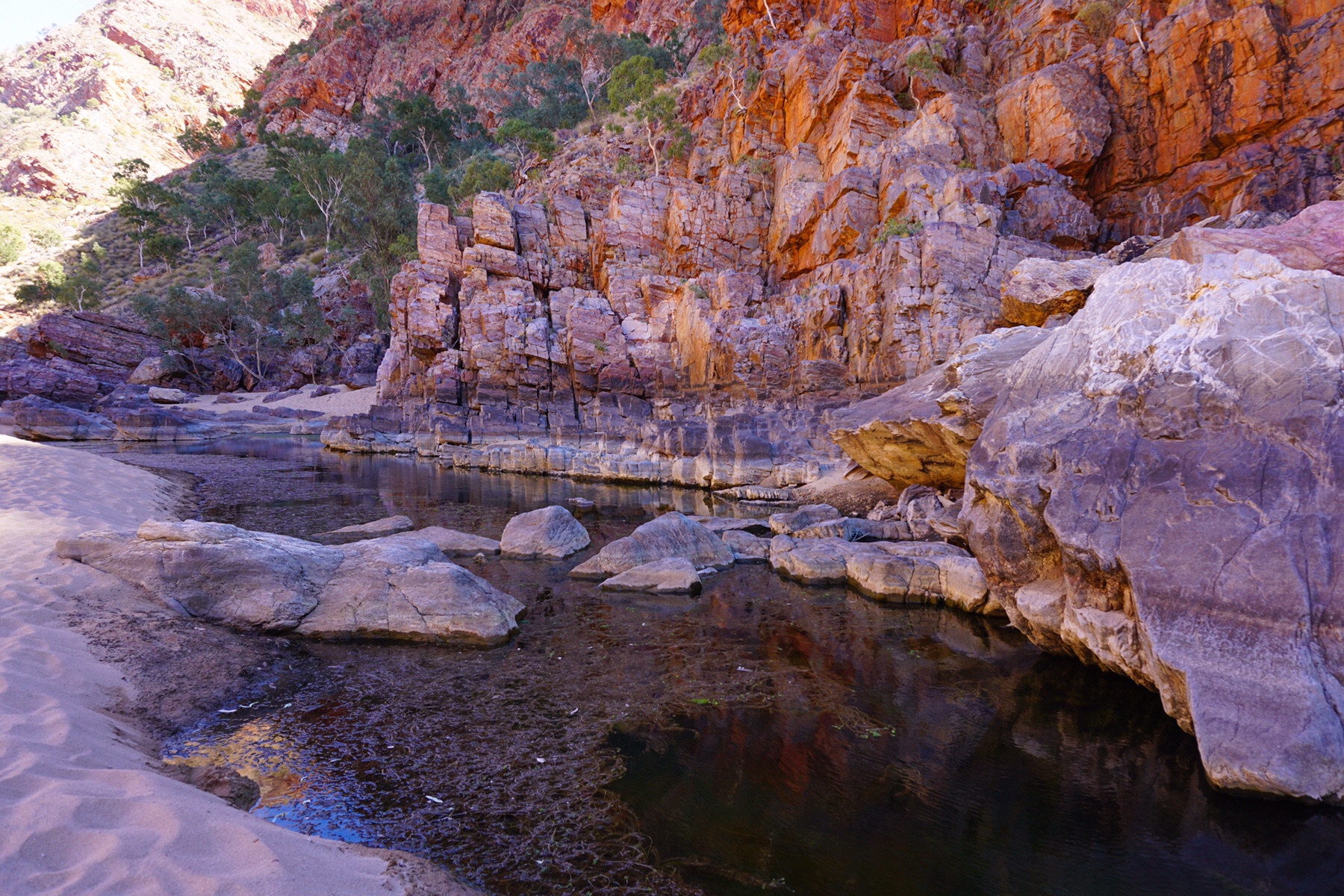
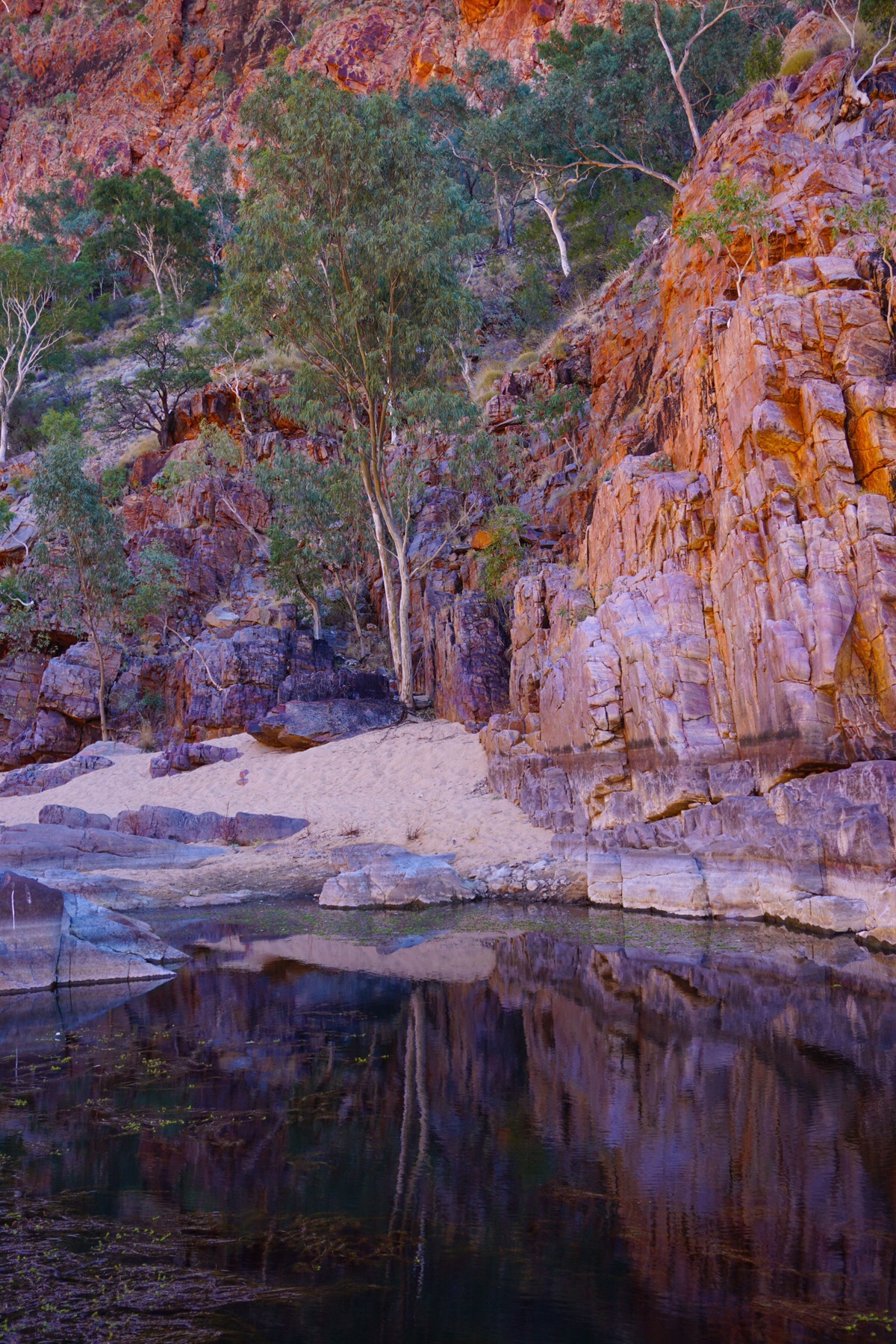 The final green waterhole is apparently suitable for swimming – though any thoughts of diving into its icy depths were far from our minds as we walked past. It is home to ducks, white faced herons and darters, so definitely supports some aquatic life.
The final green waterhole is apparently suitable for swimming – though any thoughts of diving into its icy depths were far from our minds as we walked past. It is home to ducks, white faced herons and darters, so definitely supports some aquatic life.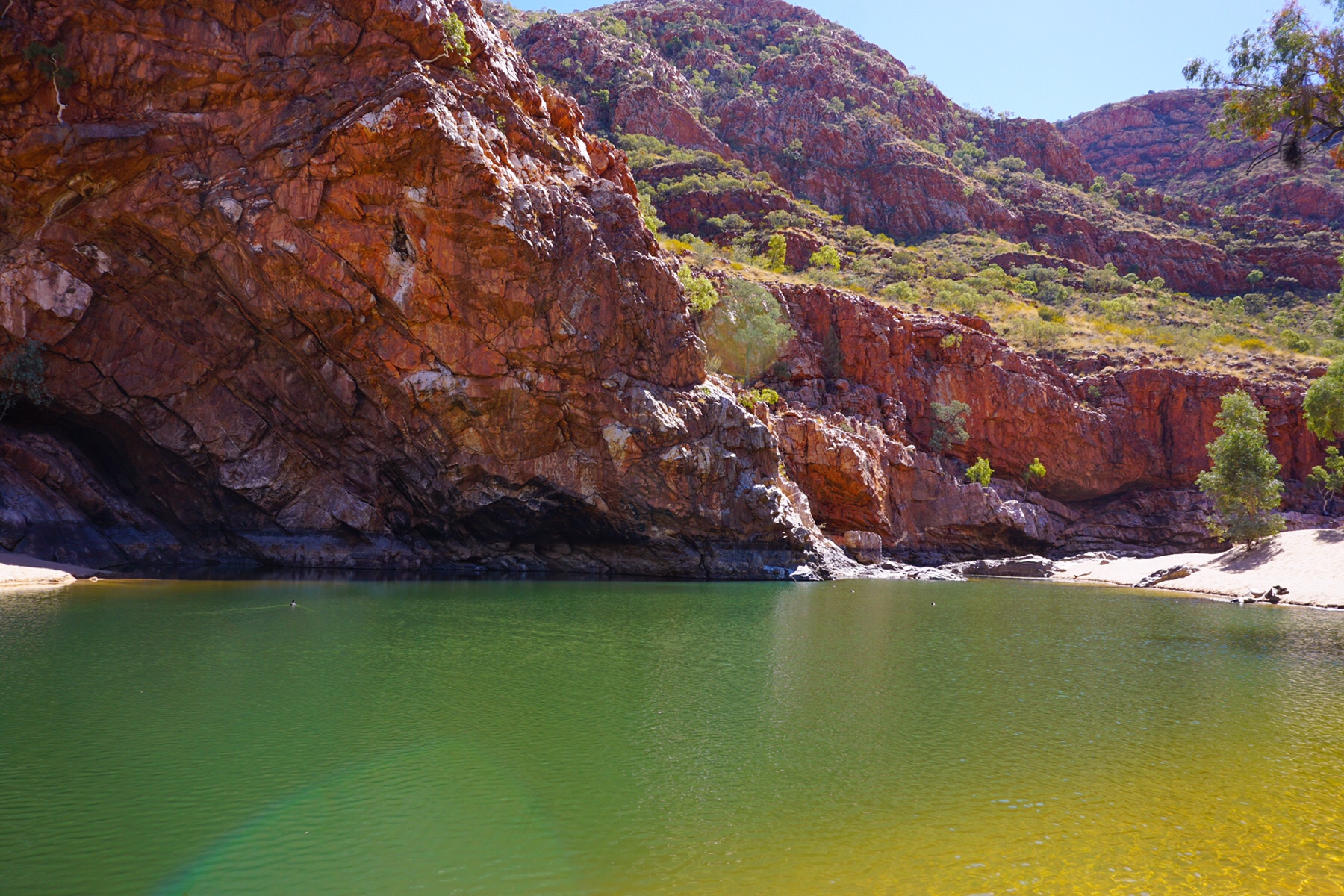 We concluded our 9km hike with a burger from the cafe on site – well deserved we thought!
We concluded our 9km hike with a burger from the cafe on site – well deserved we thought!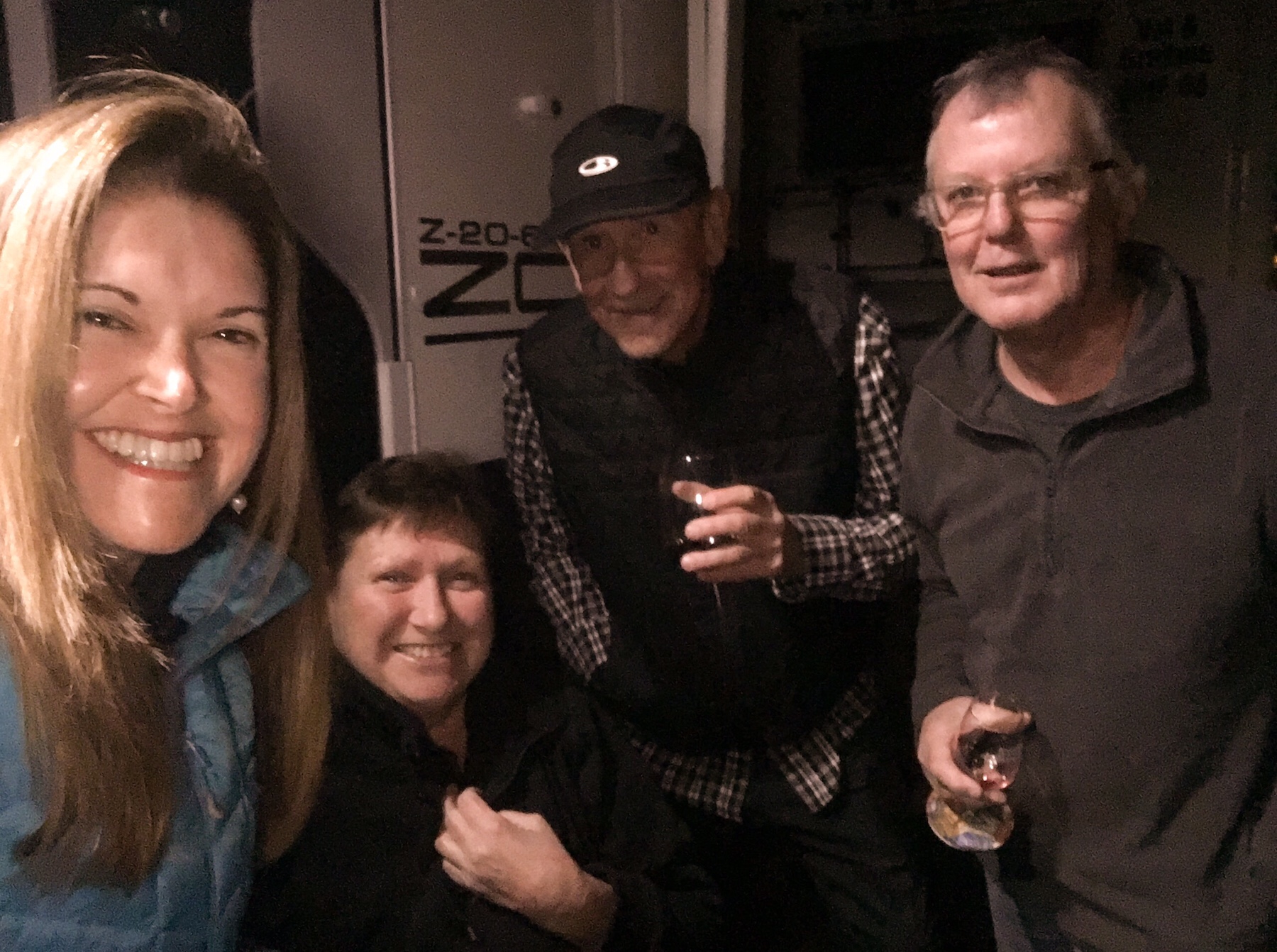 True to our experiences to date, yet more lovely Zoners.
True to our experiences to date, yet more lovely Zoners.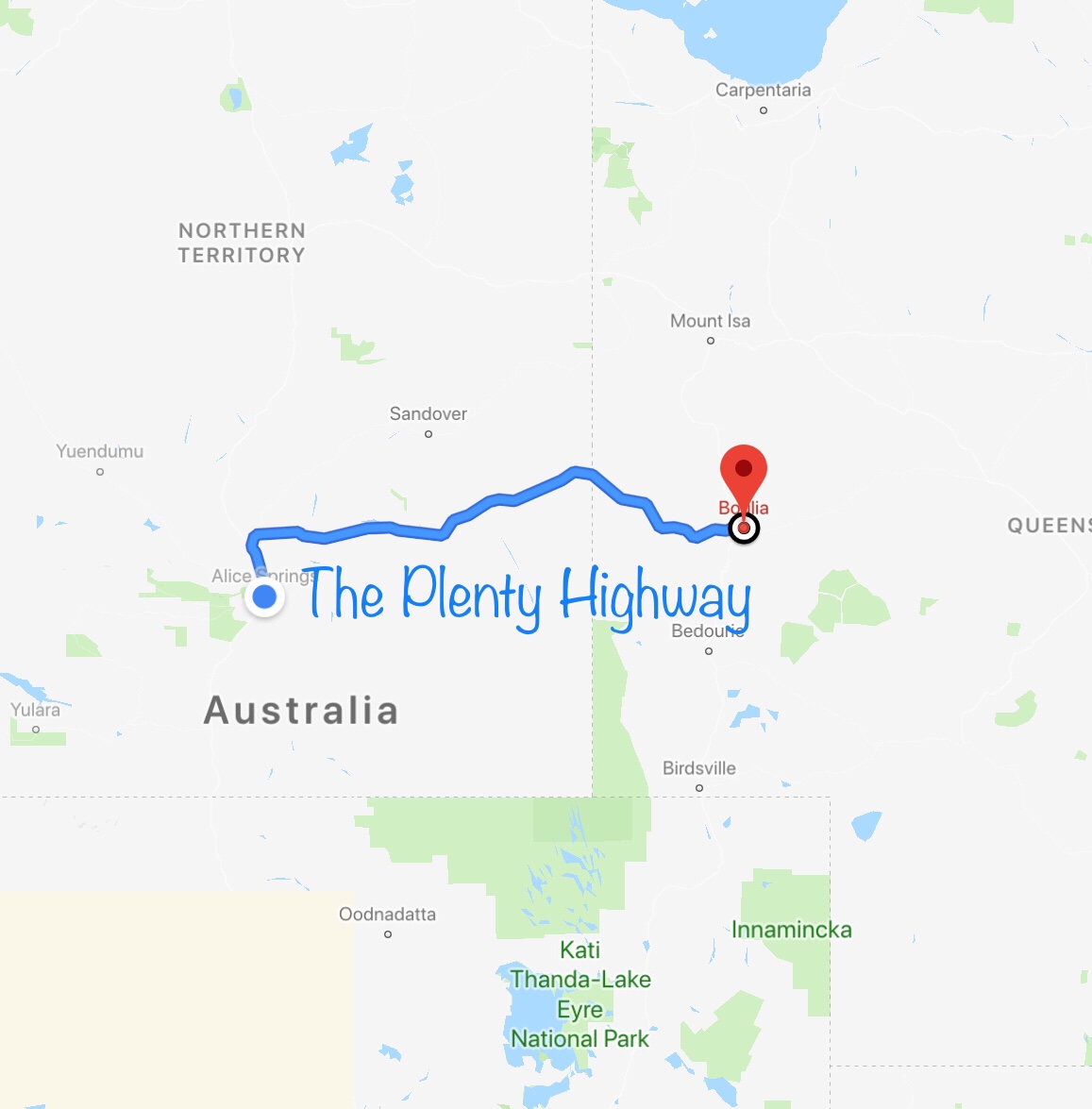 Hopefully we will be back on line by Friday to update you how it went!
Hopefully we will be back on line by Friday to update you how it went!
 By mid morning Google was estimating we were still over 2 hrs from our planned lunch stop, and then…a miracle. We come round a bend to see two graders ponderously chugging up the road towards us, leaving in their wake a lovely smooth surface!
By mid morning Google was estimating we were still over 2 hrs from our planned lunch stop, and then…a miracle. We come round a bend to see two graders ponderously chugging up the road towards us, leaving in their wake a lovely smooth surface!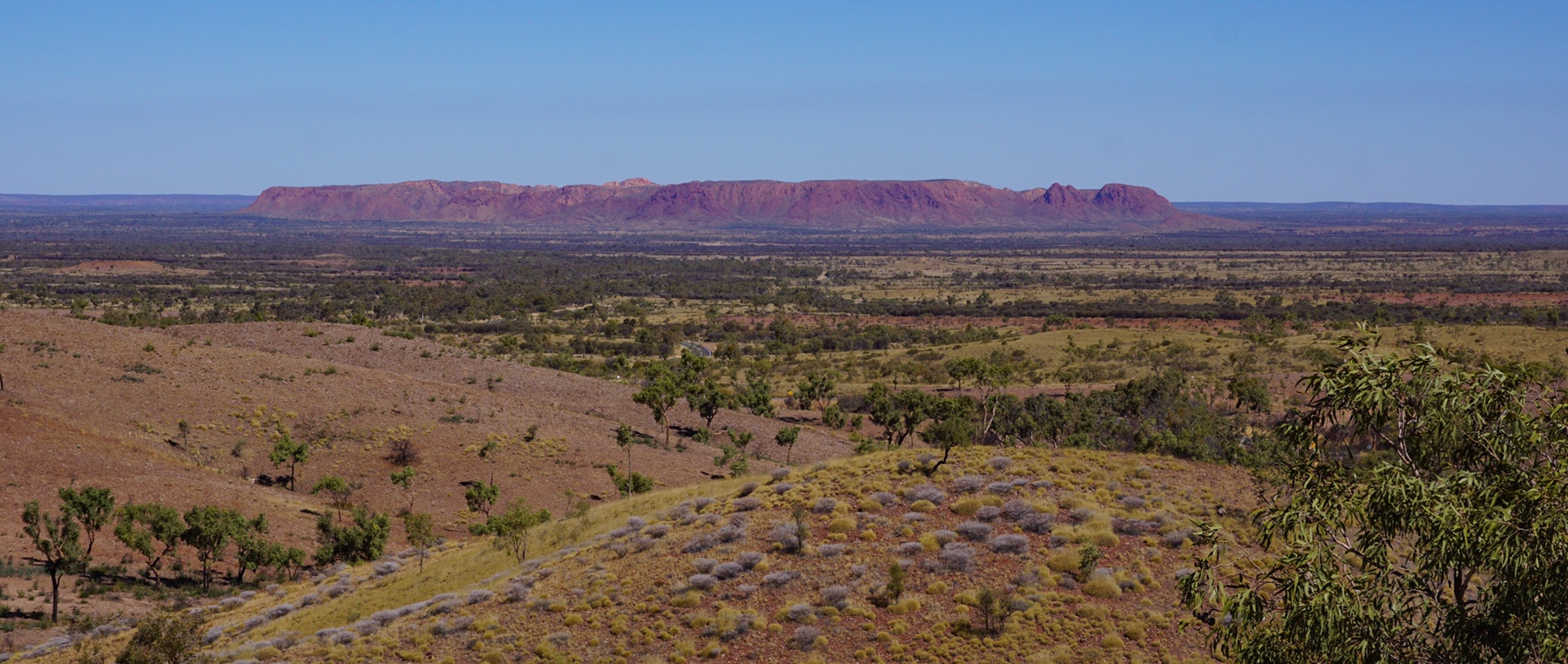 You wouldn’t have wanted to be around 400 million years ago when this bad baby hit earth. It was one of those views that we love in outback Australia – no sign of humans on the landscape for 360 degrees.
You wouldn’t have wanted to be around 400 million years ago when this bad baby hit earth. It was one of those views that we love in outback Australia – no sign of humans on the landscape for 360 degrees.
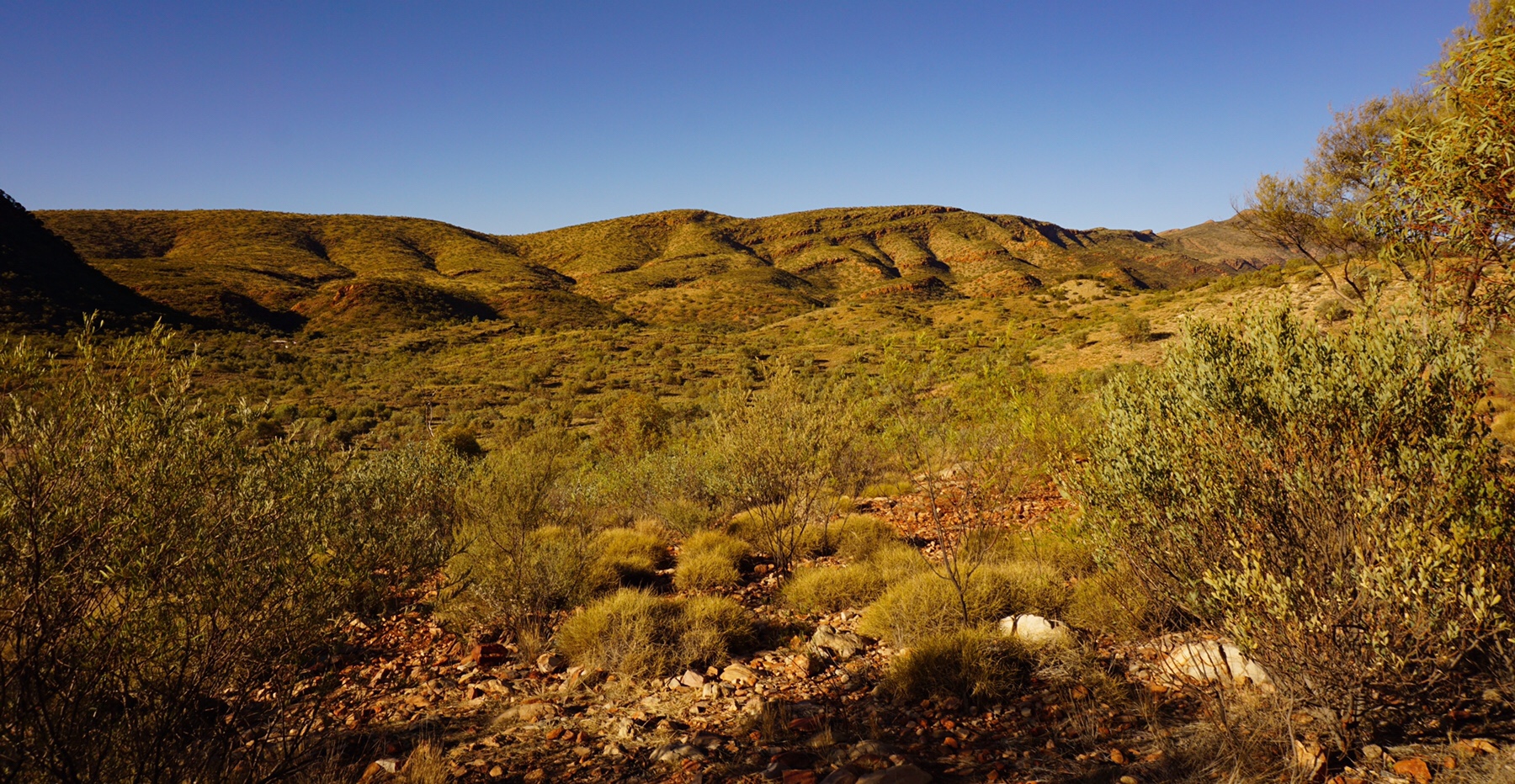 The Gorge is one of several in the West MacDonnell ranges, which spectacularly rise up out of the desert plain and stretch several hundred kilometres. We rocked up at was to be one of our prettiest campsites on this section of the trip, with views down into the gorge. We quickly unhitched and drove down the steep access road, parked up and hit the short trail into the gorge proper.
The Gorge is one of several in the West MacDonnell ranges, which spectacularly rise up out of the desert plain and stretch several hundred kilometres. We rocked up at was to be one of our prettiest campsites on this section of the trip, with views down into the gorge. We quickly unhitched and drove down the steep access road, parked up and hit the short trail into the gorge proper.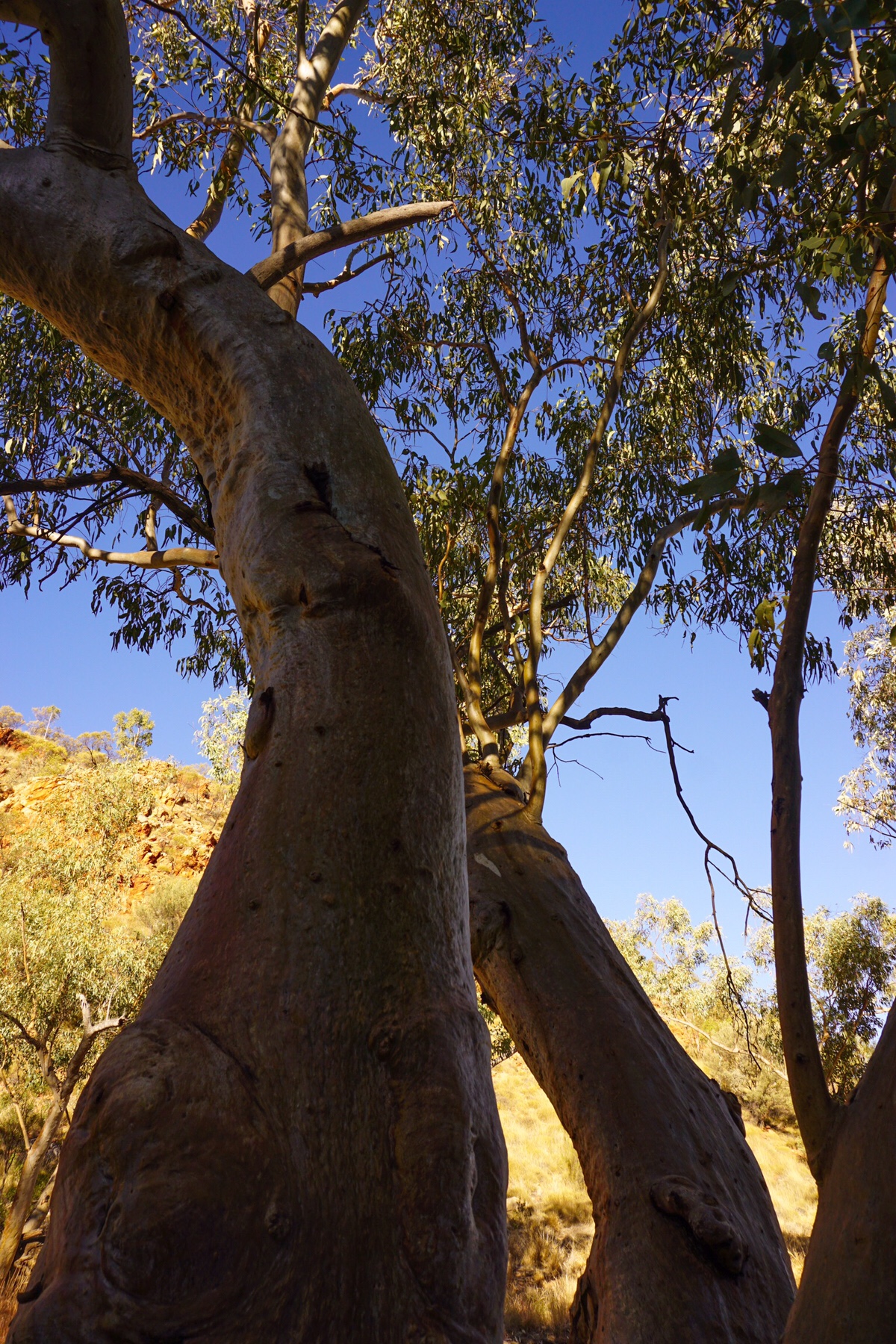
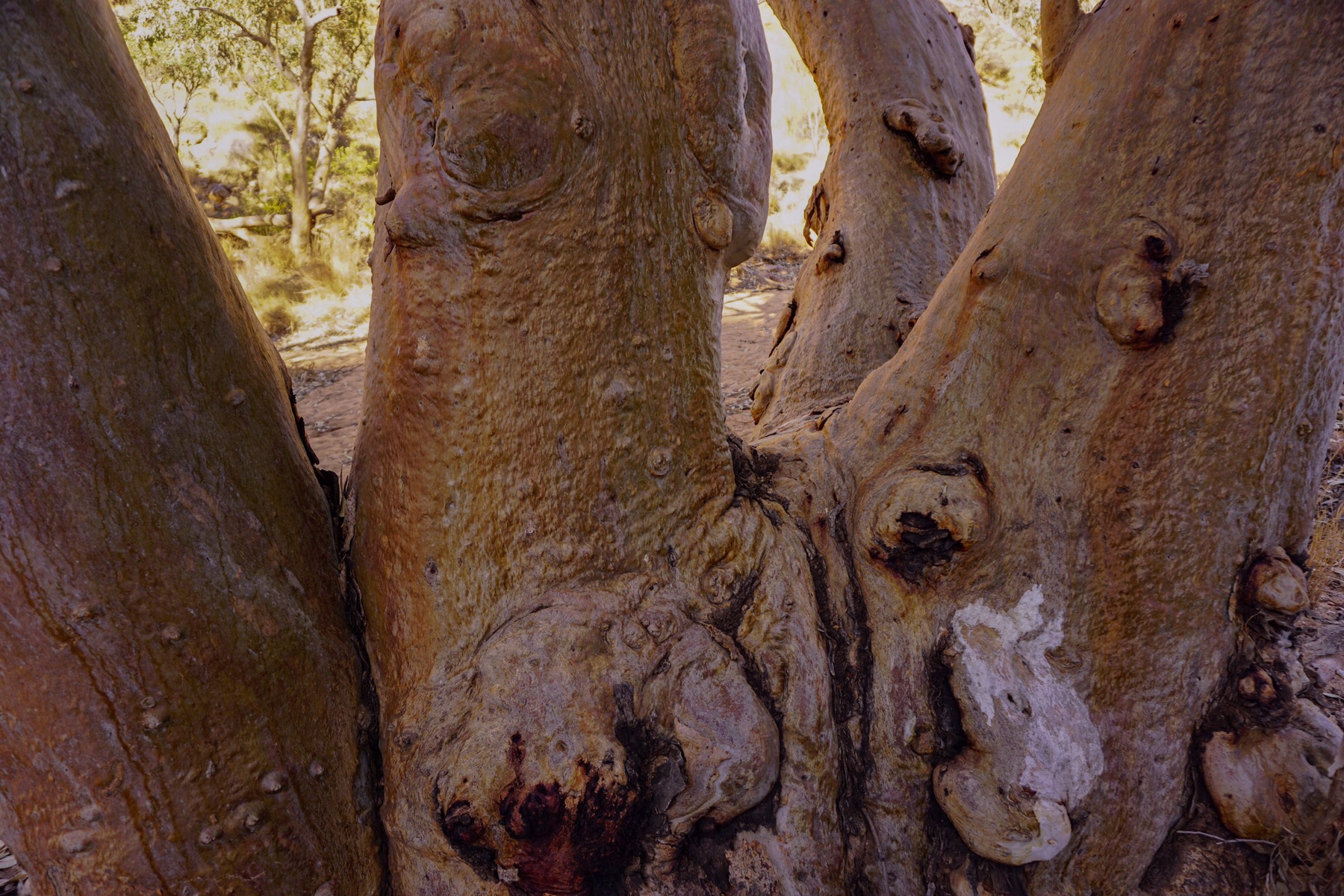
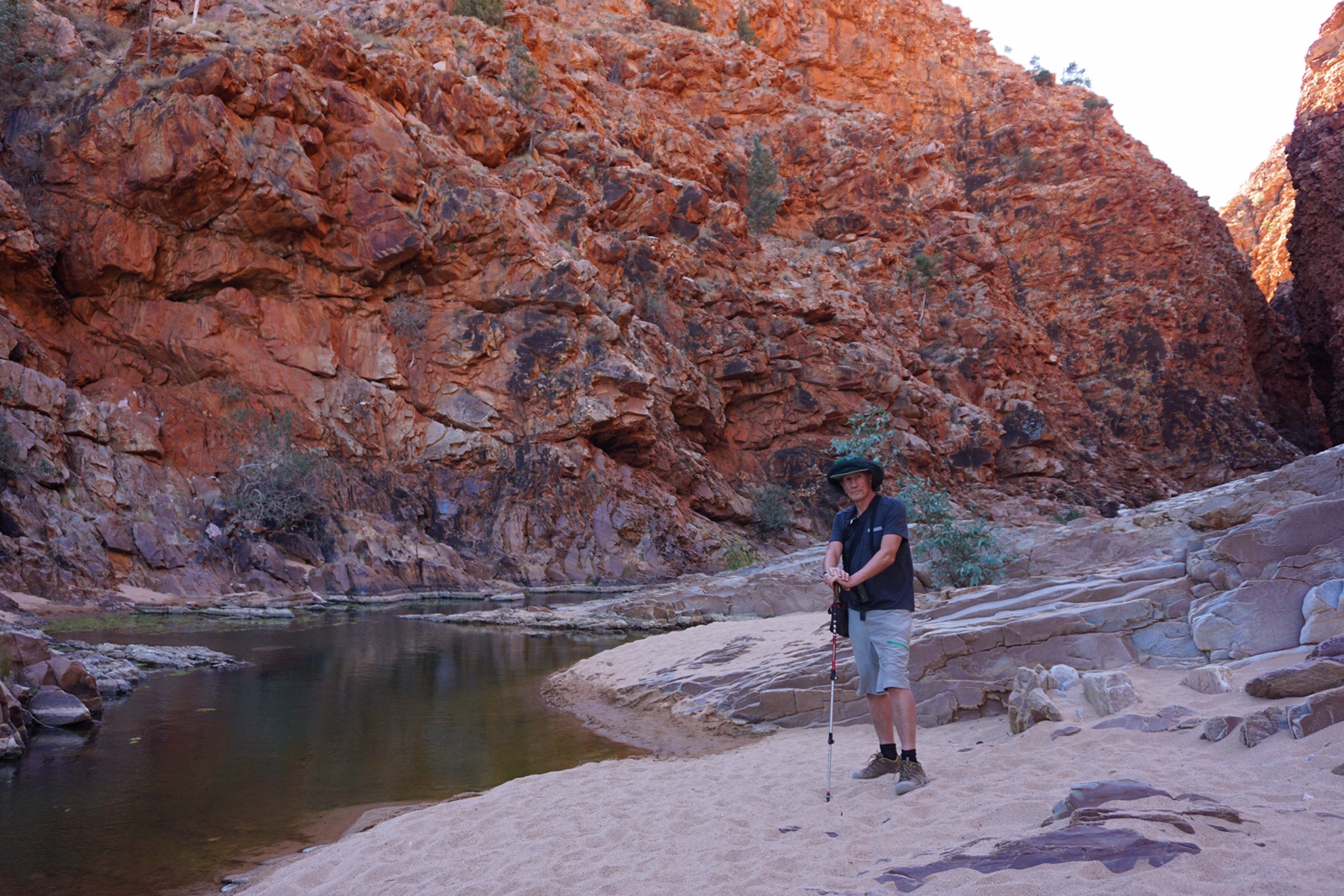 After a bit of rock scrambling we arrived at this little oasis, a pool of water in sharp contrast to the surrounding dry arid land. We spent a happy hour there watching the sun set fire to the walls of the gorge, then retraced our steps.
After a bit of rock scrambling we arrived at this little oasis, a pool of water in sharp contrast to the surrounding dry arid land. We spent a happy hour there watching the sun set fire to the walls of the gorge, then retraced our steps.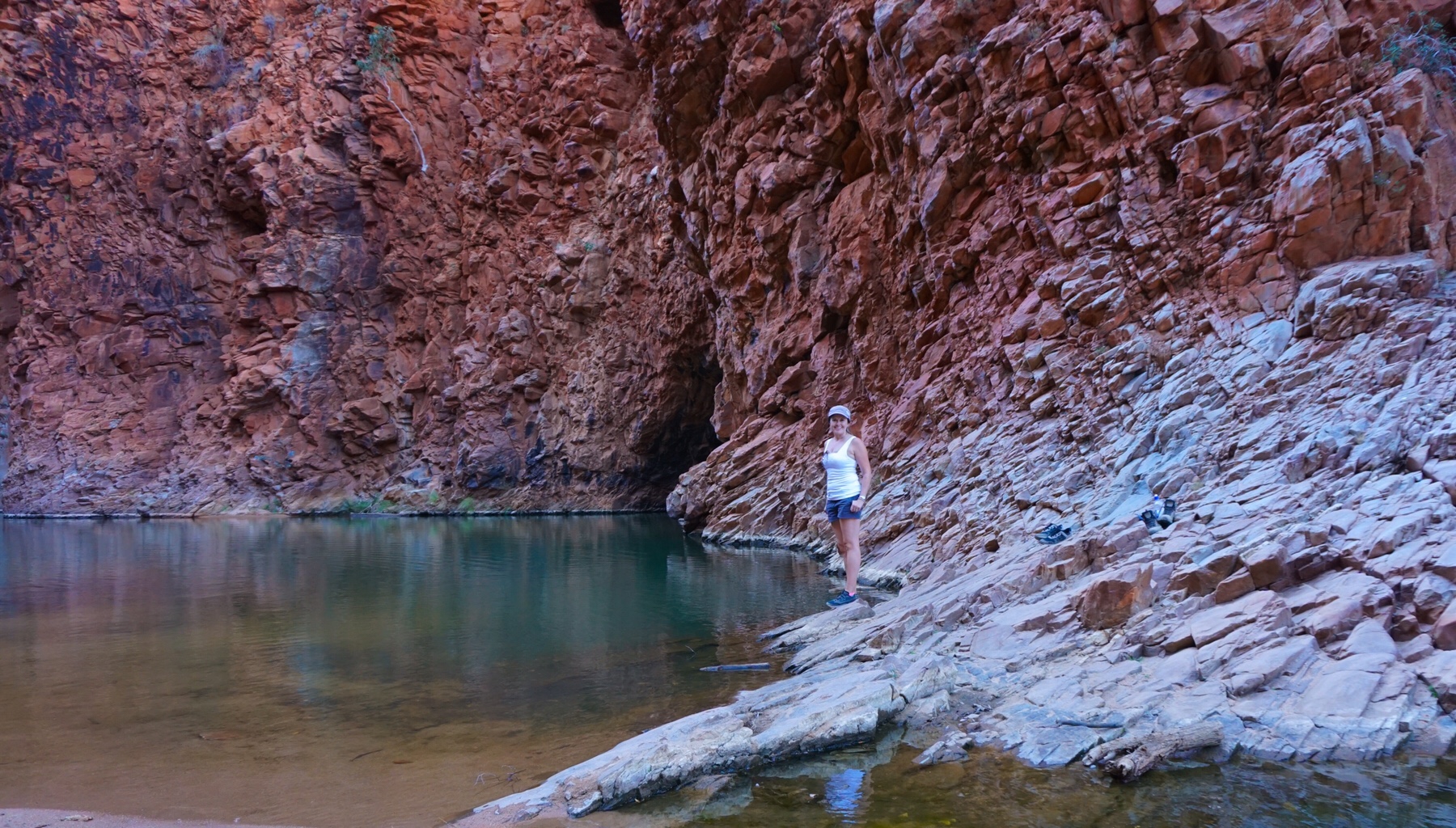
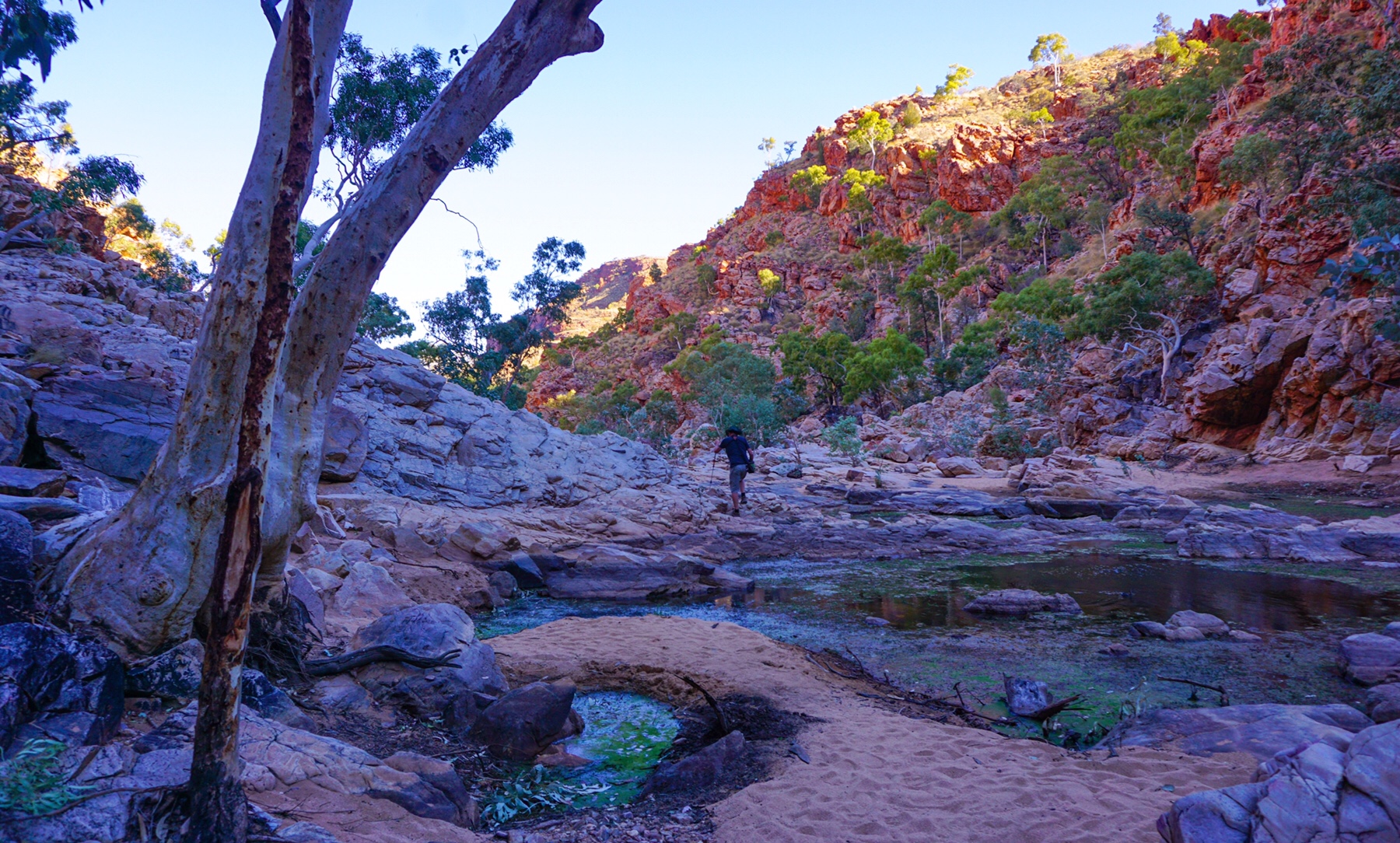
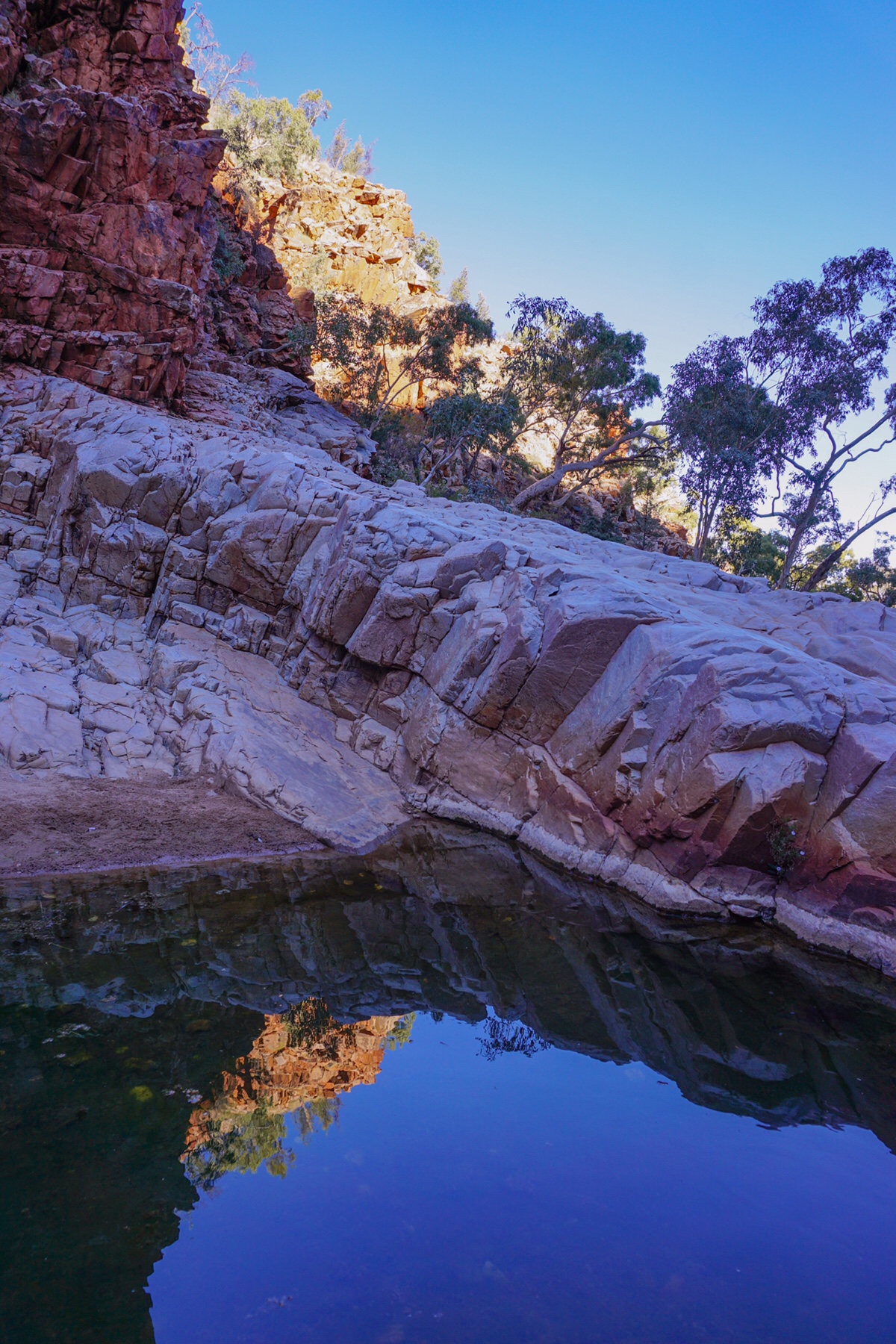 This was a view that demanded a decent glass of red, and we counted our blessings once again to be in the position to watch the sun go down on such a stunning outback vista.
This was a view that demanded a decent glass of red, and we counted our blessings once again to be in the position to watch the sun go down on such a stunning outback vista.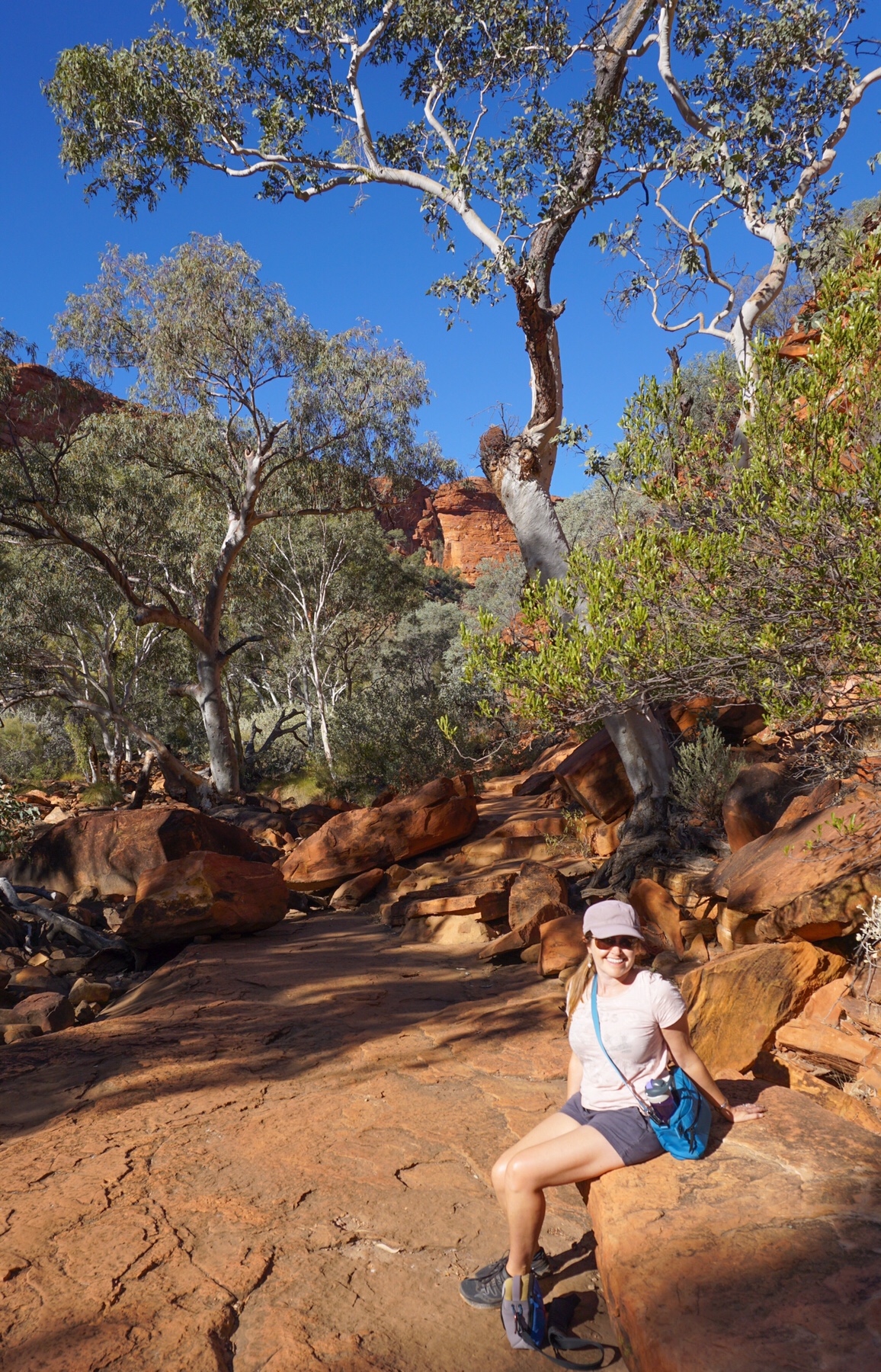
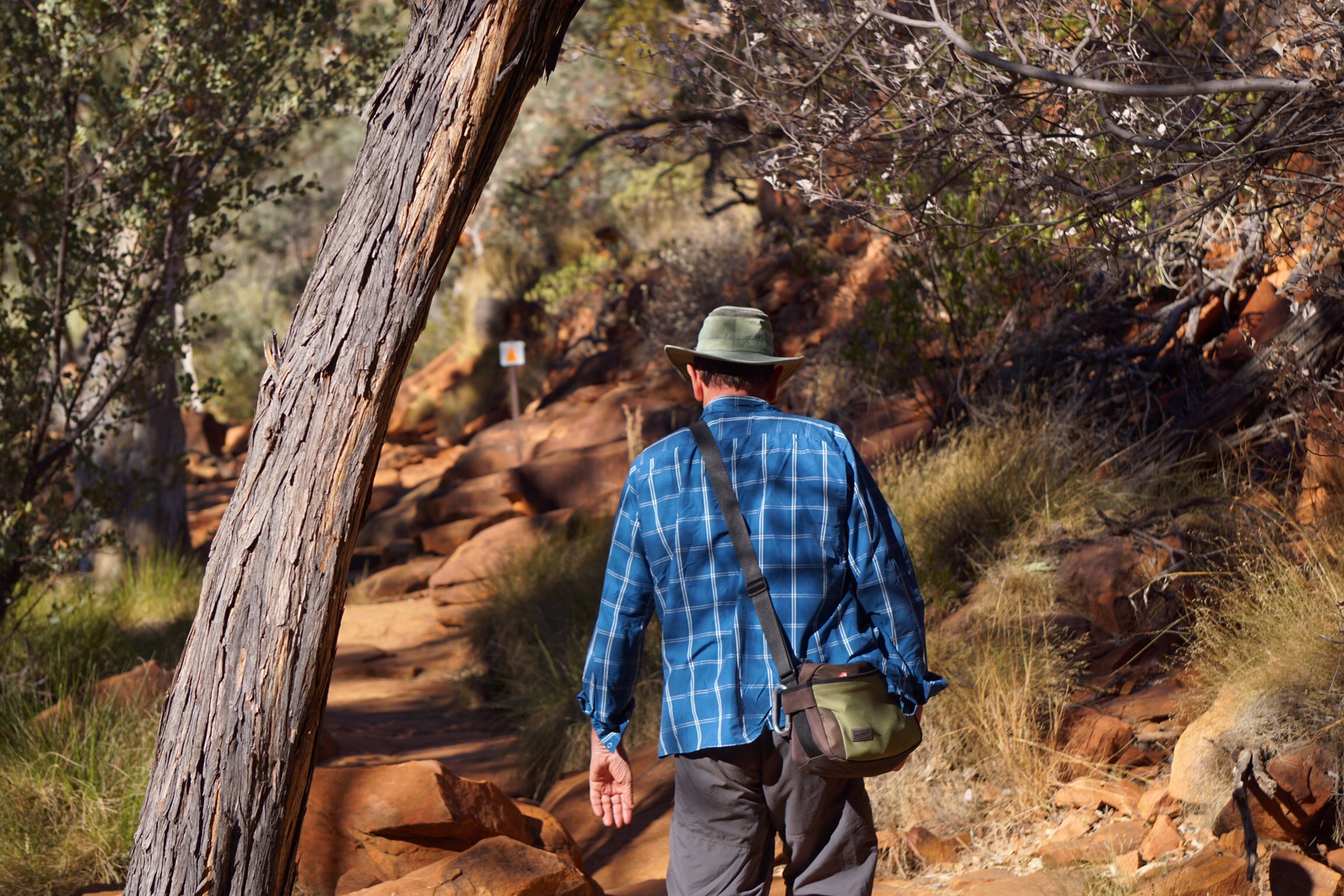
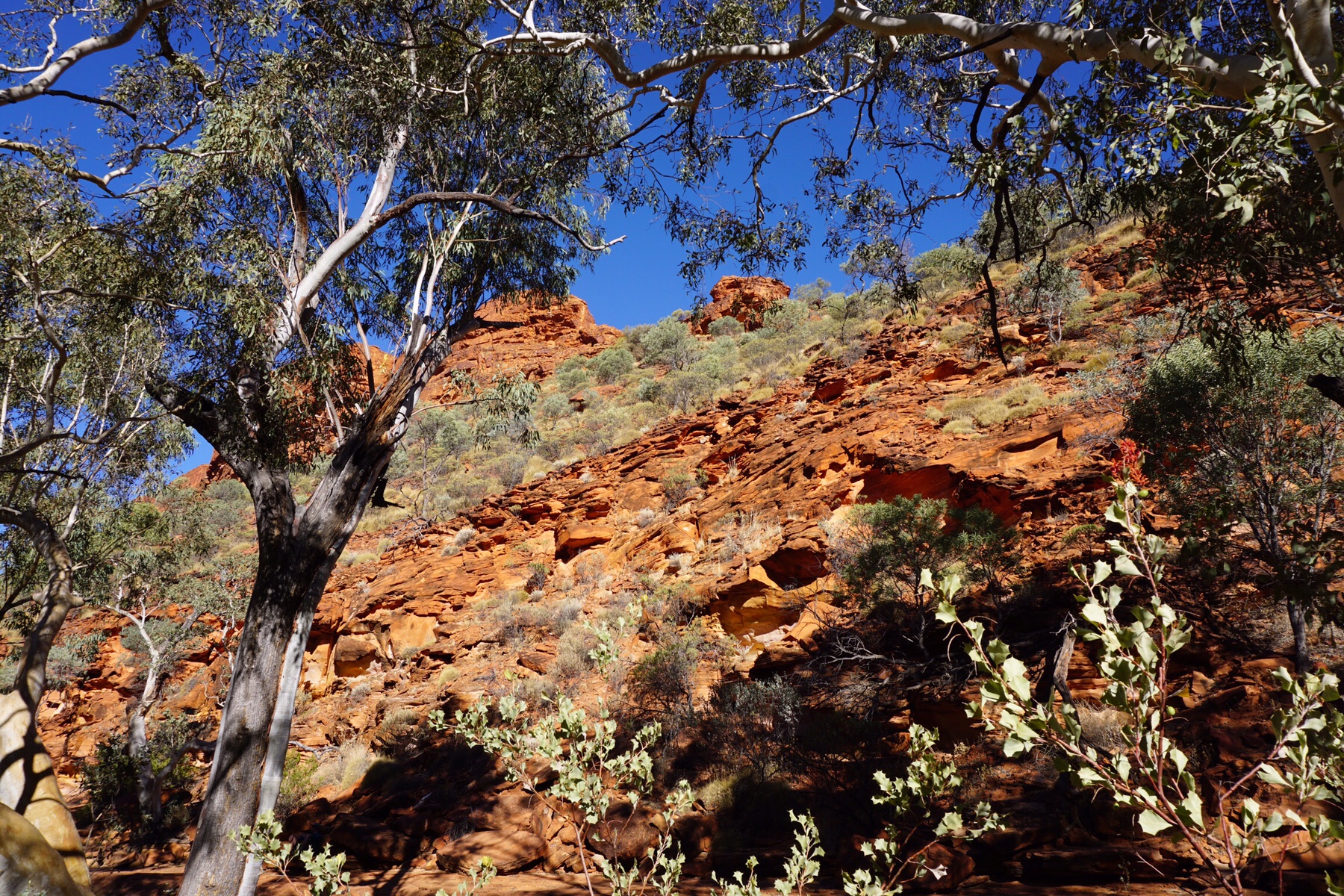 We opted for a short and peaceful walk along the dry King’s Creek, an informative track with several birds accompanying us, particularly this ever-so-cute Dusky Grasswren a perky little desert dweller that didn’t seem to mind hopping around the rocks near us.
We opted for a short and peaceful walk along the dry King’s Creek, an informative track with several birds accompanying us, particularly this ever-so-cute Dusky Grasswren a perky little desert dweller that didn’t seem to mind hopping around the rocks near us.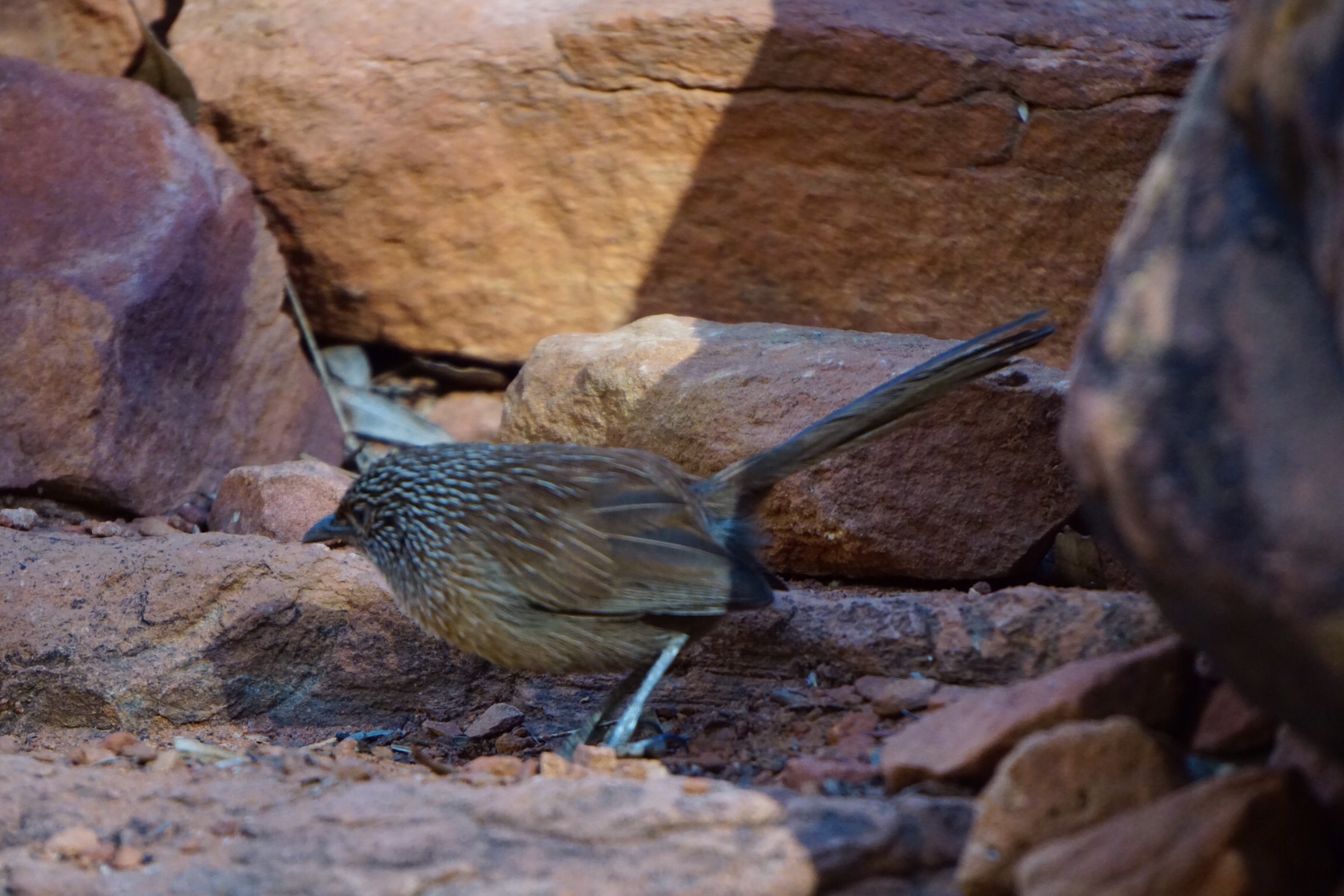 The national park is home to more than 600 species of plant, 10% of which are extremely rare and date back to the dinosaurs. This area has the highest diversity of fauna in any of Australia’s arid zones.
The national park is home to more than 600 species of plant, 10% of which are extremely rare and date back to the dinosaurs. This area has the highest diversity of fauna in any of Australia’s arid zones. The resort has a pub and restaurant so we decided to give it a try for dinner. Unlike so many places we have come across on this trip, this actually had a decent choice of beverages – including Fat Yak and our local Manly, Sydney tipple, Four Pines beer.
The resort has a pub and restaurant so we decided to give it a try for dinner. Unlike so many places we have come across on this trip, this actually had a decent choice of beverages – including Fat Yak and our local Manly, Sydney tipple, Four Pines beer.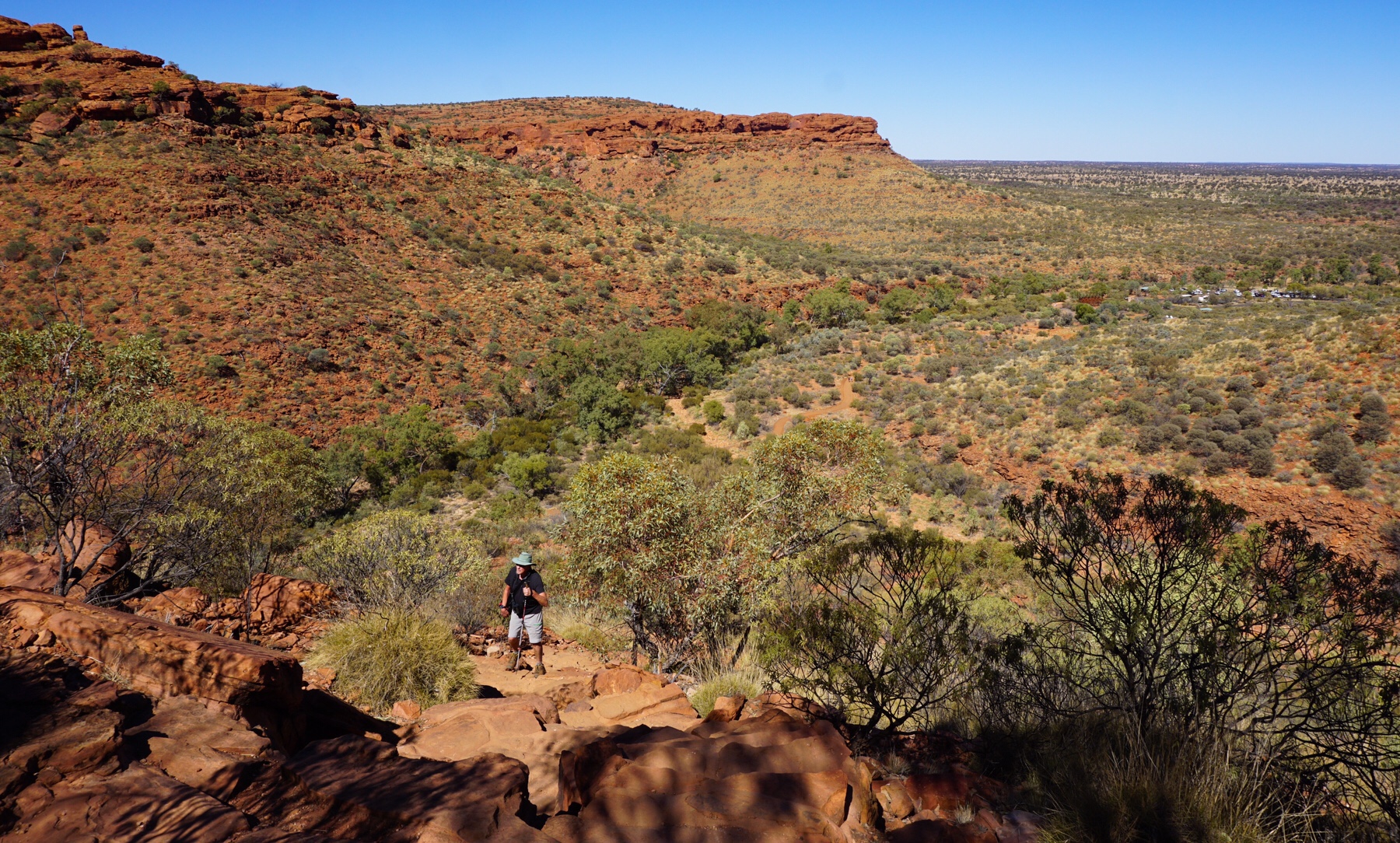 Once you’re up the top of the walls it all gets a lot friendlier, with a lot of red rock hopping over the ancient fossilised sand dunes and sea bed. There is plenty of evidence of the area’s distant past, with fossilised ripples in the rock (they call it ripple-rock, of course) and evidence of the layers of silica in the rock from the drifting sand dunes.
Once you’re up the top of the walls it all gets a lot friendlier, with a lot of red rock hopping over the ancient fossilised sand dunes and sea bed. There is plenty of evidence of the area’s distant past, with fossilised ripples in the rock (they call it ripple-rock, of course) and evidence of the layers of silica in the rock from the drifting sand dunes.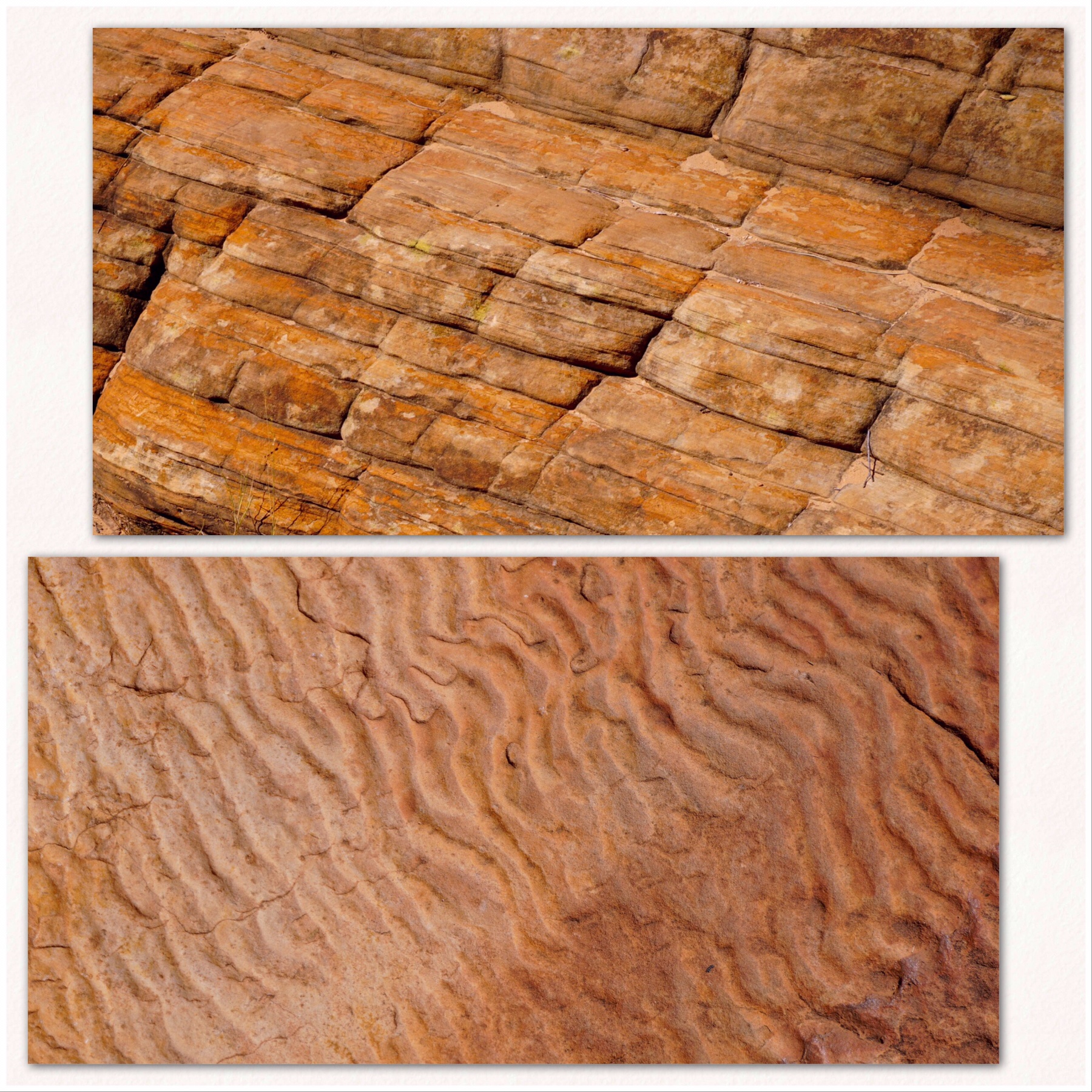 The landscape is unlike anything else, the beehive like structures stretching out into the horizon. I found it interesting to learn that the rock here is all actually bright white sandstone – the red comes from a fungi which grows on the rock and through a chemical reaction allows the red sands from the surrounding arid area to stick to it, hence creating the bright red colour which practically glows in the sunlight.
The landscape is unlike anything else, the beehive like structures stretching out into the horizon. I found it interesting to learn that the rock here is all actually bright white sandstone – the red comes from a fungi which grows on the rock and through a chemical reaction allows the red sands from the surrounding arid area to stick to it, hence creating the bright red colour which practically glows in the sunlight.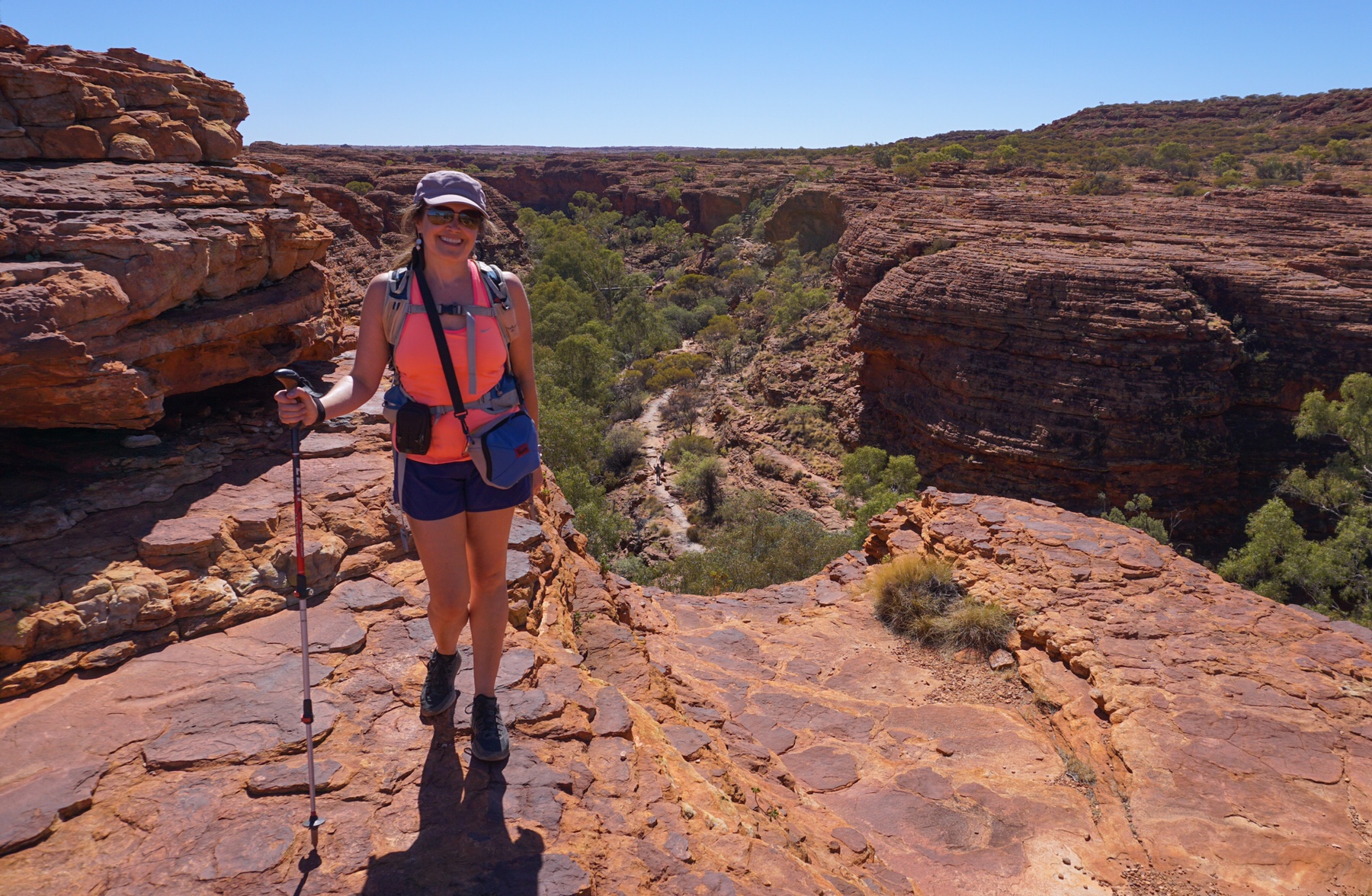
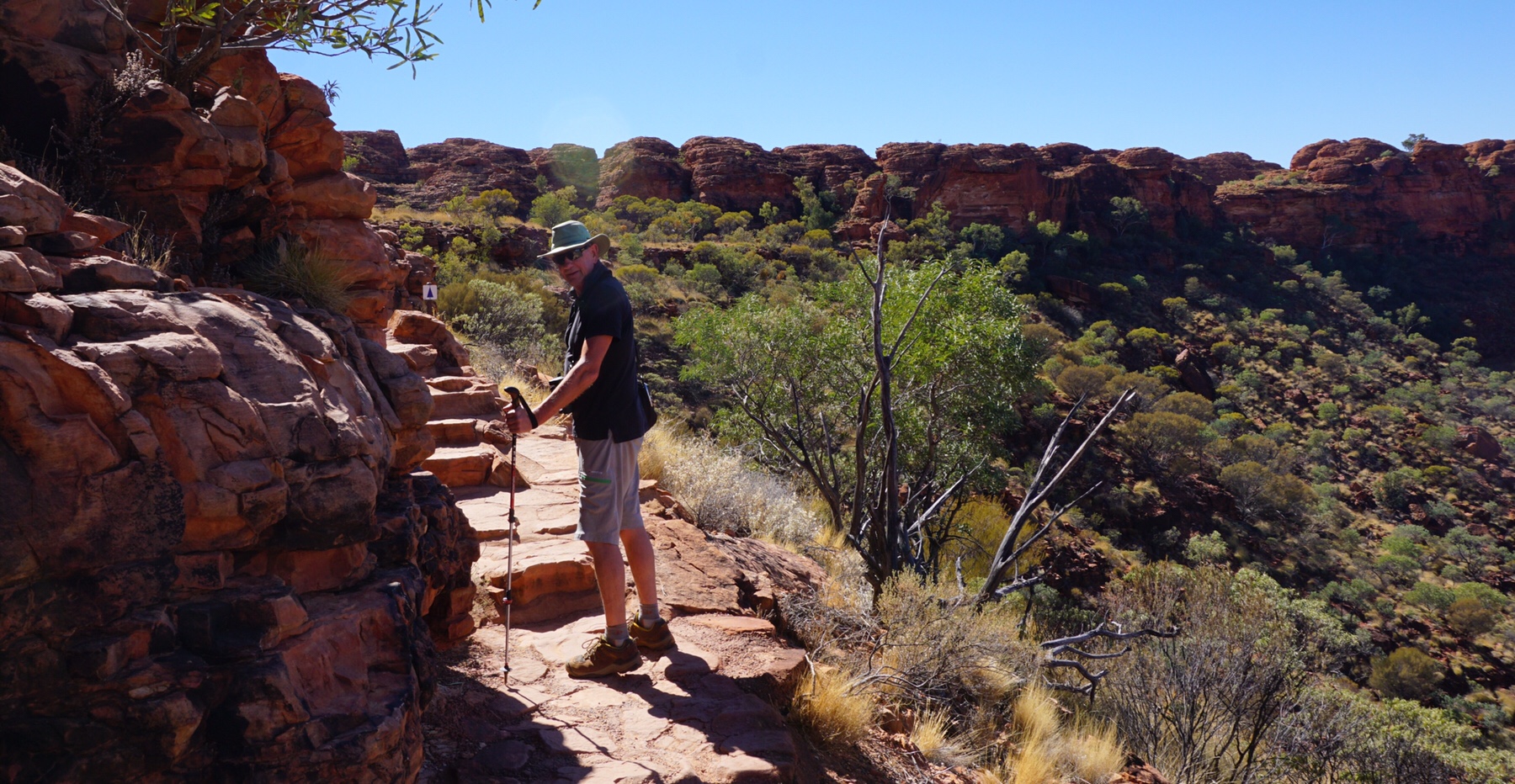
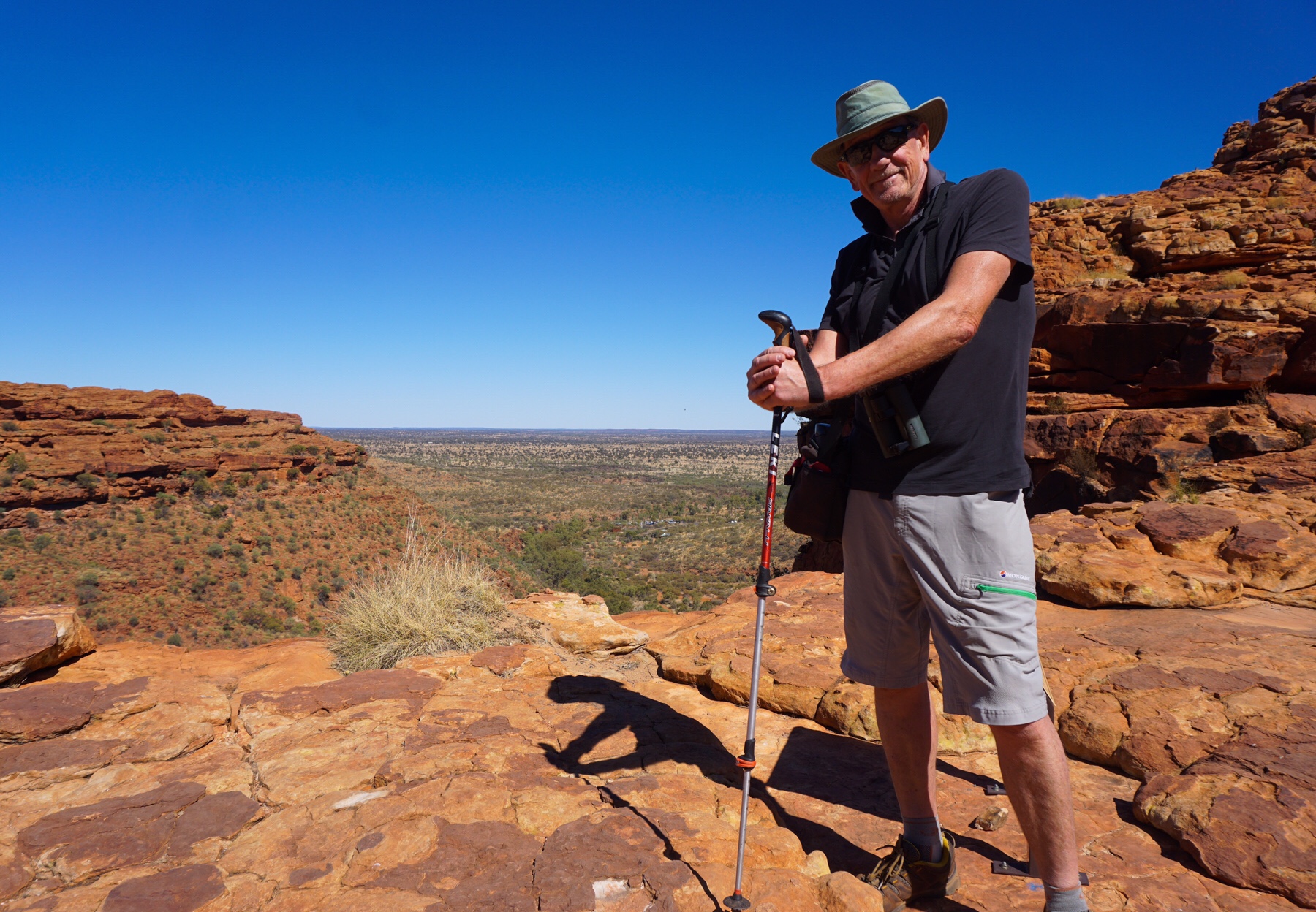
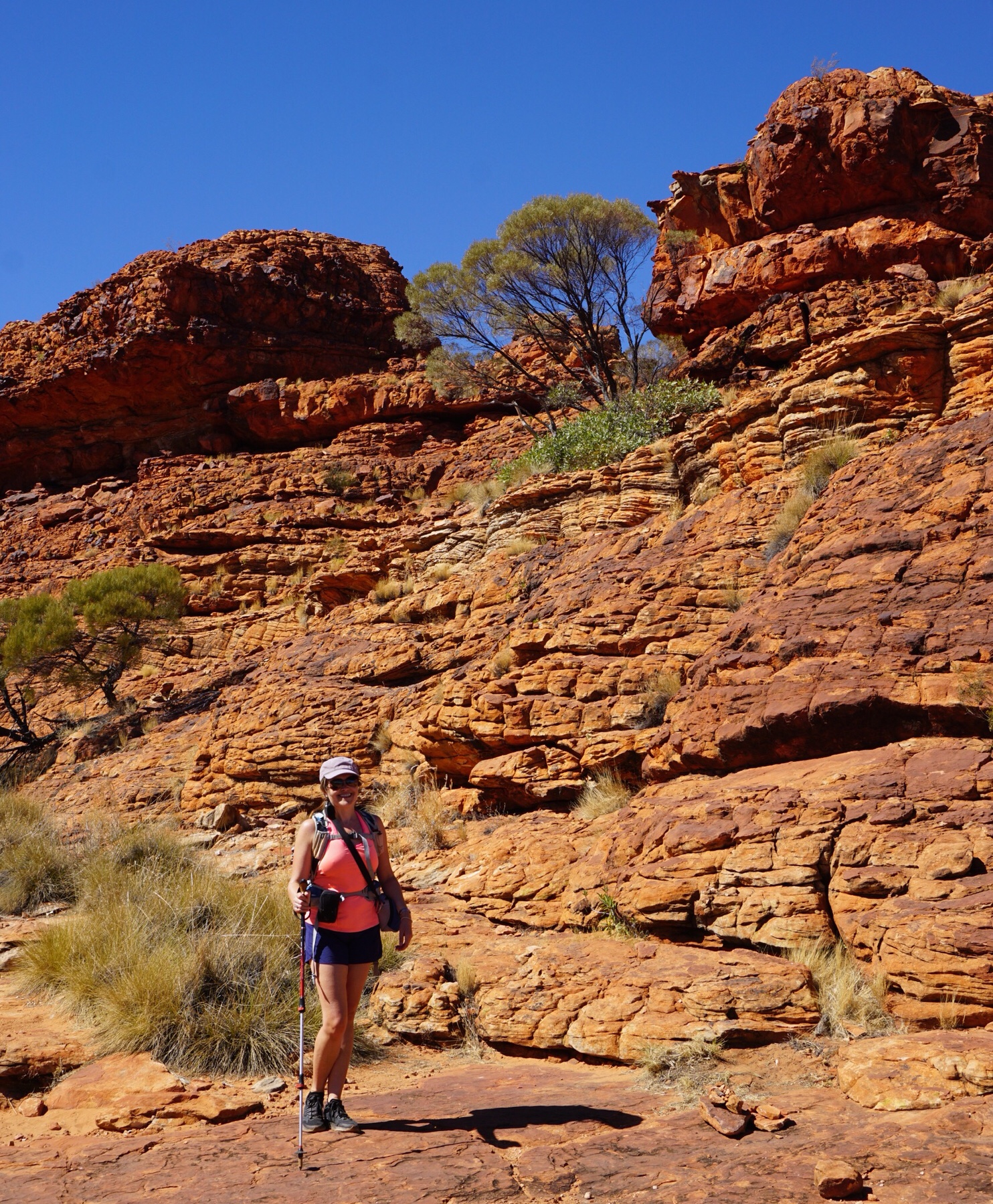 While not busy, we were certainly not alone on this walk, several other hikers following on the same trajectory – mostly French, a few Chinese and Australians.
While not busy, we were certainly not alone on this walk, several other hikers following on the same trajectory – mostly French, a few Chinese and Australians.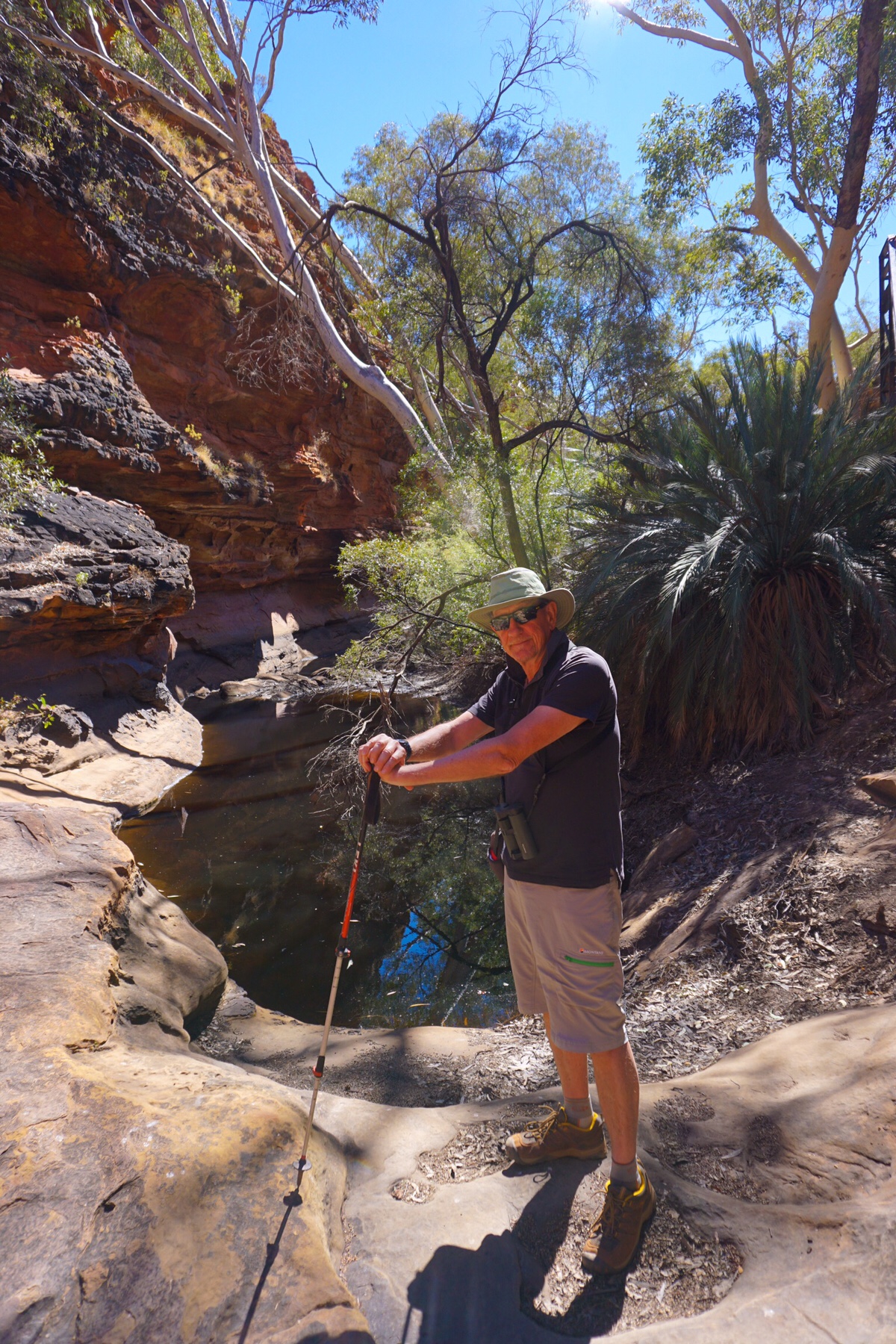
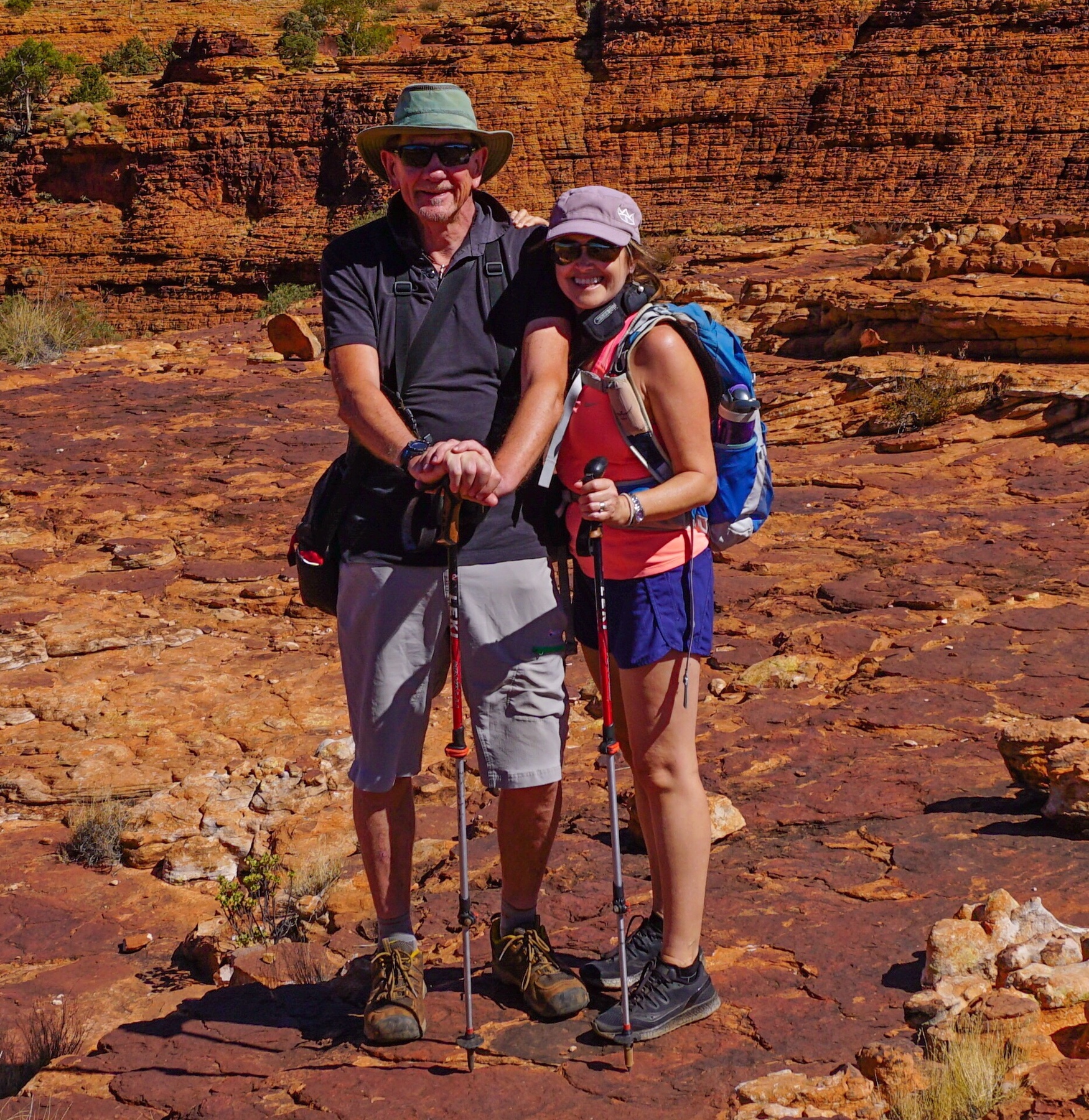
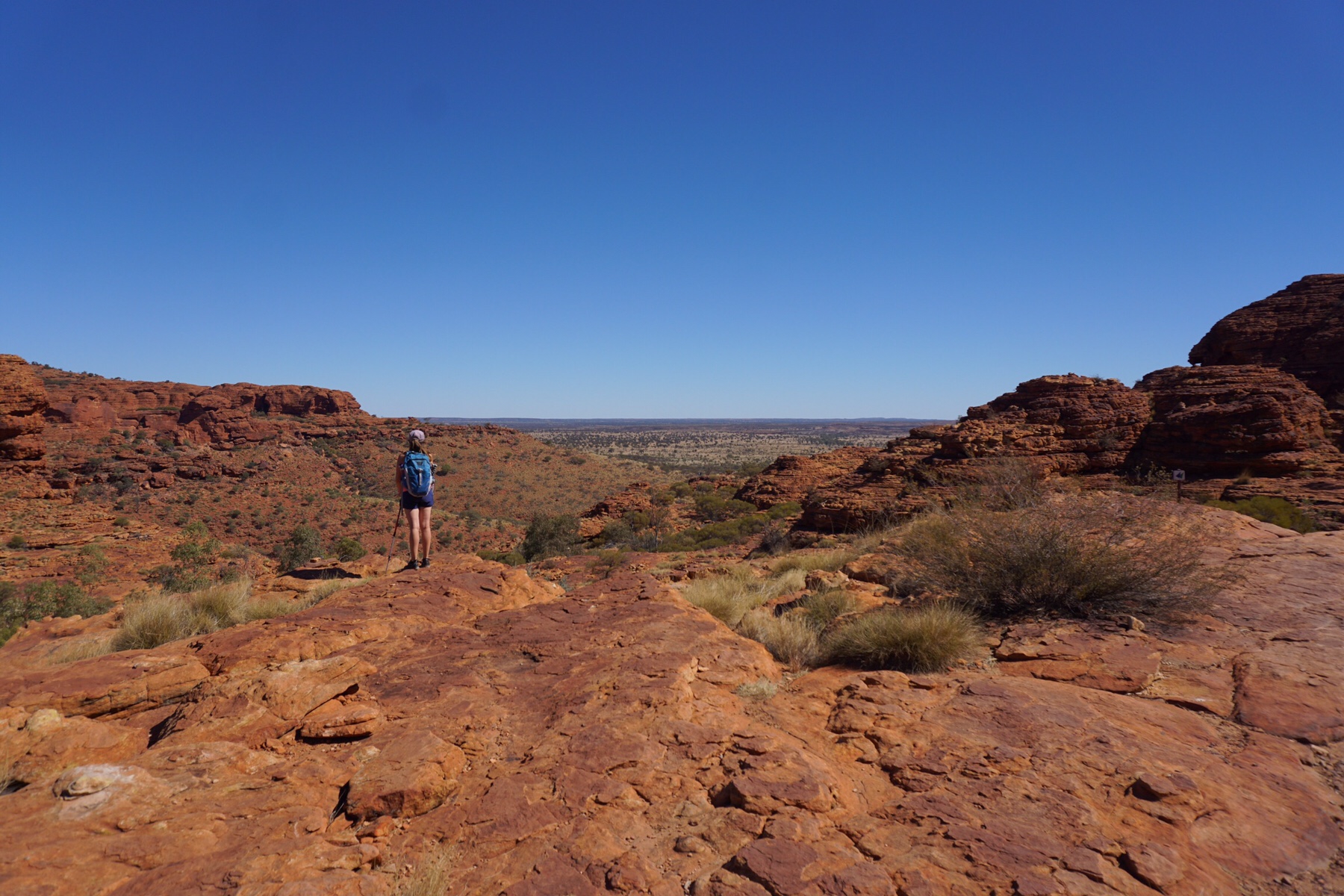 After completing the circuit we returned for a relaxed afternoon, Miss Tassie rolling in the red sand and needing a lot of brushing (which she loves!). I suspect the two events might be linked. Are we being manipulated by a Burmese cat?
After completing the circuit we returned for a relaxed afternoon, Miss Tassie rolling in the red sand and needing a lot of brushing (which she loves!). I suspect the two events might be linked. Are we being manipulated by a Burmese cat?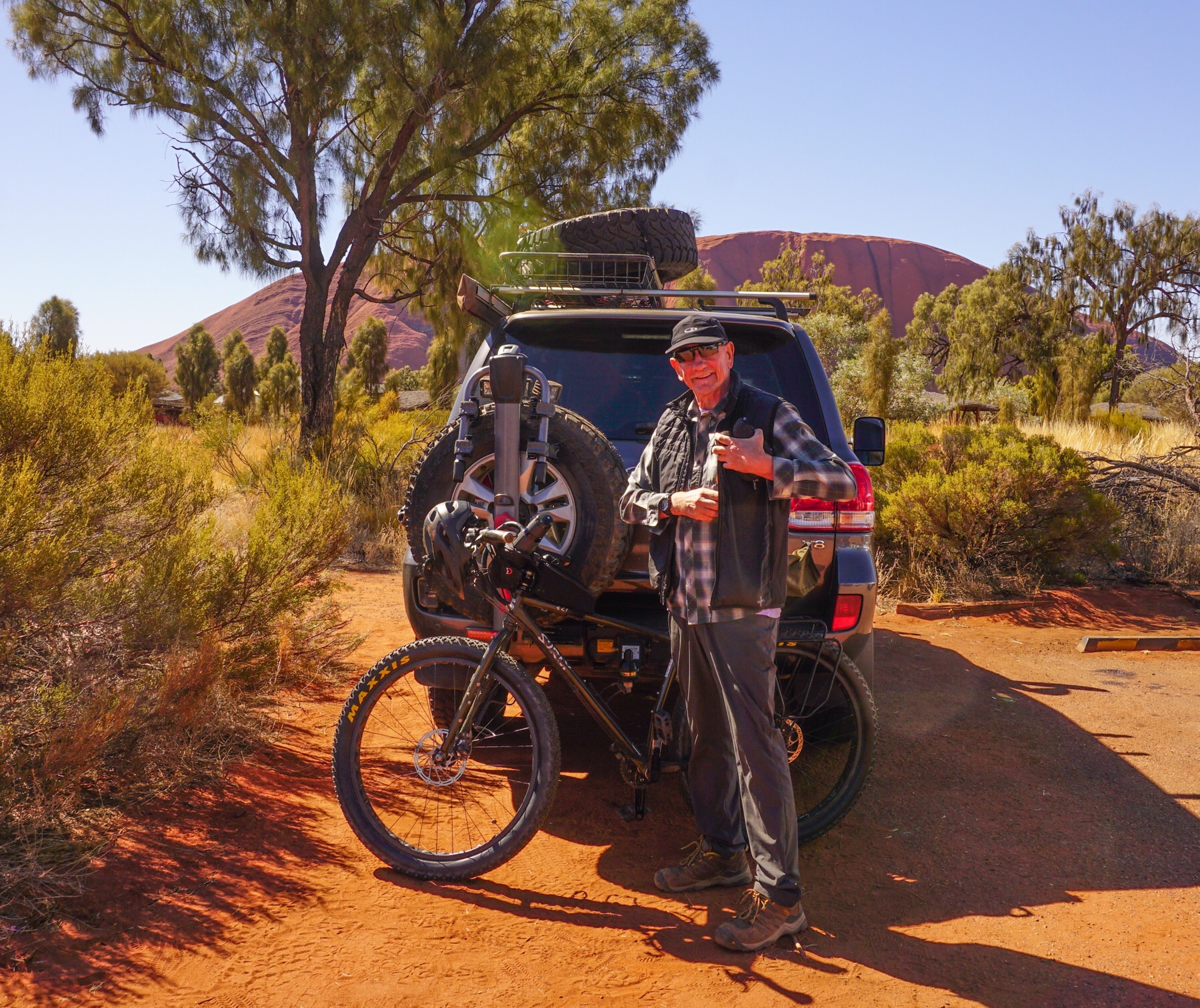 We left for our ride from the Cultural Centre and followed our noses as there were no signs for a cycling path, but there was this rather large rock to head for.
We left for our ride from the Cultural Centre and followed our noses as there were no signs for a cycling path, but there was this rather large rock to head for.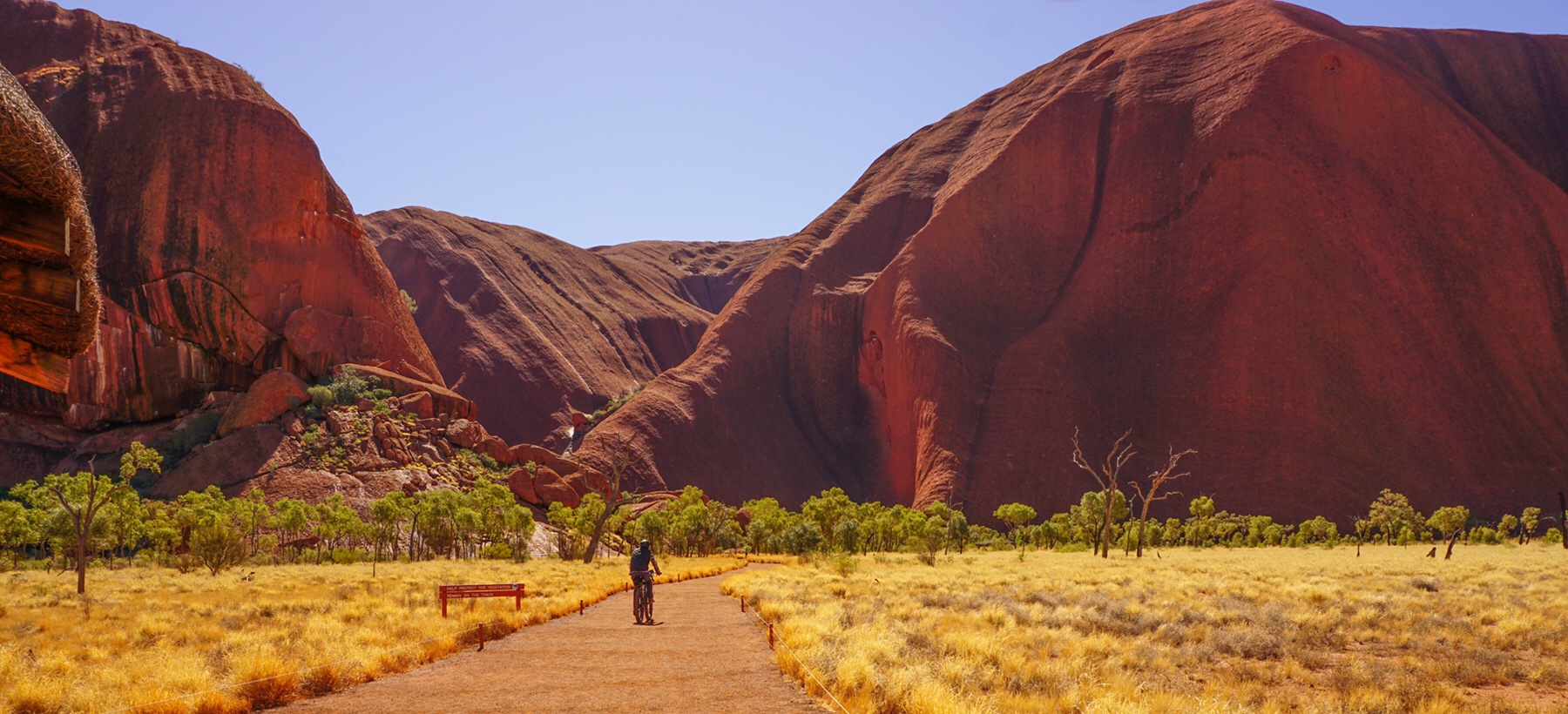
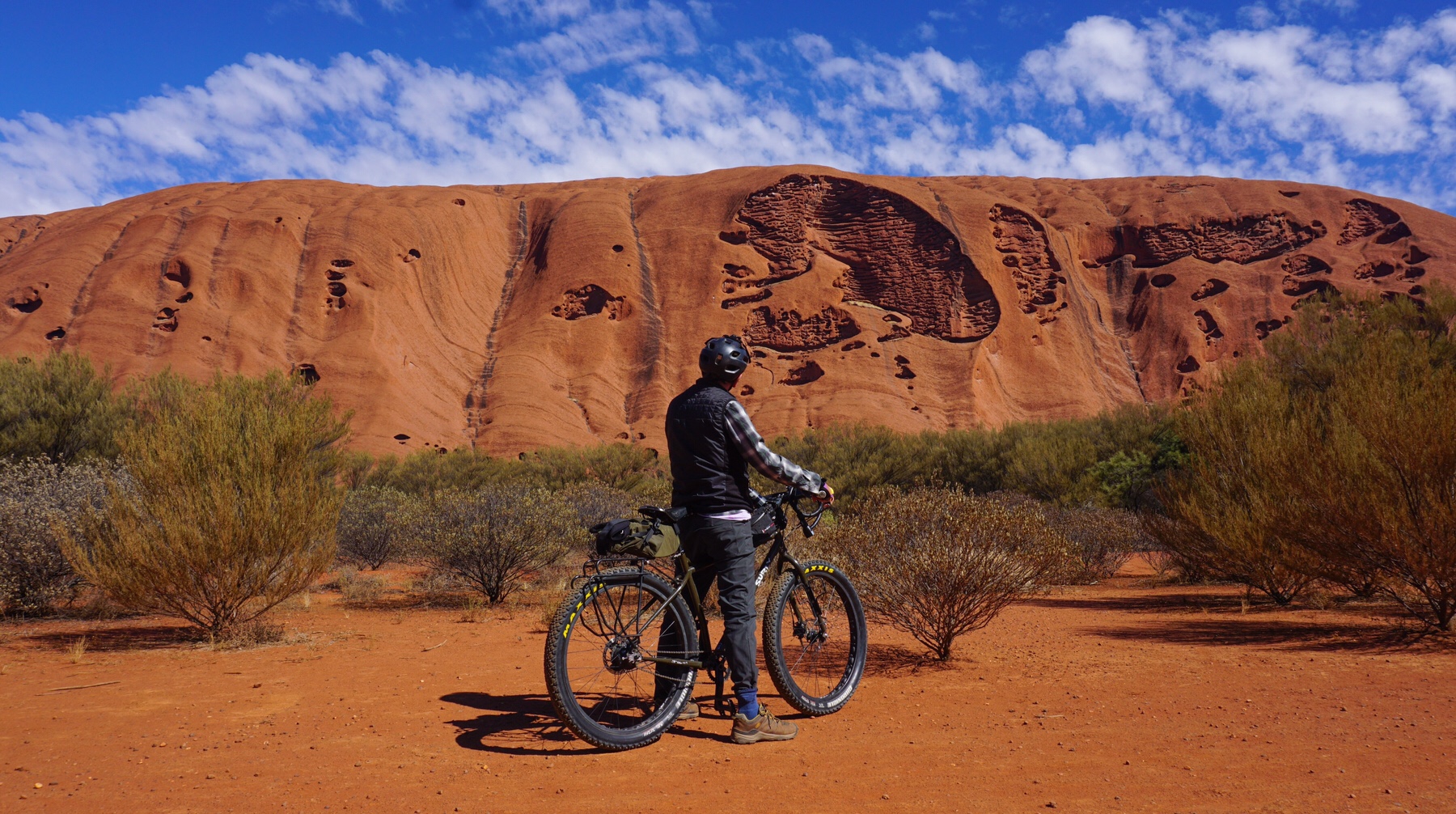
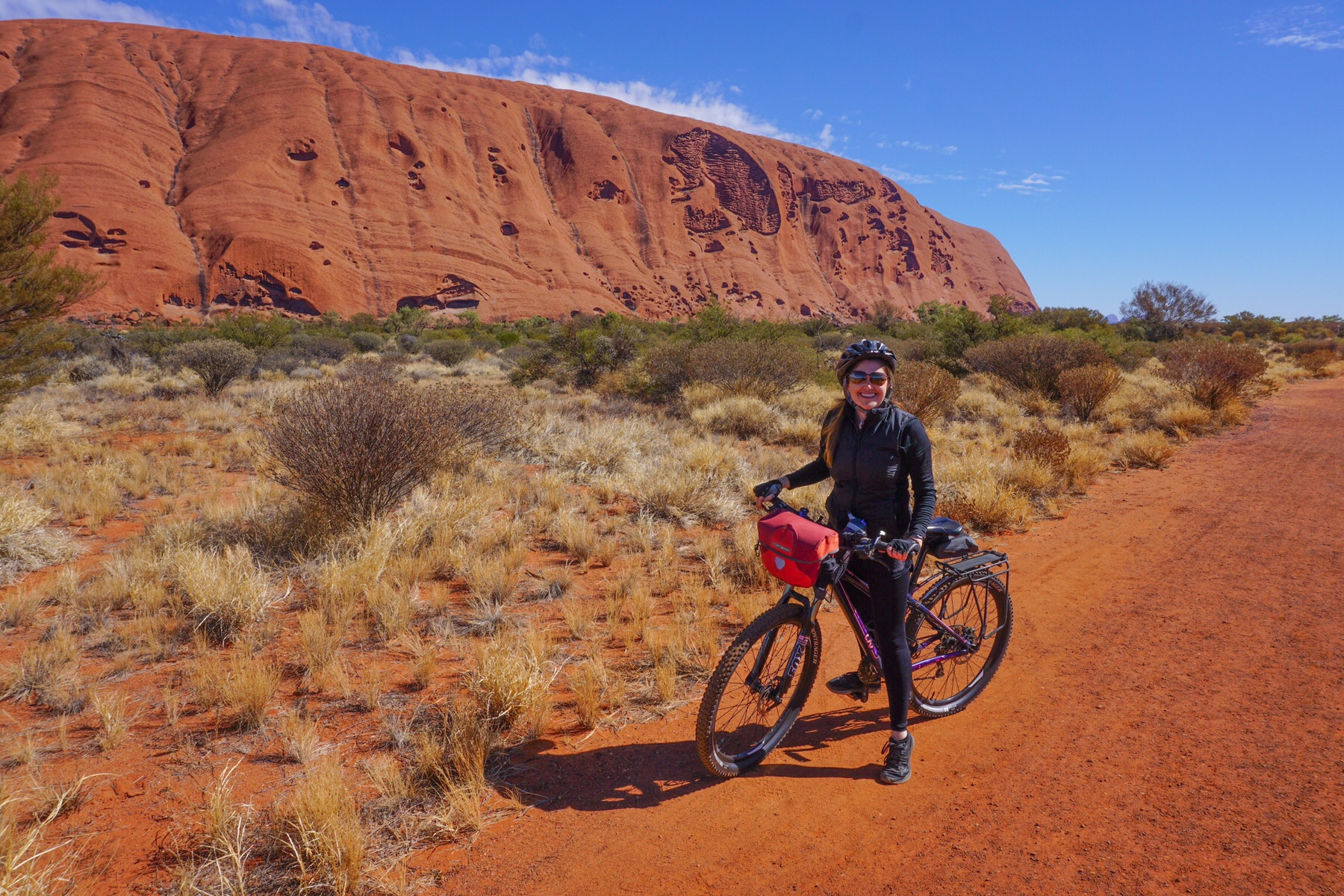 We joined the pain path around the rock and checked the signage, it only showed walkers, but there were bike hire companies around and plenty of tyre marks, so off we went.
We joined the pain path around the rock and checked the signage, it only showed walkers, but there were bike hire companies around and plenty of tyre marks, so off we went.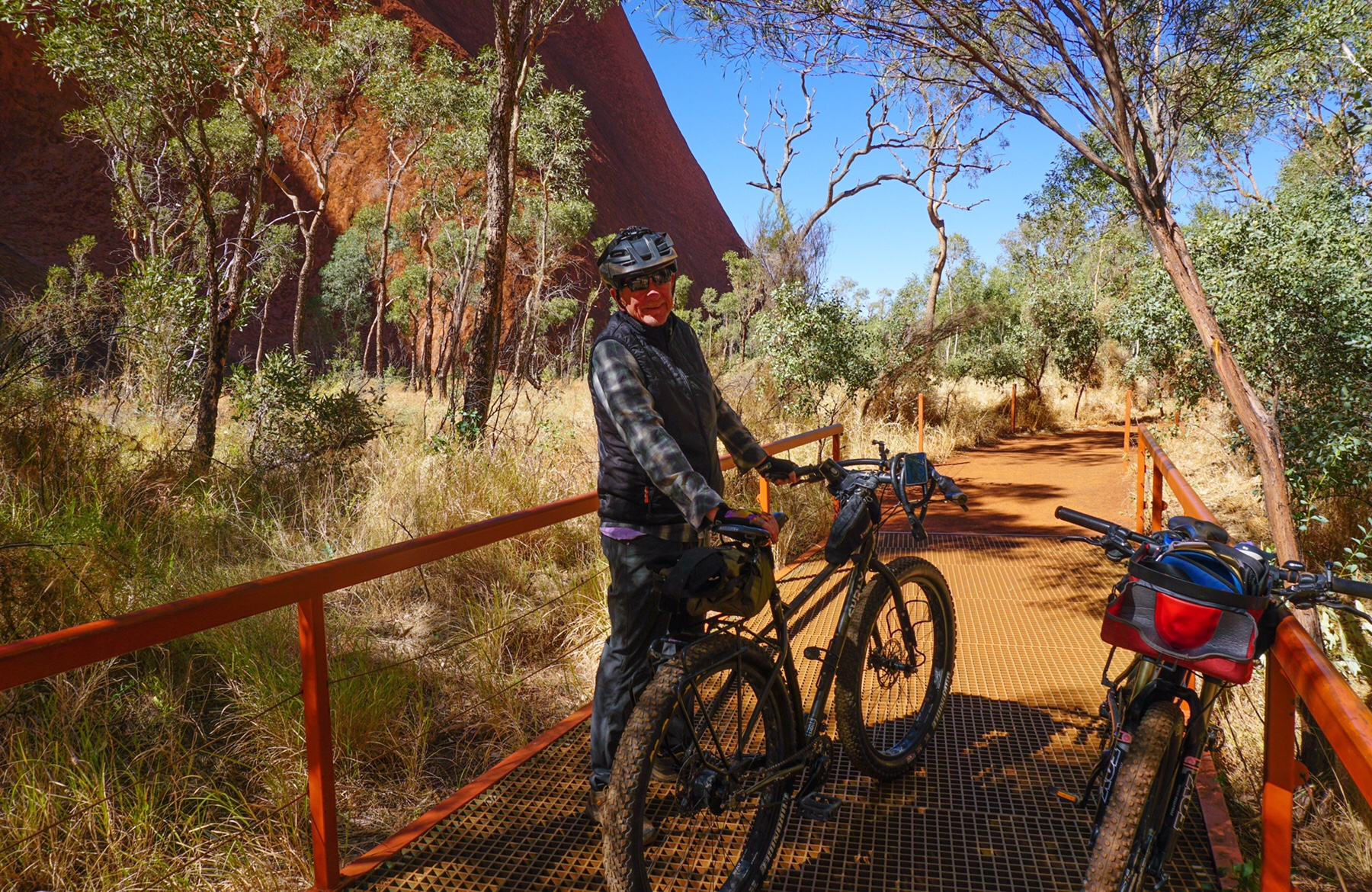
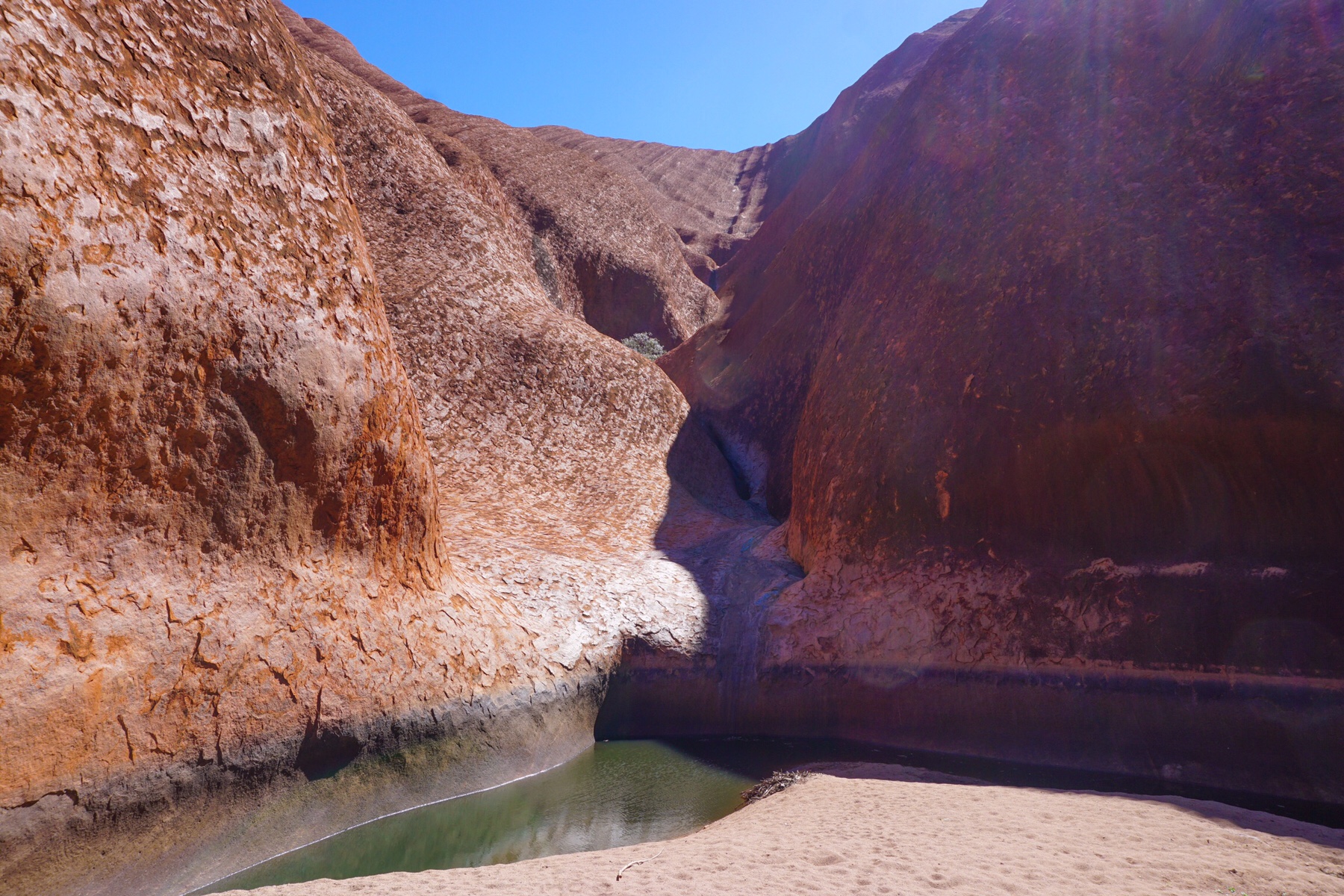
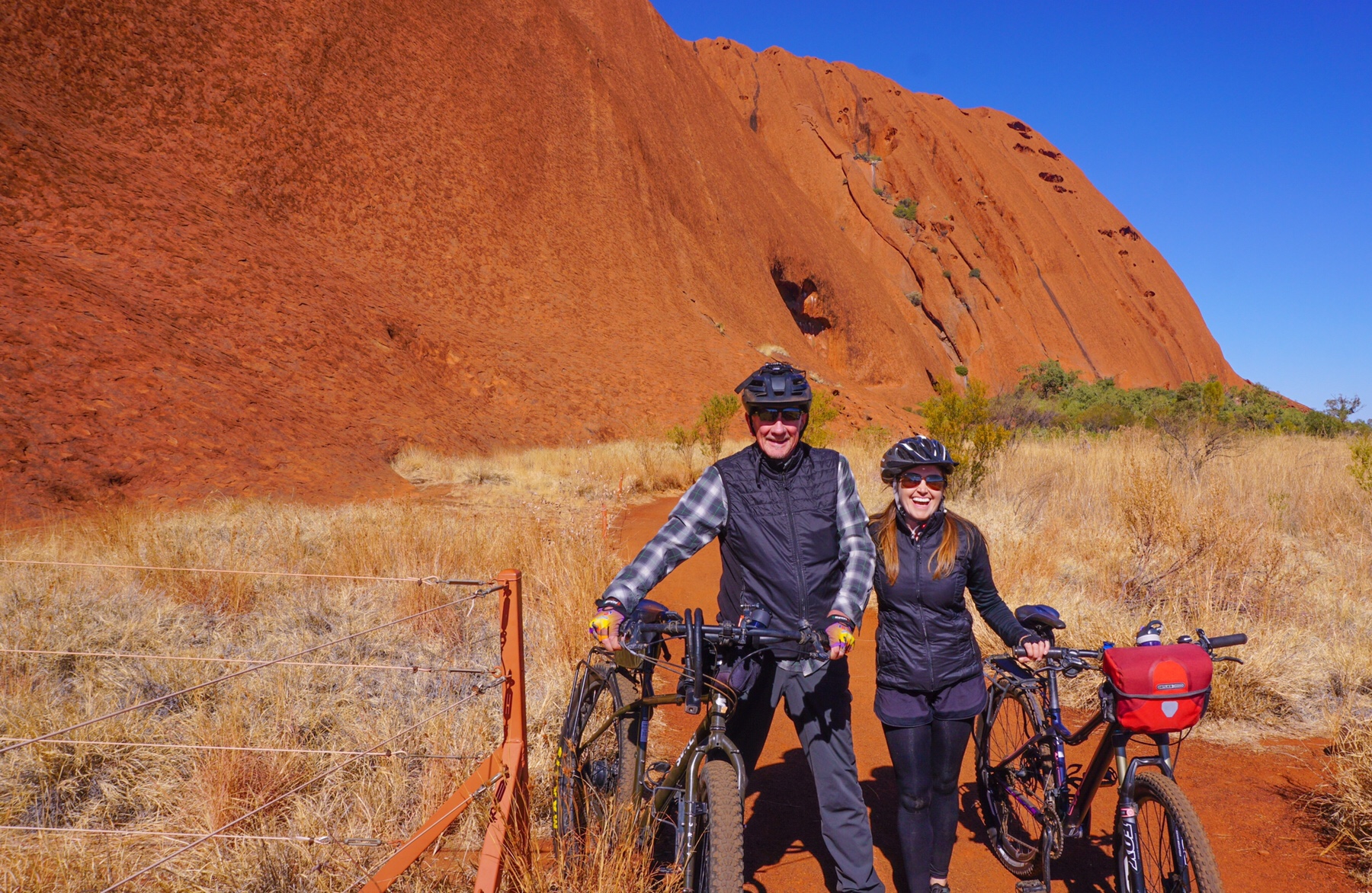 Riding a bike always brings a grin to our faces wherever we are, but to be riding along under this brilliant blue sky, dwarfed by this towering red rock…breathtaking. We just couldn’t stop ogling this magnificent scenery. Neither of us are in any way spiritual, but we both felt this to be the closest we could get, just sitting quietly looking up at this massive granite monolith towering over us.
Riding a bike always brings a grin to our faces wherever we are, but to be riding along under this brilliant blue sky, dwarfed by this towering red rock…breathtaking. We just couldn’t stop ogling this magnificent scenery. Neither of us are in any way spiritual, but we both felt this to be the closest we could get, just sitting quietly looking up at this massive granite monolith towering over us.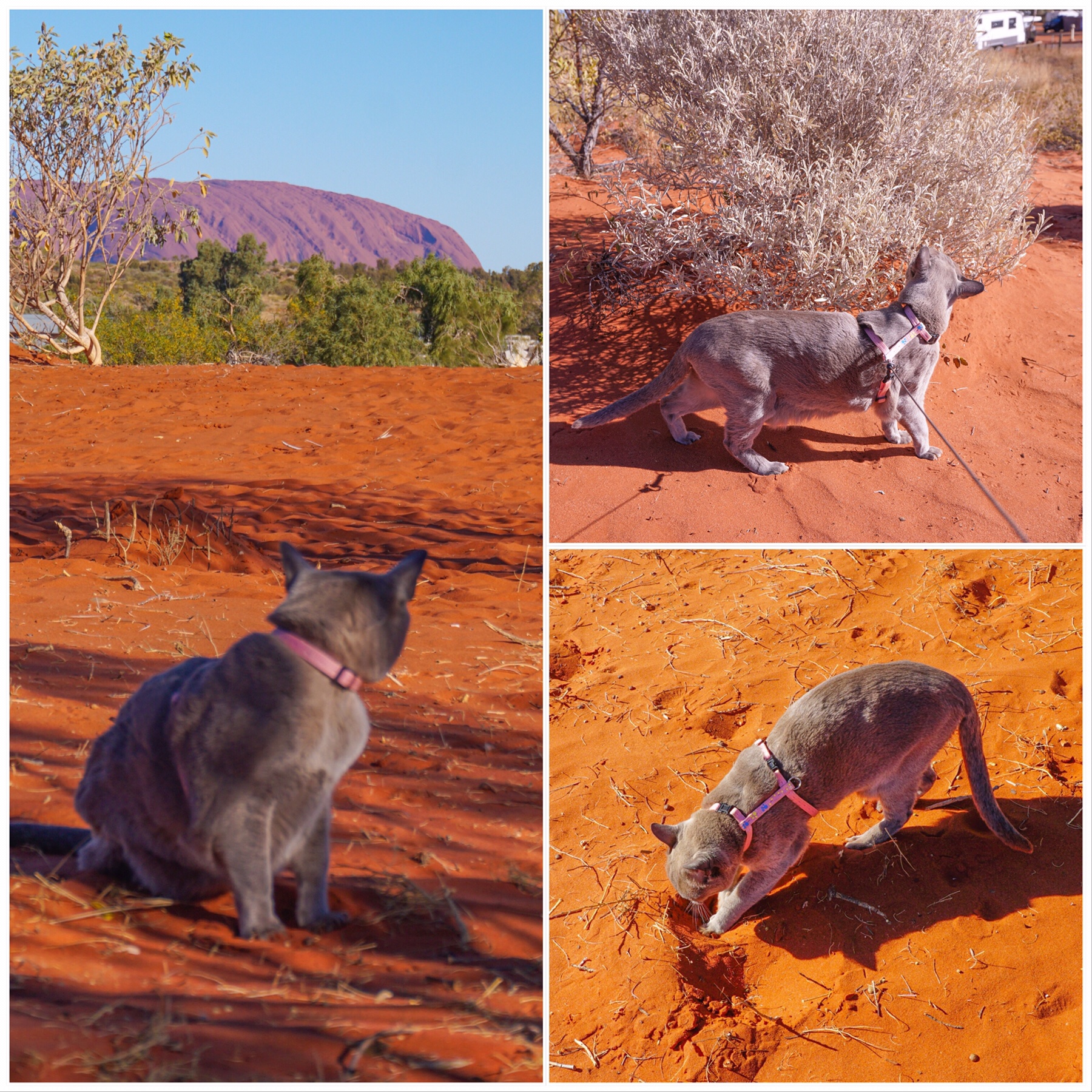
 The short walk we did here was one of the most enjoyable we have done from a scenic perspective for ages. It’s called the Valley of the Winds walk, and takes you up through the domes and in a 7km circuit.
The short walk we did here was one of the most enjoyable we have done from a scenic perspective for ages. It’s called the Valley of the Winds walk, and takes you up through the domes and in a 7km circuit.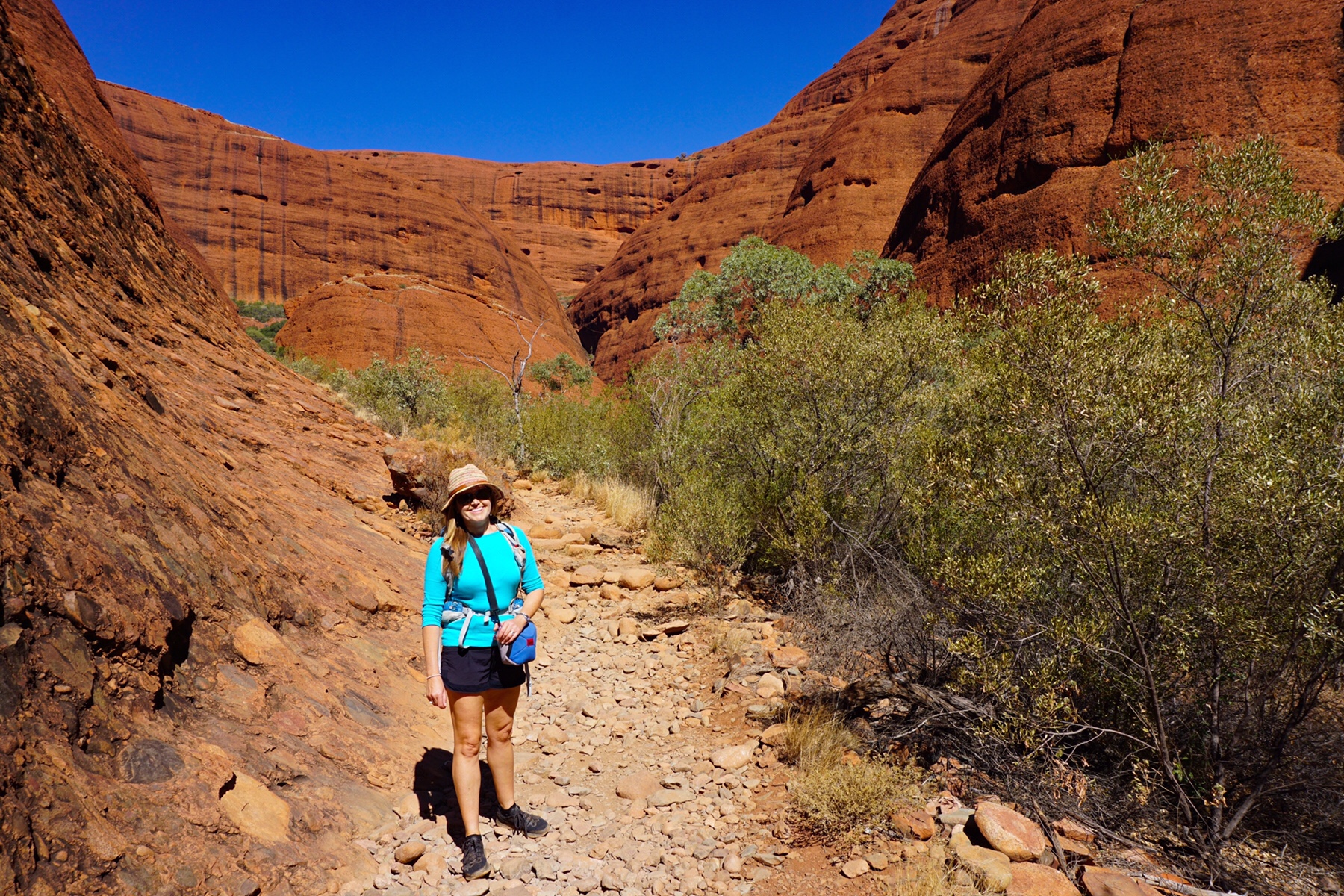
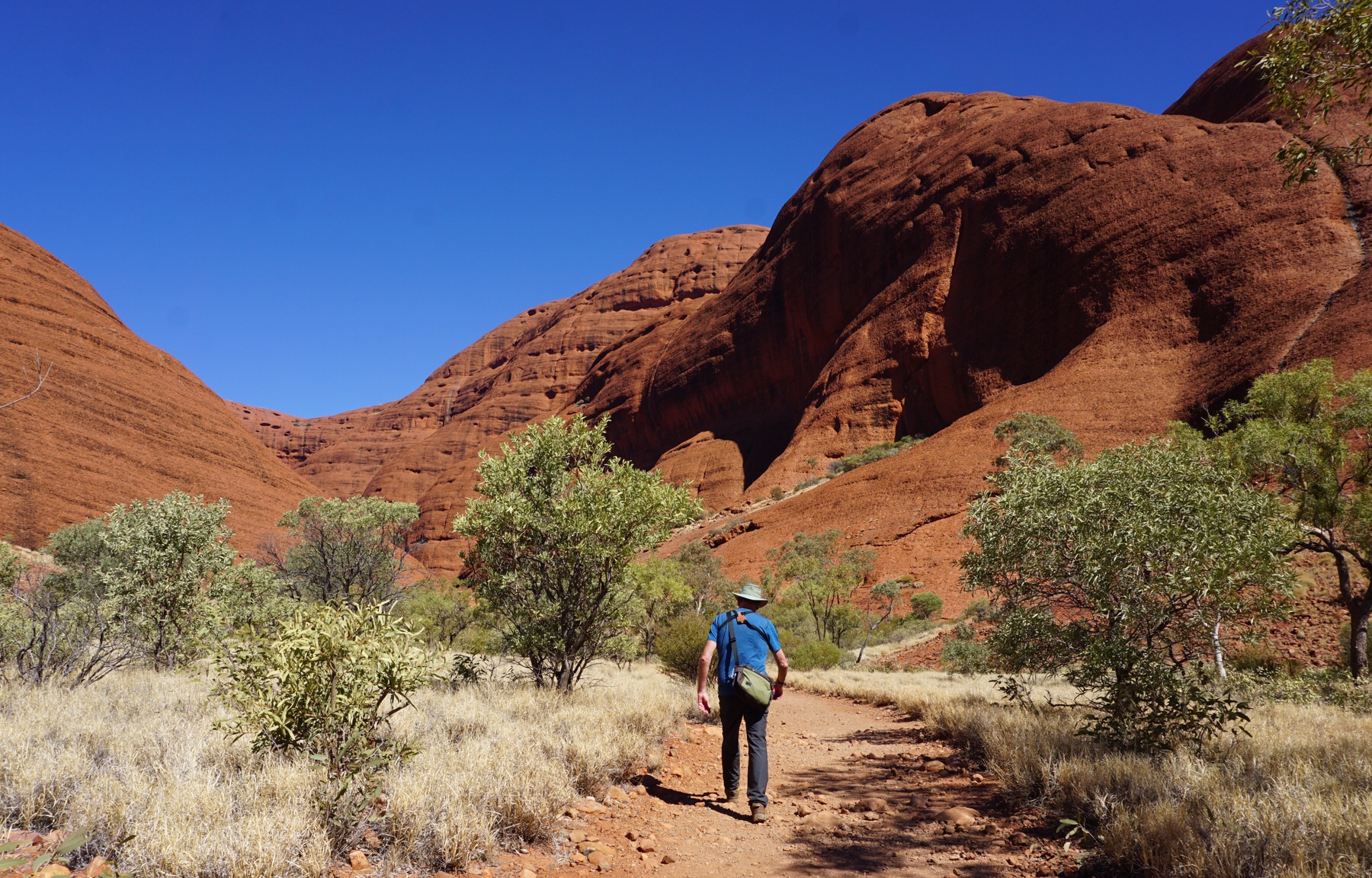
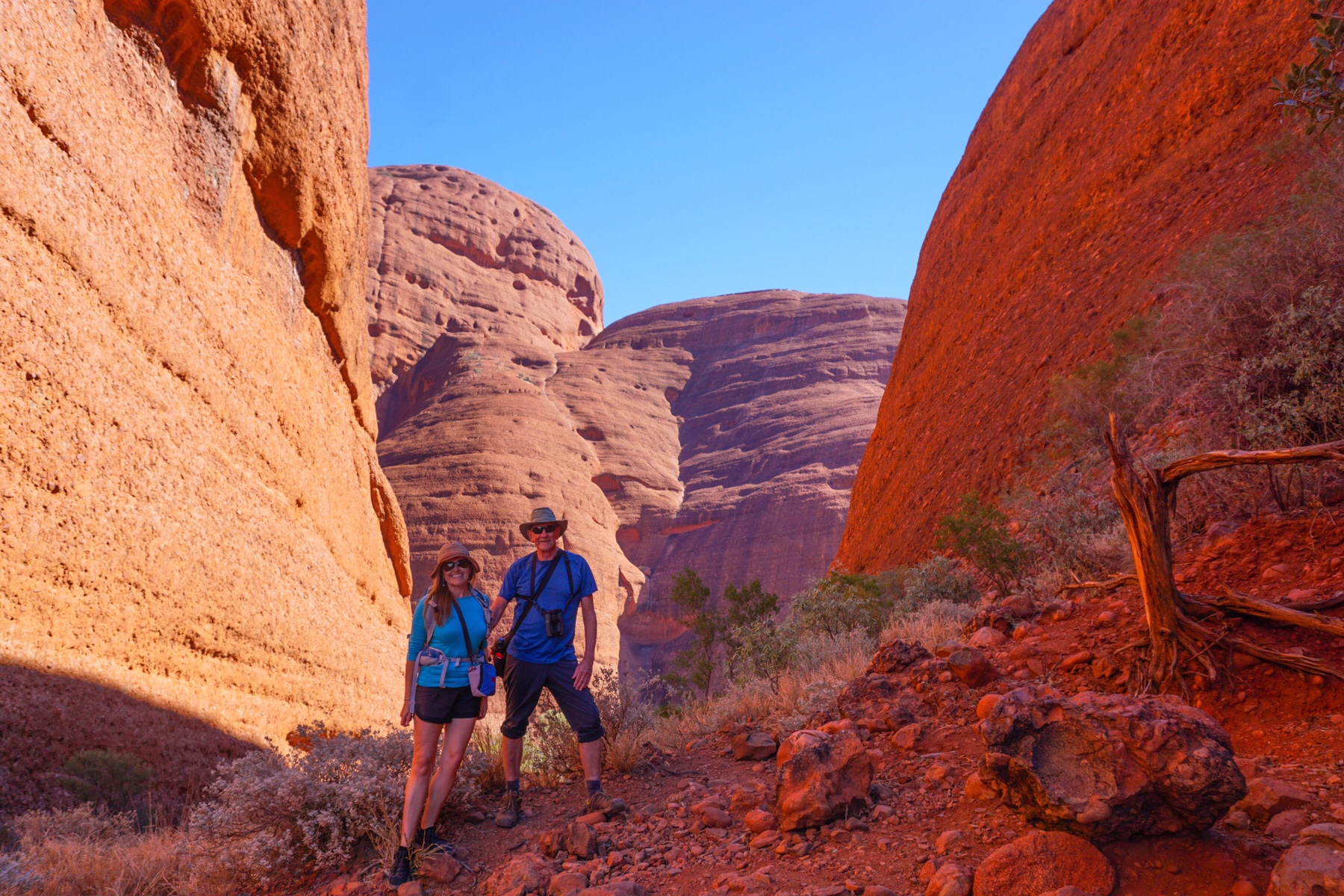
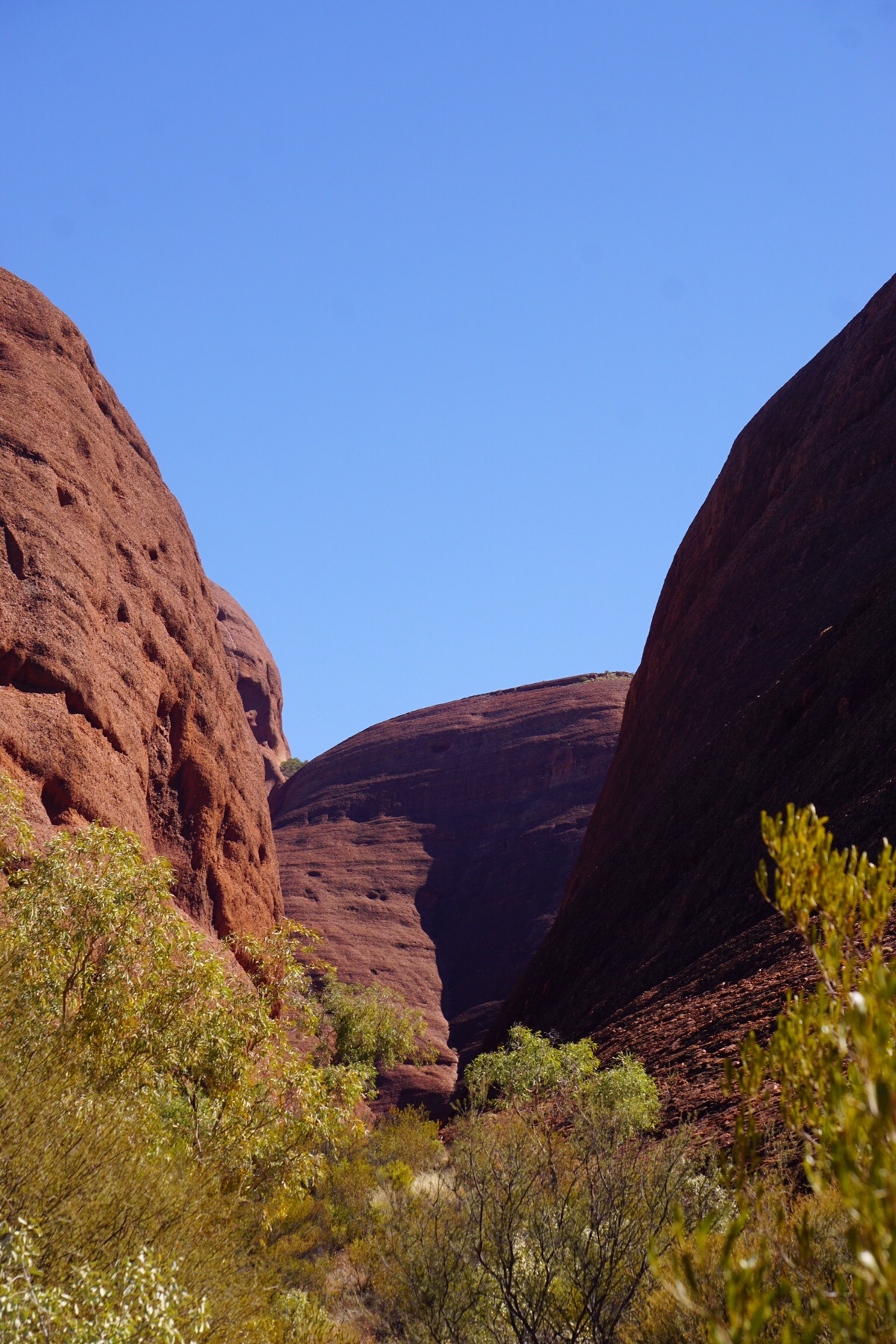
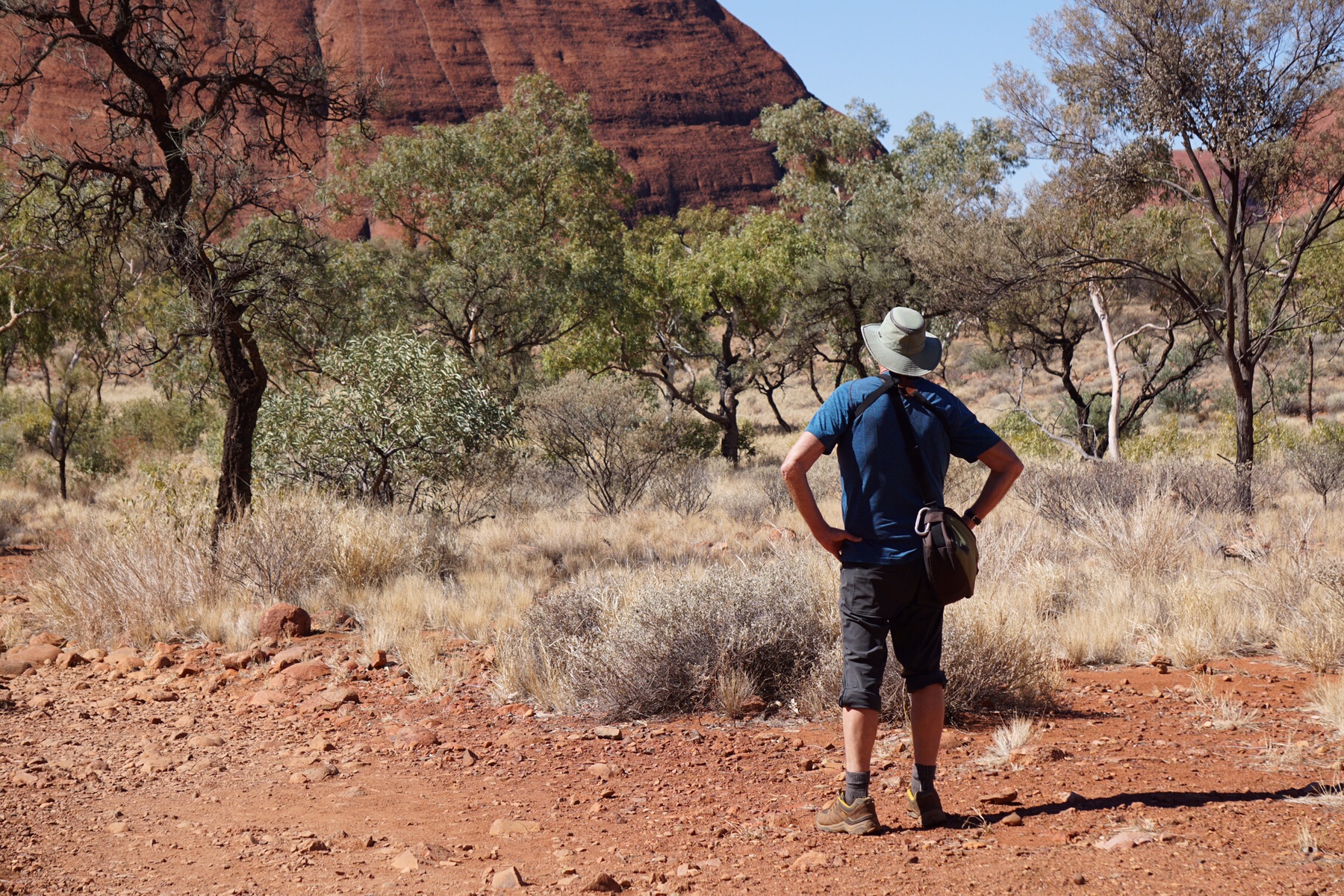 (Below, a friendly Grey Shrike-Thrush which accompanied us on our walk)
(Below, a friendly Grey Shrike-Thrush which accompanied us on our walk)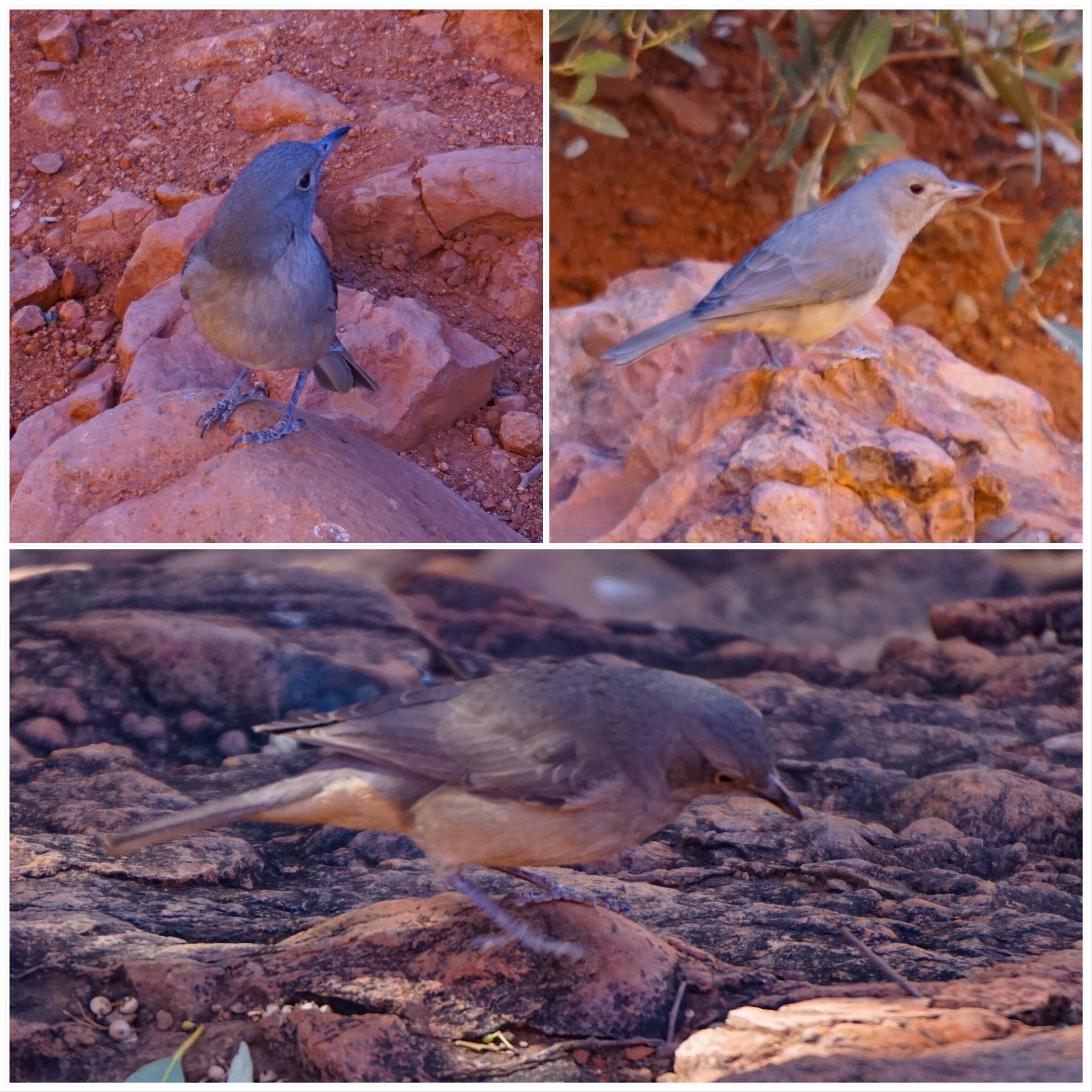 We could easily have spent a few more days here, but we are now on a bit of deadline, given we have lost a couple of weeks from our itinerary. So soon it was time to pack up and move on.
We could easily have spent a few more days here, but we are now on a bit of deadline, given we have lost a couple of weeks from our itinerary. So soon it was time to pack up and move on.